Greenland
A huge frozen island halfway between northern Europe and America, a perfect set despite ice, polar bears and sub-zero temperatures

The King of Lastè
A true athlete who wakes up in the morning with a clear goal in mind and takes care of every detail in favor of his sporting performance
Iceland Ice Climbing
Five friends who accidentally make the perfect crew. The goal? Climbing as many ice falls as possible
€7

 BY DAVIDE FIORASO PHOTO ANDERS MØLLER VESTERGÅRD
BY DAVIDE FIORASO PHOTO ANDERS MØLLER VESTERGÅRD

Sometimes, to fight climate anxiety, people are suggested to meditate, build resilience, create spaces in which to share their feelings. Or why not, take action. Reconnecting with nature is another of the suggestions that are given to those suffering from climate anxiety. But this strategy, for those populations that have always lived an ancestral relationship and symbiosis with the land, does not make much sense. “The solution to eco-anxiety in these countries is to support and help people overcoming and managing the climate crises they face. Wealthy people need to act to reduce their carbon footprint and provide support to low-income countries so they can overcome climate disasters, partially offsetting this massive injustice” says professor Mala Rao.
There are more and more stories of people suffering from eco-anxiety, or the anguish that arises from seeing that the world is falling apart. Among the many anecdotes about this topic, I will start from a singular testimony reported in an article in the New York Times. Alina Black, 37 years old, from Portland, says that she feels guilty at every diaper of her baby she changes, aware that that daily gesture contributes to planet pollution and the climate crisis. In the morning, after breastfeeding, Alina falls into a black hole, sunk by news of droughts, fires and mass extinctions.
I got food for thought a few weeks later, when I came across a report on Cyclone Idai, the tropical storm that hit central-eastern Africa in March 2019 causing severe flooding in Malawi, Zimbabwe and Mozambique. The women in that documentary had not only never had diapers to throw
away (and for which to ask the world's forgiveness), but they lived in a state of perpetual alert and devastation. This is where I asked myself: do those women feel the same concern for the future of the planet as Alina Black? Does anyone who is already heavily affected by the climate crisis have the time and opportunity to dwell on their feelings? Or is surviving in itself so challenging that it leaves no room for inner anxieties?
I found the answers in several in-depth articles, all of which agree that ecoanxiety is not a Western luxury. That mental health is not the exclusive preserve of those living in the developed countries of the global north. Anyone, regardless of her status, clearly understands how the environment impacts health. However, as inevitable as it is, in countries with lower resources, the treatment of physical illnesses ends up being the most urgent priority.
After these readings, what I understood is that we all suffer equally. What changes is the assistance to which we have access and the leeway to reverse course. Extreme poverty and vulnerability are elements that necessarily end up having priority in the scale of concerns, but they are also the most easily visible and remediable ones. Living in the northern hemisphere, with all the associated privileges, does not make our anxieties irrelevant. The solution, however, lies not only in good daily actions that make us feel at peace with ourselves, but in demanding from our governments appropriate responses to the seriousness of the situation. An attention that is institutional, collective and global, just like the catastrophe we are experiencing.
Does anyone who is already heavily affected by the climate crisis have the time and opportunity to dwell on their feelings?
Or is surviving in itself so challenging that it leaves no room for inner anxieties?
2
EDITO
Equilibrio: sintesi armonica tra forze opposte e contrarie.
Aequilibrium Series: il perfetto equilibrio tra comfort e tecnicità, leggerezza e durabilità, al servizio dell’alpinismo moderno. Il cuore è il tallone con tecnologia Double Heel™ che aumenta l’effetto frenante e permette una rullata più fluida riducendo l‘affaticamento muscolare.
Aequilibrium ST GTX®: for your mountain.

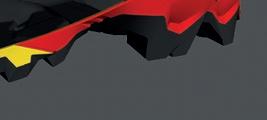

PROTEZIONI ERGONOMICHE

MASSIMA AMMORTIZZAZIONE
DOUBLE HEEL™ CONSTRUCTION

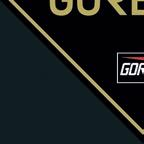
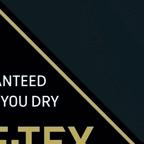


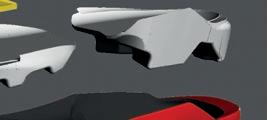
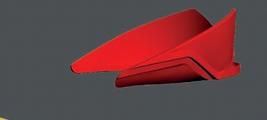
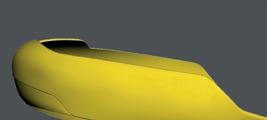
VIBRAM SPRINGLUG TECH






SHOP NOW ON WWW.LASPORTIVA.COM
THE CREW
PRODUCTION
The Pill Agency | www.thepillagency.com
EDITOR IN CHIEF
Denis Piccolo | denis@thepillagency.com
EDITORIAL COORDINATOR

Lisa Misconel | lisa@thepillagency.com
EDITING & TRANSLATIONS
Silvia Galliani
ART DIRECTION
George Boutall | Evergreen Design House Niccolò Galeotti, Francesca Pagliaro
THEPILLMAGAZINE.COM
Ludovica Sacco | ludovica@thepillagency.com
PHOTOGRAPHERS & FILMERS
Matteo Pavana, Thomas Monsorno, Camilla Pizzini, Chiara Guglielmina, Silvia Galliani, Francesco Pierini, Elisa Bessega, Andrea Schilirò, Denis Piccolo, Achille Mauri, Simone Mondino, Alice Russolo, Patrick De Lorenzi, Giulia Bertolazzi, Tito Capovilla, Luigi Chiurchi, Isacco Emiliani, Pierre Lucianaz
COLLABORATORS
Filippo Caon, Chiara Guglielmina, Marta Manzoni, Sofia Parisi, Fabrizio Bertone, Eva Toschi, Luca Albrisi, Luca Schiera, Giulia Boccola, Valeria Margherita Mosca, Lisa Misconel
SHOP & SUBSCRIPTIONS
www.thepilloutdoorshop.com

SHOP MAGAZINE MAP www.thepilloutdoor.com/magazine-finder
COMPANY EDITOR
Hand Communication, Via Piave 30, Saluzzo CN 12037, Italy hello@thepillagency.com
COVER
Photo Maurizio Marassi
PRINT
L'artistica Savigliano, Savigliano - Cuneo - Italy, lartisavi.it
DISTRIBUTION
25.000 copies distribuited in 1100 shops in Italy, Switzerland, Austria, Germany, France, Belgium, Spain, England & The Netherlands
ADVERTISING
hello@thepillagency.com | +39 333.7741506
FOLLOW US www.thepilloutdoor.com www.facebook.com/thepilloutdoot Instagram.com/thepilloutdoor
The Pill rivista bimestrale registrata al tribunale di Milano il 29/02/2016 al numero 73
4
PHOTO THOMAS MONSORNO
/ ENGINEERED IN THE DOL OMITES

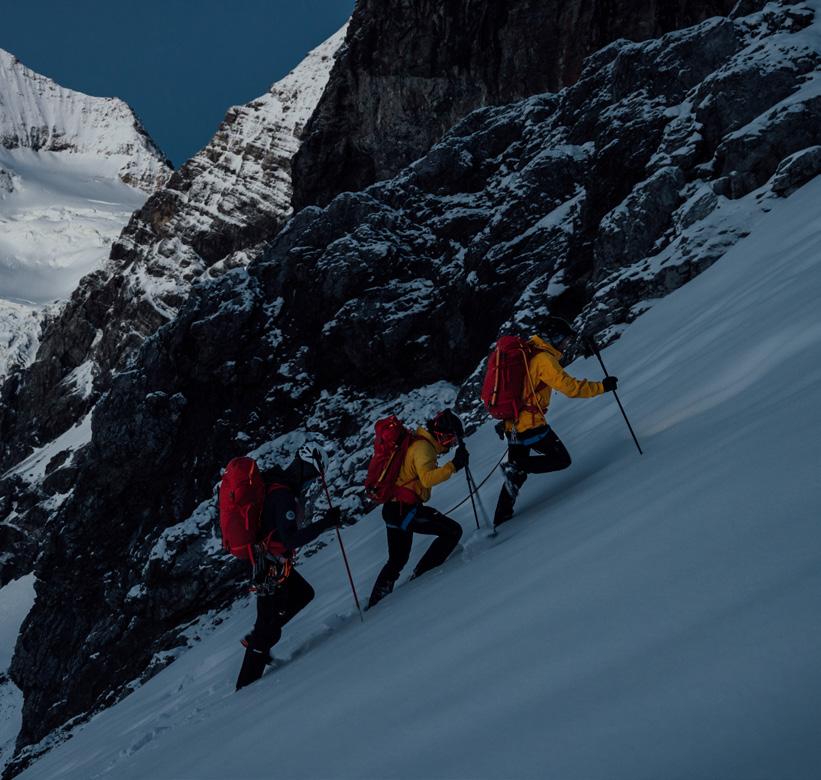



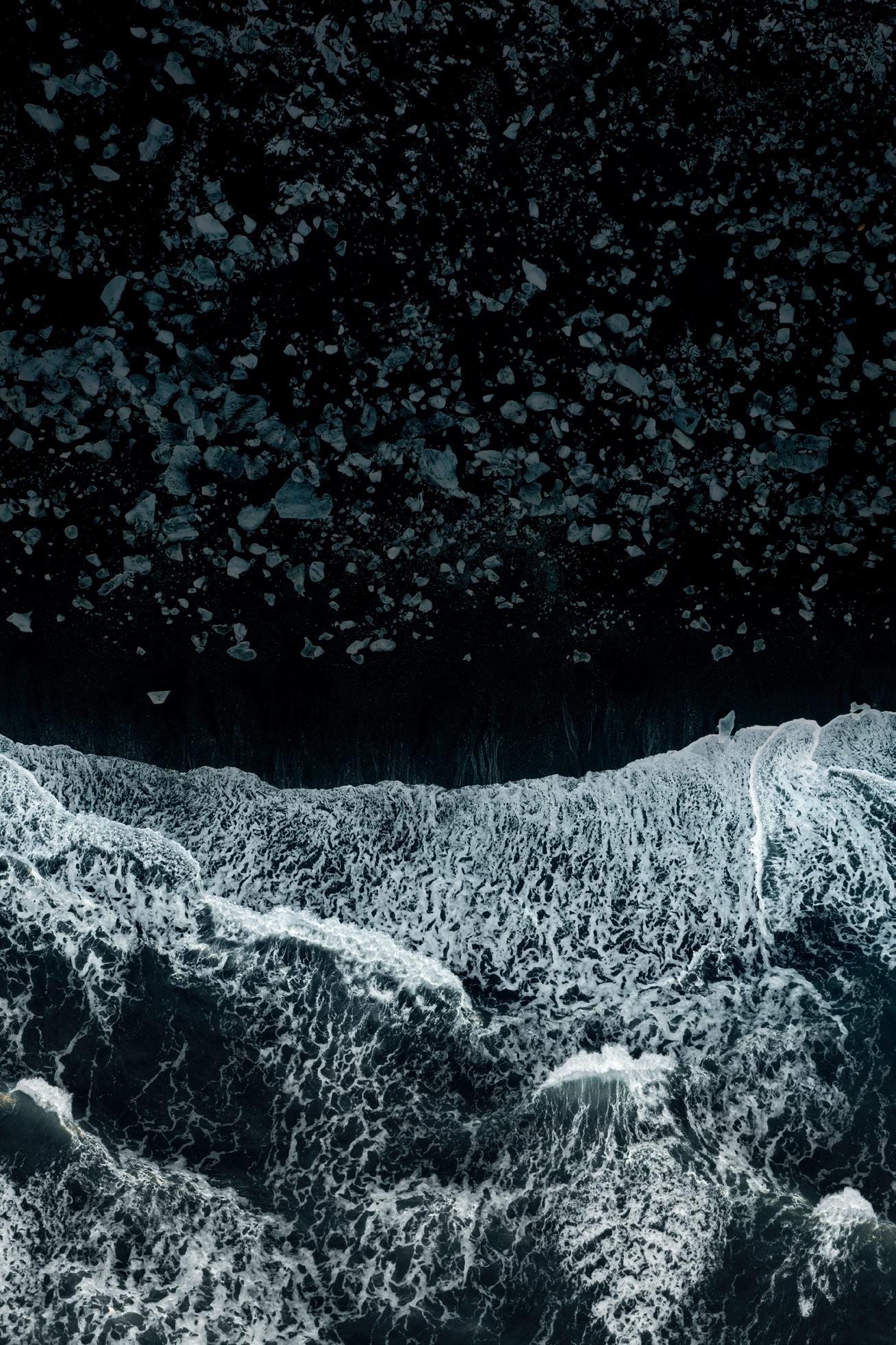
THE DAILY PILL BEST MADE KILLER COLLABS ECO SEVEN COLMAR SALEWA SELLA 26L THE WOOLMARK COMPANY DEUTER ALPROOF SERIES BLIZZARD HUSTLE 10 SCARPA MAESTRALE RE-MADE FATMAP THE TRIPLE LINE DOO SAR SURVIVING A 4M BURIAL THE PILL BASE CAMP ORTOVOX SAFETY ACADEMY P.8 P.12 P.16 P.20 P.24 P.26 P.28 P.30 P.32 P.34 P.38 P.40 P.42 P.44 P.46 P.52 P.56 P.60 P.64 P.64 P.68 P.72 P.78 P.84 P.88 P.94 P.100 P.106 P.112 P.122 P.132 P.144 LA SPORTIVA LIFE AT TARFALA HUT ONLY ONE TURN LENA STOFFEL IMAGINE IMPACT STUDIO PAOLO FANCIULLI AN ARCTIC TRIP HENRI AYMONOD INVISIBLE GROUND THE EQUATOR AND THE ICE TAKING THE WORLD WHEREVER IT IS THE HIGH LIFE THE KING OF LASTÈ GREENLAND ICELAND ICE CLIMBING
ISSUE 59


SCARPA.COM 4-QUATTRO XT ON-PISTE AND OFF-PISTE ONE BOOT 4 ALL
BODE MILLER
BY LUDOVICA SACCO
THE DAILY PILL APPLICATIONS ARE OPEN FOR THE DYNAFIT TRAIL HERO PROGRAM
Dynafit is looking for non professional runners for the "Dynafit Trail Hero” program that offers to selected athletes equipment, training with experts and participation in events and races. Applications are open until March 31st and are aimed at athletes aged over 18 years without sponsorships and coming from Europe and North America. These Trail Heroes will be part of the team for a year and will take part in many races with great opportunities for professional growth. In return, they will share on social media their training days and their equipment.
POLARTEC PRESENTS THE NEW SHED LESS FLEECE TECHNOLOGY
Polartec developed Shed Less Fleece, a technology that drastically reduces the dispersion of fiber fragments during home washing of fabrics. The tests, carried out on large-sized garments with a cycle of 20 washes, demonstrate how the reduction in the shedding of microfibers reaches an average of 85% compared to a traditional fabric. Shed Less Fleece has been applied to the Polartec 200 Series Fleece which has demonstrated how this technology keeps all the key features of the fleece intact.
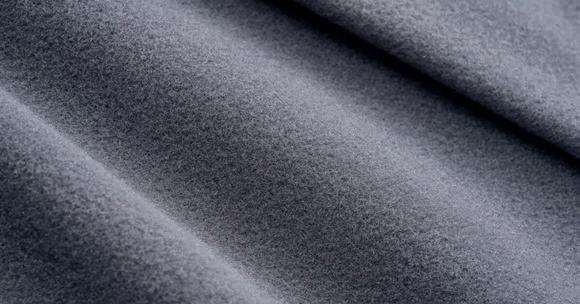
LONE PEAK FAMILY: ALTRA’S WINTER NEWS
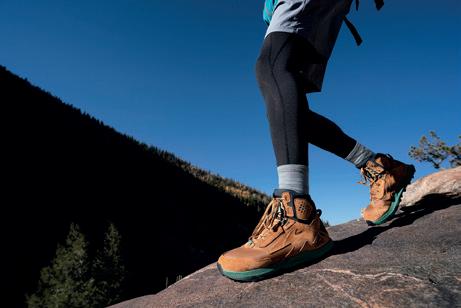
American company Altra Running recently announced three new models of its iconic Lone Peak line: Lone Peak All-WTHR Hiker 2, Lone Peak AllWTHR Mid 2 and Lone Peak All-WTHR Low 2. These shoes have been designed to offer even more comfort, grip and breathability, with the presence of features such as the use of the Original FootShape Fit, the Altra EGO foam midsole and the non-slip MaxTrac sole. These models have all the credentials to be very versatile, both technically and aesthetically. They're well suited for a range of activities, from tough hikes to casual strolls.
SCARPA & POLITECNICO DI TORINO TOGETHER FOR A NEW PROJECT

Dynafit is looking for non professional runners for the "Dynafit Trail Hero” program that offers to selected athletes equipment, training with experts and participation in events and races. Applications are open until March 31st and are aimed at athletes aged over 18 years without sponsorships and coming from Europe and North America. These Trail Heroes will be part of the team for a year and will take part in many races with great opportunities for professional growth. In return, they will share on social media their training days and their equipment.
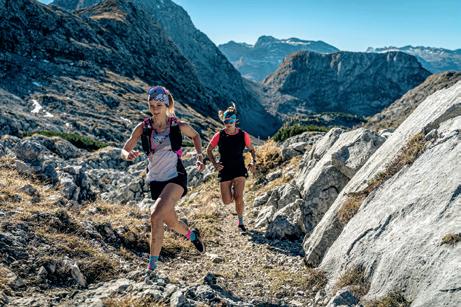
STEFANO GHISOLFI FREES EXCALIBUR 9B+
New feat for The North Face climber Stefano Ghisolfi who on February 3rd managed to free Excalibur (9b+), one of the hardest routes in Italy. “Hard to imagine a more perfect route, I admit that the process has been extremely difficult, from the first time I understood the beta and thought it was impossible, I felt confident only when I started to climb. The best thing however were the people with whom I shared it, who are among the best climbers in the world but above all with my friends. I'm also confident of proposing 9b+ as a grade, it's definitely the hardest of all my first ascents” comments Stefano.

8
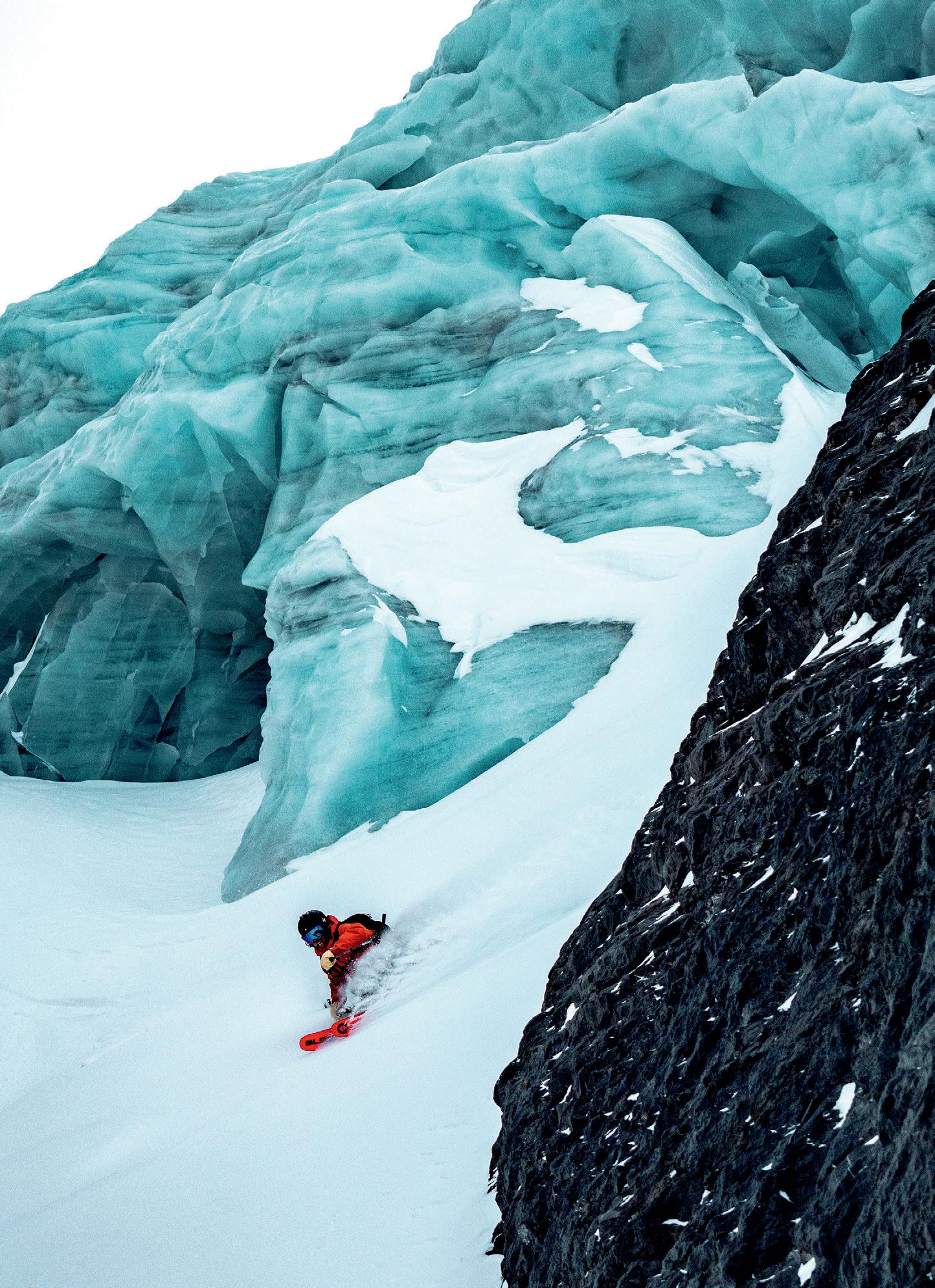

UNCOMPROMISING PERFORMANCE IN A LIGHTER PACKAGE HUSTLE . 10 LIVE
BLIZZARD-TECNICA.COM
THE MOMENT
BY LUDOVICA SACCO
THE DAILY PILL PATROL ULTRALIGHT E2 25, SCOTT’S NEW AIRBAG BACKPACK
Recently, Scott Winter’s PM Piero Berbenni together with Communication & PR Nicola Gavardi went to Bergamo’s Orobie to tell the new Patrol Ultralight E2 25 backpack in its natural environment. Among the key features there is certainly the use of the Alpride E2 Airbag System, one of the lightest fully electronic airbag systems on the market. Another important feature is the construction in Dyneema fabric, known for its extreme resistance and lightness. The result is a backpack that can accompany freeskiing enthusiasts on every occasion.
STRAVA BUYS FATMAP AND ITS 3D MAPPING TECHNOLOGY
Strava announced the acquisition of Fatmap, the app for discovering, planning, navigating and recording your outdoor adventures. In fact, Fatmap has developed a global 3D mapping technology that will be enabled in all Strava services, giving you the opportunity to discover and plan your outdoor adventures with local guides, points of interest and safety info. Strava's investment is aimed at providing a digital experience with ever-increasing quality to inspire and motivate its community even more to enjoy nature while practicing sports.
FERRINO AMBASSADOR ANDREA LANFRI CONQUERS ACONCAGUA TWICE
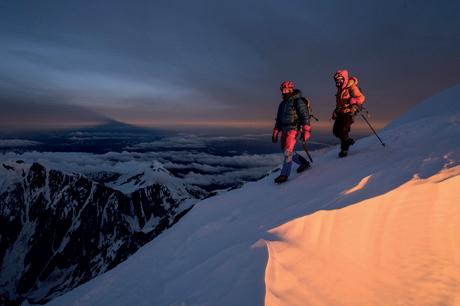
On January 16th, Andrea Lanfri conquered Aconcagua, the highest peak in South America. However, a little problem prevented the testimony of the feat: after reaching camp 3 and setting off again towards the summit, contact with him was lost and the navigator remained stationary at an altitude of 6745 meters for 7 hours. On the 21st January Lanfri set off again to reach the summit and take some photos. This is the third of the Seven Summits reached by Lanfri and he has already planned the next one: Elbrus.
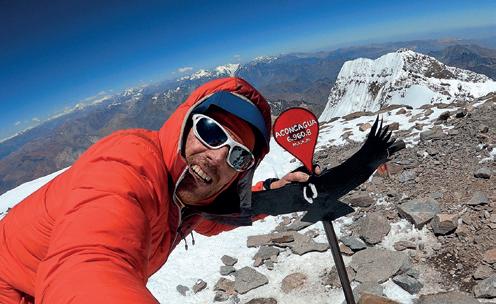
10 FOR 100: TENTH ANNIVERSARY OF THE COLMAR BOUTIQUE IN CHAMONIX
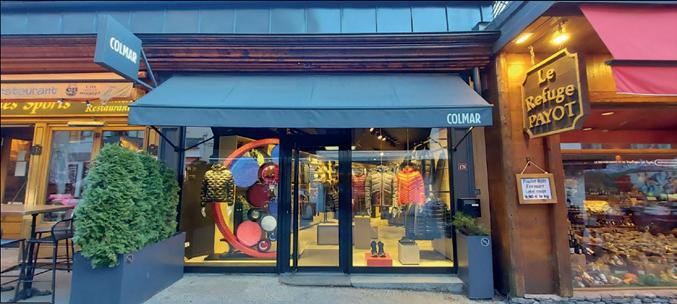
Colmar celebrates a double anniversary: in addition to the company's centenary 2023 is also the tenth year since the opening of the Chamonix boutique. A beautiful milestone that the brand has decided to celebrate with a party with its most loyal customers. Among these also the first who, on the day of the opening, had purchased several items and who over time has become a loyal fan of the brand. He was given the Chamonix jacket, made in a numbered edition and dedicated to all Pinturault's World Cup victories.
SCARPA STRENGTHEN THE COLLABORATION WITH BODE MILLER


The renewed partnership between SCARPA and skier Bode Miller was made official in recent days on the occasion of the athlete's first visit to the company headquarters in Asolo. “I am very happy to continue this collaboration with SCARPA, a reality with a great history, which is projected into the future” underlines Miller. “This first year of work has been particularly intense and I am convinced that together we can make an important contribution to the development of even more innovative and sustainable products.”

10
LE DECISIONI INTELLIGENTI SONO BASATE SULLA CONOSCENZA.
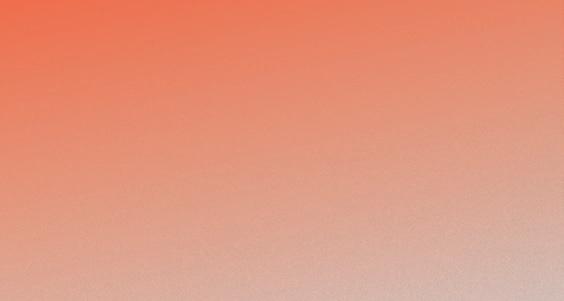
LO SAPEVI GIÀ?
Vicino


IMPARA NOZIONI CHE POSSONO SALVARTI LA VITA CON IL LAB SNOW DELLA SAFETY ACADEMY


Muoversi in montagna comporta delle responsabilità. Noi ci impegniamo a prepararti al meglio. Dal 1980.
 ai crinali possono presentarsi accumuli di neve ventata.
ai crinali possono presentarsi accumuli di neve ventata.
1.MANASTASH
BIGFOOT FLEECE JACKET

T he Japanese outerwear brand, founded in Seattle in 1993, presents this soft fleece jacket openly inspired by the 90s. It includes a lined windproof membrane, full two-way zip closure, zippered handwarmer pockets, and wrist vents. Woven logo patch.
BEST MADE
BY DAVIDE FIORASO
4.GERBER
S TAKE OUT MULTITOOL
A n innovative tool created to handle the most important tasks that every camper has to face. 11 tools, each with a defined purpose: stake puller, smooth edge saw, scissors, awl, bottle opener, file. A sturdy carabiner integrated into the frame makes it easy to clip.

2.OUTDOOR FELLOW
W INTER FIR CANDLE
Nothing evokes memory like smell, and with this fragrance Outdoor Fellow wanted to recall the winter scent of snowy conifers. Notes of fir, fresh snow, juniper, cloves, wild cypress and patchouli. For every candle sold, 5% of the proceeds are donated to The Trust for Public Land.
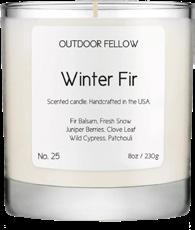
5.JETBOIL
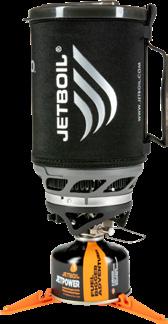
S UMO COOKING SYSTEM
Similar to other Jetboil cooking systems incorporating the all-weather burner, but with an unmatched cup-to-fuel ratio. With its 1.8-litre FluxRing container, Sumo is the ideal family-sized gas stove for large groups. A top of the range that performs in extreme situations and at very cold temperatures.
3.YOKE
C HUCK BOX CAMP KITCHEN
Your all-in-one field kitchen. Chuck Box Camp Kitchen is a useful tool for storing, transporting and organizing everything you need to enjoy cooking outdoors: 5 storage compartments, pull-out drawer for small items such as spices and sponges, 4-compartment utensil drawer, snap lock quick release.
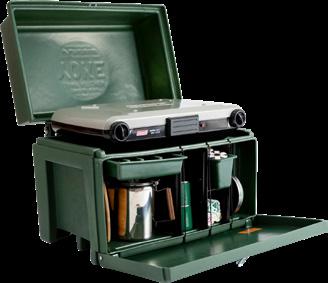
6.SCARPA
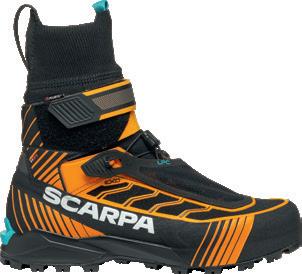
RIBELLE TECH 3 HD
News for the SS23 season in the Mountain Elite category, Ribelle Tech 3 HD is the evolution of the iconic and innovative boot for fast&light mountaineering. With greater technicality and efficiency, it represents the most revolutionary all-round mountain boot. Reduced weight and vocation for performance for a challenge to category standards.
12
1.
2.
3.
4.
5.
6.
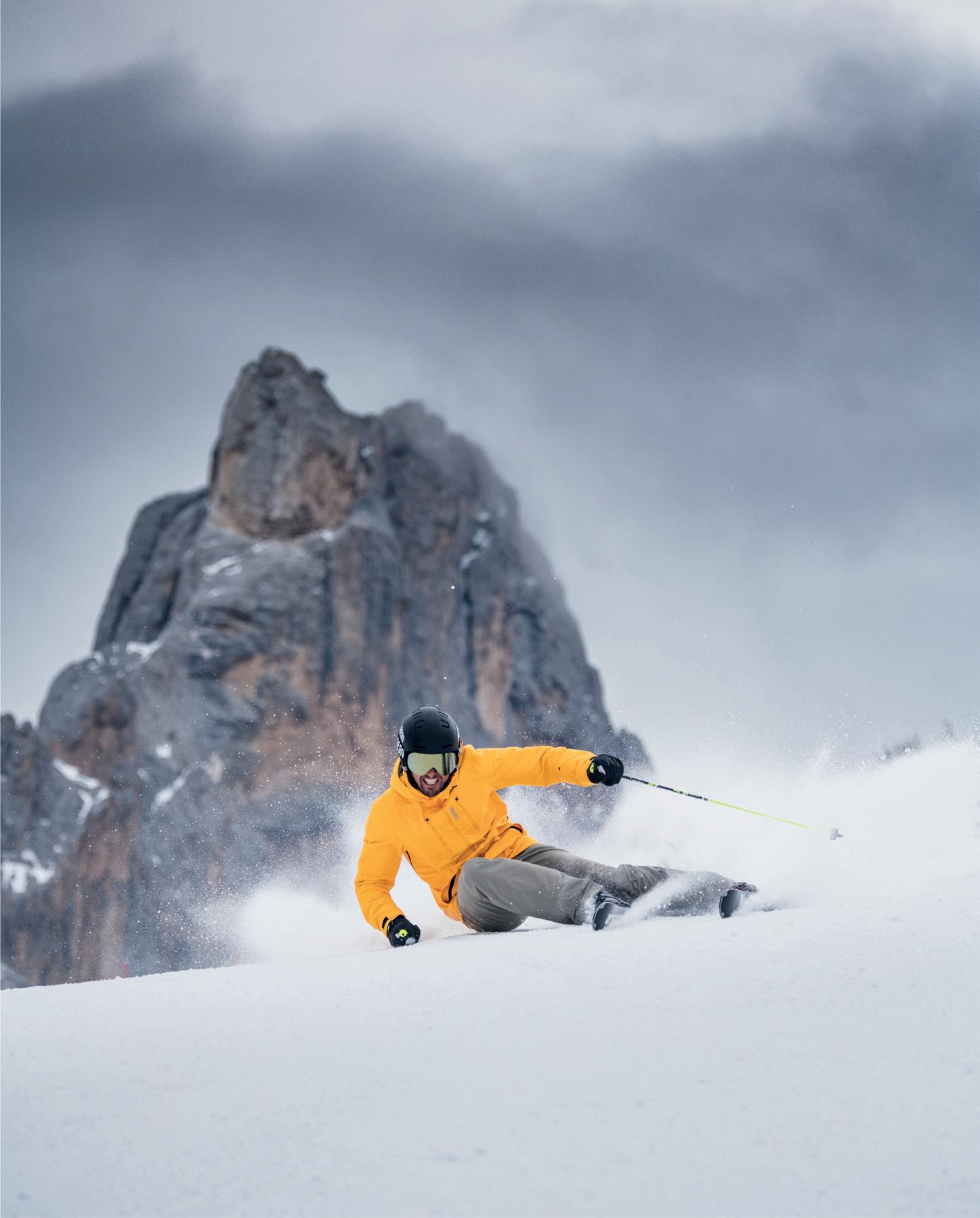
8.VOLLEBAK
S OLAR CHARGED PUFFER
After the success of the Solar Charged Jacket (Best Inventions 2017 according to Time magazine), Vollebak returns with something even more ambitious: the Puffer version, designed for the coldest and darkest places on earth. With a 3-layer waterproof fabric and ultra-durable details, it traps sunlight, glows in the dark and keeps you warm down to -40°C.

10.KELTY
LOWDOWN COUCH
After the iconic Low Loveseat, Kelty presents the new camping chair for 3 people. Low seat, slightly reclined backrest and a "relaxed" design to let you enjoy your moments of pause around the fire even more comfortably. Multifunctional carry bag that doubles as a padded dog mat.

BEST MADE
BY DAVIDE FIORASO
8.PARBAT
A 4M 38L BACKPACK
Extremely reliable and resistant, designed for the most extreme conditions. Its aerodynamic profile offers freedom of movement when climbing on rock and ice. Quick release top, front access, daisy chain and strap to secure the rope. ULTRA400 waterproof fabric for maximum protection against the elements.
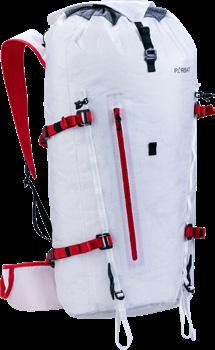
11.COTOPAXI
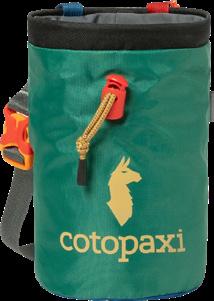
H ALCON DEL DIA CHALKBAG
A ll the features you'd expect from a premium chalk bag: easy access structured opening, adjustable drawstring closure, soft fleece lining and elastic brush loop. Back mesh pocket and zippered media pocket designed to fit today's smartphones.
9.CARHARTT
FIRM DUCK APRON
From DIY to barbecuing to bike maintenance, it's designed to be the best work apron you'll ever own. 407 g/m² Cotton Duck fabric, triple stitched ribbing, multi-compartment bib with zip closure, utility pockets and tool holders. Custom fit with cross back straps.

12.SALEWA
ZEBRU FRESH MERINO RESPONSIVE LONG SLEEVE TEE
With the Zebru Responsive collection, Salewa has gone even further by integrating Responsive technology into the Fresh Merino fabric. Long-sleeved baselayer with body-mapped design, made from the finest Merino wool with the addition of high strength Tencel lyocell fibers. Advanced thermoregulation for high intensity alpine sports.

14 7. 8.
9.
10. 11. 12.
Always ready
Make smart decisions fast. Intuitive handling and cutting-edge technology are at the heart of our avalanche equipment range. The award-winning Barryvox transceiver and wide array of UIAAcertified shovels, probes and airbag systems are always there, ensuring you’re prepared to make smart decisions fast.
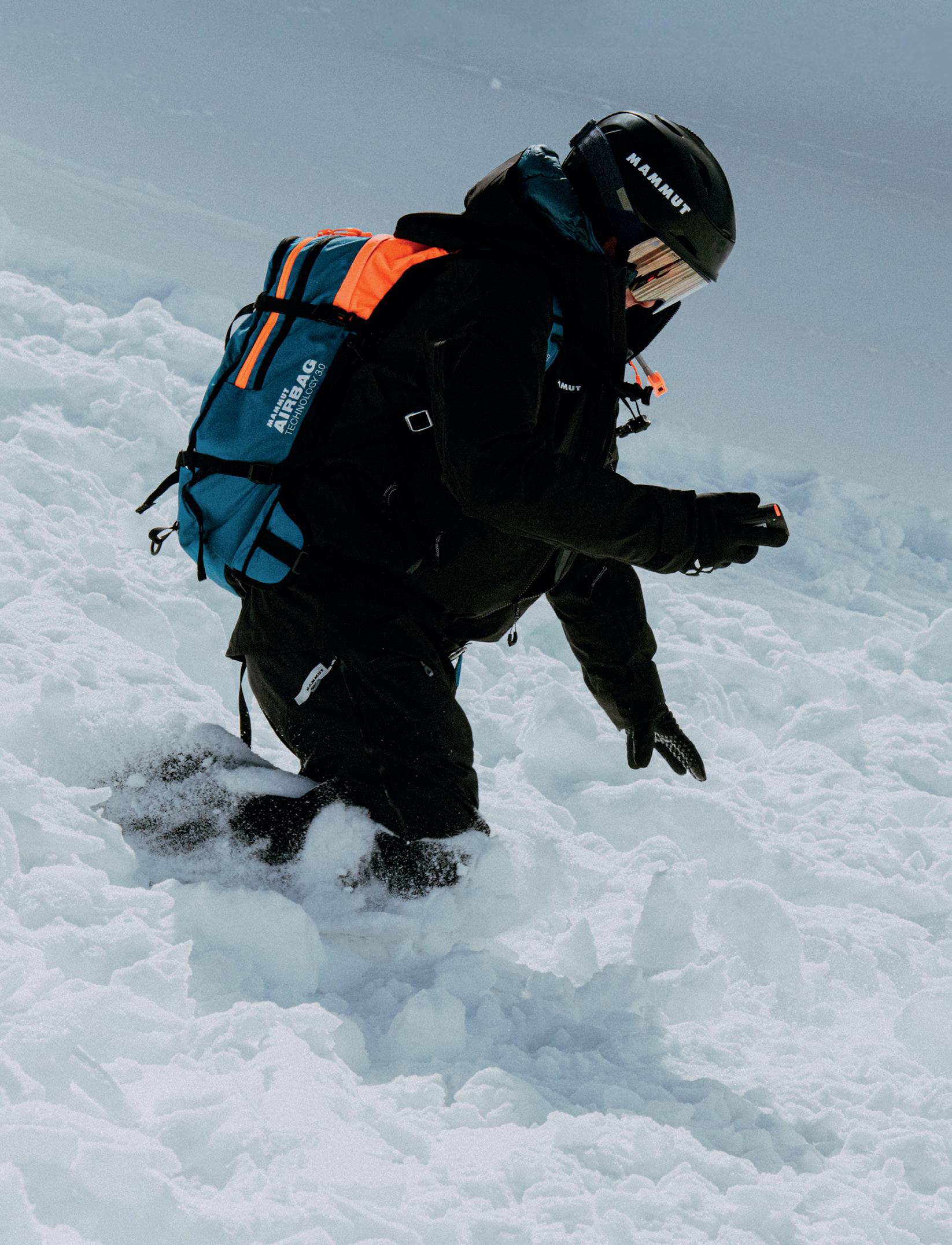
mammut.com
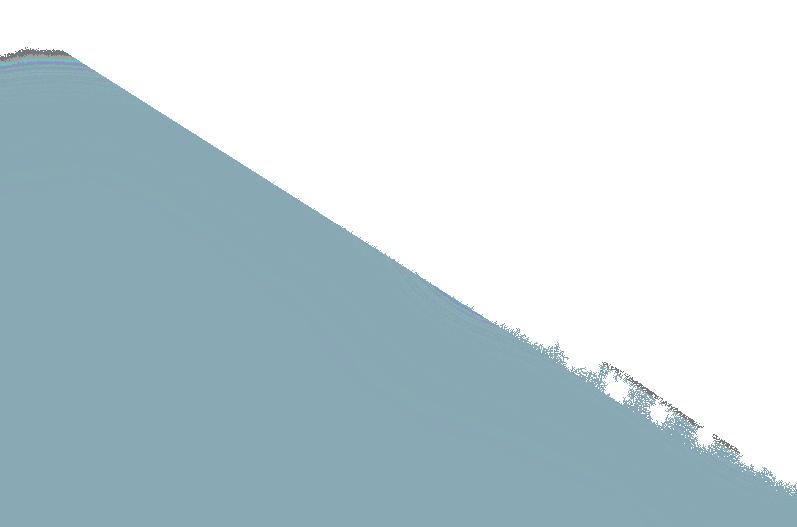
1.BEAMS PLUS X J.CREW REVERSIBLE LINER BLOUSON
K nown for its masterful take on classic American menswear, Beams Plus is a private label of Japanese retailer Beams. From the exclusive collection with J.Crew comes this reversible jacket made with ripstop nylon outer fabric printed with paisley pattern. Soft shearling lining.

KILLER COLLABS
BY DAVIDE FIORASO
4.ERIC JACKSON X BLACK DIAMOND DAWN PATROL 25
25 liter backpack that pays homage to the style of Eric Jackson. Featuring a custom Sitka camo print and 100% recycled fabrics, Dawn Patrol comes with a full set of features that make it versatile in the backcountry, including a separate, easy-access pocket for your safety kit.

2.CARHARTT X RUMPL ORIGINAL PUFFY BLANKET
From Portland, Oregon, to Detroit, Michigan, chasing the motto “Get Back to the Land”. Eight different styles for a collection that celebrates 50 years of Carhartt's Duck Camo pattern and that offers two new Puffy Blankets (inspired by construction sites) in fluorescent yellow and orange colors with reflective screen prints.
5.STANLEY X PENDLETON LEGENDARY CLASSIC BOTTLE
The meeting point of two timeless brands. The classic Stanley bottle is glazed with the iconic "stripes" that made the Yakima Camp Blanket famous, the best-selling Pendleton product. Built to last, this 18/8 stainless steel bottle has double wall insulation. The leak-proof screw cap doubles as a cup.


3.SMITH X HIGH FIVES MAZE HELMET
Smith is once again partnering with the High Fives foundation to honor the life and legacy of the legendary CR Johnson, pioneer of the freeski movement who tragically passed away in 2010. One of the most popular snow helmets is Maze which comes in this olive green version with reggae motifs and the iconic lion, symbol of CR's indomitable spirit.
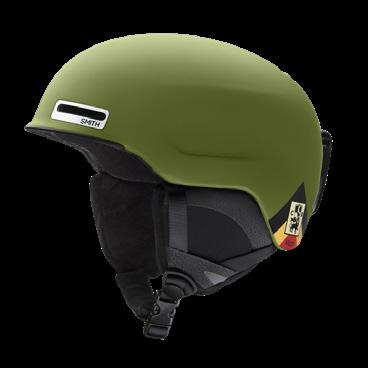
6.OREGON STATE PARKS X DANNER JAG
To celebrate 100 years of Oregon State Parks, Danner has created an exclusive collection to support future generations of explorers. The classic retro-inspired Jag Hiker comes in a colorway that harks back to the lush forests of the Pacific Northwest. For each pair, $50 will be donated to the Oregon State Parks Explorer Series.

16
1.
3.
5.
4.
6.

ALPROOF LITE 22 deuter.com
#deuterforever
DEUTER IS FOR THE SAFER SEND
7.NICOLE MCLAUGHLIN X DIEMME MAGGIORE MULE
The historic Italian shoe factory has announced the launch of its latest collaboration with Nicole McLaughlin, a New York-based designer whose work focuses on the exploration of upcycling and sustainable fashion. Her unmistakable style has reinvented the Maggiore model using Vibram soles and waste materials.
10.MERRELL X YOGI BARE PACKABLE TRAVEL YOGA MAT
Merrell and Yogi Bare teamed up to create a one-of-a-kind washable, foldable, eco-friendly yoga mat designed to go anywhere. 2mm natural rubber base and microfiber top layer printed with water-based inks and dyes. It includes a water resistant RPET case.

KILLER COLLABS
BY DAVIDE FIORASO
8.PATAGONIA PROVISIONS X MIIR MACKEREL TOMO
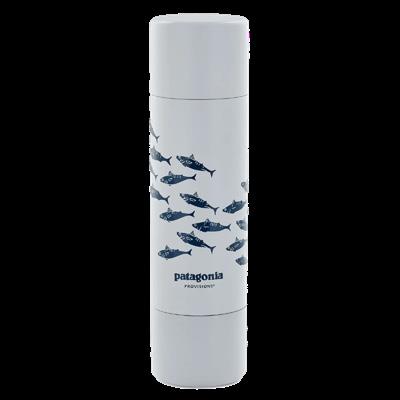
Taking its name from the Japanese term for "pal," MiiR's Tomo is designed to store and transport your drink (hot or cold) until it's ready to pour into two twist-off cups. The practical roll-stop handle facilitates transport. Nice personalized design for Patagonia Provisions.
11.K2 X BRAIN DEAD RECKONER 112

K2 and Brain Dead together for a very limited collection that demonstrates the explosive approach of the Californian artistic collective. Graphics that take inspiration from post punk, underground comics and the spirit of the subculture in an all terrain freeride ski (Twin Rocker with Double Barrel soul) that can really do it all.
9.SNOW PEAK X JINS RUBBER SUNGLASSES 015

With a launch celebrated in the Portland and Brooklyn stores, Snow Peak presented the new capsule created in collaboration with the main Japanese eyewear brand: Jins. Five different sunglasses that embody the principles of both brands: quality, long life, and an eye to design, high end and minimalist.
12.CIELE ATHLETICS X NORDA 001 GRAVEL EDITION
The latest “joint-adventure” of Canadian brand Ciele Athletics features Norda's 001, which has already been revisited by Satisfy and Ray Zahab. New Gravel Edition color for the first seamless trail running shoe in bio-based Dyneema with an exclusive sole-midsole compartment by Vibram.
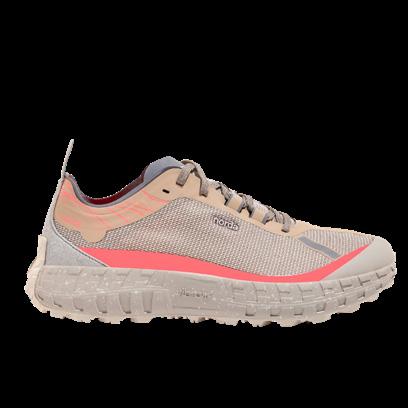

18 7. 8. 9. 10.
11.
INVISIBLE GROUND A snowboard film about vulnerability
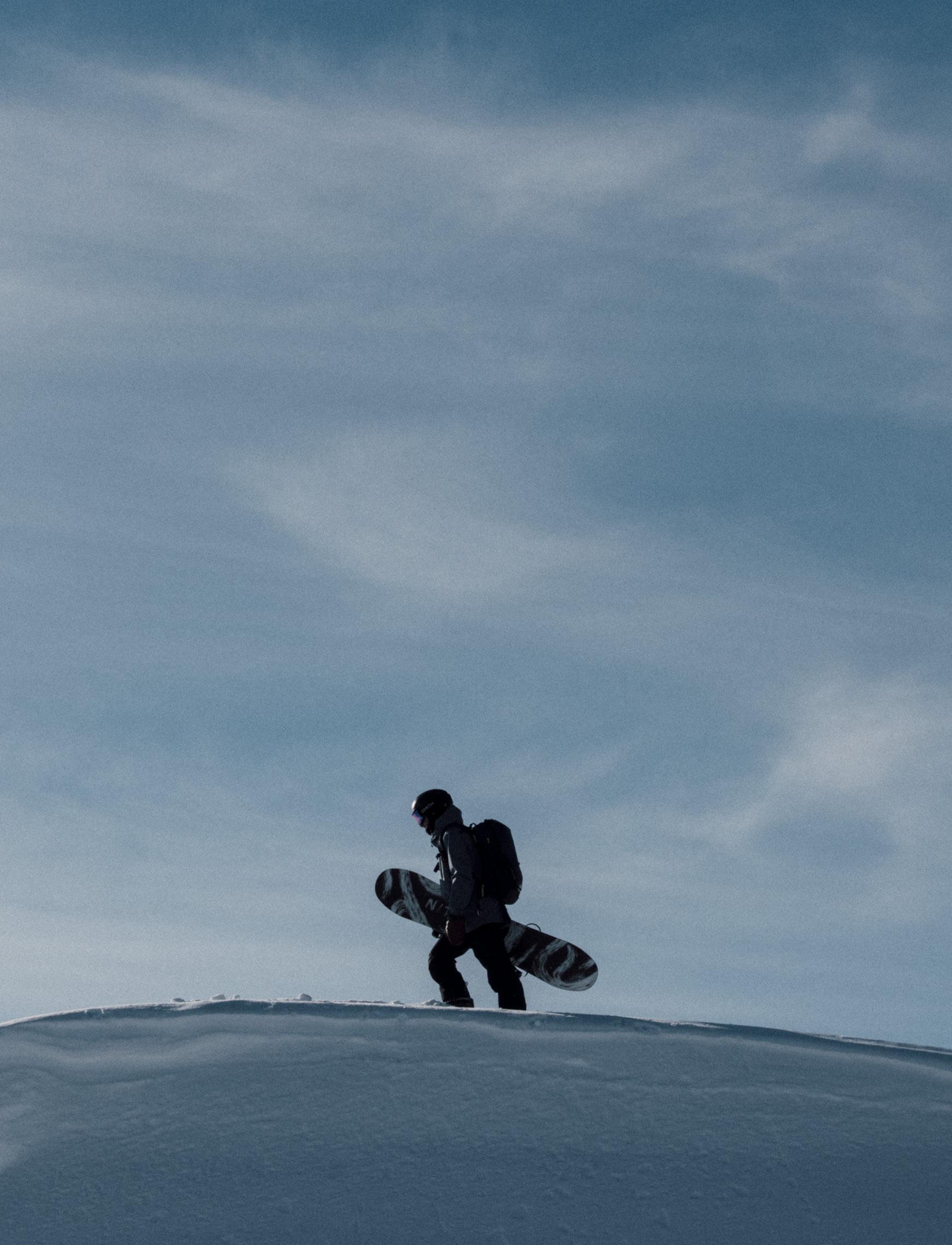
After tragic avalanche accidents, professional snowboarders Xavier De Le Rue and Elias Elhardt deeply question their motivation for the potentially life-threatening pursuit of freeriding, which they have dedicated themselves to. During several days in the mountains together, they share their personal experiences with being exposed to risk and what being vulnerable actually means to them. By questioning unrealistic ideas of control, Invisible Ground sets out to explore how to obtain a reasonable balance between the love for adventure and a misguided drive to expose oneself.
DIRECTED by Elias Elhardt FILMED & EDITED by Christoph & Phillip Kaar
Duration: 30min. / Premieres & Festivals: Fall 2022
ECO SEVEN
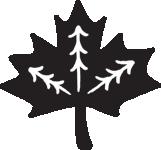 BY DAVIDE FIORASO
BY DAVIDE FIORASO
E LAN AIMS TO BECOME C ARBON NEUTRAL BY 2030
Over the past 10 years Elan has worked hard on its sustainability dossier. Actions that have already been recognized by Green Star, the first gender certificate for contributing to climate neutrality. Having pioneered a new standard in digital printing technology, the central point will be the refurbishment of the headquarters to be 100% self-powered. Another goal will concern the purchase of raw materials: the components will have to come more and more from Slovenian producers. Today 99% of the materials used in the production of skis comes from Europe, 68% of it from less than 400km far away.
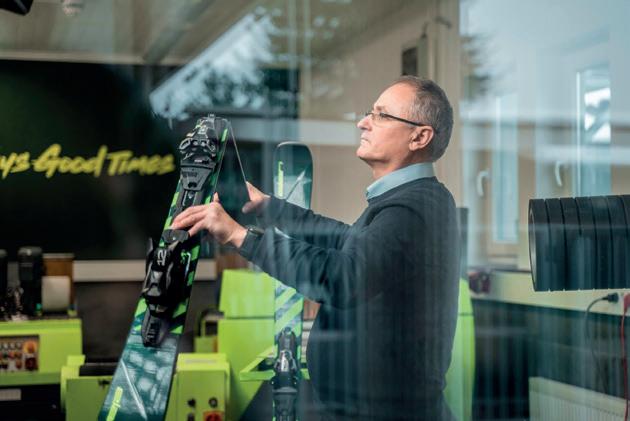
P ATAGONIA: PROGRESS IN THE PROTECTION OF THE VJOSA RIVER
In June 2022 the Albanian government signed an agreement with Patagonia which sanctioned the commitment to collaborate for the establishment of the Vjosa River National Park. Just 6 months later, another historic step was taken: the delivery of the feasibility study by the team of experts. The document focuses on the long-term protection of the ecosystem and biodiversity, through analyses, guidelines and proposals for models that allow environmental management, the development of "green tourism" and forms of sustainable agricultural production in the territories bordering the last wild river in Europe.
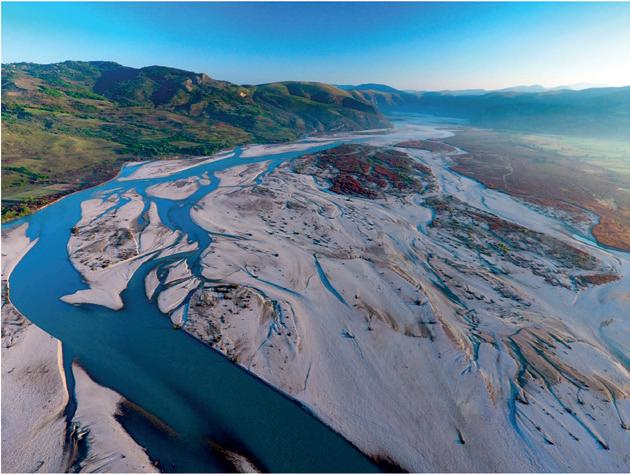
G ARMONT INTERNATIONAL AND ACBC: TOGETHER FOR A SUSTAINABLE FUTURE
Walking in nature with the least environmental impact will be one of Garmont's main commitments for the coming seasons. It is from this assumption that the collaboration with ACBC, a leading B-Corp company in the design and production of sustainable products, was born. The first phase saw the development of a capsule collection that will be on sale from July 2023. On this occasion, Garmont launched the Uncharted experimentation laboratory in which it will develop projects that aim to open unexplored paths, thinking of a future more sustainable.
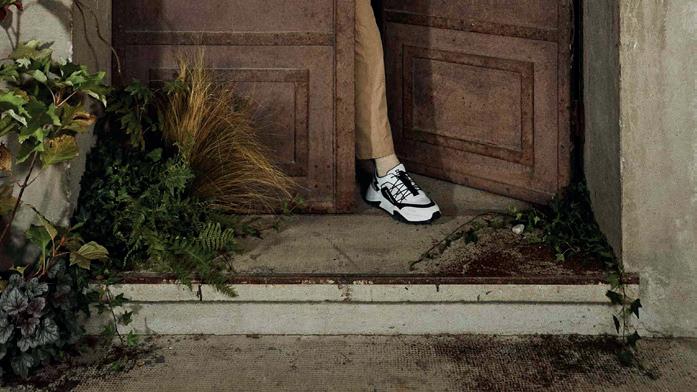
20
FIRST UP FIRST DOWN
TIGARD 130 BOOT
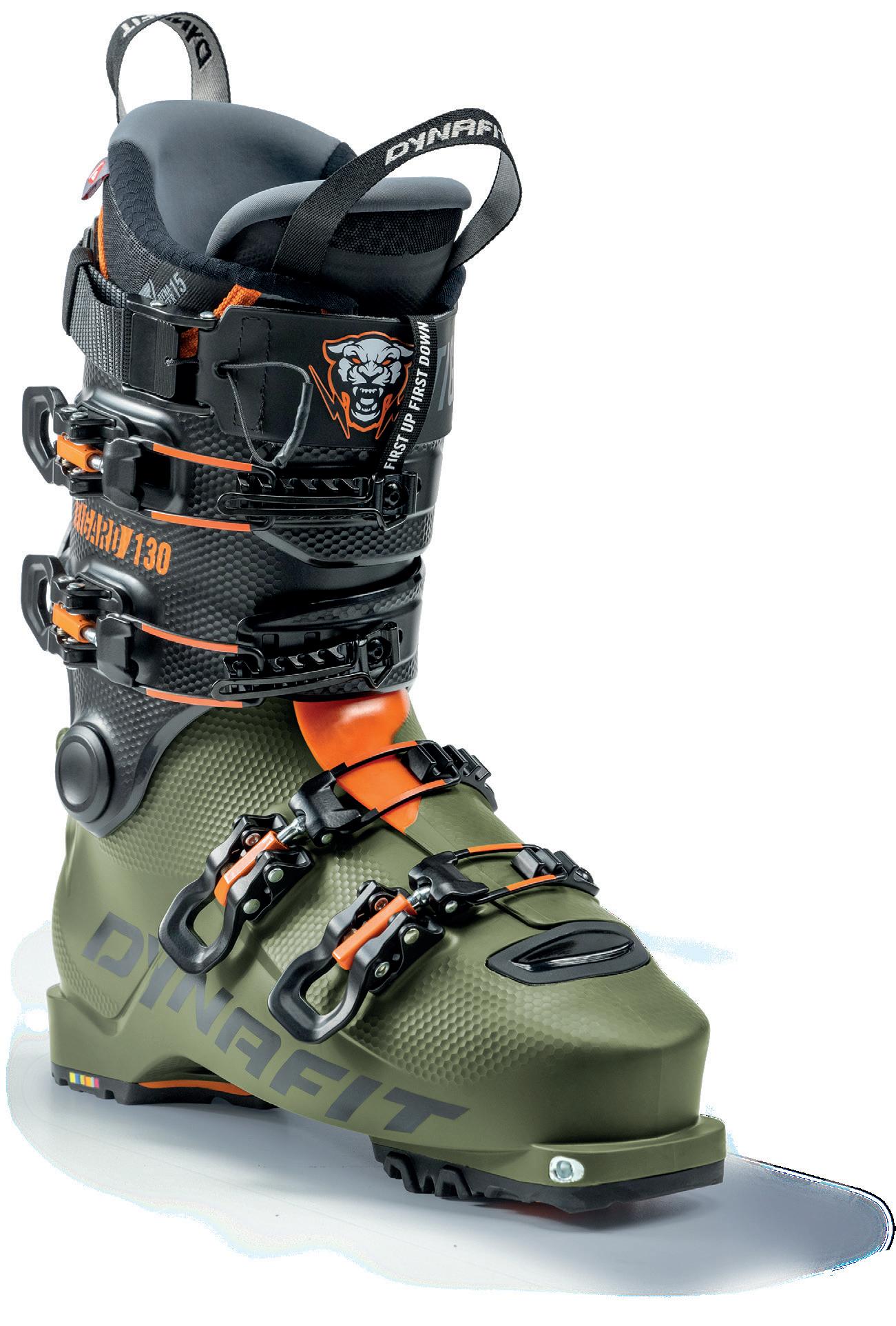

ECO SEVEN
BY DAVIDE FIORASO
R OSSIGNOL'S ONE FOR ONE PROGRAM CONTINUES
Rossignol's One for One program will continue until April 30th: for every new pair of skis sold, the company will donate a reconditioned pair to charities. A project that aims to extend the life cycle of skis and to support voluntary organizations committed to providing the opportunity to experience winter sports to disadvantaged communities. An initiative perfectly in line with the wider social and environmental ambitions that the Rossignol group has implemented through Respect, the program that defines the company's role in the fight against climate change.
E OG, HIGG AND OIA TO TEACH T HE OUTDOOR INDUSTRY TO BE M ORE SUSTAINABLE

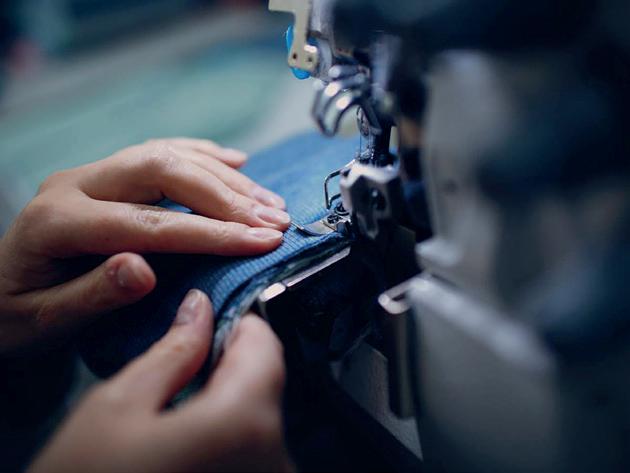

Just like the outdoor industry, sustainability measurement also continues to evolve. It is in this context that the European Outdoor Group (EOG) announces its partnership with Higg and the Outdoor Industry Association (OIA). This will enable companies to consistently progress by aligning with common standards and measurement systems that help promote a more sustainable production. To date over 150 combined OIA or EOG members use the tools and data from the Higg Index as a guide towards their goals.
M AMMUT SIGNS A DEALWITH CLIMEWORKS
M ammut takes a significant step towards its goal of becoming Net Zero by 2050, becoming the first company in the outdoor sector to sign an agreement with Climeworks, a pioneering Swiss company that operates in the removal of carbon dioxide from the atmosphere through specific DAC systems (Direct Air Capture) which filter and remove CO2 in order to storage it deep in rock formations. In its multi-year agreement Mammut will support the removal of 200 tons of carbon dioxide.
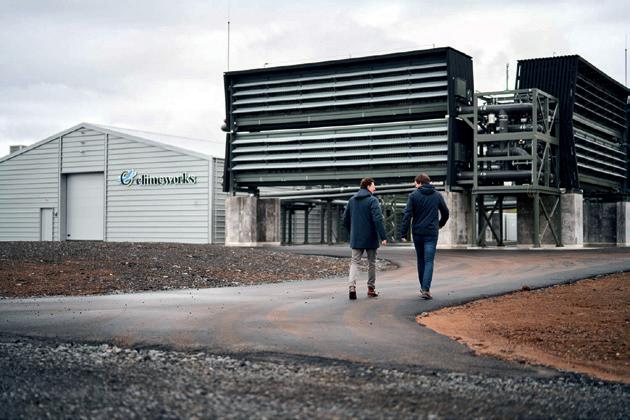
T HE NORTH FACE WITH POLARTEC
CIRCULAR ECONOMY
More than 30 years after the launch of the iconic Denali Fleece, the historic collaboration between The North Face and Polartec continues through a 100% recycled fleece fabric for the Alpine line, the first of the Circular Design collections of the VF Corporation brand. During the development of the Alpine Polartec collection, The North Face redesigned the finishes and closures to minimize dismantling steps. The result? Products that can be disassembled in 6 seconds and 97% of materials that can be reused.
22
O
T
RETHINK

SOLO ULTRA ESP PHOTOCROMATIC ALU LENS
by Barberini®
ATHLETE: Michele Guarnieri
PHOTO: Federico Ravassard
LOCATION: Val di Thures, Sauze di Cesana
BY LUDOVICA SACCO
Yosuke Aizawa leading Colmar's Revolution line
Designer Yosuke Aizawa returns to work with Colmar just two years after the White Mountaineering X Colmar AGE collaboration, where the styles of the two brands merged in full harmony. However, this new agreement is not a simple collab: Colmar has chosen Aizawa for the next seasons of Revolution, the most refined line of the Colmar Originals collection. At the basis of this choice there is a deep trust, developed thanks to the sharing of values such as the love for the snow, for outdoor life, the impeccable know-how on high performing materials and the refined and elegant style applied to technical garments.
Yosuke Aizawa, in particular, has a recognizable style born from the fusion of Japanese and Western aesthetics and culture. This is because the designer is closely tied to his father's areas of origin, more precisely to the city of Fussa (near Tokyo) which is located near an American base, a presence with a strong Western imprint. Both brands were born with a solid foundation of values and with a strong identity, fundamental characteristics for a functional collabora-
tion. In fact, Colmar has been around for over 100 years and it is an icon in the technical clothing industry, while White Mountaineering was founded in 2006 by Aizawa who experimented with mountain-inspired technical looks on the world scene, combining practicality, high performing fabrics and functionality.
The Revolution collection therefore merges the two souls, proposing a contemporary and glamorous interpretation of technical clothing. The line includes men's and women's outerwear in refined technical fabrics of different lengths and weights, with colors inspired by nature and color

block shades that recall Aizawa's essential Japanese style. In addition to the iconic style, the garments are also soft, comfortable and practical. The outerwear is also accompanied by sweatshirts characterized by functional cuts and relaxed fits. Last but not least, there are knitwear with a typically outdoor style and a series of pants made in stretch and soft interlock.
This collaboration is truly a prime example of how technology and design can come together to create a product that satisfies current trends but above all that impeccably respects the shared values of both brands.
24 THE
BRAND
PILL
The Monza-based company signs a new agreement with the Japanese designer, founder of the brand White Mountaineering.
THE PILL BRAND
BY LUDOVICA SACCO
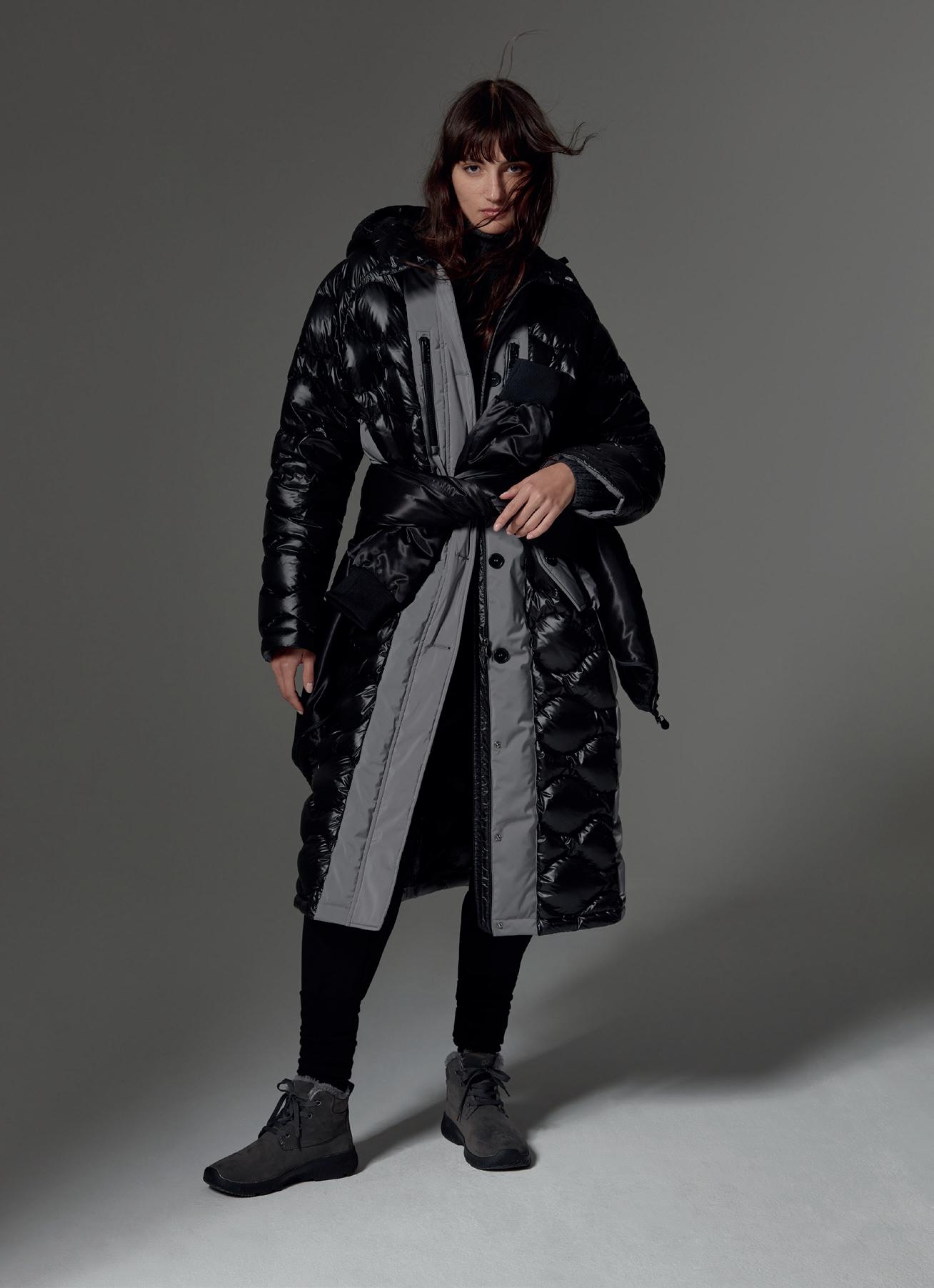
25
Salewa Sella 26L Backpack
Salewa has recently launched a backpack to able satisfy the most demanding skiers: compact, stable and super comfortable. Intrigued by the novelty, we asked more about it to Alessio Innocente, Salewa Product Manager Equipment.
What is the defining feature of this backpack? The carrying system consists of the Dry Back Contact backrest with 3D ventilation channels that allow good breathability and a dry back. Other particular features are the Split Shoulder Straps and the waist band who also with a "Split" structure, which follow the skier's movements without limiting them.
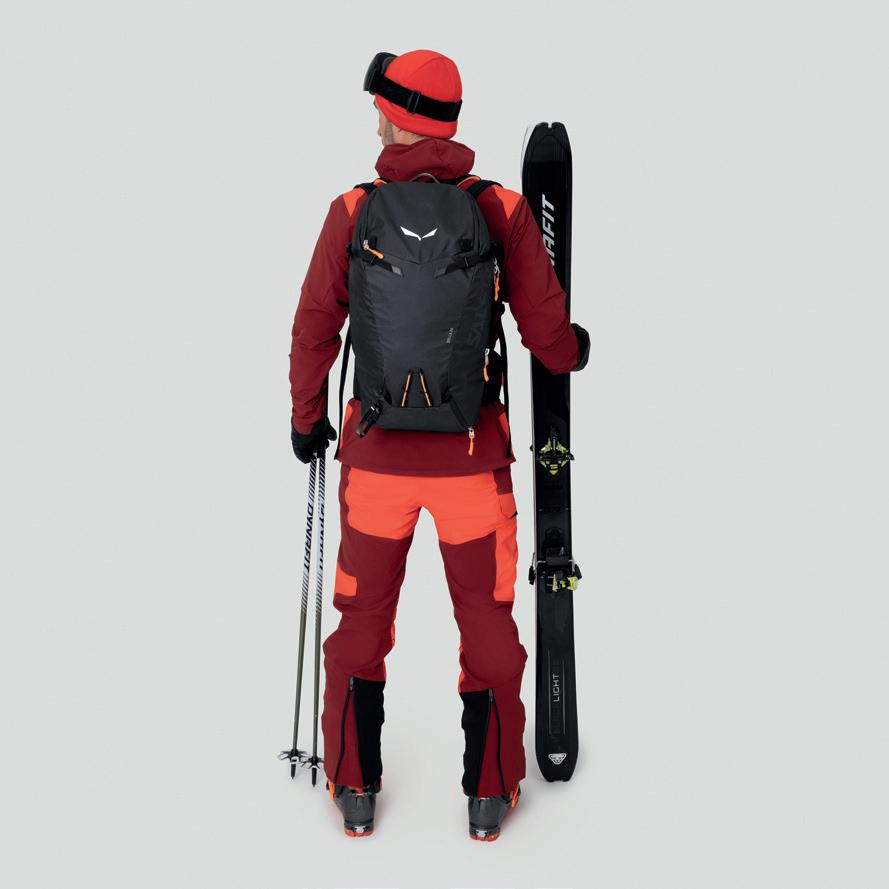
Who is it meant for? For the most demanding skiers who love to explore the mountain and its slopes on skis.
In which way is it different compared to models such as Randonnée or Winter Mate? Sella is dynamic and compact, designed for those looking for performance on skis. It has a double way to fix the skis (one of which is "on-the-go" to place them on the backpack without having to remove it) and a stable fit for the most demanding descents. Its Regen Robic fabric is tough and made from 100% recycled nylon. Randonnée, on the other hand, has a larger load volume, suitable for longer tours and where more equipment is required. Finally, Winter Mate is the ideal companion for those who love to explore the winter landscape and to enjoy the snowy slopes.
BY LISA MISCONEL
How many external pockets does the backpack have? Is there one for the avalanche kit? Sella has a front compartment dedicated to emergency equipment, in order to make it accessible quickly and safely. In addition, there is also a top pocket, a separate pocket with access on the bottom and a pocket on the waist belt to keep the strap for attaching skis "on-the-go". However, maximum accessibility is given by the "all-around" zip opening with three sliders.
Can this backpack also be suitable for other activities? Sure. The double ice-axe holder, the integrated helmet-holder net or the separate pocket on the bottom, for example, make it a product also suitable for mountaineering. The carrying system is another example of versatility in various activities, including hiking.
Why did you develop it in a single size? The focus on the stable carrying system, the balanced compactness and the volume suitable for carrying essentials led our testers to particularly appreciate this size.
Are there any differences between the men's and women's models apart from the size? I always like to say that a backpack is meant to be worn, not carried. In fact, over the years our designers have made some adjustments to the carrying system to better follow different anatomies.
How did the market react this winter season? Is it a product understood and appreciated by consumers? The first months it was in the stores it has given us great satisfaction and those who have put it on their shoulders since the beginning of the season are satisfied with it.
26 THE PILL PRODUCTS
THE PILL PRODUCTS
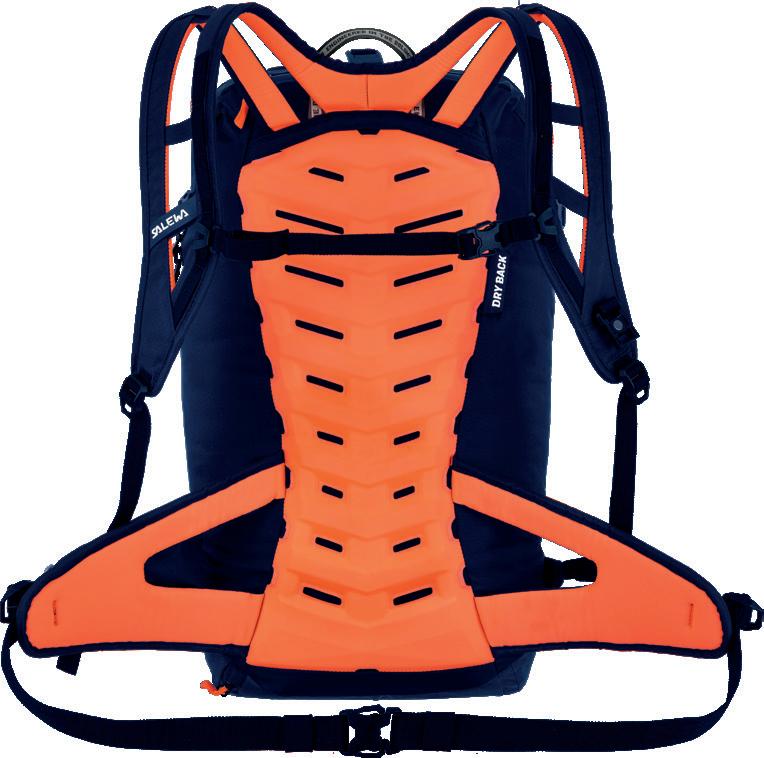
 BY LISA MISCONEL
BY LISA MISCONEL
27
BY ILARIA CHIAVACCI
The outdoor world goes back loving wool
The qualities of this natural fiber in terms of thermoregulation, breathability and resistance are unique. The Woolmark Company together with Sease aims to bring wool back as the protagonist of the outdoors, also thanks to a military technology dating back to the 1800s.
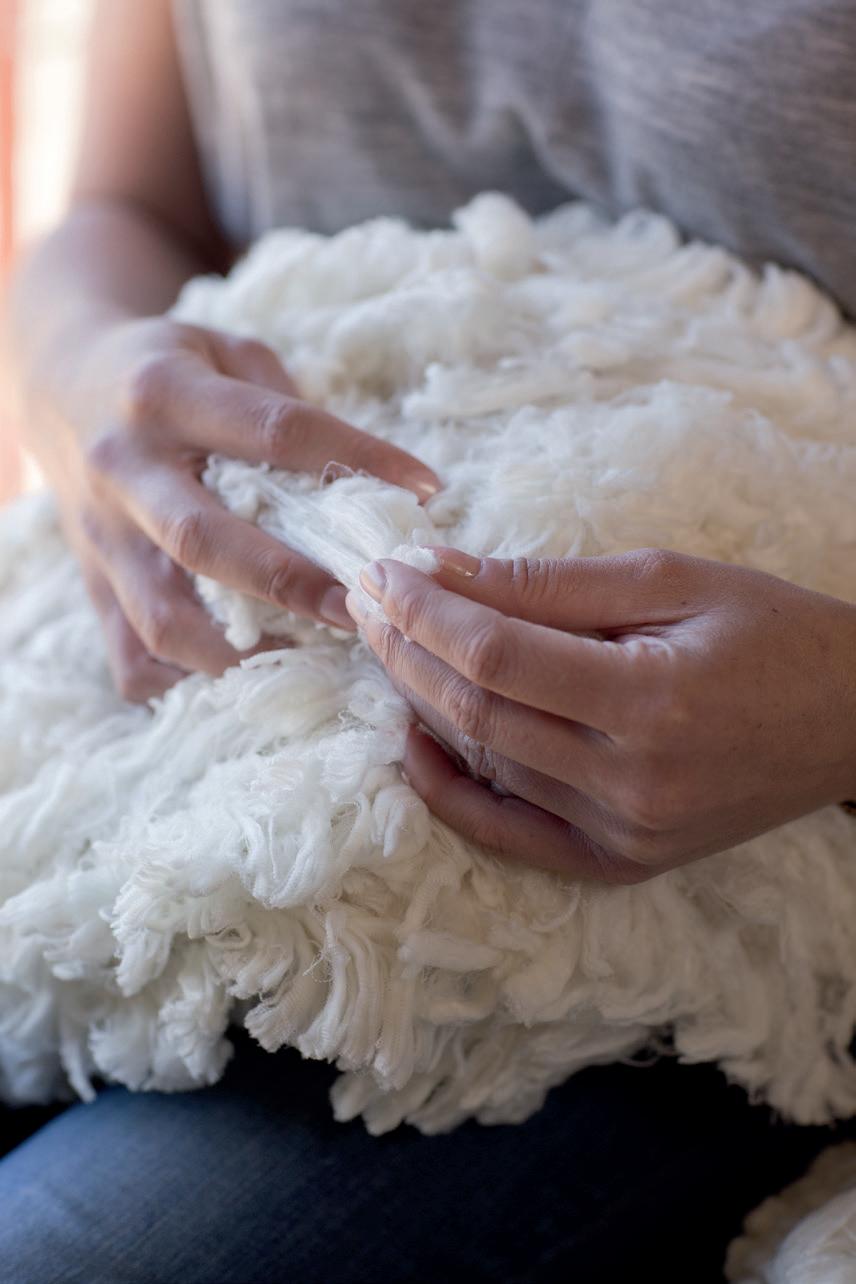
The walls of the Kulm Country Club in Saint Moritz are covered with pictures of vintage skiers. Endless skis, made of wood and rope, and an infinity of wool sweaters. Smiling girls with pullovers screwed up with Nordic patterns, men with monochrome turtlenecks. That’s how they skied and face the mountains back then. Before the advent of polyester, around the end of the 1930s, there were no “technical garments” as we know them today: shells, duvets, thermal shirts and the impermeability given by Gore-Tex. Today it seems impossible to go without that prodigious fiber that is polyester: rigidity, flexibility and, last but no least, a low cost, make this material very popular. In addition it is hyper versatile which means that it allows you to "imitate" the qualities of a large number of natural fibers, from silk to animal hair to wool. These imitations, over time and with research, have become more and more convincing and, the result, is that today we can have a
strong fiber, resistant to abrasion and tearing and able to withstand numerous washes without changing the fit, if suitably processed, it can also be breathable. In short a prodigious fiber that exhibits all the qualities that are essential for outdoor clothing. The big problem with garments made of polyester, however, is that they are highly polluting: this fiber of miracles is in fact a derivative of petroleum and, although the textile industry is gearing up to produce more sustainable alternatives from an environmenta point of view, such as Econyl made from
recycled fishing nets, the presence of textile fibers produced from scratch by petrolatum is still very high. This kind of materials are energy-intensive: their production requires a high consumption of CO2 and, as if this wasn’t enough, they disperse microplastics at every wash. The paradox is that the success of such a fiber depends on the fact that it is able to imitate the qualities of natural fibers such as wool, which on the other hand requires less energy to produce, it’s more easily recyclable, it does not produce microplastics, it is 100% biodegradable, du-
28
THE PILL PRODUCTS
rable over time and also responsible for the survival of many vulnerable communities that exist in various parts of the world which are able to live on thanks to the breeding of sheep or goats for the wool production. Sure, that costs more, that’s why it’s one of those materials that we define as "premium".

The reason why I am in Saint Moritz is therefore to understand how the world of the outdoors has made a turn around itself and now it’s wool that is worked in such a way as to be able to imitate the qualities of the synthetic fibers. Yes, because durability, temperature control and breathability are qualities that this fiber has always had and that have been borrowed from synthetic ones, but progress in terms of research and development today have been able to work it so that it is also water repellent and shields against UV rays. The Woolmark Company, which is the global authority on Merino wool and a subsidiary of Australian Wool Innovation, a non-profit company founded by more than 60,000 Merino sheep farmers, invest in research and development on the entire supply chain and supports brand projects engaged on this front on a global level: the reason we gathered in Saint Moritz is the presentation of the collaboration with Sease, winner in 2022 of The Woolmark Company Awards for Innovation. To Sease goes in fact the merit of having invested to bring wool back as a protagonist in the world of outwear thanks to the Solaro Sunrise laminated fabric, an cornerstone element of classic men's suits, able to adjust thermoregulation and perspiration. In fact, wool doesn't make you sweat, it is resistant and versatile: perhaps not as light as synthetic fibers, but unless you have to climb Nanga Parbat you will be fine with it.
“Our mission is to support the world of wool, which means supporting innovation, which represents the future of every product” says Francesco
THE PILL PRODUCTS
BY ILARIA CHIAVACCI
Magri, Regional, Central & Eastern Europe Manager of The Woolmark Company. “Our company is made up of breeders of sheep, therefore by those who produce wool, but not the finished garment. So our job as The Woolmark Company is to identify where the future of this fiber may lie, and we have seen that within Sease, a brand that has a futuristic vision of wool and of its use, bringing it back to high-end sportswear” Magri adds.
“Sease's philosophy is to mix male sartorial tradition with the functional aspect of technical clothing” explains Sease’s founder Franco Loro Piana.
“The most suitable fabric for this purpose is Solaro: in fact it best expresses this concept because it derives from a military technology created around the nineteenth century by Britain for tropical wars, it contains an anti-UV technology that reflects the rays of the sun, and then later evolved into a tailoring fabric used for daywear. The
most elegant men wore it in the world, from Gianni Agnelli to Prince Charles, but also the soldiers during the colonial era. Wool, which is a hollow fiber, has in its main properties the thermoregulation: this is why even in the desert local people dress in wool, because it maintains the body temperature by balancing it with the external one therefore it is particularly suitable also for rigid temperatures, moreover it is a hyper-resistant fabric, but also extremely elegant and with it we can do everything from ski or snowboard clothing to those for sailing, it is our iconic fabric.” Solaro is actually a very elegant fabric: its natural iridescent makes it noble. This is due to the fact that this is a fiber obtained from the blend of three colors: blue and yellow intersect each other and join the horizontal thread which is red and which gives the iridescent, colorway, uniting other non-primary colors then extending the color chart.
29
Alproof Series by Deuter
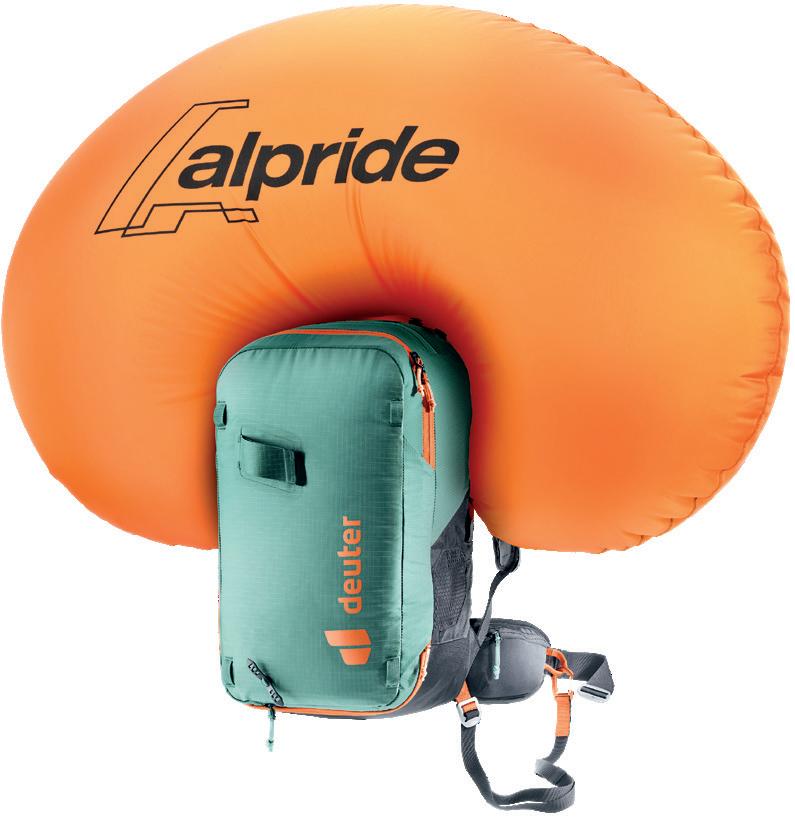
One thing is certain: winter sports that are practiced away from the slopes have grown by popularity in recent years, also stimulated by the pandemic and the need to escape in the outdoors.
The increase in freedom sports, practiced in a snowy environment, such as freeriding and ski touring, has increased the demand for safety equipment. To respond to this need, Deuter presents this winter season two new avalanche safety backpacks featuring world-class airbag technology from Alpride. The Alproof series combines high quality workmanship, materials and workmanship transport comfort for which Deuter is well known with the reliability of Swiss engineering by Alpride, in order to create a new generation of airbag backpacks.
Alproof Lite
From this know-how and the ever more pressing need to create a product on which you can totally count in backcountry situations that require it Alproof Lite (20 SL and 22) was born, a backpack for freeride skiers who want a lightweight and technical airbag backpack. It features the brand new all-electric Alpride E2 avalanche airbag system with supercapacitor technology: one of the
lightest electronic systems around and which is not affected by low temperatures. Deuter's lightweight Alpine back system, ergonomically shaped shoulder straps and padded hip flaps with gear loops combine to create a compact, snug fit that's really comfortable and that generates effective ventilation on the back. The overall effect is to allow well-controlled movement in all situations, even on challenging terrains. The waist belt, the precisely adjustable sternum strap and especially the safety leg strap work together to pre -
vent the backpack from being ripped off in an avalanche. A full-length clamshell opening main compartment houses the supercapacitor and a reinforced avalanche safety compartment with organized pockets for easy access in an emergency. For better organization there's an internal clip-on pocket for your keys and a split pocket zipped up top with a fleece lined section for storing goggles and another non-fleece lined section for storing gear straps. The exterior of the pack is also well organized, with two modular (stowable)
30 BY
EVA TOSCHI
THE PILL PRODUCTS
straps for diagonally attaching skis or attaching a snowboard to the front part. It features special attachments for ice axes and poles and an innovative detachable helmet bag. Both backpacks, 22 and 20 SL, are lightweight, just around 2400 grams including the airbag system.
Alproof
Alproof, on the other hand, is the bigger backpack in the airbag line. It was designed for ski touring and splitboarding enthusiasts who expect a lot from their safety
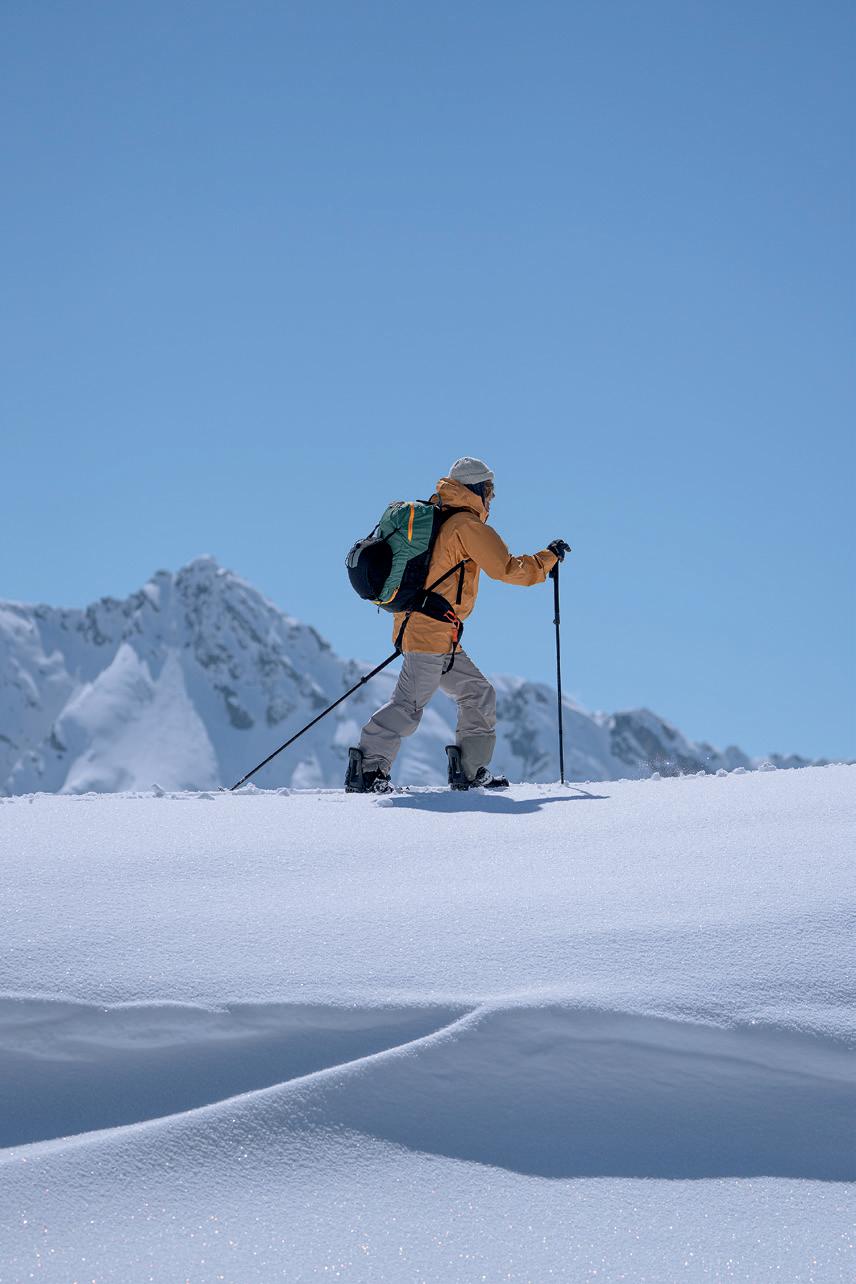
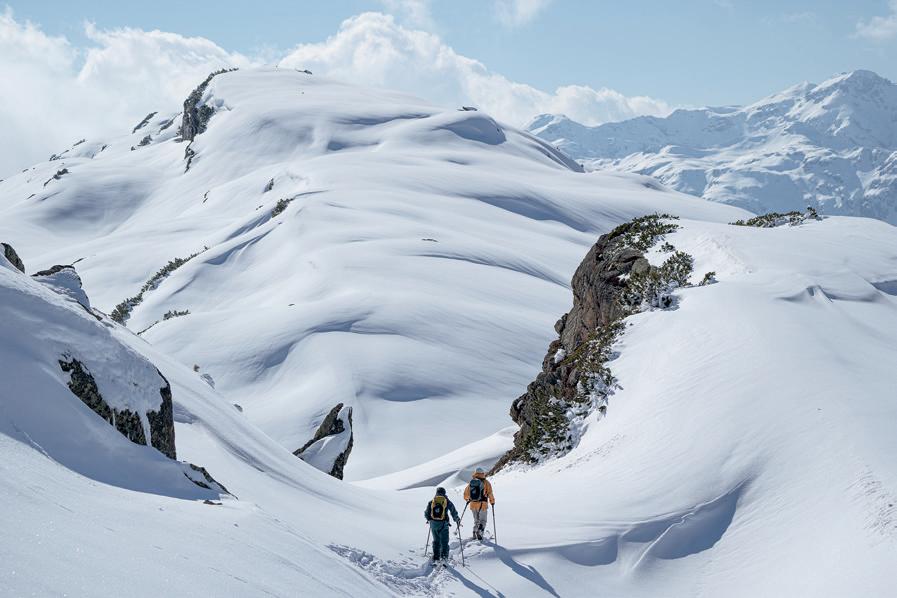
equipment as from their performance. From an aesthetic point of view Alproof is similar to Alproof Lite, but it has some more features. Thanks to its larger dimensions, 30 liters in the SL version and 32 liters in the Regular version, it can accommodate a 3-liter hydration system in the main compartment and it is equipped with a separate compartment for avalanche equipment with a reinforced sleeve for the shovel and organizer pockets, plus an internal zippered pocket for valuables. The side compres -
sion straps help stabilize larger loads and can also be used to secure skis in an A-frame. Another difference is the insulated hydration hose sleeves on both shoulder straps, which allow you to mount the activation handle on the right or left side, depending on your preference, and to thread the hydration tube through the sleeve on the other shoulder strap. Being slightly larger and with additional features, Alproof is also a bit heavier: the 30-litre SL version weighs 2620 grams and the 32-litre version 2660 grams, including the airbag system.
About the product development
“While developing Alproof, our focus was clearly on safety. It was a challenge to integrate Alpride's new E2 airbag system into the backpack which requires a rather complicated and very accurate construction, furthermore these backpacks must be very robust and resistant to meet the requirements of the standards and the requirements of Alpride itself. Emergency safety was also a central theme in the design. For example, all safety-relevant parts are highlighted in bright orange, the safety compartment, system actuator, leg loop attachment, system cover, system controls and of course the inflated airbag for easy detection in the event of an avalanche".
“Our focus was also on the handling and practical sport-specific functions, such as the ski attachment and the safe transport of the helmet. Of course, despite all the requirements of the equipment, the back system is really great. It's a light package that sits down securely and is so comfortable you won’t notice the load," says Steve
Buffinton, Deuter Product Design & Development.
31
THE PILL PRODUCTS
Blizzard presents Hustle 10, for uncompromising adventures
The 2022/23 season opened with the launch of Hustle, a model that offers an innovative solution for freeriders looking for untouched slopes on which to draw ever new lines, away from lifts and crowds. However, this brings new challenges, such as skin ascents in which legs and training play an important role. Freeriding skis are often too heavy for a long approach, while ski touring models are too light and lack buoyancy and responsiveness. For this reason, Blizzard developed the Hustle collection, which offers a balanced solution with low weight without compromising downhill performance. These skis are perfect for big mountain fans who would do anything to be in the right place at the right time, whether that means leaving before dawn or climbing
high peaks. The name Hustle perfectly expresses the spirit of these skis and of their riders.

Performance balance with Trueblend Free Woodcore
The key to the success of this innovative range of skis lies in the Trueblend Free Woodcore construction. This combination of beech, poplar and paulownia wood strikes the perfect balance between lightweight and downhill performance. The supple flex of the tip and tail facilitates the entry of curves and the power release, while a higher stiffness in the center part ensures stability and perfect edge grip. The result is a safe and comfortable skiing for freeriders looking for powder. A new concept in lightweight skis for off-piste adventures.
Carbon is the ideal material for light and stable cushioning, and it is precisely for this reason that the Carbon D.R.T. (Dynamic Release Technology) has been incorporated into their construction. This solution, tested and appreciated in the skis of the Blizzard freeriding collection, offers better support, greater reliability and increased performance without compromising the fun. A progressive shape is key to their versatility, with a Trueblend Free Woodcore flex that fits perfectly, an early rise nose, a rockered tail and a moderate camber. The sidecut further simplifies control, making Hustle a ski with unlimited possibilities. Three models are available in different widths (11, 10 and 9) and five lengths, weighing just 1750 grams for the 180cm Hustle 9 model. Finally, the aesthetics include an alternation of opaque and glossy areas with transparent sections that leave the wood and carbon elements visible.
32 THE PILL PRODUCTS
THE PILL PRODUCTS
 BY LISA MISCONEL
BY LISA MISCONEL
33
THE PILL PRODUCTS
BY MARTA MANZONI TO TIZIANO GIORDANO E SANDRO PARISOTTO
Scarpa Maestrale Re-Made and the Re-Shoes project
The new ski mountaineering boot and the initiatives of the Asolo brand demonstrate that a more sustainable entrepreneurial and productive vision is possible.
SCARPA has always been a point of re ference not only for mountain enthu siasts, but also in the world of sustai nable industry. In fact, the company is committed to promoting values regar ding respect for nature which have ta ken the form of recycling projects, reu se of waste, development of materials of biological origin and containment of the impact on the planet. We were recently welcomed in Asolo by the president of the company Sandro Parisotto and by Tiziano Giordano, CSR & Sustainability Manager, to get to know these initiatives and all the new processes in depth. But above all, we discovered something more about Maestrale Re-Made, the new sustainable ski mountaineering boot by SCARPA.
Maestrale Re-Made will be on sale in a limited edition. Why do you define it as a sustainable product?
Tiziano Giordano: Maestrale Re-Made is made with selected regenerated plastics coming from molding production waste. We define it sustainable precisely because of the lower environmental impact, currently measured with the LCA of the University of Bologna.
Do these recyclable and ecological materials affect the performance of the products? T.G. Our way of innovating is linked to the creation of
high performing shoes and it remains the guide for our decisions. As with virgin materials, green materials must also pass all internal performance tests.

Is it possible to realize a totally ecological shoe? T.G. There is no 100% sustainable and ecological footwear, our commitment is to continue to improve to reduce impacts along the entire value chain.
What difficulties do you encounter in combining sustainability with technical features? T.G. The ambition to create a circular economy project like "Re-Shoes" is part of a journey that began in 2019. We analyzed the entire life cycle of our iconic products, in this specific case the Mojito model, and from here we started a series of new sustainable initiatives such as Mojito Bio and Mojito Planet. Bringing together several partners in our supply chain on the same goal has
made it possible to design a concrete and valuable project, approved by the program Life.
How does the production of Re-Shoes footwear take place? What kind of shoes are the ones that get recycled at the “end of their lives”? T.G. The project involves the production and marketing of a new SCARPA shoe model created through the collection, the selection and recycling of the end-of-life shoes. This through a procedure that allows to obtain raw and secondary materials from used footwear and production waste to create new high quality recycled products, decreasing the disposal and use of virgin raw materials and aiming to eliminate post-processing waste. In an initial phase, the project envisages the involvement of some areas of Italy, Germany and Austria, to collect 15 thousand pairs of used shoes of the Mojito model
34
THE PILL PRODUCTS
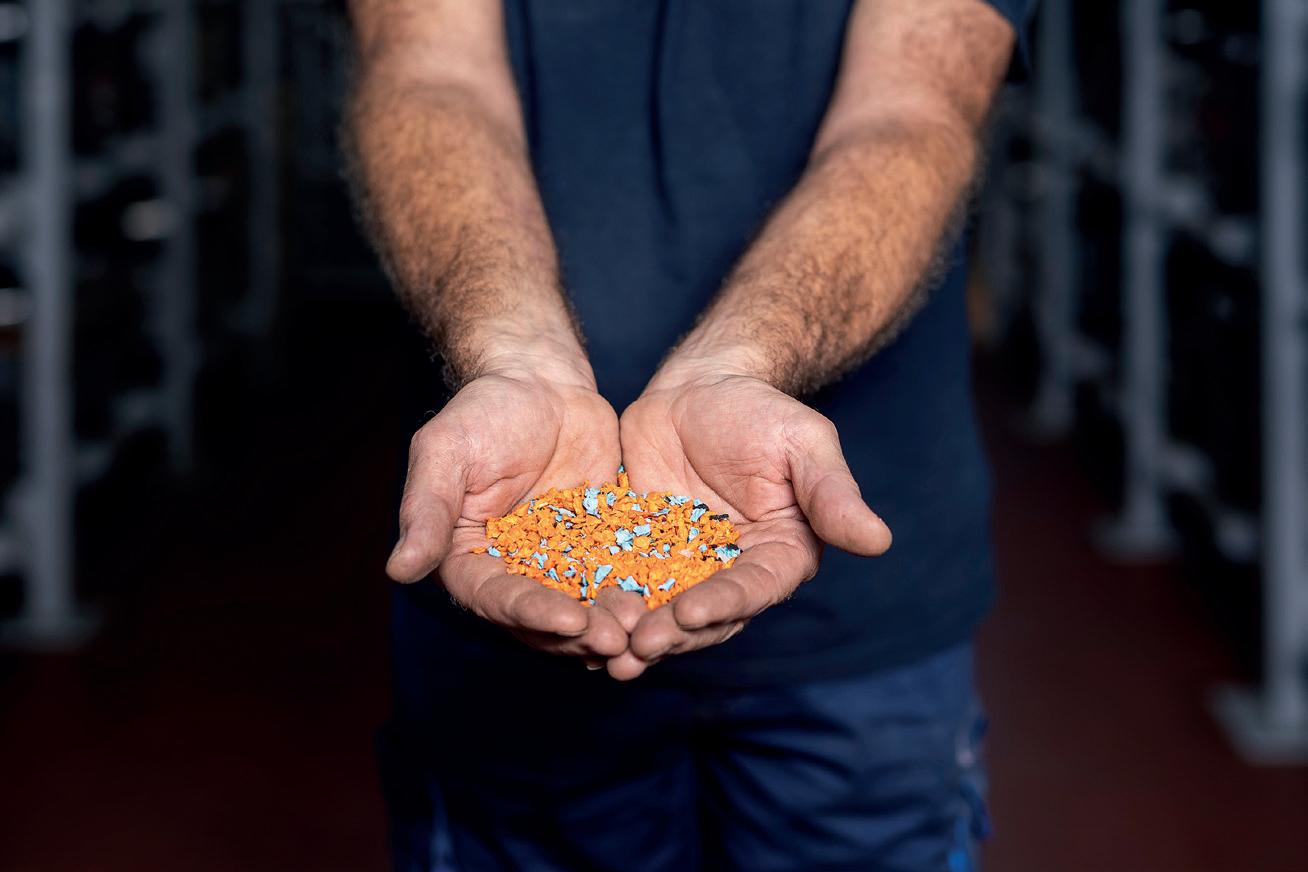 BY MARTA MANZONI TO TIZIANO GIORDANO E SANDRO PARISOTTO
BY MARTA MANZONI TO TIZIANO GIORDANO E SANDRO PARISOTTO
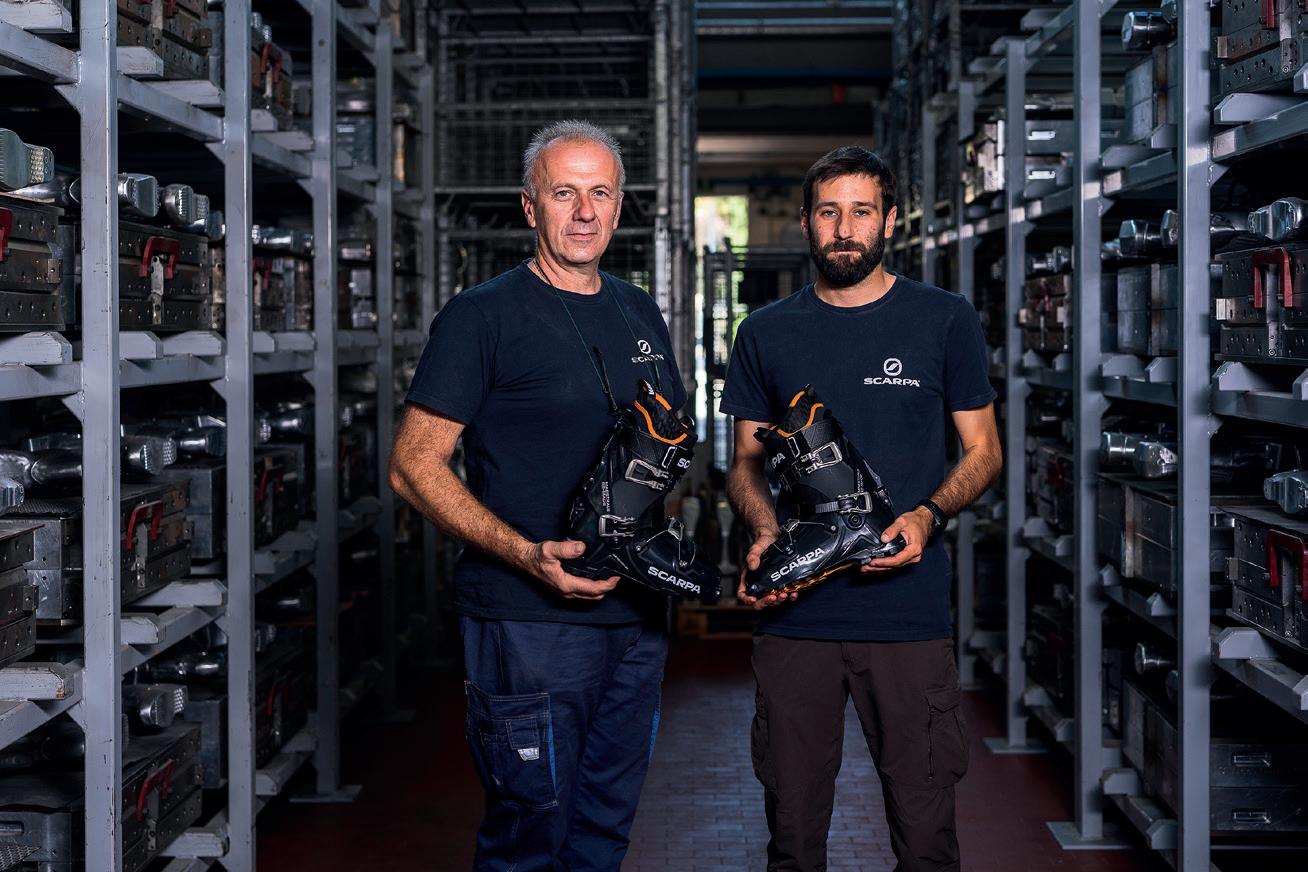
35
THE PILL PRODUCTS
BY MARTA MANZONI TO TIZIANO GIORDANO E SANDRO PARISOTTO
from consumers, subsequently the footwear collected will enter a virtuous recycling system and will lead to the creation of as many pairs of new footwear, with a range of use of recycled material in the new model between 50 and 70%. Thanks to this process, the aim is to reduce, compared to standard processes, 52.4% of greenhouse gases, 50% of chemical substances, 65% of water consumption, 54.5% of energy.
How does the shoe recycling process take place? Can all parts of a shoe be recycled? T.G. The process will be based on the selective dissolution of the leather by hydrolysis and the resulting liquid will then be used to tan new leather without the addition of chemicals. The production of recycled leather will be based on the Evolo process which currently allows reaching up to 20% recycled content at an industrial level. Specific attention will then be dedicated to the management of pre-consumer rubber waste generated during the shoe parts cutting process.
Are there any ecological soles? T.G. We can say that even for soles it is possible to have great attention in order to obtain a reduction of the impacts, reducing waste and reusing it for other processes. With the Re-Shoes project, we reuse production waste for the tread but also as a midsole filler.
When will sustainability be within everyone's reach? Sandro Parisotto: I believe that today's consumers are willing to spend a little more to buy sustainable products. Undoubtedly, products made with sustainable processes and materials may have a higher starting cost but often last longer and in the long run allow for considerable savings. In any case, I believe that in the future the increase in demand for these products will contribute to the decrease in the cost of production, and therefore in the final purchase price.
What are the highlights of SCARPA's Green Manifesto in terms of research and development? T.G. Green Manifesto is the program that sets out the company's sustainable principles, making them concrete in new initiatives dedicated to people, energy saving but also the development of products with a lower environmental impact but which maintain high performance and durability.
How much turnover does SCARPA invest each year in projects related to sustainability? S.P. Sustainability is not simply an item or a project to which a certain budget can be allocated, but one of the cornerstones on which SCARPA's activity revolves around, therefore it would be limiting to quantify this commitment. The Green Manifesto, launched at the beginning of 2021, represented a fundamental cornerstone as it allowed us to write the company's sustainable principles "in black and white" to put them into practice in new initiatives, aimed at aligning SCARPA's business with the best international standards.
This year the brand has launched a 12 million euro investment plan for business development with a particular focus on sustainability. What other innovations is the brand focusing on for the future? S.P. Every year we file 4 European patent applications and invest 4/5% of turnover in research and development. It is precisely on this aspect that we are making the greatest efforts, to get to market increasingly less polluting and impactful footwear at the end of their life, provided they are always performing.
How to help the end user to recognize between truly sustainable projects and greenwashing? T.G. Today "being green" is very fashionable, some companies think that it is enough to pretend to demonstrate an interest in the environment and
in the planet to gain points in reputation and corporate image. It's not always easy to understand when it comes to greenwashing, surely there are signs that can help the user, such as when significant information or data that would support what is stated in the advertising message are not provided, sometimes information and data are given declaring them certified when instead they are not recognized by accredited and authoritative bodies, or individual features of the advertised products are emphasised, considering them sufficient to classify them as products, other times the indications about the product are so generic that their meaning can be misunderstood by consumers, false labels or labels containing counterfeit words or certifications are inserted. It is necessary to verify the presence of certified environmental management systems, such as EMAS and ISO 14001 standards, but also product certifications such as GRS, or Global Recycled Standard as regards those who deal with recycled materials. These marking and labeling tools demonstrate companies' adherence to environmental protection and energy saving regimes.
36
Sustainability is not simply an item or a project to which a certain budget can be allocated, but one of the cornerstones on which SCARPA's activity revolves around, therefore it would be limiting to quantify this commitment.
THE PILL PRODUCTS
 BY MARTA MANZONI TO TIZIANO GIORDANO E SANDRO PARISOTTO
BY MARTA MANZONI TO TIZIANO GIORDANO E SANDRO PARISOTTO
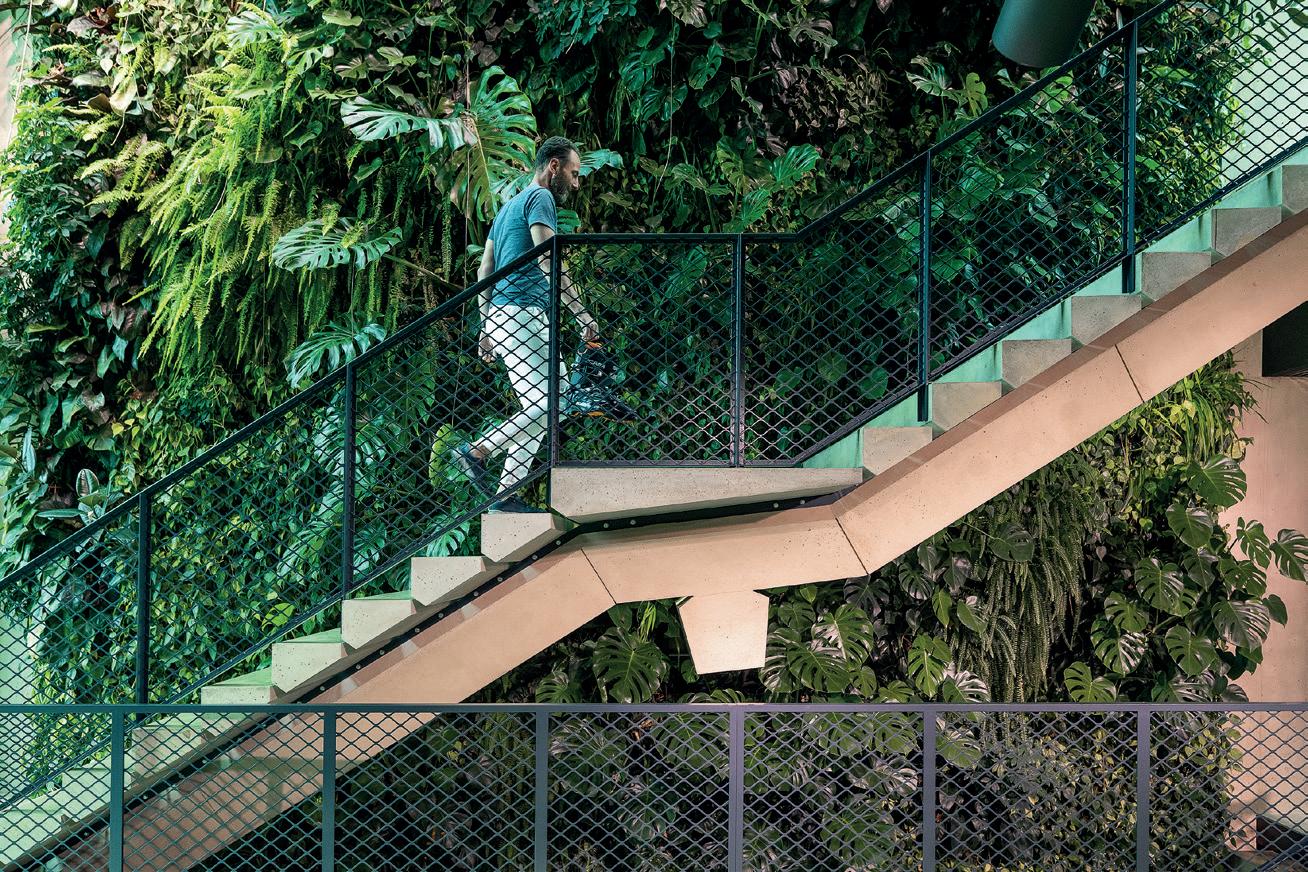
All of us powder lovers like to ride in our home spots, but at the same time we also share the desire to discover new places and new adventurous lines that present the best possible snow conditions. This is where the 3D maps of Fatmap come into play, the app that allows you to explore areas you have never touched, in zero time and from your phone or laptop. Do you have a free day that you want to spend on skis? Just scroll the map for inspiration until you find some spots that look promising. The next step will be to see what those trails look like from the start of the hike to the highest point and then evaluate how to get back to the starting point, all quickly and easily via the map. When you select a route, a menu with a difficulty scale (easy, difficult, very difficult, extreme) is displayed. It is

THE PILL APP
BY SILVIA GALLIANI
also possible to know the degree of slope of the lines. Some questions to ask and which Fatmap can answer are: what's the approach like? Is there any particularly important or difficult terrain to consider? Where am I going to set the track? Where are my safe spots and exists? What does the avalanche bulletin say? These, and many others, are some questions that Fatmap will be able to solve through the use of topographic maps and terrain analysis. Once this first, important step has been overcome, it will be possible to establish an action plan, a precise route, and save it on your account so that you always have it under control on the day set for the excursion. It goes without saying that the final decisions regarding safety in
the mountains must always be taken in real time and in the field based on how the situation presents itself when you experience it, but surely you already have a plan and a clear image of what you will go tackling overhead can only make your day outdoors easier and more enjoyable.
By analyzing the data of the chosen route, it will also be possible to organize the day so that we can ski the chosen line at the exact time we want, in order to fully enjoy the mountain and its conditions. Once the main plan has been established (and perhaps also a backup plan that is always good to have on hand) you can download the map to the app to easily access it even offline in case the connection is bad or non-existent.
38
THE PILL APP
BY SILVIA GALLIANI
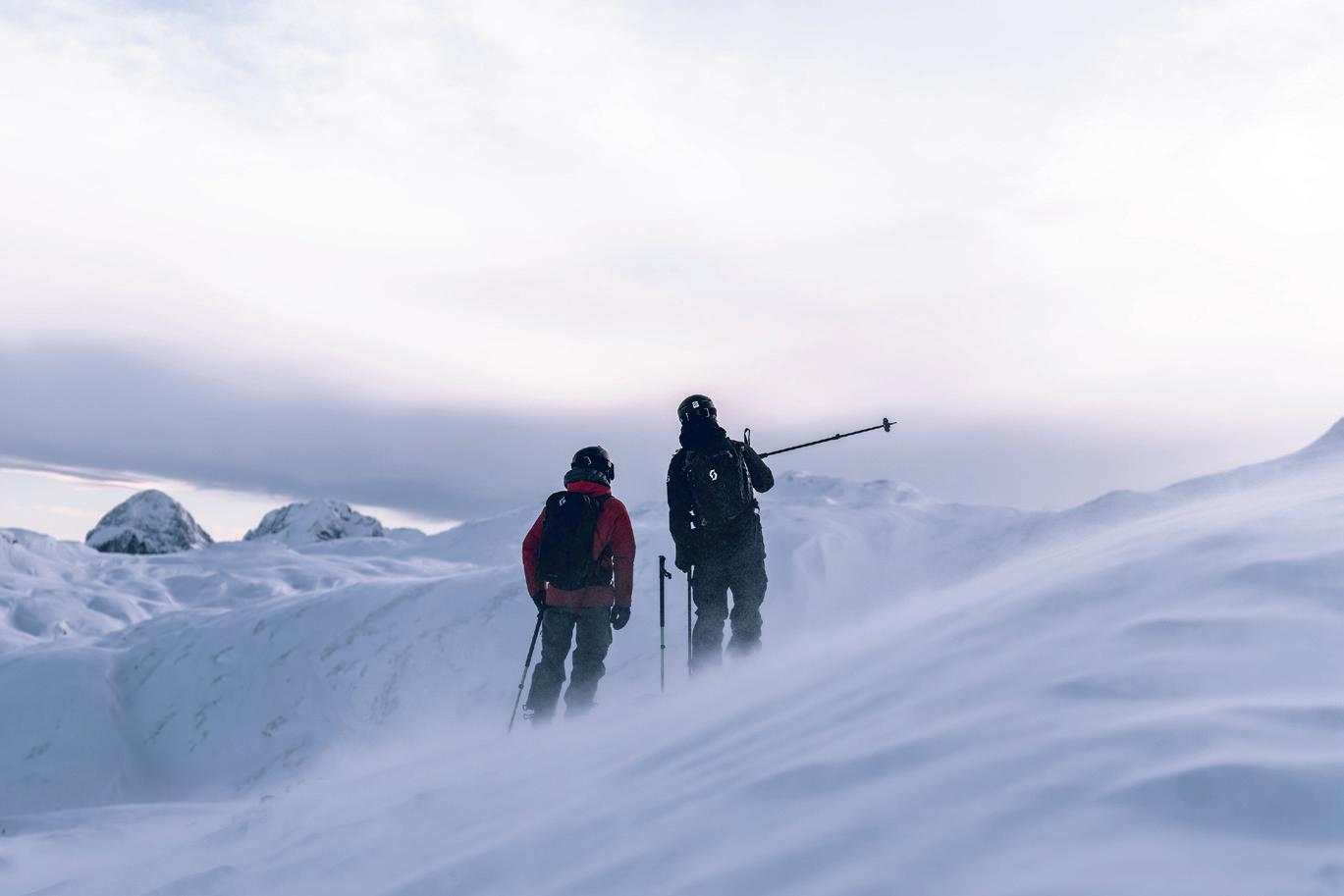
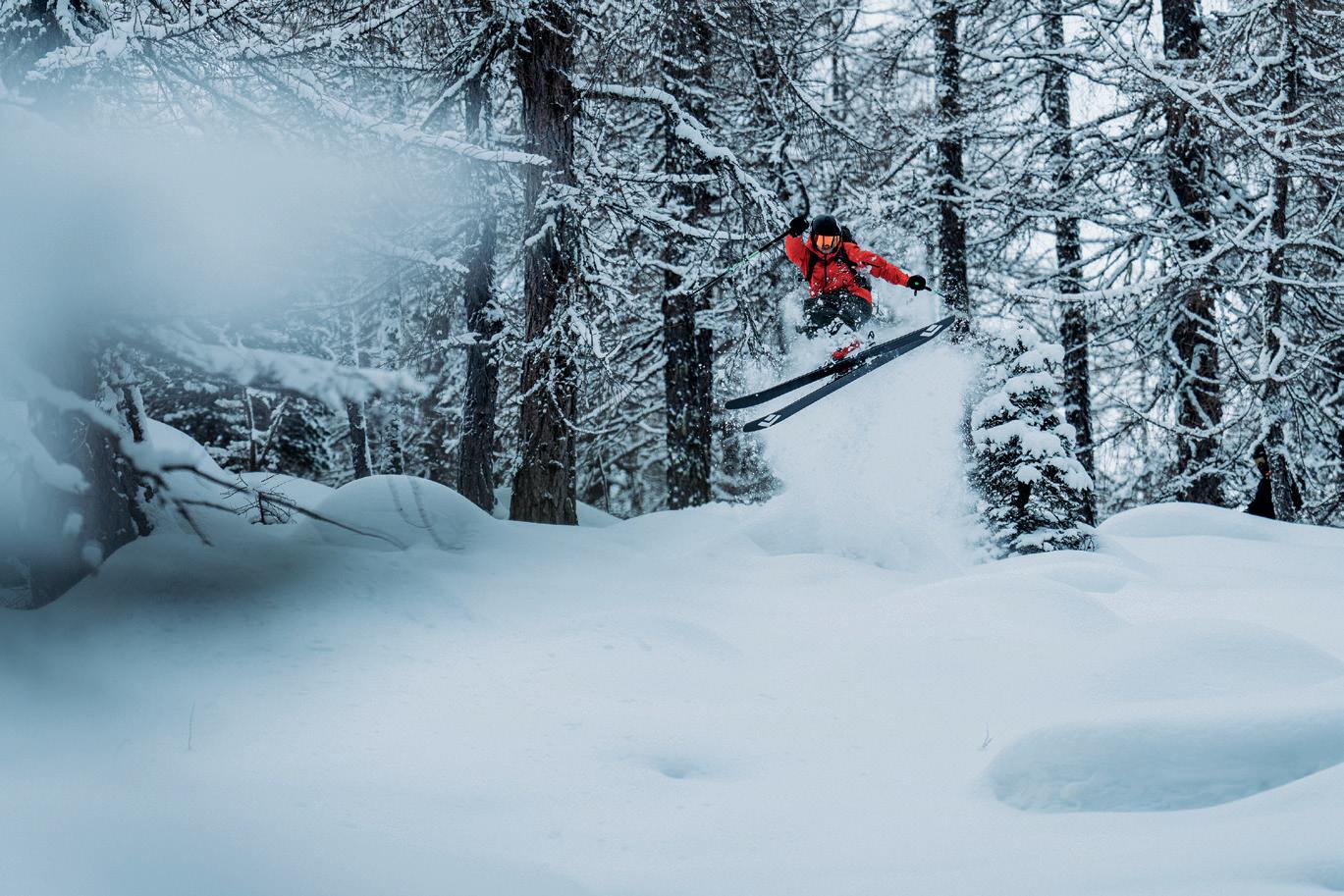
39
The Triple Line: uselessness and beauty
In German it’s "etwas für die Katz machen". It literally means “doing something for the cat”. A cat plays, has fun and enjoys us... And this action has no purpose other than to have fun. It is a something that is often also addressed to the history of mountaineering: the reason that drives people to do what they do. Today we often go in search of the perfect shot, the photo that will get millions of likes, views, fame. Being able to make a job out of the mountains and sports thanks to the media attention is something that has been the turning point for many athletes, professionals and enthusiasts, but there are those who wonder if this hasn't shifted the focus a bit from what is important, the passion.
Samuel Ortlieb (Sämi) is a Swiss skier with a very interesting artistic vision. The interaction between skier and terrain is something that fascinates him and that's why he always succeeds very well in his projects. But people like him do things because it's what they like to do. In order to achieve worldwide fame with a clip and some photos, he organized the whole thing just the previous night by asking a photographer “Hey, what are you doing tomorrow? We leave at 5am.” All that he had prepared and planned was the safety and timing to succeed in the action rather than the reportage. To someone like this, if you ask him what is the most beautiful thing the project has left him, he will answers:
BY LISA MISCONEL
“The best thing was to be there for that little adventure that I have wanted to complete for a long time together with my friends. And the kebab we had after we got back was delicious.” Two elements, being present, and being back home together which are extremely simple but are also the true essence of living in the mountains.
We had a chat with Ruedi Flück, the photographer who took part and immortalized the triple line and who, together with Sämi, told us some background stories and curiosities about that day.
March 21st. 2021. The idea had crept into Sämi for some time now. His brother David had told him about a line that started from a picturesque and interesting mountain, although not the highest one. Three canals and three skiers who ski them simultaneously, a scenario as simple as crazy. A first spring attempt had failed the year before, but that day the conditions finally seemed perfect. The team consisted of him, two friends and local legends, Domi Rhyner and Janic Cathomen, snowboarder Micha Schölkopf and photographer Ruedi Flück. The place? It will remain secret. It's somewhere in Glarnerland, eastern Switzerland. We know that it takes a couple of hours to approach it and that it is not a peak you would choose for ski mountaineering, unless you are Sämi and have a particular propensity for looking for unique natural structures to interact with.
What happened?
Ruedi: We met at 5am. I had no idea what we were going to do but I know Sämi well enough to be sure that when he says he has a good idea, it will turn out to be a nice one. We left so early because the approach was very long and the hours of light in that place are few, consequently the time window in which we should have acted was two, three hours. We arrived there at 9 and after
making sure that the avalanche situation was safe, the skiers set off on the ascent, each of them along the couloir from which they would then descend. They could not see each other and the only contact was through their voice that was transmitted over the radio or simply by just shouting to each other from the channels. The only way up was from the front part, as there was a vertical wall on the rear one. Little curiosity: snowboarder Micha went up to film everything with the drone and then came down alone on the right channel when the filming was over, so if you pay attention you can see him at the top of the right channel while he films and waits for his turn .
It seems impossible that you managed to bring this adventure home in one go. What was the hardest thing?
Sämi: To understand when to go for it. Wait for the right snow. Be patient and wait for everything to be in the perfect condition. I don't like to force things, especially when it comes to important lines, I don't like playing with mine and other people’s lives.
Ruedi: The timing and the circumstances. You have to be a little lucky and you have to find the perfect day which is something difficult to plan and predict, it just has to happen. As far as the photographic part is concerned, we were really lucky and all the evaluations and choices made proved to be effective.
40
THE PILL STORIES
To understand when to go for it. Wait for the right snow. Be patient and wait for everything to be in the perfect condition.
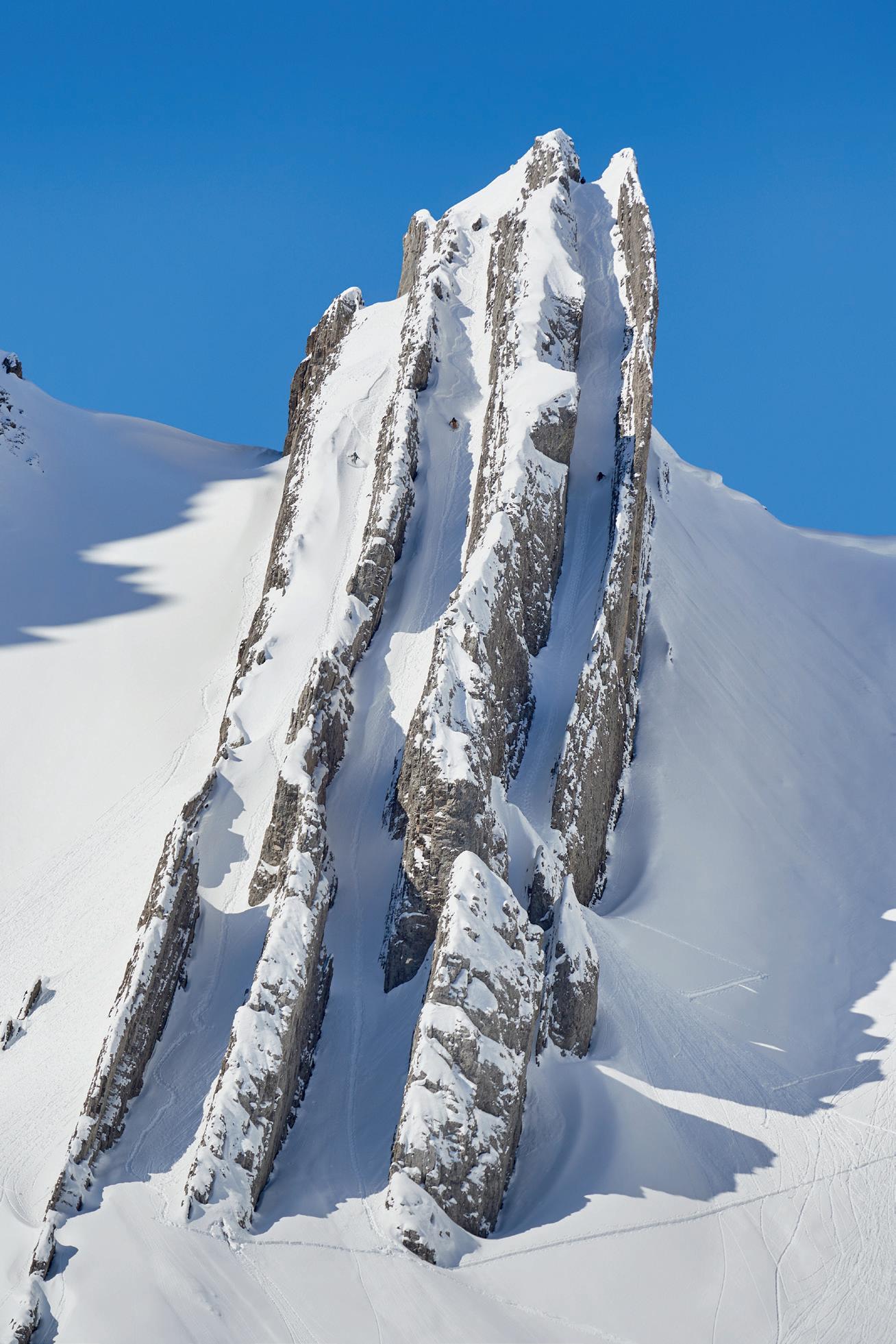
THE PILL STORIES
BY EVA TOSCHI PHOTOS BARTEK PAWLIKOWSKI
Doo Sar A Karakoram Ski Expedition

Two friends, two great mountains and two ski descents: this is the basic recipe of Doo Sar, which is then improved with all the (spicy) ingredients that the two Polish mountaineers encounter along their journey.
In a present where it seems that everything has been said, everything has been done, there is still room for exploration? Where do you have to go and what do you have to do to meet the unknown? This is the question with which the Red Bull documentary “Doo Sar” begins, which takes us on an expedition with Andrzej Bargiel and Jedrek Baranowski in the remote mountains of Karakoram. Andrzej and Jedrek's ambitious projects are supported and documented by a close-knit team made up of filmmaker and drone pilot Jakub Gzela, Darek Zaluski and photographer Bartlomiej Pawlikowski. The group arrived in Pakistan during spring and the impact with the post-pandemic reality was immediately very strong. From the isolation dictated by health needs, the contrast with the South Asian way of life was disorienting. It was nice, finally, to see people around without wearing masks, recognize faces, collide with smiles. Preparations for their first goal began: skiing the still untouched Yawash Sar II Peak, a 6000m
high mountain in the Ghidims-Dur Valley. Locals didn’t understand that they were there to ski. It seemed so strange, trying so hard without a "reason". But the reason, we know it, is always the same: to come face to face with one's limits, with one's fears, to get to know each other, to grow. The approach to the mountain lasted several days, during which the Polish team established a wonderful relationship with the porters, who,
even if tired, took advantage of any quiet moment to learn to ski. It is no coincidence that Yawash Sar II has not yet been climbed: getting there costs a lot of effort. In a moment of great crisis for the whole team it was, nature itself that gave them a boost, a motivation: footprints of the snow leopard appeared , which led them forward, in all directions. But let's get to the point: the mountain of dreams revealeditself and the fun part
42 THE PILL STORIES
BY EVA TOSCHI PHOTOS BARTEK PAWLIKOWSKI
finally began. Andrej and Jedrek started climbing it, but after a while the latter, who has less experience at such heights,, had to give up. The two kept in touch via radio and Andrej, who, let's remember, accomplished the first descent of K2 on skis in 2019, continued his climb towards the top. Andrzej Bargiel is the first to climb and ski Yawash Sar II, with only a few abseils from the summit due to the ice encountered on the summit. The two friends rejoined halfway up the wall and skied together to the base of the mountain. The success of the expedition, which is a team success which also includes the porters, was celebrated with a football match: Pakistan versus Poland. The result? We still don’t know. The second goal of the trip was Laila Peak, another 6000m high mountain this time already skied but no less stunning which is located in the Hushe Valley. If Yawash Sar II represented knowing how to stop, recognizing one's limits and letting those who are able to fly, Laila Peak and its ascent represented loyalty to the roped party, waiting, succeeding together. In fact, once again Jedrek faced a crisis due to the altitude, Andrzej stopped to wait for him and motivate him. They reached the top together. Due to the conditions they were forced to leave their skis 150 meters from the summit but once recovered, they enjoyed a beautiful ski run on spring snow, very different from the one encountered on Yawash Sar II. The perfect way to conclude an expedition, a life experience, which not only left its mark because it entered the history of mountaineering. Because, deep down, and maybe not even that deep down, it doesn't matter if a peak has already been climbed, or a valley already explored: the unknown is what we meet within us. It's just that sometimes we have to go a long way from home, to remote places, to find out.
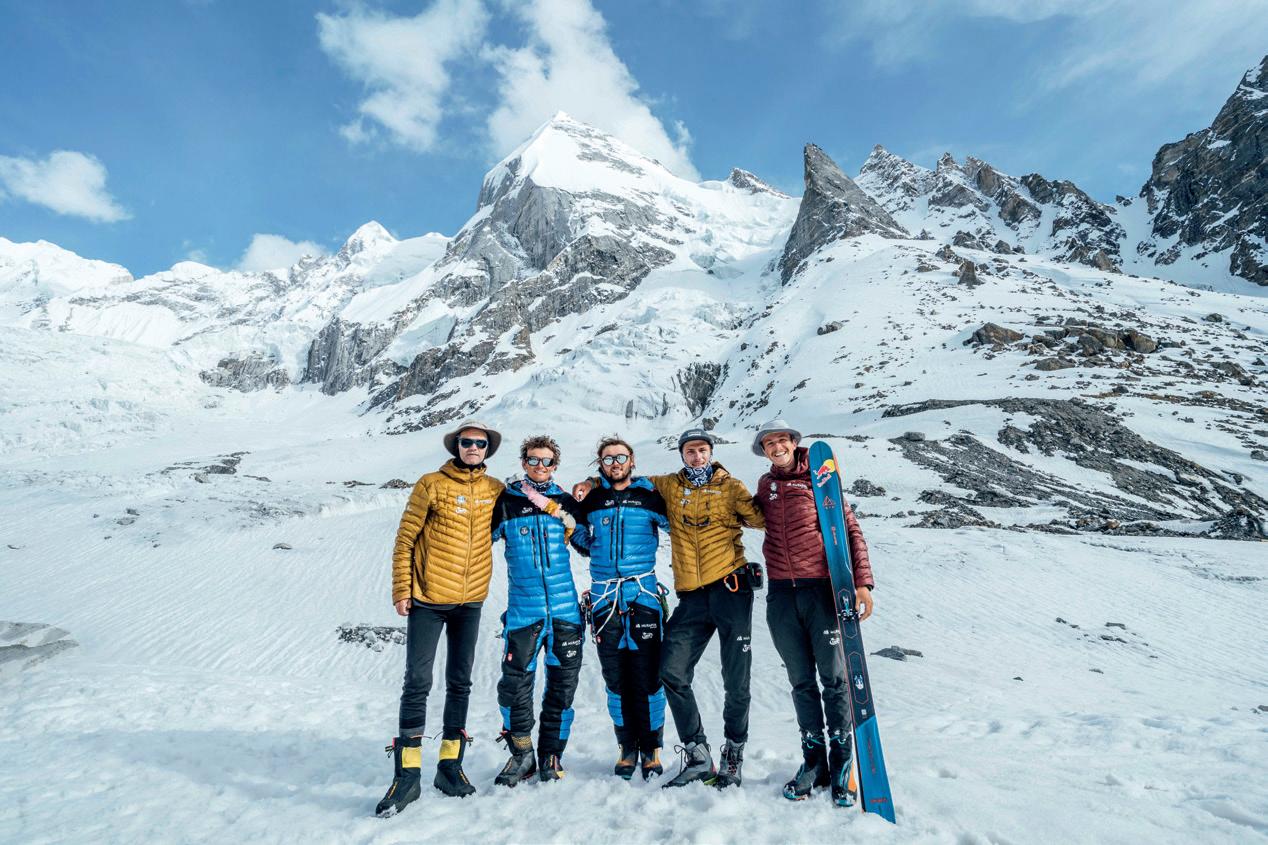

43
THE PILL STORIES
BY LUDOVICA SACCO
Surviving a 4-meter burial
Every now and then even the most mountain experts encounter dangerous situations, often different from those they usually prepare for. Situations that require not only huge experience, a clear mind and maximum attention, but also a great spirit of improvisation.

And that's exactly what happened to Tim Banfield, ice climbing photographer, and his two adventure companions and climbers Michelle Kadatz and Maia Schumacher. We are talking about an impossible rescue, told in the third episode of the short series called “Mammut Aspects | Stories from Avalanche Terrain” on Mammut’s YouTube channel and in an interview Alex Phillips did with Tim Banfield on mammut.com.
But let's start from the beginning. It's a spring day like any other and the three decide to explore new routes, an opportunity for Tim to take some pictures of his friends while they are ice climbing. However, no one expects the danger they will face. The first mistake is underestimating the warning signs of hot temperatures and the small details of avalanche forecasts. Tim, Michelle and Maia still set off to explore with their backcountry skis on their feet, until a huge slab of snow breaks off, hitting Michelle like a wave of gruesome dimensions.
Four meters. Four meters of snow buried the climber, leaving the possibility of survival almost below zero. Surely those of you who read us know this very well: the probability of being saved under two meters of snow is about 3%, let alone under four meters. At that damned moment, the ordeal begins. Tim uses his A.R.T.VA to find his friend trying to stay as lucid as possible but he slips and falls during the search: "I can't get hurt" he thinks. “Even if I get a slight injury, Michelle's chances of survival would become less and less because I'd be even slower in using the shovel.”
A roof of 4 meters of snow above your head is incredibly dangerous, to get out of it you would need coordination of the rescuers and several arms to be able to take turns of digging and to save energy. But there isn't enough time. Tim and Maia must quickly reach Michelle, without the hole collapsing on them. After a meter of digging, the two build a landing pad for the snow to come out of, with Tim digging downwards and Maia shoveling the snow further out. There is fear of the enormous risk of secondary avalanches and hypothermia but they cannot stop. Not yet.
44
They go on digging underfoot until they create an airway for their friend, covering her head with a sort of tent so that no more snow gets in her face. The last 50-100cm are the hardest, so Tim literally shovels upside down to throw the snow out even faster. With the necessary precautions on their body temperature, as soon as Tim and Maia reach Michelle, they give her their jackets to reduce the risk of hypothermia. Once Michelle is free, rescuers arrive by helicopter and reach the three to finally take them to safety.

An impossible rescue on paper, masterfully performed by people who know the mountain well. A story that makes us understand that experience and foresight are never too many and that we must never underestimate the power of nature.
After this adventure, Tim made some changes to his mountain must have list. An example is to vary and increase the communication devices to bring with him, precisely because during this bad experience the three had only one and both Tim and Maia didn't know how to use it and all this led to
losing precious time during the rescue. A good scare that shocked Michelle, Maia and Tim, leading the latter to share this story with guides and avalanche experts in order to raise awareness about rescue protocols and encourage them to be even more prepared when exploring the mountains.
A story of courage, enormous determination and a strong love for life ended in the best way. A story that shows us that miracles happen from time to time and that is people like these who make them happen.
45
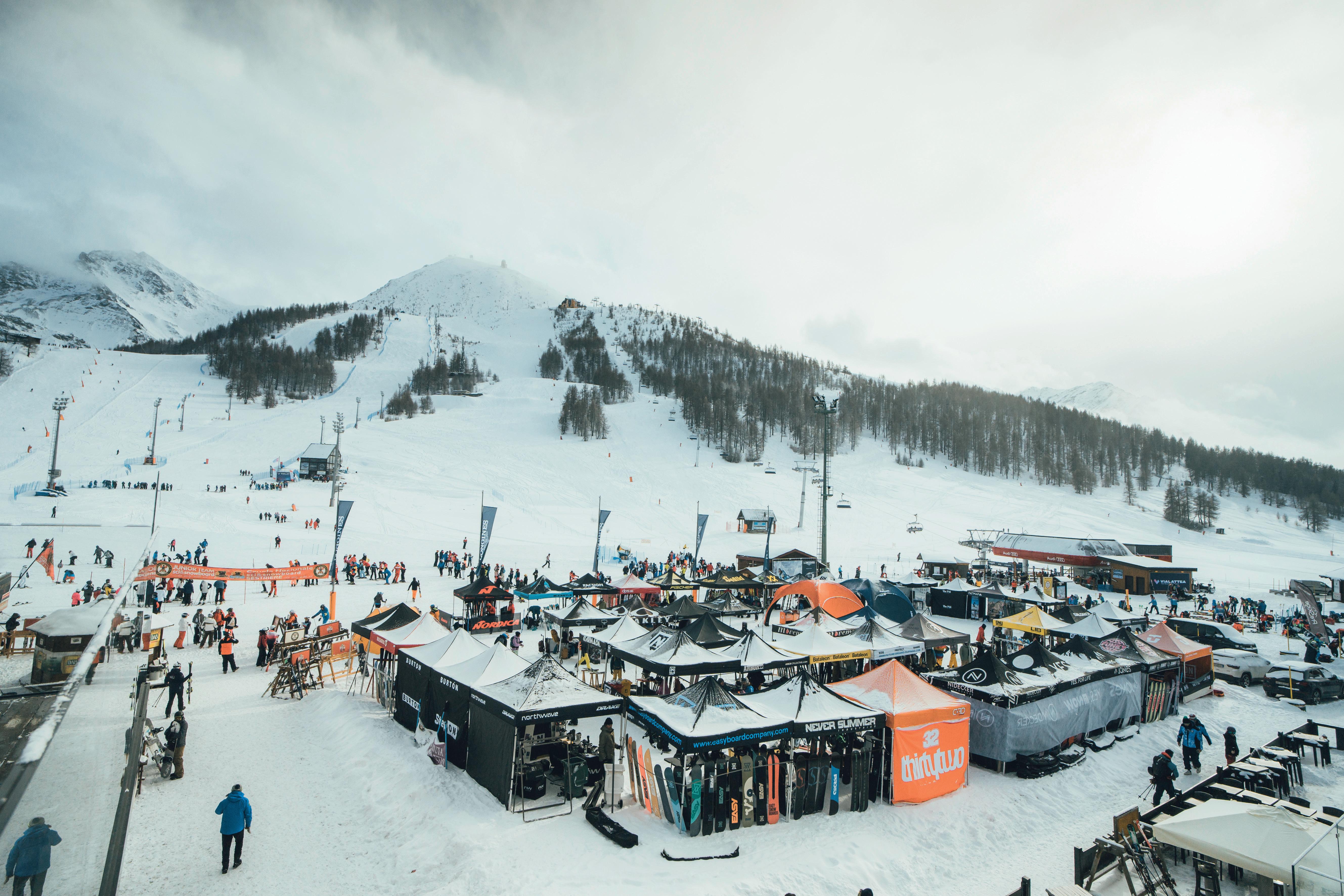
The Pill Base Camp Winter Edition 2023: Sestriere
 BY LUDOVICA SACCO
PHOTOS AMEDEO GARRI & GIAN LUCA VANZETTA
BY LUDOVICA SACCO
PHOTOS AMEDEO GARRI & GIAN LUCA VANZETTA
The Pill’s unconventional business camp for outdoor stores and brands.
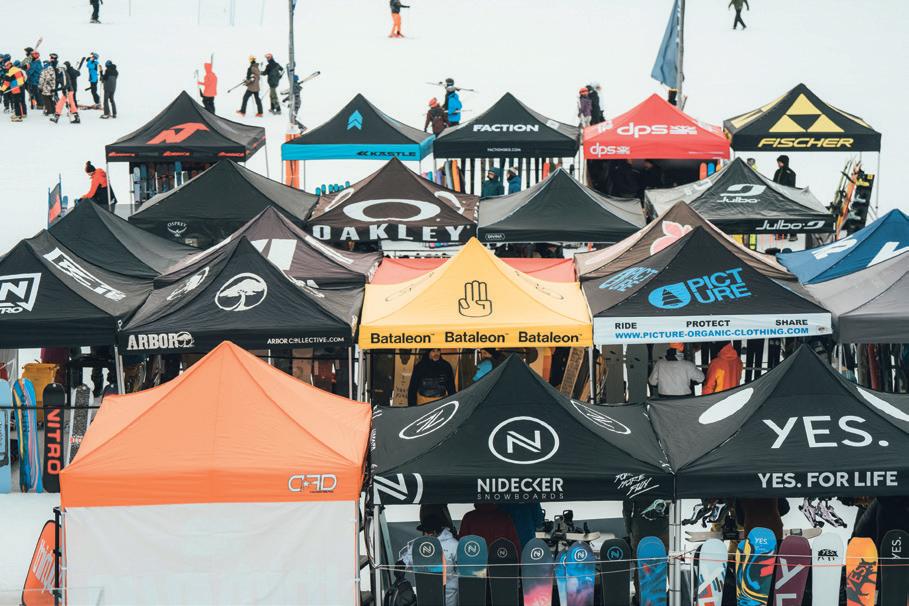
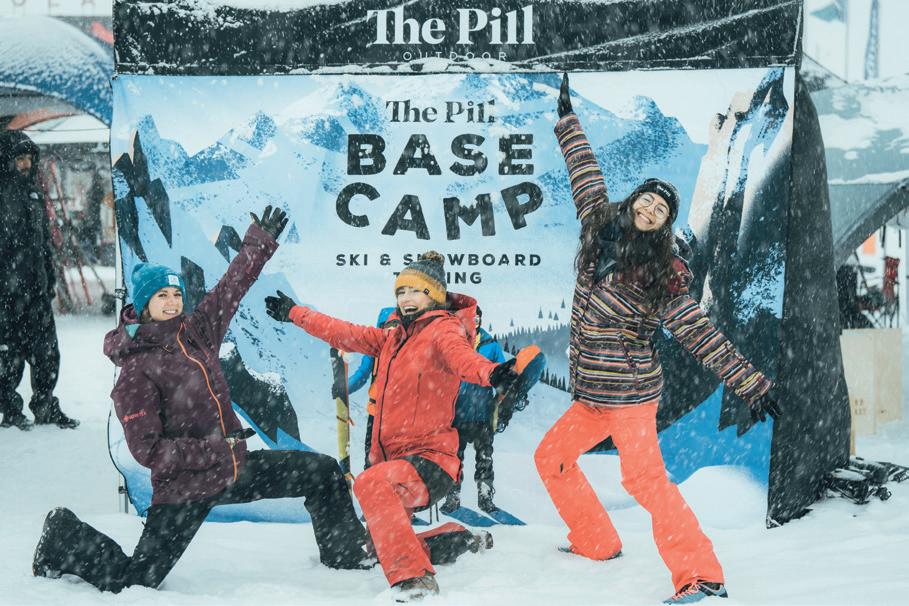
On Monday 16th and Tuesday 17th January 2023 the slopes of Sestriere welcomed more than 450 professionals at the third edition (more precisely the second one during winter season) of our event, The Pill Base Camp. Two days dedicated to product tests and presentations for next winter 2024. 208 Italian outdoor stores were able to meet with 61 brands to get to know and test the new products for next winter season.
For 304 shopkeepers, the village proved to be a real base camp where they could stop off to pick up new tools to test including skis, snowboards, bindings, boots, goggles, clothing, backpacks and accessories. Variable weather made of snow and sun accompanied us throughout the event, with snowfalls that provide great fun on powder in order to try out and test the Winter 2024 new products in ideal conditions.
Not only tests but also presentations, experiences and a dinner at I.GLOO, the place located right next to the Base Camp. Here a series of very interesting indoor events took place, including Lorenzo Alesi and Alice Linari who shared their movie "On Our Way" in collaboration with Blizzard-Tecnica. After watching the short film and a small Q&A with the audience, the Web & E-commerce expert Marco Sepertino took the stage and directed the talk "Social & Paid Traffic: better friends than enemies" where he discussed topics such as advantages and disadvantages
of a physical store, how to position yourself and differentiate yourself on the web, how to use social media as a business and much more.
The moments of experience and information then gave way to relaxation and general fun also thanks to Monkey Sound, a rock trio that kicked off the dinner, followed by a DJ set that blew up the venue. Those who followed us on social media know what happened!
On Tuesday we started again like the previous day with tests, coffee breaks and discussions between buyers and
brands. At 7am some lucky selected shopkeepers had the opportunity to participate in the experience by Tecnica and Blizzard: a tour on skins carried out by an expert guide. Then breakfast at the refuge and off to draw downhill lines arriving at the Base Camp just in time for the opening of the village. At 4.30 pm, punctual as Swiss watches in anticipation of the closure of the slopes, of The Pill Base Camp there was nothing left but a square of smooth snow but which brings with it so many emotions and an infinite number of tested products and handshakes.
48
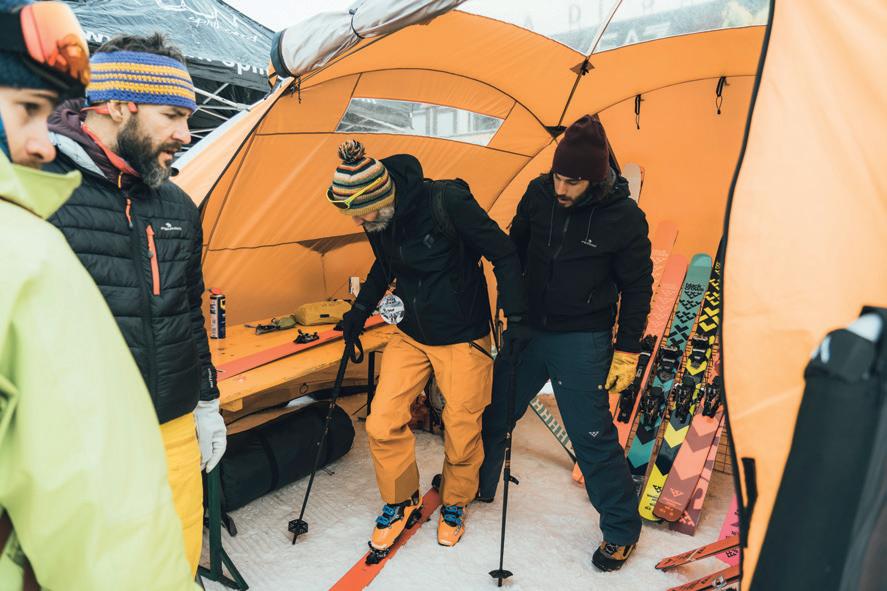
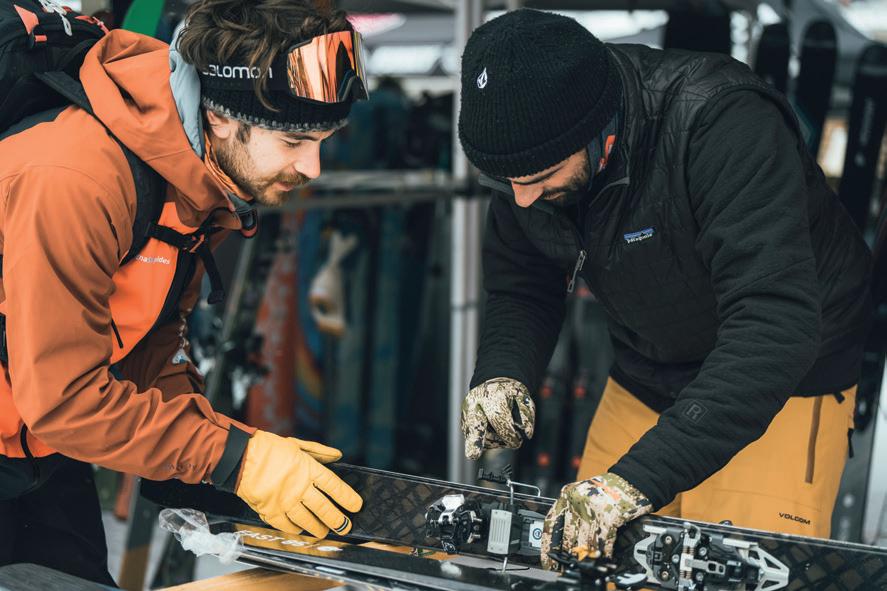

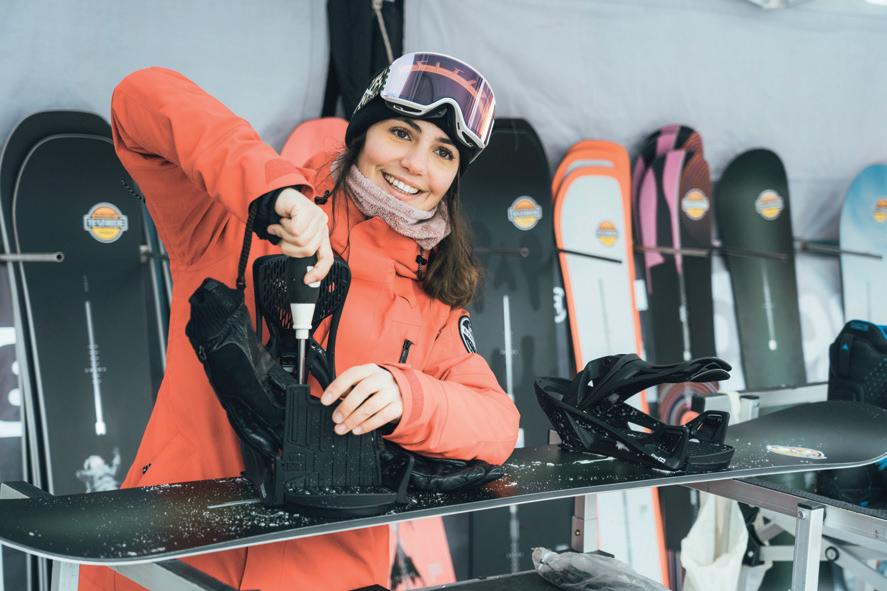

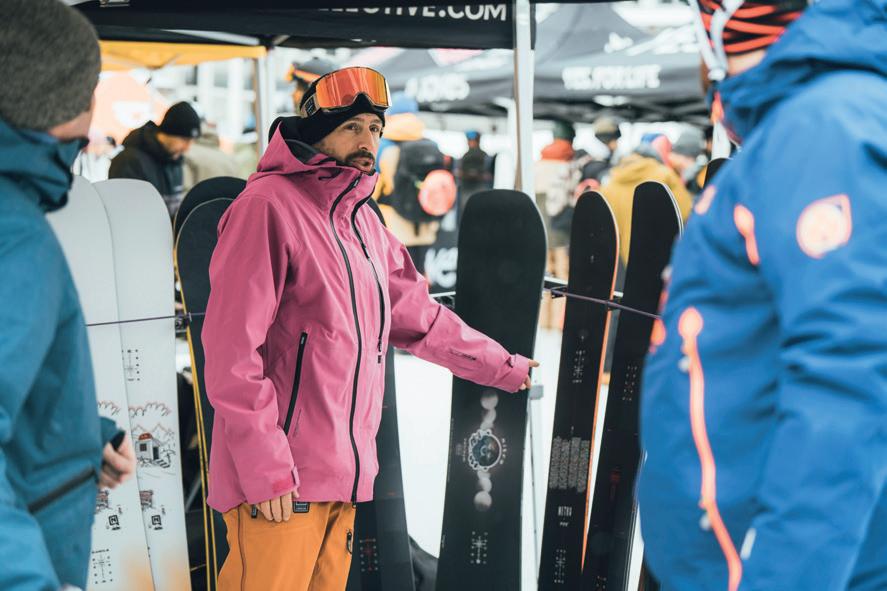
49
The numbers of this edition?
• 1230mq of outdoor village
• 61 brands
• 231 registered professionals (agents, agencies, media, influencers, brand representatives)
• 156 registered company names
• 208 registered stores
• 304 registered shopkeepers
• 11 ski testers of The Pill’s Outdoor Guide
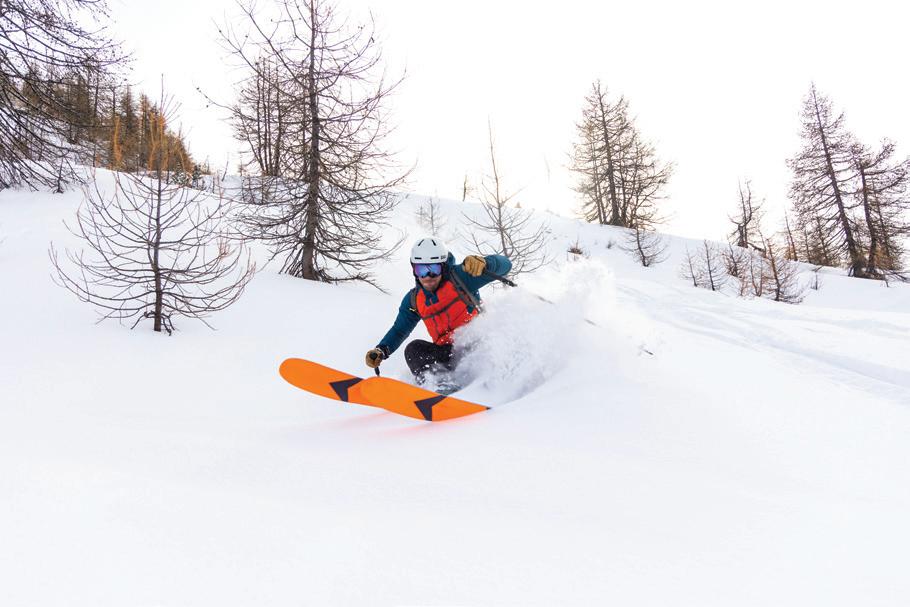
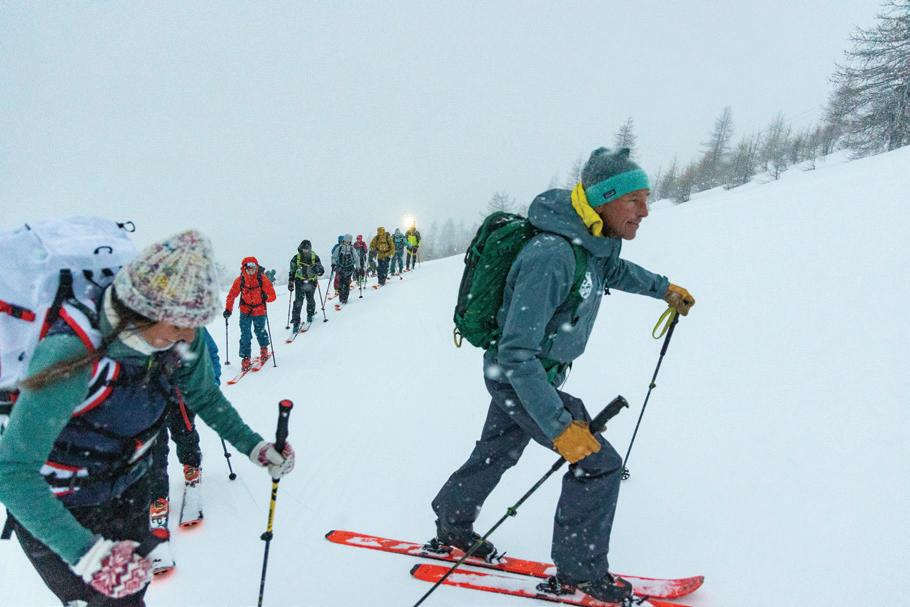

• 7 snowboard testers of The Pill’s Snowboard Guide

• 553 participating people
Save the date! Next The Pill Base Camp Winter? Monday 15th and Tuesday 16th January 2024. But don’t forget about The Pill Base Camp Summer (running & hiking) this June in Courmayeur.
Thanks to all the shopkeepers present and to the brands that made The Pill Base Camp possible. 32, Amplid, Anon, Arbor, Armada, Arva, Bataleon, Bent Metal, Black Crows, Blizzard, Borealis, Burton, Capita, Dalbello, Dragon, DPS, Drake, Dynastar, Easy, Elan, Faction, Fatmap, Ferrino, Fischer, Fix, Fristchi, Funky, Giro, Gnu, Grizzly, Hannah, Jones, Julbo, K2, Kästle, Lange, Lib Tech, Mammut, Marker, Movement, Never Summer, Nidecker, Nitro, Nordica, Northwave, Oakley, Osprey, Parbat, Picture, Plum, Flow, Ride, Rossignol, Tecnica, Treksa, Union, Völkl, Wanderer, Yes, Salomon e Stranda.
50
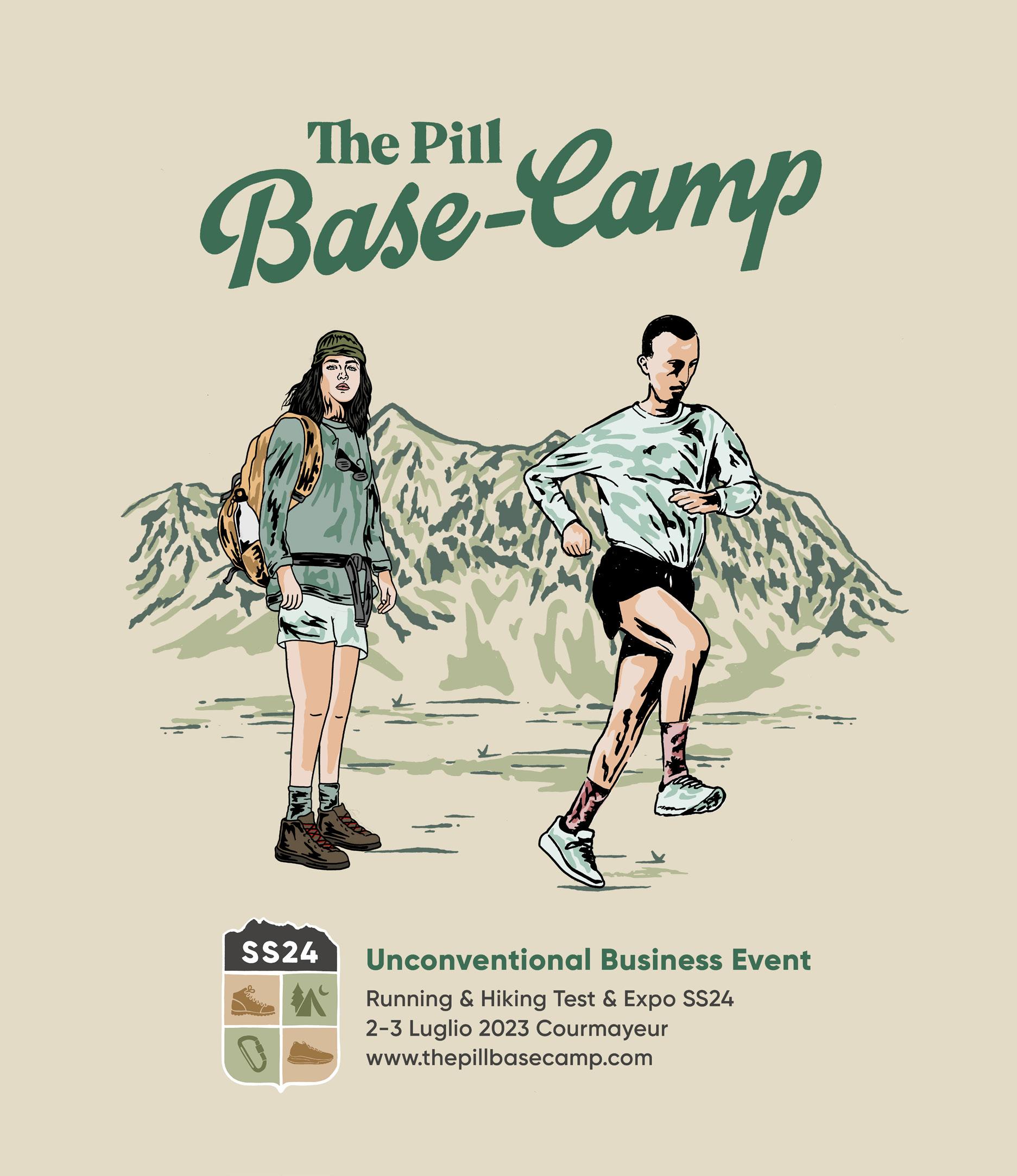
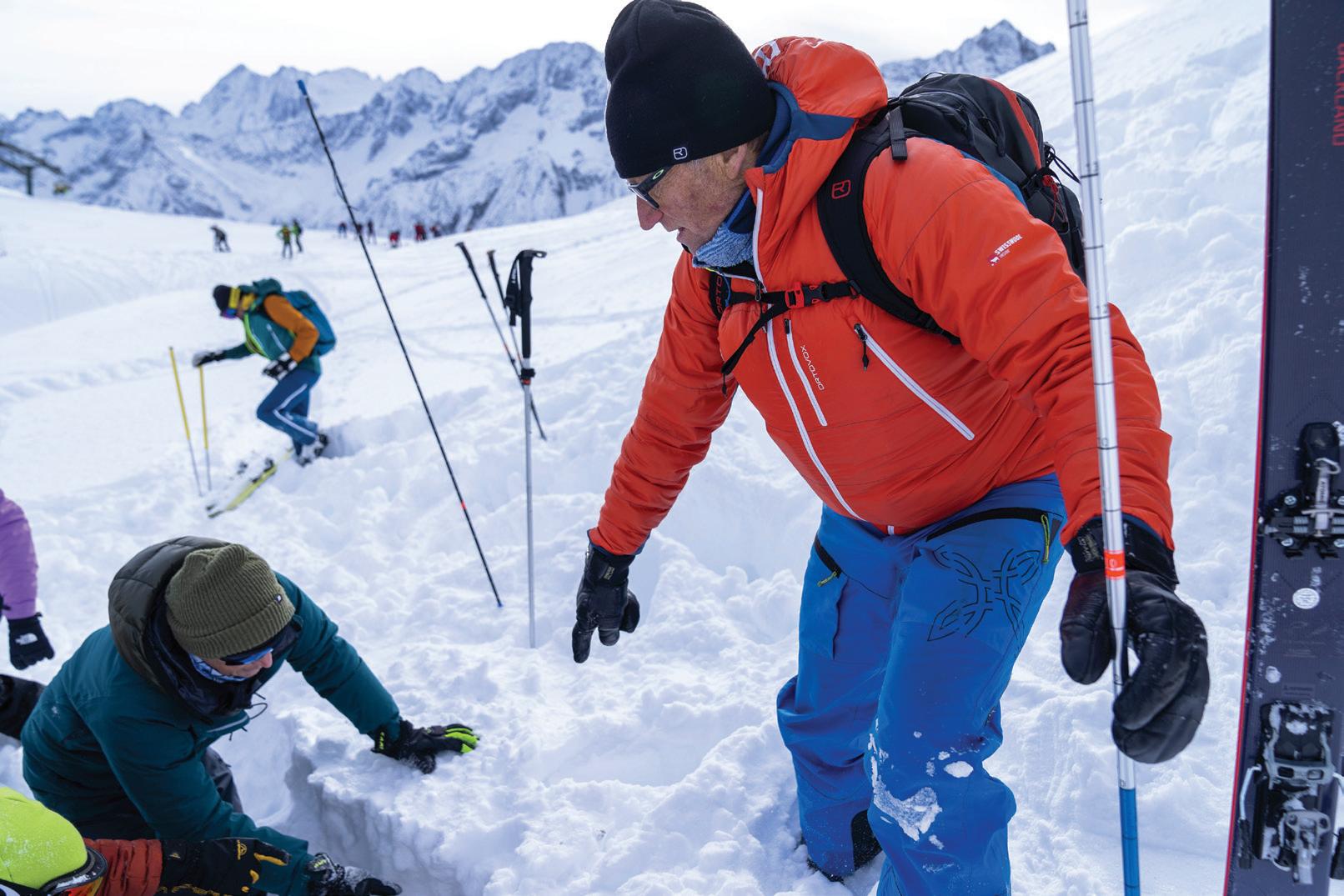
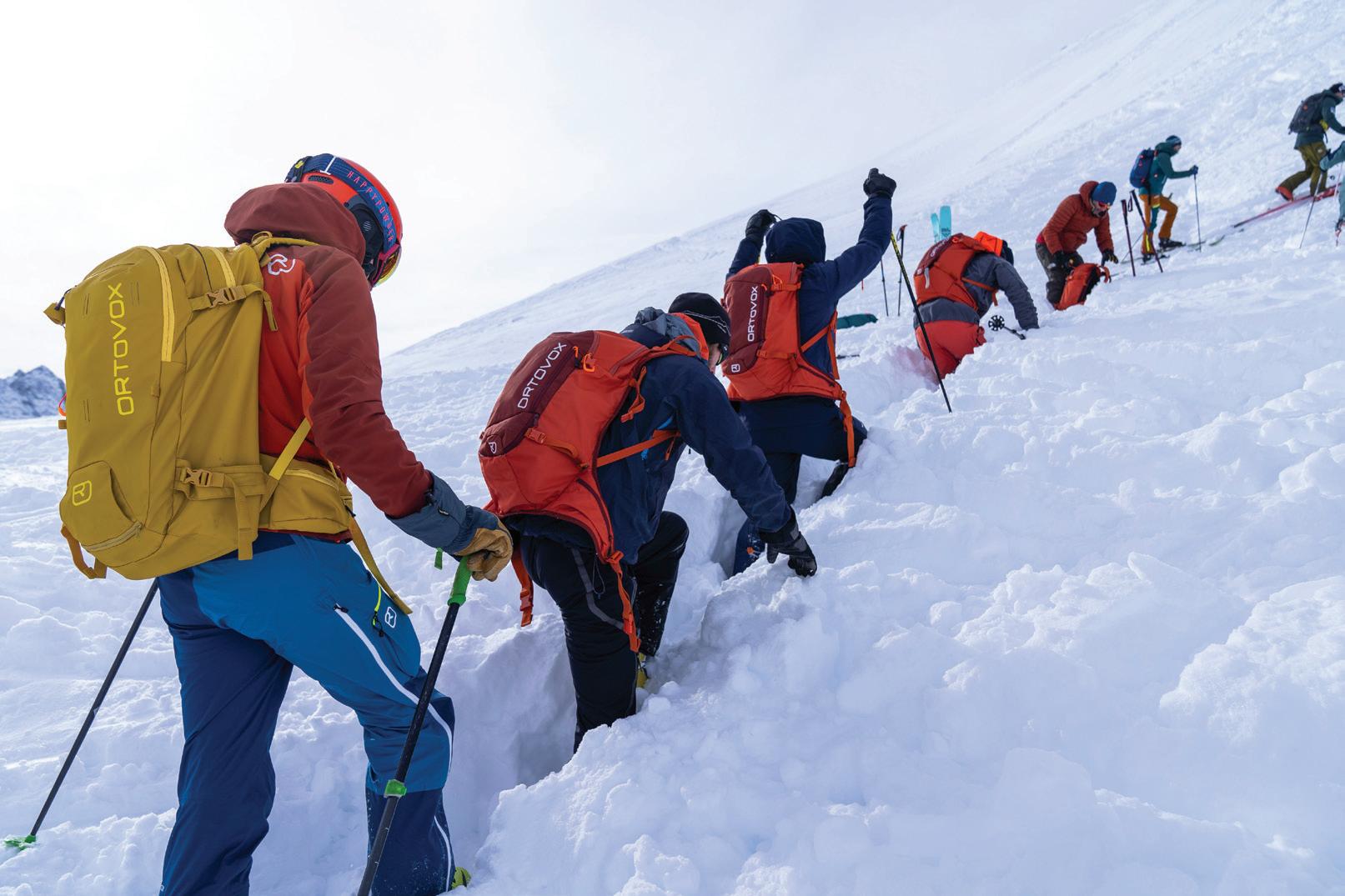
A matter of consciousness
BY LISA MISCONEL PHOTOS PIETRO BAGNARA
Because sometimes these words are wrapped up in a story made of wool called Ortovox, and it is then that they are transformed into concrete facts: physical, paper, digital. It is in this that’s the German company has decided to invest more to pursue something that goes far beyond marketing but rather, is intrinsic in its history... A history of wool and responsibility.
Ortovox was born in 1980 with the commitment to safety that distinguishes it and which it still carries on today. This company has three main focus points: safety, sustainability and the element of wool. Firstly, safety, a commitment that goes beyond the simple production of equipment but which aims to convey knowledge and awareness so that the quality of the products is not an end in itself. Sustainability is followed by 7 specialists within the company so that nothing is left to chance, in fact responsible choices and actions derive from a great awareness. The impact of each product is estimated and Ortovox aims to eliminate it in the near future.
Finally, the element of wool, present in the brand's garments since 1988. A material subject to the Ortovox Wool Promise, which does not compromise and which puts quality and responsibility first. Fair compensation is guaranteed to suppliers who must ensure certain standards with respect to the quality of the life of the sheep.
Take the more demanding route to educate people to experience the mountains with awareness and contribute to the growth of an attentive consumer. We are bombarded with adrenaline-pumping images of super skiers descending steep slopes at high speeds, record breaking, weather challenges, wow effect. But when it comes to preparing the backpack, or choosing the destination for a trip, videos and music that keep us dreamy are of little use. It takes courage and tenacity to concretely pursue the path of prevention. And also a certain passion.

Word to high altitude experts
It is no coincidence that those who represent this reality are people like Davide Fiorelli and Maurizio Zappa: guides, mountain rescuers and guide instructors, helicopter rescue technicians. The first is someone who has built his life around this type of activity to “close the circle", says Daniele. Maurizio, on the other hand, who was one of the founders of the National School of Alpine Rescue and among the first to give life to the helicopter rescue service, he trained the first rescuers, working to give rise to the first rescue bases, specifically, the one of Sondrio. Despite this huge background, Maurizio usually talks about awareness with a calm attitude.

53
Talking about safety and sustainability is something that many people do now. A theme that is almost boring, since it is almost always addressed in the same superficial way, with the same nursery rhymes. However, that's not always the case.
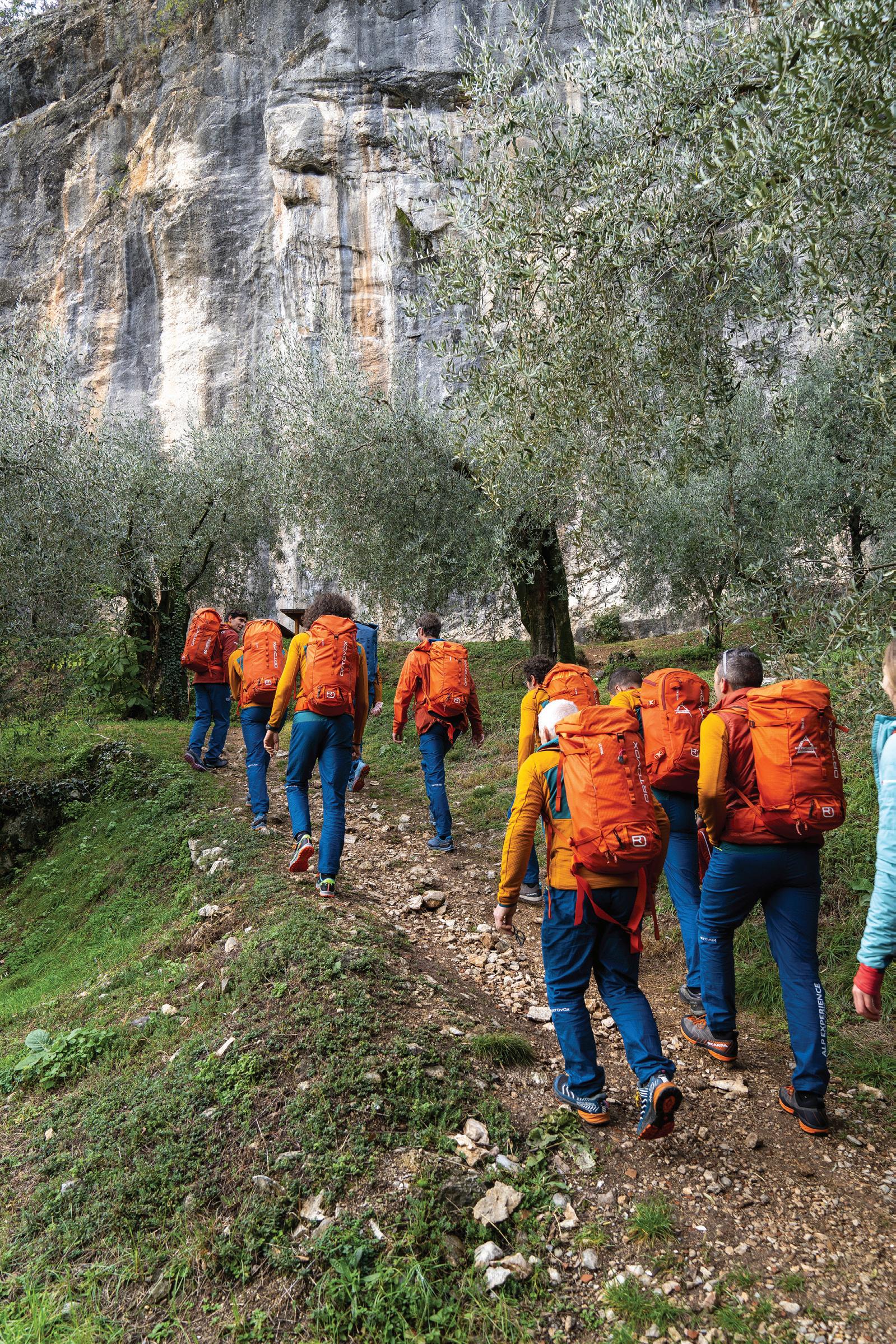

“To evaluate the situation, you need to have more or less solid foundations of knowledge, nivology, methods. But even an amateur, if he thinks straight, can manages to not to get into trouble. You know what they say, if you don't know that the lion is carnivorous, maybe you pet it."
From both of them it emerges that unfortunately a false belief has always been widespread: the one that says that if you have always gone to the mountains and nothing has ever happened, then this is synonymous with skill and knowledge. On the contrary, the only thing that can give you security is a solid foundation of knowledge and experience made up of correct assessments rather than lucky days. Guides exist for this: as well as to accompany, to educate.
Safety Academy, the road to prevention
Precisely with regard to the theme of education, here is where the guides come into play for the Ortovox Safety Academy: 95 dates, widely distributed locations and different levels in which you can take part both on snow and on rock.
“The spirit of the project, launched by Ortovox back in 2008, is to create a connection between the company and the consumer in which the professional becomes the means and tool to educate the enthusiast to a responsible approach to environmental activities” says Giovanni Pagnoncelli, Ortovox Marketing & Professional Manager.
In these camps it is possible to learn about snow and avalanches, to use equipment and gear correctly and effectively, to manage emergency situations and to develop observation and decision-making skills. In order to conduct these training courses in the best possible way, guides and company meet on several occasions, among which the most recent are those of the Ortovox Safety Academy Pro Team Meeting in Arco and the Safety Academy Pro Team & Press Meeting in Passo del Tonale. On these occasions the guides were able to consolidate their knowledge on the whole background of the products they use on a daily basis and on the philosophy behind every company choice and initiative.
“It is the discussion that makes everyone grow, not just the professionals.” “The value of days like the
meeting is that of sharing” says Maurizio and Daniele. In fact, in addition to the relationship with the company that supports and promotes them, dialogue with colleagues is essential for these figures. Colleagues who gather for these circumstances coming from all over central-northern Italy, from Piedmont to Trentino Alto Adige up to Emilia Romagna. For professionals of their level, meeting moments like the Pro Team Meeting are the best update, where, as Daniele says: "The more experiences go around (not to be confused with information, which is a very different thing) the more the baggage grows thanks to an update that is more experiential than technical.”

“Arco’s meeting included a bit of all of this with the ambitious goal, in just two days, of informing, sharing, creating groups, enthusiasm, motivation and a strong and solid relationship between the company and professionals by involving them in goals, values and messages of the company linked to the safety and protection of our mountains.” So wrote Giovanni Pagnoncelli at the end of the Arco meeting.
A few months later on the snow of Tonale, on a clear day with little wind, we were also involved and now we have the task of communicating these realities. After learning about the history, values and latest news on the brand's products, we were accompanied by the precious words and advice of the guides, each with an incredible story and baggage on their shoulders, up to 2000m where the training field awaited us. The importance of evaluating a trip, paying attention to details such as device battery and equipment checks. An extra pair of gloves can prove to be a life saver as an unloaded A.R.T.VA becomes fatal. The exercise led by the numerous professionals present culminated in a small lesson in snow science in the field by the snow specialist and meteorologist Gianluca Tognoni.
In addition to the Safety Academy, the company has also invested in projects such as Lab Snow, the digital version of face-to-face courses. It is a free interactive platform accessible from the official website. At the local level there are fixed and mobile training fields, check points and "Educational Trails" which will have one of the first applications in Montespluga in collaboration with Homeland. Finally, the much-neglected but ultimately essential paper support represented by the Guide Books, which aim to make this awareness accessible to anyone.
55
Ice Climbing Ecrins: La Sportiva and the value of belonging
BY
Proud. Grateful. Family. Emotions. Sharing. Inspiration. Passion.
We are not talking about performance or competition. From this edition of Ice Climbing Ecrins, La Sportiva athletes take home much more important memories and emotions and this is evident both in the words they choose to accompany their photos of the event and in the looks we saw during those icy days. In fact, the Trentino icon has chosen to get together for the Mountaineering Team Meeting during the ice climbing festival now in its 33rd edition so as to be able to participate in the related competitions and events at the same time. But there’s more!
It also wanted to open the doors to one of the most important moments for the company and its vision, the meeting, the product clinic and the field test. We all saw what happened the last
time athletes and brands gathered in the Sadole valley, at the end of the summer. Sharing, searching, merging. If there is one thing that makes the company truly unique (in addition to its shoes and boots, of course) it is the community. No matter the language, the country or the sport practiced, La Spo family brings together athletes from all over the world all with the same pride and sense of belonging.
In mid-January, almost everyone was in L'Argentière-la-Bessée (FR): from the king of ice and dry Jeff Mercier, to the icon Tamara Lunger, from the silent Fabian Buhl to the less silent François Cazzanelli. And then again there were Citros, Federica Mingolla and we could only talk about the history of climbing and mountaineering today by naming everyone present. We found ourselves in a characteristic place in the French Alps,
56
“There is one thing I have learned in all these years in the mountains, and it is that the most important element after passion is the partner. Whether it's a rope, life or, as in this case, sponsor. Values, attitudes and ideas must move in the same direction, only in this way magic is created. There is no superpower stronger than bonding with your partner.”
- TAMARA LUNGER
LISA MISCONEL PHOTOS FEDERICO MODICA

where the atmosphere was filled with chatter sometimes in English, French, Spanish or Italian. With laughter, hugs and looks. To make a group a team, it takes moments of informal sharing that lead everyone to feel at ease and express their thoughts, a necessary and fundamental element for the product clinic that would be held the next day.
In fact, two years ago, within its headquarters in Val di Fiemme, the story of the new G-Tech, the top-of-the-line model for the FW22 season began. The lightest mountaineering and ice climbing boot ever created that takes 200g per foot off the previous model, reaching a total of 620g. In addition to the athletes, a large part of the team from marketing to R&D came from the Dolomites in order to be present, test and discuss it. The day begins with an introduction by Francesco Delladio, the fourth generation of the family, who recalls how the relationship with athletes has always been the cornerstone of the development of new products and technologies for the company and the importance of the local background that represents Val di Fiemme. The word then passes to the members of the research and development team. They tell us that in order to obtain the perfect combination of lightness, warmth and technical performance, the team started from something existing, the liner of ski boots. With similar materials and construction but adapted to different needs, step by step with years of testing and improvements they have achieved what the R&D team has defined as the Formula 1 of boots. Able to accompany athletes and enthusiasts in various activities from approach, to mountaineering, to ice climbing in all lightness and guaranteeing warmth thanks to the external BOA. The same allows you to loosen the closure in moments of inactivity allowing the blood to flow freely. Athletes such as Fabian
Buhl and François Cazzanelli have actively participated in the design and creation of this product, primarily providing input and ideas and then testing it in the field in their activities, from ice climbing to mountaineering at 6000 meters high. They exchange opinions, express doubts and observe how children do with a new toy. It is here that the team collects feedback and discusses all the elements and the work carried out, here but above all in Aiguille, where in the afternoon the athletes are unleashed to test the product by doing what they do best: climbing!
We entered the playground which in the most romantic of languages reads "Cascade de Glace". A stream flows alongside high walls of ice on which the brand's bright colors stand out, carried by the dozens of athletes who move between ice and rock in the dance of climbing and dry tooling. The show is unique: the variety of great athletes gathered in one place exchanging opinions and thoughts and climbing together with absolute complicity creates a magical suspended atmosphere. There is Anna Torretta who climbs together with Kurt Astner, twenty years after having climbed Polar Circus together in Canada. There is Stefi Troguet who belays her now friend Tamara Lunger who joins the movements of a casual and spectacular Jeff Mercier on the wall who climbs to the admiration of all present.
And there is also Federica Mingolla, who shortly after will write as follows:
“It is from meetings like these that projects take shape inside me.”
Is there any greater accomplishment than creating these kinds of thoughts in the minds of these athletes? An event that goes beyond the huge milestone in product development that the company can proudly add to the list of important moments for its incredible community.
58
Sharing, searching, merging. If there is one thing that makes the company truly unique it is the community. No matter the language, the country or the sport practiced, La Spo family brings together athletes from all over the world all with the same pride and sense of belonging.


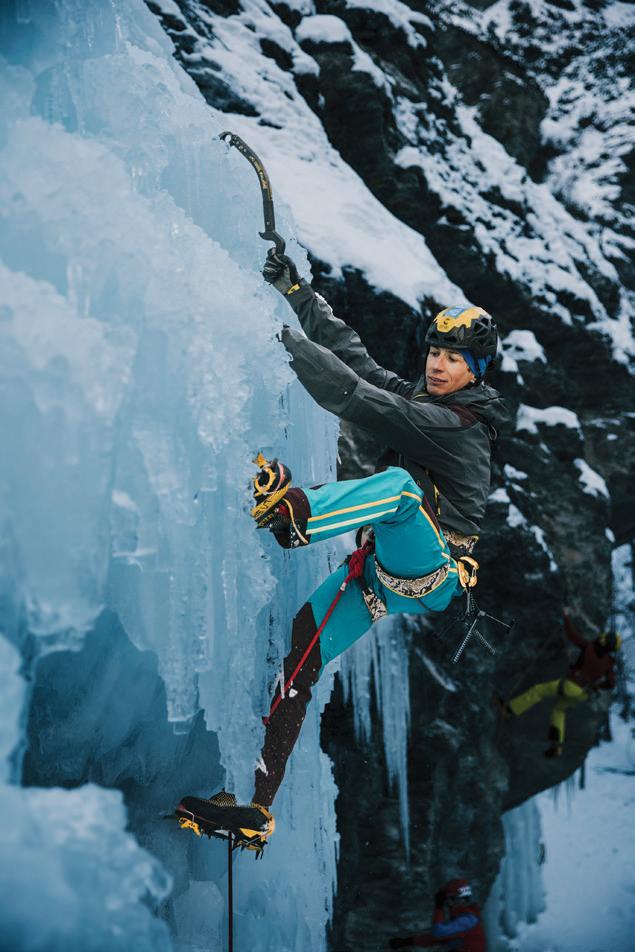
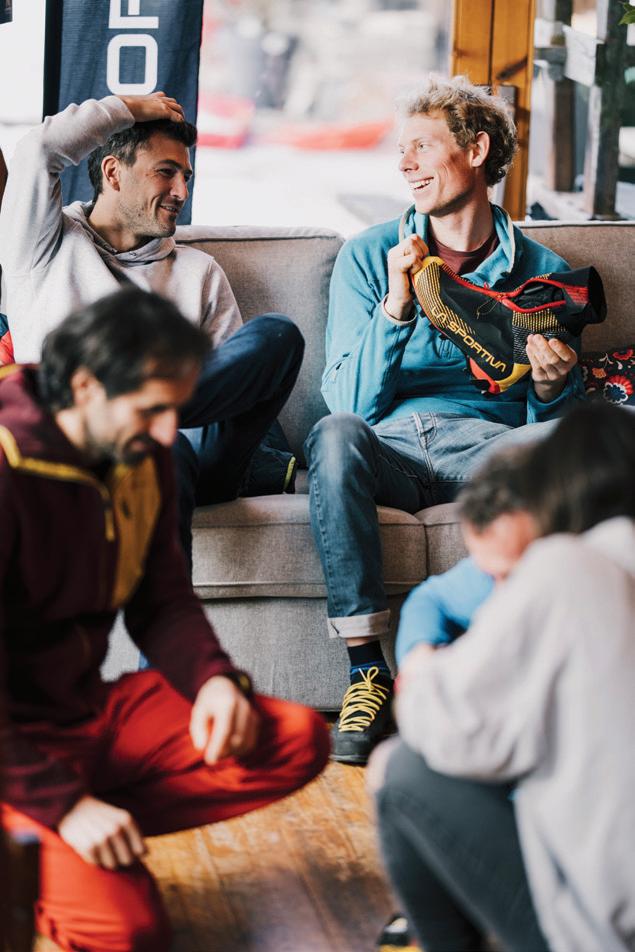
59

Life at Tarfala Hut
A 4 days splitboarding experience around Sweden's highest peak.
BY TOMMASO BERNACCHI PHOTOS MATS DROUGGE
After an overnight train from Stockholm, I met Mats, the guides and my four mates in Kiruna, the last real city before the endless white lands of Lapland. The city is not very big, it vaguely reminds me of one of those towns that you usually see in movies set in countries like Alaska. Little space for design and architecture, a few cafes and of course one of those outdoor stores where you can find everything you would need to survive in the wild north. A special feature of Kiruna is that the city is literally moved every few years due to the underlying iron mine. When the ground starts to become unstable the city is moved to allow the extraction of iron.
The plan is to reach the Kebnekaise area and spend 4 nights in the shelters, exploring the area on splitboards, lo-
oking for nice descents. The group is very diverse and each of us has some stories to tell, so we immediately start to get along. We get on the bus towards Nikkaloukta, from there the adventure can begin. Nikkaluokta is like a gate to the wild north: all the roads end here, leaving space for a white sea…. From here start several valleys, separated by little promontories. In the background, the peak of Kebnekaise (2120 meters high) stands out. It is the highest peak in Sweden.
The environment is very different from what I am used to… In fact I see numerous groups of cross-country skiers equipped with sleds, on which they carry the necessary gear for the nights in the refuge. It's a completely unusual type of ski tourism for me since I’m used to ski mountaineering in the Alps.
Once we arrive, the forest rangers warn us of an inconvenience: given the temperatures too high in recent days, never seen here in this period (thank you global warming), the layer of ice in some points of passage is melting and that makes very difficult to transport food and people to the various shelters. Luckily though in a short time they manage to find an alternative route and so we are able to accomplish the snowmobile transfer of 19km to the first refuge, the STF Kebnekaise Mountain station where we will spend the night. We will no longer use any engines from here on, only our legs to move around.
STF Kebnekaise Mountain station has 220 beds, it can be called a luxury retreat because of the presence of a restaurant and a sauna. It is proof of
61
I had the pleasure of taking part in a splitboarding trip in Swedish Lapland, 4 days of exploring and twists and turns in completely new terrain for me. The tour had been organized by Mats Drougge, founder of Stranda Snowboards and coordinated by Fred from Upguide, a French guide who has been working in Sweden for years.


the large tourist flow that characterizes these areas, a flow that, however, seems to be very environmentally friendly, respecting the work of others. After a short afternoon ascent to earn some curves, the night passes quietly, a last check of the set ups and backpacks for the next morning and it’s time to go. A brief with the guides to check the weather forecast and to plan the itinerary and we’re ready. The conditions are not the most favourable, it’s windy and that means ice, crust, hard snow. A rather hard crossing awaits us along the Tarfalavagge valley to reach what will be our home for the next 4 days: Tarfala Hut.
In the morning we leave and as soon as we enter among the birches some moose appear on our left. They move at a trot, silent, although at about fifty meters from us, thanks to the wind and snow that absorb the noise. It's always nice to meet the real hosts of the place in their own territory. The crossing is tough, and allows me to reflect on true meaning of equipment reliability. In fact, the gear gets stressed quite a lot during these itineraries. I'm used to doing most of the itinerary on the soft ground, in at least fair weather conditions, usually if the conditions are not optimal you don't
go out. But everything is very different here, we have to go out because we have to reach the pre-established goal, not without assessing the risks of course, but wind or not it is necessary to move to be able to take advantage of the following day. The itinerary is quite simple, with no elevation gain, but made almost impossible by the strong gusts of wind which, together with ice and a heavy backpack, throw me on the ground 2-3 times.
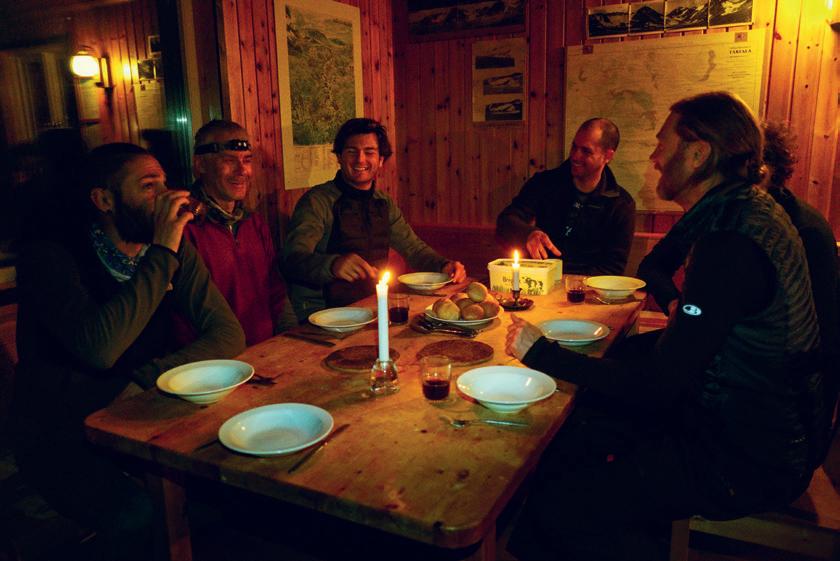
With some difficulty we arrive at Tarfala Hut, where we will stay for a few days with the goal of going on trips around here. The scenery is amazing: a white sea surrounded by a ring of mountains, among which Kebnekaise stands out. Tarfala refuge is just as I expected, essential in services, it requires spirit of adaptation. We must collaborate and participate its maintenance therefore fetch water from the well (a hole in the ice of the lake) and shovel when necessary. The nights pass quietly, by candlelight with a few board games and lots of storytelling. During these evenings I have the opportunity to get to know Mats better, he’s able to transmit a great passion for snowboarding and for the shaping of the boards. His gre-
at culture on the subject is immediately noticeable.
On the last evening of my stay, when by now I didn't even hope for it anymore (the forecasts didn't give many chances of meet it) northern lights finally appeared. An incredible show, made even more beautiful with a surprise effect. During the following days we manage to bring home decidedly beautiful curves, in a completely unusual scenario for me, in fact my immense and angular home mountains that usually frame my rides have been replaced by lower and soft slopes. Although since I got here, I can’t stop thinking about a channel that seems (and will be) epic, it is the goal of the last day of the journey.
What I am living is a truly incredible experience: definitely the more appropriate interpretation or the word skitouring; that is, getting to know new areas, sleeping in real shelters isolated from civilization in order to ski, ski, ski. As always, I go home with the heart full of emotions, new friendships and memories. It always pleases me to know how surfing and snowboarding can, in addition to the gesture itself, be able to give you so much.
63
As always, I go home with the heart full of emotions, new friendships and memories. It always pleases me to know how surfing and snowboarding can, in addition to the gesture itself, be able to give you so much.
Lena Stoffel
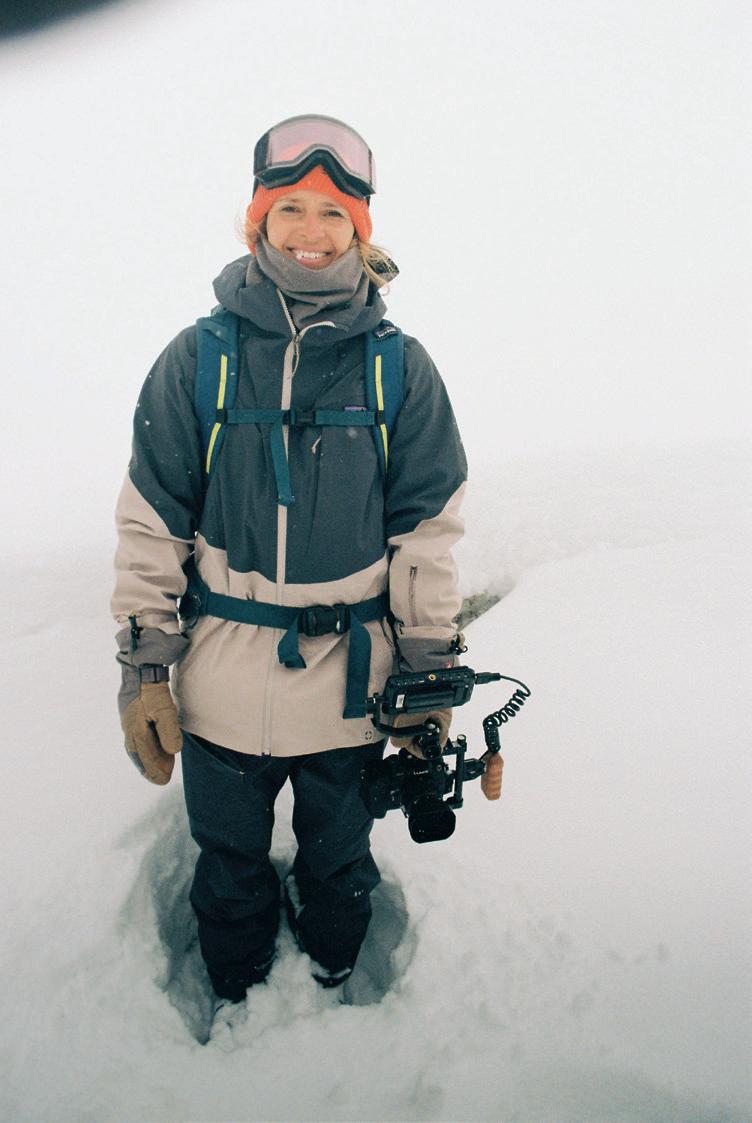 BY LUDOVICA SACCO
BY LUDOVICA SACCO
64
"I want to inspire people to travel responsibly, support local businesses and leave places as they found them.”
How did you first get into skiing? I come from the Upper Swabian Alllgäu, from a small village near Leutkirch. My parents are passionate skiers and put me on skis at a very early age. Then they accompanied me and my brother in alpine racing for a while and trained the regional district with all the children. So I really grew into skiing from a young age and it was always a natural part of life.
You still did a lot of racing at the beginning of your career. How did you switch to freeriding and freestyle? Yes exactly, I raced in my teenage years in the youth national FIS squad. However, after graduating from high school I didn't want to just ride through poles and decided to take a different path. I went to Innsbruck to study and got into the freeride and freestyle scene and grew with it. I participated in regional contests during my studies and little by little it became more and more international. In 2010 I competed in slopestyle at the X-Games in Tignes and finished fifth. I also skied the one or other freeride contest, because skiing in open terrain has always been fun for me.
When and why did you turn your back on the contest scene? In 2011 I unfortunately had my first cruciate ligament and meniscus injury. I fought my way back and was on my way to qualify for the 2014 Olympics in Sochi. But then,, the second knee injury on the same knee intervened in 2013. The following winter, I decided not to compete and to ski the way I like it best - in open terrain and in deep snow. I completed my state ski instructor in the winter and then went to Norway in the spring with Aline Bock for a film project. Way North came about as a result. We somehow hit the mark and the film was well received. Combining two women, skiing, snowboarding and surfing didn't exist that much back then. That opened the way for both of us to do some more film projects in the years after.
These film projects mainly follow you into the backcountry. What is it about skiing off piste that excites you so much? That is quite easy to answer. It's nature, the mountains, and the peace.
Not skiing in the crowds and trying to see beautiful mountains and ski them down. Optimally, in deep snow, of course.
One of the projects you were recently involved in, Vanishing Lines, came out last winter and is about more than just skiing. What is that film about? Yes, that was a great film project and I was happy to be a part of it. The idea came from Mitch Tölderer, an Innsbruck snowboarder who is experiencing firsthand the change that is happening and has happened here in Tyrol. The film is basically about protecting the last wild nature here in Tyrol and emblematic of course for all mountains, mainly in the Alps. This is told with the example of the plans that existed for the merger of the Pitztal and Ötztal glaciers. Thank God I can say "existed", because these plans are now no longer on the table due to citizens' initiatives and petitions and other actions.
How is this portrayed in the film? You see frightening images of large construction sites in beautiful wild nature and in contrast, however, beautiful shots of Mitch skiing a gully in the Karwendel and me having great ski runs in the Kalkkögeln. Glaciers are highly sensitive and beautiful ecosystems and great water reservoirs. That's why it's important to protect them.
So should we stop using lifts for skiing altogether? No, I don't think so. I think it's really great the opportunities we have here in the ski areas.
65
The existing areas bring people to the mountains and make them accessible to many. So many see the beauty of the nature of the high alpine landscapes and I think that's an opportunity to actively involve all these people in conservation.
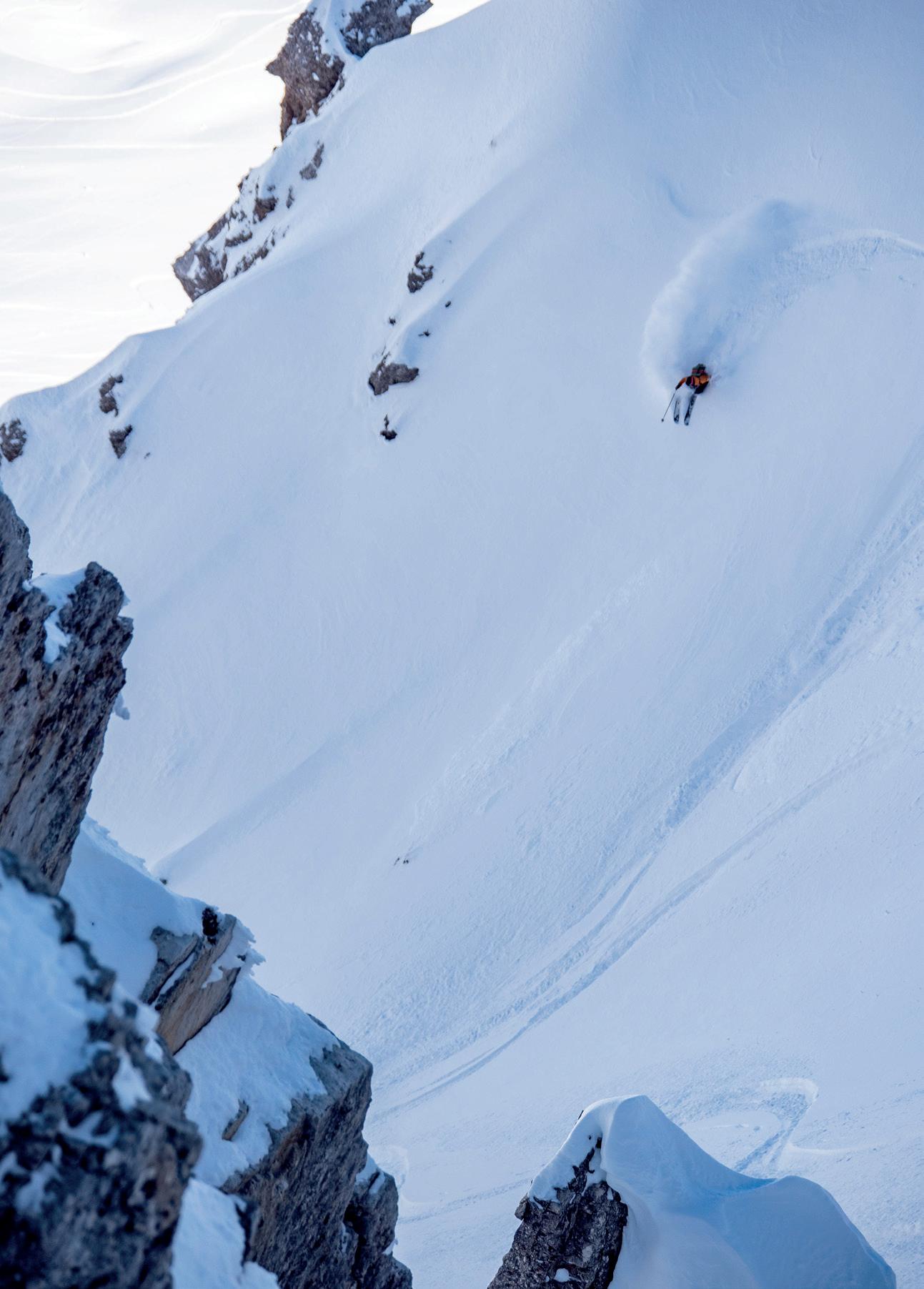
66
The existing areas bring people to the mountains and make them accessible to many. So many see the beauty of the nature of the high alpine landscapes and I think that's an opportunity to actively involve all these people in conservation. I think we should try to support the small ski resorts as much as we can and go skiing in those as well. I'm just in favour of responsibly improving what's already there and not building more and more. After all, we have enough kilometres of slopes.
How do you look at travelling and the environmental impact of moving around the globe to seek snow, a finite resource under threat from climate change? I do love skiing different mountains and learning about different cultures. I always felt privileged to be able to show these places in their true magic and how beautiful they are, through my eyes and through the position I am in, as a skier. Therefore, I want to inspire people to travel responsibly, support local businesses and leave places as they found them. As much as travelling has shaped me and my connection to nature, especially in Japan but also in Norway, I can always find this beauty at home as well. On the other hand, I surely get the contradiction. Snow as a finite resource is definitely under threat and travelling for long distances just to find it, especially by plane, really aggravates the whole thing. So I am trying to minimise my own impact and show through my work how beautiful and how important it is to protect.
You recently became Vice President of Protect Our Winters (POW) Austria. Why are you involved in POW and what does their work involve? I have been an ambassador for POW for a long time. It was a fundamental need for me to get involved with an NGO that tries to bundle the natural interests of all mountain and winter sports enthusiasts and thus also protect all of our playgrounds. The work is mainly characterised by positive communication and awareness raising. We want to get all outdoor enthusiasts on board and give this community a common, strong voice. Im-
portant issues for us include direct lobbying with policy makers, as well as educational initiatives and much on the topic of mobility. There are workshops in schools that are now starting up again after the difficult Corona times, called "Hot Planet, Cool Athletes Workshops" and POW ambassadors are heavily involved there, holding some of these workshops and are thus role models and cool "climate protectors". Then we try to structurally improve the topic of mobility, especially the travel to our beloved places where we go ski touring, climbing, hiking and snowboarding. In addition, we act as role models and communicate campaigns. How can one join or support you at POW? Are you active internationally? On the POW website protectorwinters.com you can easily become a member and find out how you can get involved. And yes, POW is international. There is a community in many cities that meets regularly, in places such as Munich, Innsbruck and Graz as well as across Europe and around the world.
How do you recognize the climate crisis in your exposure to winter seasons all over the world? I recognize it through the abnormal weather patterns we are experiencing. Everywhere I travel to, and in talking to locals, it seems that winters are increasingly extremely dry one year, then the other extreme, the next year, with intense snowfall. While I’m always looking for snowfall or waves, it seems that the usual weather patterns are changing or simply disappearing. Most prominently, I can see the changes on my doorstep, in Innsbruck, as the Stubai Glacier continues to retreat.
What projects do you have coming up next? I have a trip planned to Piermont for a photo essay to take place in a valley that has no lifts and is particularly rich in tradition. It is a ski touring paradise, when there is snow. I just try to spend as much time as possible in the mountains, that's where the good ideas come from, ultimately, as well as and the power for my work with POW and my personal projects.
67
Imagine: Prompt IA, Photography, Outdoor
BY MATTEO PAVANA
When I hear talking about Artificial Intelligence two precise images are automatically projected into my head. The first is super mainstream: Jonathan Nolan's tv series “Person of Interest” which I assume you all already know. The second is Jay Tuck's speech at TEDx in Hamburg, entitled "Artificial Intelligence: it will kill us". Yeah, well, not a very heartening title, but I recommend you all to see it.
For those who really don't know anything about it, Artificial Intelligence means a discipline that studies whether and how it is possible to create intelligent IT systems capable of simulating the ability and behavior of human thought. It is a program, an algorithm, written by human hand, which corrects and improves itself, in a completely autonomous way, at an exponential rate and at a quality that is still difficult to understand today. Substantially it itself develops its own way of thinking, of reasoning, of operating. Artificial Intelligence is now at the center of the technological choices of companies and governments, as well as part of the daily life of all of us. Without getting too specific, let's pretend that the AI is a supercomputer with superhuman powers.
What has been happening now, for a year now, is that the first artificial intelligences capable of creating or modifying images are becoming accessible. Not everyone is aware of it, but there are elaborate synthesizers like Midjourney (or others like DALL-E, Stable Diffusion, etc.) capable of creating incredible images, of any type, in any style and, crucially, at the speed of a “Enter” pressed on the keyboard. Producing images with one of these tools is not complicated at all, you just need to know how to give the desired command to the program (the so-called prompt) which interprets the words and renders the images. By inserting as input "ice climber, on a huge orange ice candle in the Mont Blanc massive, with blue clothes, drone shot", I got four different but similar images. At this point the program allows you to generate
another four new images, generate other similar images starting from one of the four just obtained or, in case you are satisfied with one of the first four results, do the upscale and download the image on the own computer.
This technology is already influencing creative sectors: from fashion to design, from art to photography. It is only a matter of time before the outdoor market, in all its forms, will also suffer its charm and, therefore, its consequences. How? In the Midjourney case, it was testing it that I was baffled by its potential. Being a beta version, therefore not definitive, the outputs obtained are really promising. With a new prompt “female skimountaineer portrait, low depth of field, blue eyed, red Patagonia hat, blonde hair, studio lights”, I get an unbelievable answer.
As if that weren't enough, Artificial Intelligence gets better day by day as a human being improves himself in years. We are talking about a technology whose roles and powers appear limitless. At this point I assume it is more than normal that any photographer starts to worry. Will Artificial Intelligence make this work redundant? On the other hand, why should a company invest in external resources when, by hiring a coder (or as they are now called AI directors), it would have better results (maybe not now, but I'm not ruling it out in the future) and at a lower cost? Yet it is only history repeating itself. With the advent of digital photography and image processing programs, first of all Photoshop, analog photography, considered by many to be "real photography", was eclipsed as
68
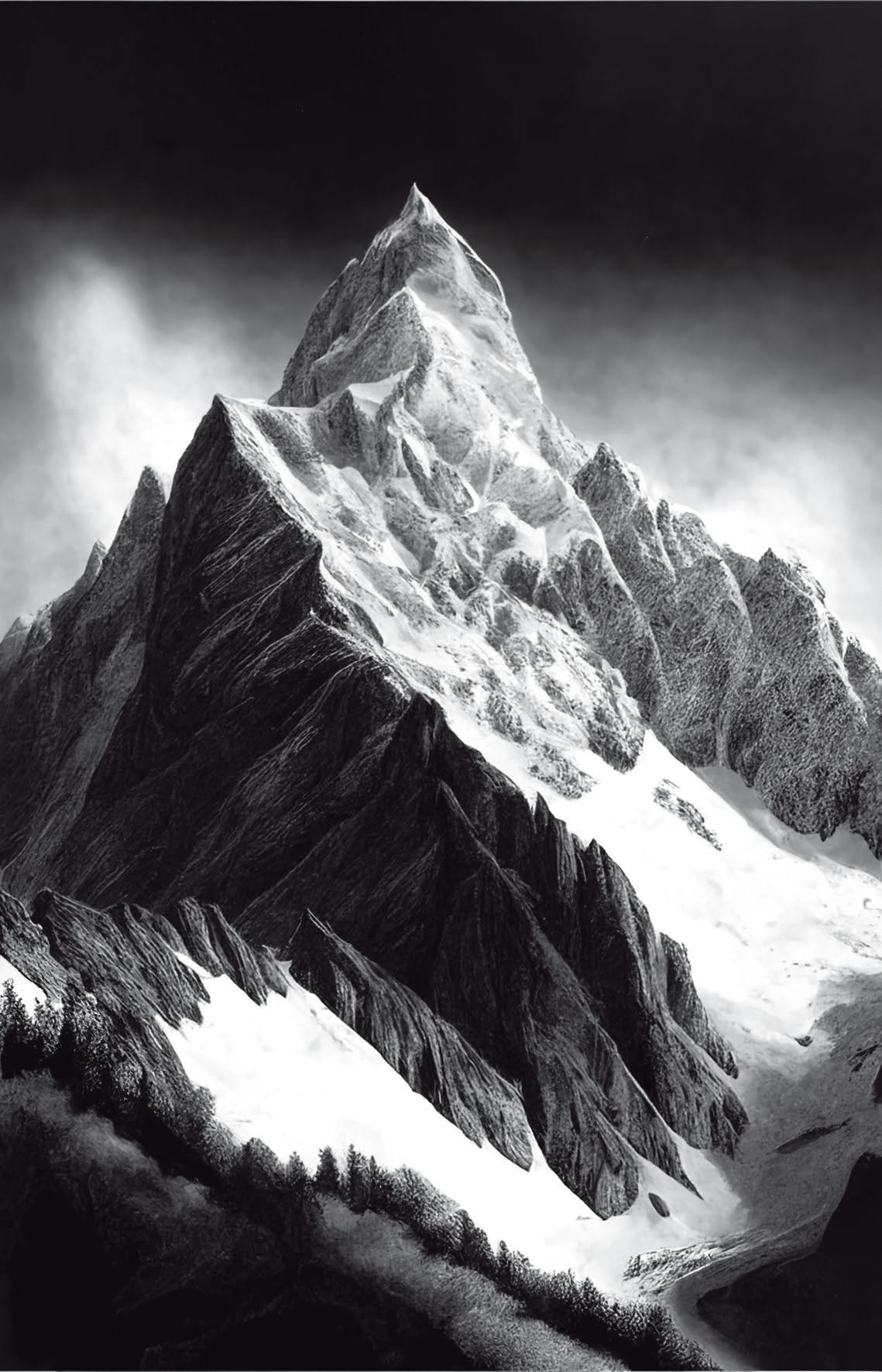
69
too slow, old-fashioned and expensive. AI seems to be the immediate answer to the question of "faster, more convenient", no less than the current crazy capitalist mechanisms. Perhaps the photograph of some areas will keep the criterion of authenticity alive and unaltered, but the sectors that have already lost that value in the past are destined to be inexorably swallowed up in the reel of the new system. It seems that only photographers, or more generally creatives, who will be able to import AI skills into their workflow will be able to work and live on photography and art.
As far as the mountains and the outdoor sector are concerned, I am not confident. I consider nature and love to be the highest values that we human beings
can aspire to and I don't need to investigate further than I have already done so far to say that there is neither nature nor love in all of this. Both cornerstones of humanity will be further challenged, according to Jay Tuck to the point of no return: our extinction. The direction of this sector, like so many others, is the track without detours of a runaway train. There will certainly be room for the use of Artificial Intelligence, as well as a split in the market between supply and demand, creating new job figures. In certain sectors, the level achievable by an AI will instead be unattainable by 99% of human beings. Perhaps there will be a more overbearing return to analog as a tool for making photography, in parallel with a desirable
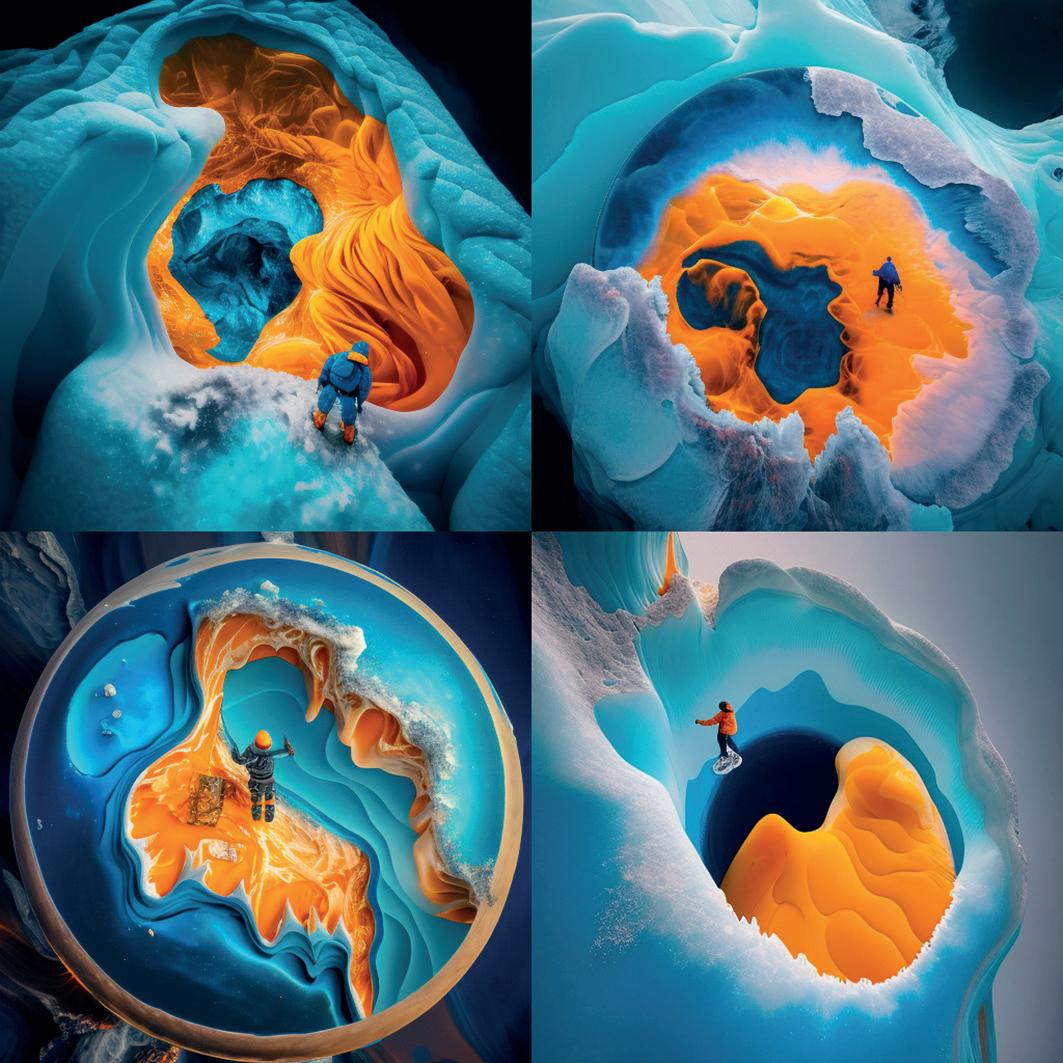
70
and desired decrease in film prices. But these, at the moment, remain only my simple guesses.
All of this is a blink of an eye compared to what will happen in time: strange times await us. Maybe even scary ones. Talking about it, I will also have contributed to speeding up the process, but what I really would like to do with this article, in addition to raising awareness of the topic, is to raise awareness towards much wider boundaries: it will and will always remain the task of people, of human beings, to choose the path to follow, the cause to fight for. Mine will remain to love nature, protect it, and with my photography aspire to the values of utility, ethics and the right beauty. And maybe survive the technology.
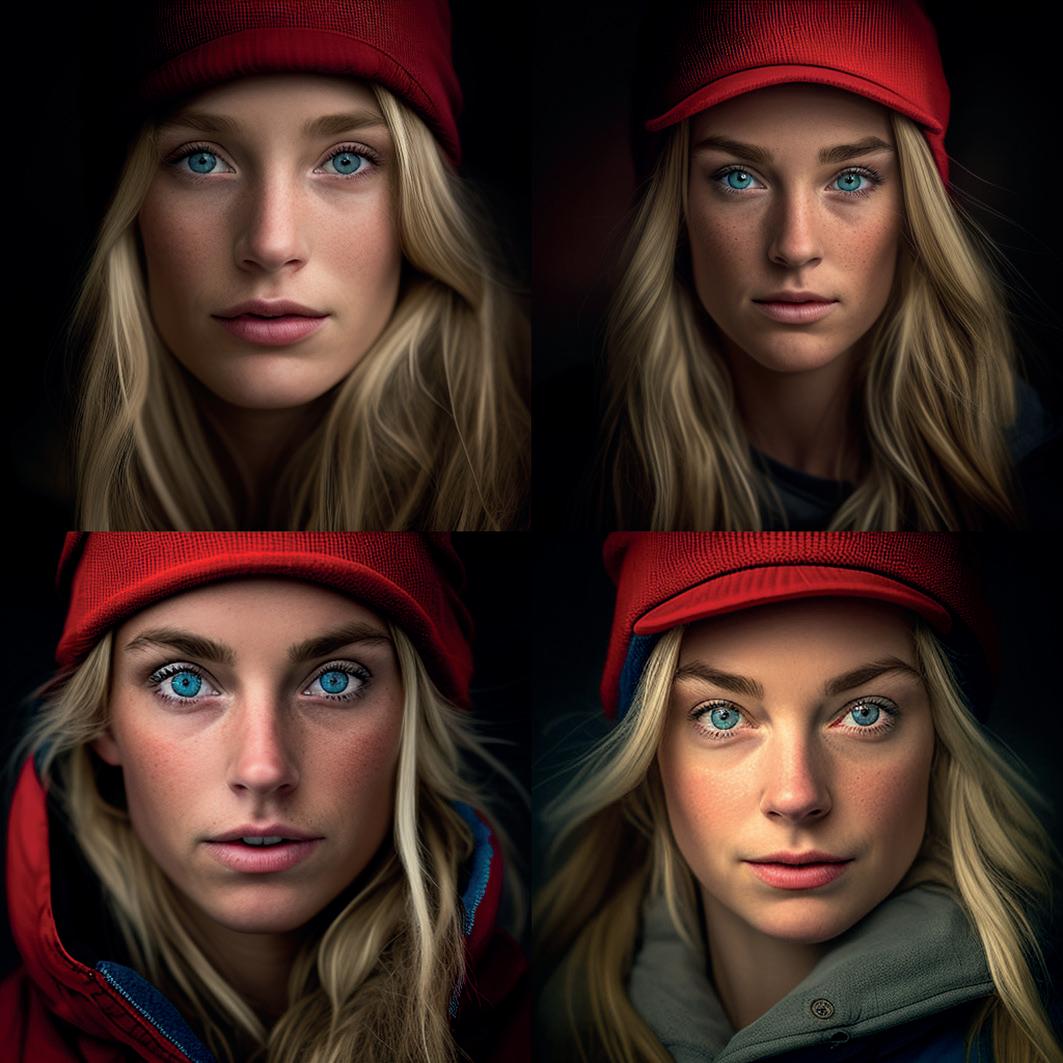
Steve Polyak, long before anyone else, had seen this coming. “Before we work on Artificial Intelligence why don't we do something about natural stupidity?”
Ah, typing this command came out this:

71
Peace&Love, Matteo Pavana

72
Impact Studio The Upcycling Way
ITW BY LISA MISCONEL TO LEONARDO PLEBANI
communication at Outback 97, an agency that represents outdoor brands. It is here that, seeing the numbers in the returns department and feeling sorry to see very high quality products being rejected because they are defective, he started experimenting with materials and sewing, giving life to Impact Studio, a sustainable creative recovery project.
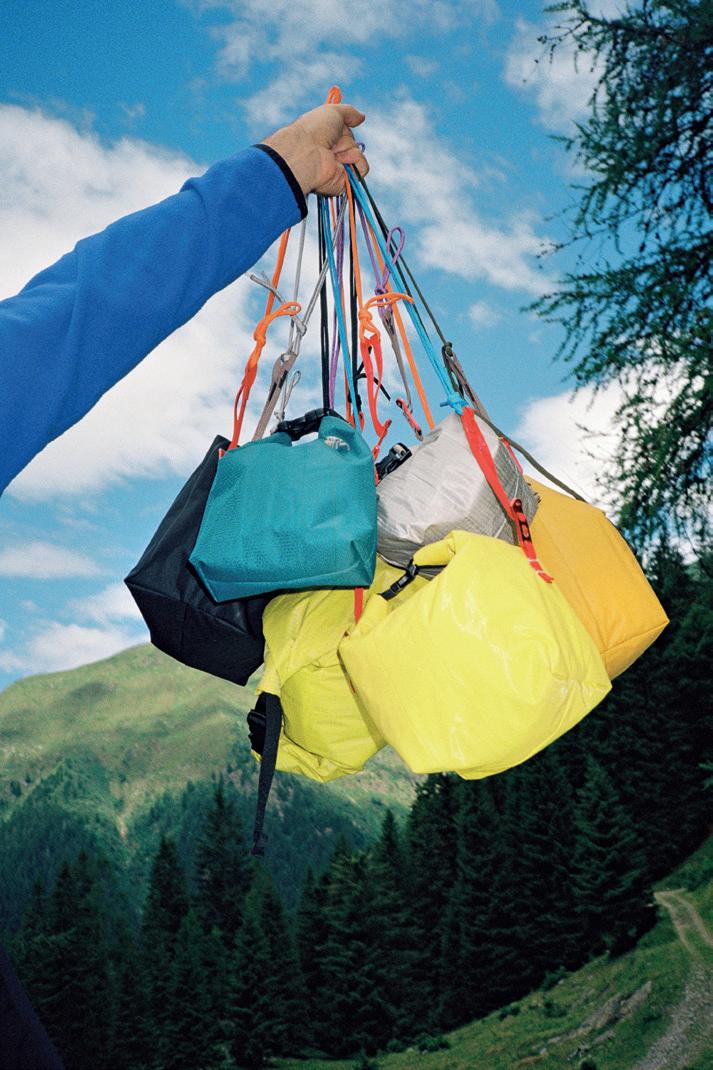
73
What is Impact Studio? It is a sustainable creative recovery project that uses recycled material as a starting point. Each product, object, defective material is revalued through a clean aesthetic canon and a simple design, giving life to unique and immediate pieces. Each concept begins with a simple but never taken for granted reflection: that of the defect, which once understood leads to the definition of the project and consequently transforms into a totally new object. The beauty of the defect is that it does not alter the intimate properties but only the extrinsic ones of a product. Each product combines a background made up of passions and interests: mountains and tailoring.
How was born the idea of Impact Studio? Is it an idea that matured in you over time or did something inspire you? The idea was not born by chance but out of necessity. The agency I work for represents outdoor brands and manages every aspect from the commercial side to marketing to customer service. Any defective/used/broken product that returns passes through my hands. Seeing the amount of items that would become waste has always displeased me, to the point that one day I decided to take home a delaminated mat to try and give it a second chance. Seeing my mom sewing, I thought I could give a second life and utility to that defective product, and so I created
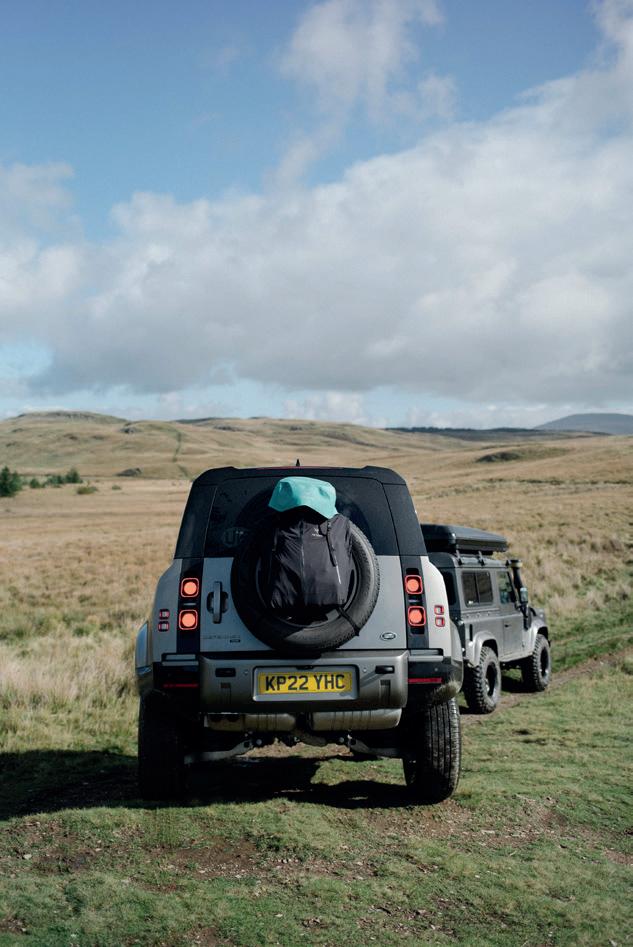
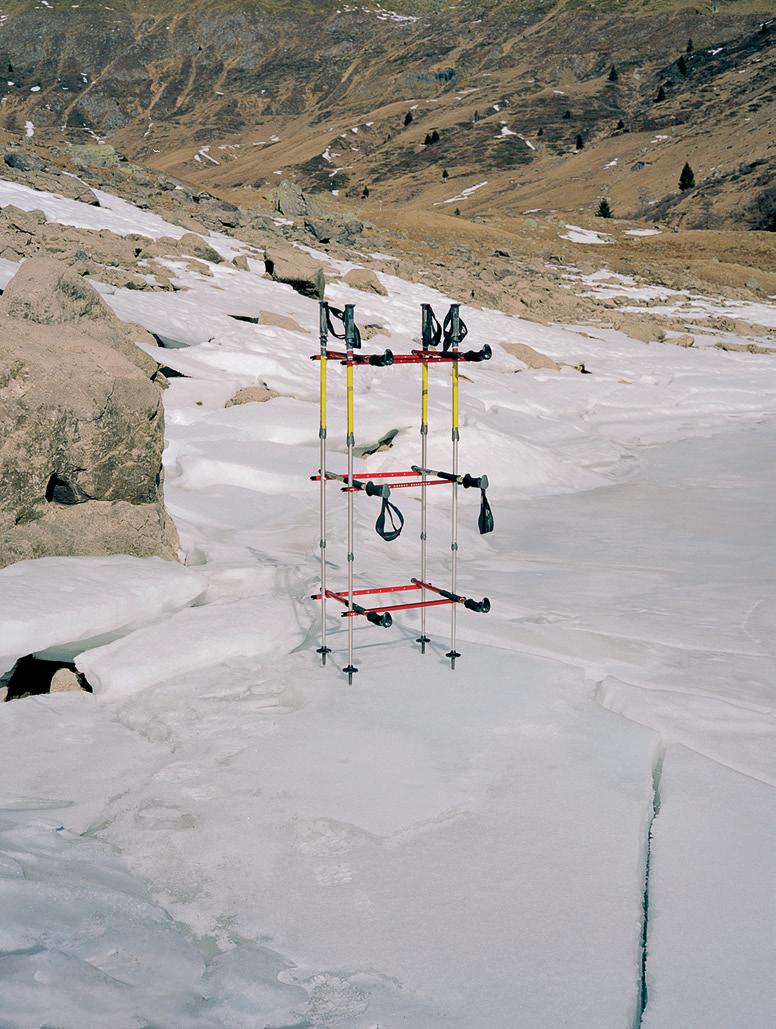
74
The basic concept of Impact Studio is therefore to use heavily or unfortunately worn products and turn them into fortunately and fucking beautiful items. Impact products are not Must Haves but Must Dones.
a case with a roll top closure. From there I continued to create and experiment with the material I was able to recover and, when I read up on it and realized that I was the only one who reused those specific materials, I had the push to start this new path called Impact Studio.
What is the aim of this project? Impact Studio aims to extend the life of all those materials, objects and technical components that would otherwise be thrown away, raising awareness and promoting a simple creative exercise that can be replicated by anyone who wants to reinvent a product rather than turn it into waste.


What is the meaning of the term upcycling? Upcycling means reusing waste objects and materials to create products of higher quality, real or perceived.
Do you think that in the outdoor and fashion world there is ever an improper use of the term upcycling for marketing purposes only? More than an improper use of the term, I believe that in many cases there is a wrong management that still pursues the world and model of "fast fashion". Upcycling is a creative exercise disconnected from market forecasts. It's a bit like when skiing on powder everyone chooses their own line based on sensations and will.
The same goes for me when I choose a material to make it reborn: I play, experiment, cut, join and many times I'm wrong. However, it must be said that using these initiatives as a marketing tool is understandable and, from a certain point of view, it also has its importance. The more people talk about it, the more people are interested in and reques these products. The greater the demand, the greater the supply must be, and eventually, companies could create a real business out of this subject.
Do you think it can be extended on a large scale in order to create a real functioning reality for the upcycling theme in the truest
75
sense of the word? Upcycling is somehow connected to the concept of waste. If we were able to create a truly sustainable, ethical and innovative economy, eliminating the concept of waste, perhaps we would be able to avoid so much waste and enhance even more the true and spontaneous essence of upcycling which aims to create a valuable product following a design instinct aimed at safeguarding it.
Do you feel like defining your clothes as part of the gorpcore trend? How much can this trend affect the change of mentality in reference to the outdoor industry?
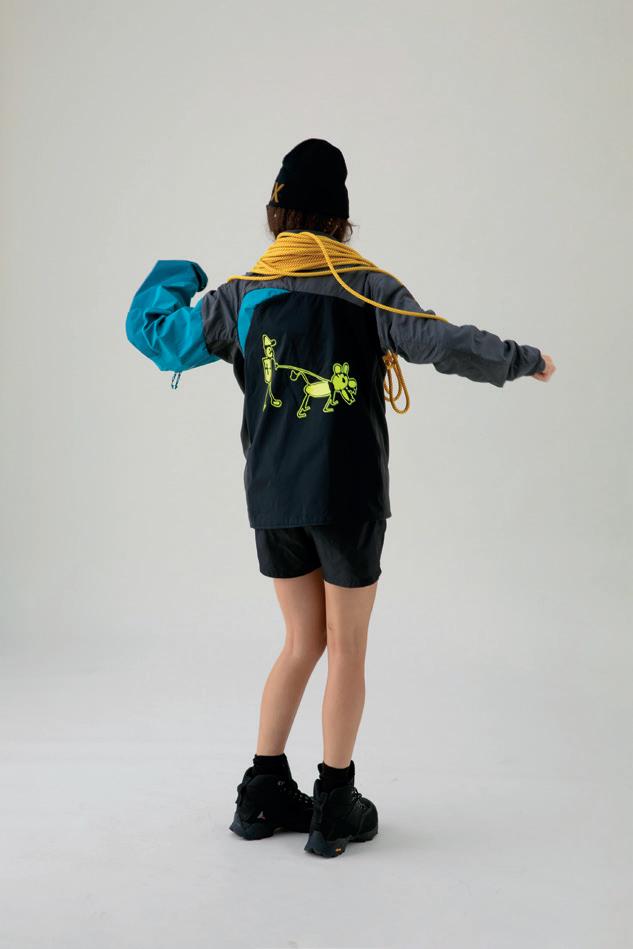

Yes of course! Gorpcore is nothing more than the act of wearing techni-
cal hiking and mountain clothing within the context of the city. Utilitarian fashion is all the rage and in recent years gorpcore style has taken over. Perhaps this trend has always existed among mountain lovers with the only difference being that if fifteen years ago someone had worn a Salomon SpeedCross 3 GTX in the city they would have been laughed at and called a mountain freak. But now it's part of a trend. The new collaborations between hiking brands and luxury brands are changing some balances, sometimes in a negative way in my opinion: one case is where luxury brand emulates mountain aesthetics, but when it's the other way around, fashion brands functional aiming to
conquer the new luxury audience is another (unfortunate) story.
Do you work alone? Or have you created a team? My team is made up of Dario and Marco. Dario works as a graphic designer while Marco as a photographer. MUA, Stylist and models are selected on the basis of the article produced.
How important is it to you to showcase and document your work correctly? Looks also count and this requires a fundamental and very difficult process to manage. I think about how bombarded we are with images and inputs on a daily basis, and trying to do something original and innovative is getting more
76
and more difficult. We don't like thin king about things too much, what in spires and convinces the whole team is implemented.
Do you think it is possible, in a not too distant future, that recovery and reuse will replace the unjustified purchase of new products by consumers? Perhaps we should ask why consumers make unwarranted purchases. If a user is always and constantly offered new products that differ little from those offered in the previous season, he will be disoriented and pushed to the sole action of buying more. Instead of being accompanied and educated, the consumer is increasingly distanced from the exercise of recycling and reuse. Slowing
rying out a very interesting program called ReBIRD (Waste less, by design): care and repair, resale and upcycling. How to be environmentally responsible? Can repairing be a solution? By buying less. It is difficult to find third-party repair centers that can certify a certain level of quality, affordability and that are able to carry out repairs in sufficient volume and in a certain amount of time. All of these factors come into play and in the end, there are few repair centers that can consistently meet all demands.
Any important projects for the new year? Or brands you'd like to
For this year we aim to organize the first Impact event connected to a workshop. I would very much like to collaborate with companies in the furniture world, in fact the next project concerns the union between interior design and technical materials. I was contacted by Arc'teryx, who, interested in the project, started sending me damaged or faded jackets and pants. I would like one day this exchange and support to become a real collaboration to push upcycling throughout Italy. Beyond this specific case, the Impact Studio team is open to all brands.
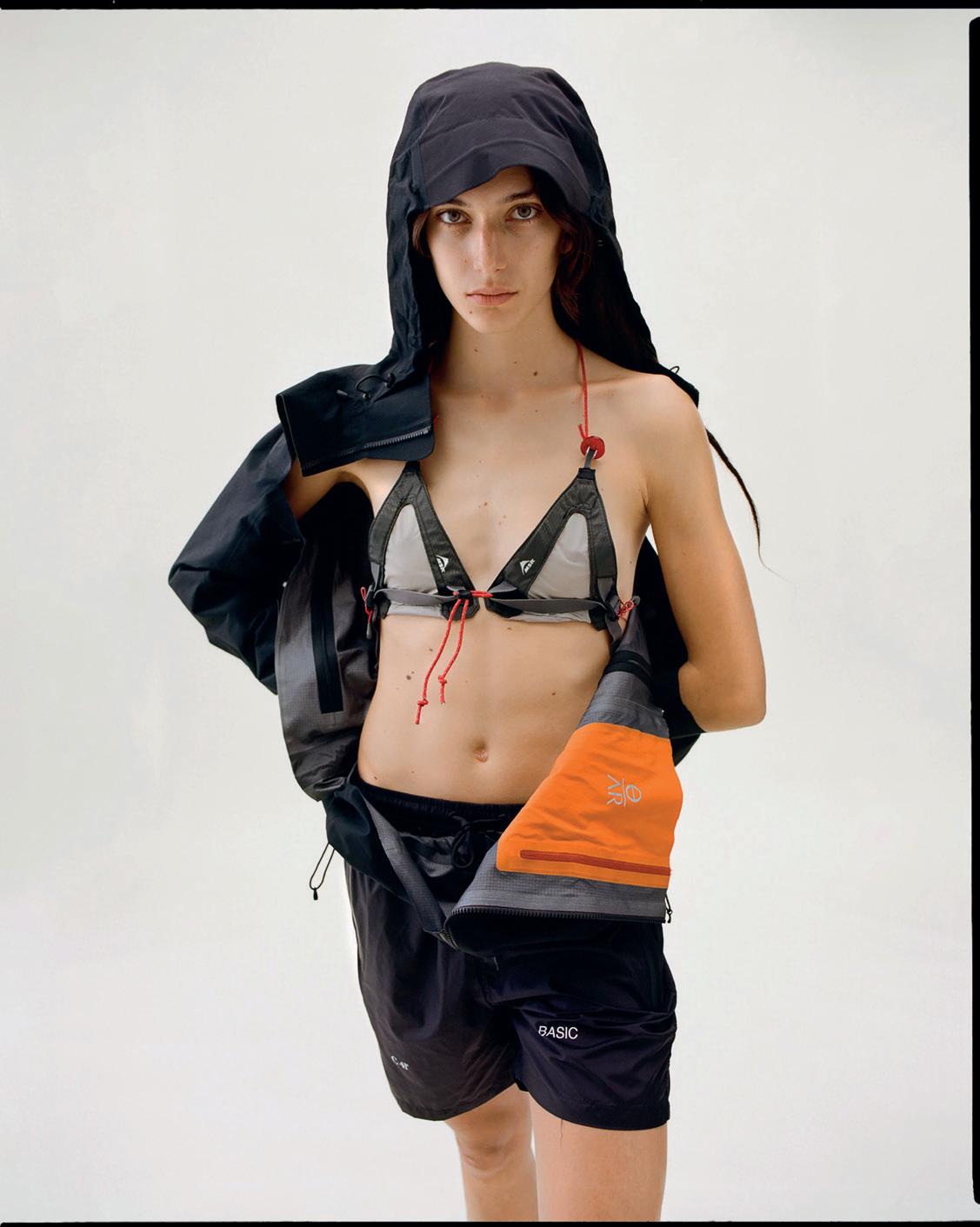

77
Paolo, protector of the seabed
BY ILARIA CHIAVACCI PHOTOS FEDERICO RAVASSARD
Fisherman, son of fishermen and grandson
fishermen:
Paolo Fanciulli was born Talamone, a small village perched on the southernmost edge of the Tuscan Maremma, he is the son and grandson of fishermen and his story was told by Safy Farah, who was born in Minneapolis and who’s a journalist for Pop-Up Magazine, an editorial product specializing in multimedia stories that, together with Patagonia, realized the documentary "The Art of Activism" about the story of Paolo and his commitment to save the seabed of his Talamone from trawling. As we said, Talamone, located in the province of Grosseto, enjoys an incredible position, it stands on a promontory that opens onto the bay that bears the same name: the water is of an almost unnatural blue and, historically, this portion of the coast has been always very rich in fish, which has guaranteed the economic subsistence
of the local community for a long time, based fundamentally on two assets: tourism and fishing. Paolo in his story has intertwined them both in a double thread, however uniting a third, fundamental, piece: activism.
It all started around 1986, when Paolo began his personal crusade against trawling: this fishing method used in industrial fishing literally destroys the ecosystem. In fact, the nets scrape the seabed devastating and removing anything they encounter in their path: not only fish, but also invertebrates, corals, algae and posidonia, leaving behind them torn seabeds, which will only be able to recover after a long time. For example, the meadows of Posidonia oceanica, of which our coasts are rich and which host complex ecosystems, can be completely destroyed even with a single pass of nets.
78
of
Paolo Fanciulli has also made his profession a mission: safeguarding the marine ecosystem from industrial trawling.

To avoid all this, trawling would in theory be prohibited in Italy along the coast, i.e. within three nautical miles, but this unfortunately does not prevent fishing vessels from trawling even in prohibited areas, causing irreparable damage and eliminating not only the ecosystem present, but also also destroying the prospects for future fishing even for those who, like Paolo, still conduct this activity in full respect of the sea and its fauna. In fact, the protection of marine biodiversity is another fundamental issue linked to the invasiveness of industrial fishing which, by its nature, is not selective: in fact, not only edible fish end up in the nets, but also species that have no commercial interest because they are not edible by man, but at the same time they are of vital importance for the ecosystem in which they are inserted. Not only that: industrial fishing releases carbon dioxide into the atmosphere, contributing to the acceleration of climate change.
Back to Paolo: between the mid-eighties and the end of the nineties, the fisherman began his personal battle against industrial fishing vessels with weapons that we will define as "soft": in fact, he began to write in the newspapers to make people aware of the problem, but he soon realized that information is not enough, the fishing boats don't care what public opinion thinks and continue to frequent the Tuscan coast. It is then that Paolo understood that he must speak their same language.
“Since no one listened to me, in 1990 I arrived to attack a port: the one of Santo Stefano. This gave a great signal. After that I was denounced, but I didn't go alone to attack a port: I brought with me many other artisanal fishermen as well as Greenpeace and the WWF, constantly pursuing my cause: to preserve our sea from the destruction of the seabed” tells Paolo. Even such a striking gesture, however, was not enough: “Seeing that attacking a port wasn't enough, I started attacking the fishing boats myself: alone, at night, with rubber dinghies and with the support of the prosecution, who finally seized the boats. But when I didn't have the public forces with me, the national gendarmerie and the coast guard, I attacked the boats even alone, because they couldn't be there every night. I have done everything: I have sunk boats, I have put barbed wire and bombs under water, I have risked my life many times.” And these were the "hard" actions, the turning point towards a more "pacifist" activism came in 2005, thanks to the collaboration with the Tuscany Region and with Arpat, the regional agency for environmental protection, which supported Paolo putting large concrete blocks into the sea.
In fact, the idea, by placing concrete blocks on the seabed, was to create an obstacle for the nets, which would have remained entangled in them. With the funds made available by the Region, Paolo managed to make life more difficult for the fishing boats, but not enough to force them to move elsewhere: the blocks were
80
It all started around 1986, when Paolo began his personal crusade against trawling: this fishing method used in industrial fishing literally destroys the ecosystem.
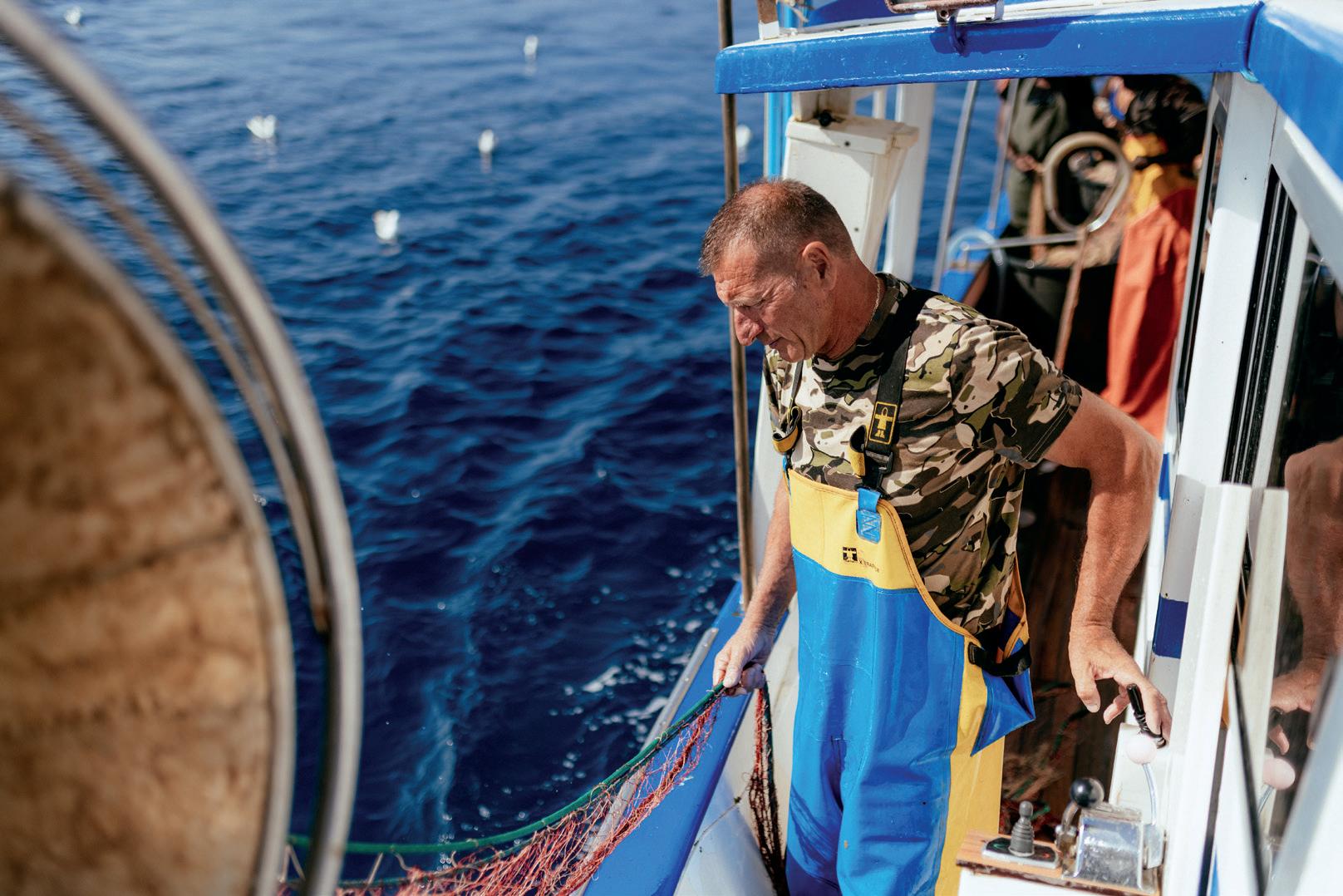
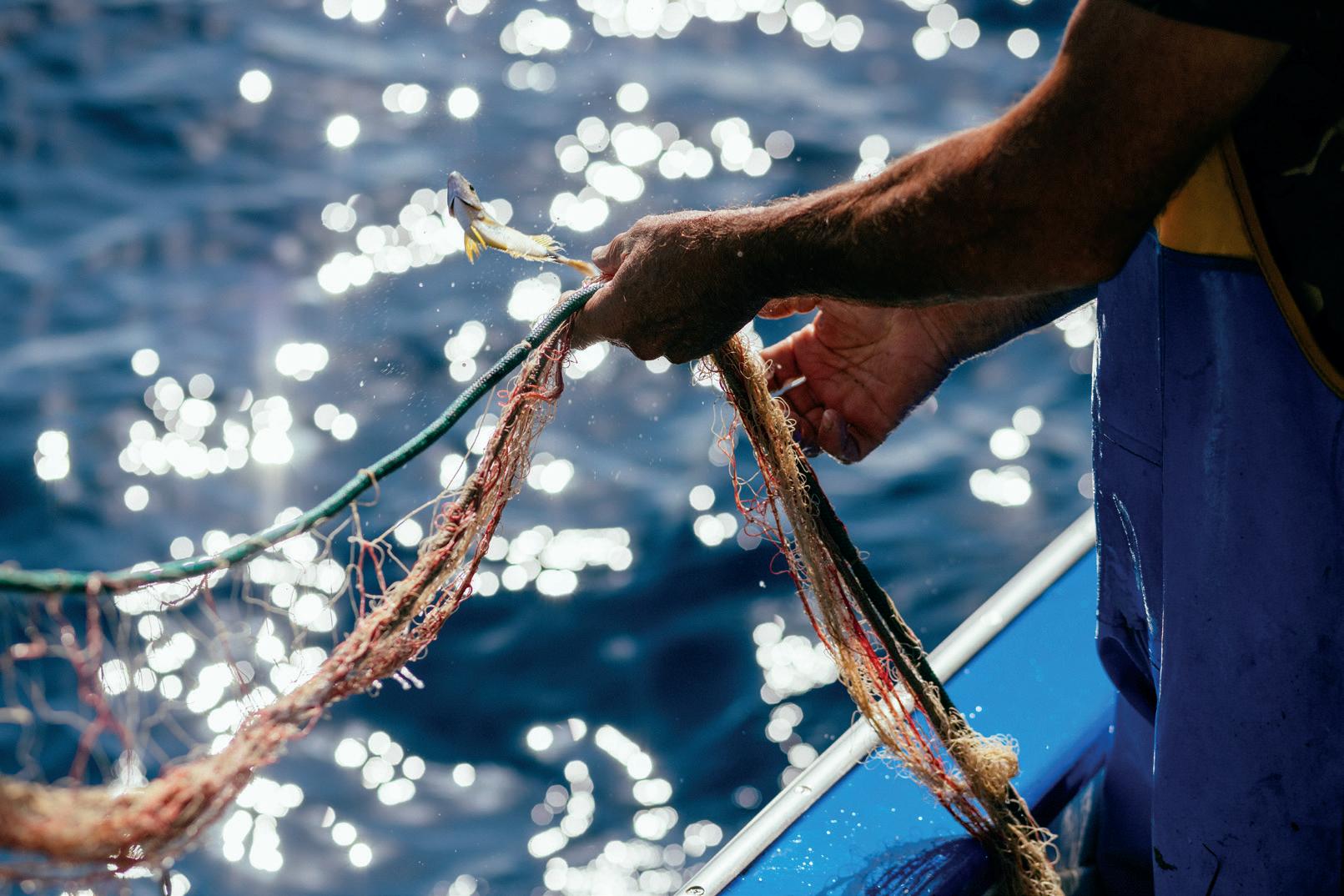
in fact too few and, albeit with difficulty, the nets managed to pass through them. But there was more: after a while the local administrations stopped funding the project. Mafia hasd something to do with it, Paolo is convinced of it and he tells it to Safy Farah and Patagonia.
“At this point I had an idea: I had to get people to collaborate through word of mouth. After all, it was me, in 1992, who invented the fishing-tourism business in Italy: every day I host people on my boat, I show them the beauties of the bay, but I also explain what sustainable fishing consists of and what, instead, damages the sea. Thanks to the solidarity I found in people from all over the world, we managed to buy 800 concrete blocks and, in that stretch of sea, we prevented illegal fishing by 90 percent.”
However, although fruitful, Paolo's commitment remained solitary: to draw even more attention to the problem of the destruction of the seabed, he had the idea of putting not simple anonymous concrete blocks in bad shape in the sea but also artworks. Ten tons of artworks to stop illegal trawling. This would have brought not only a benefit to the ecosystem, but also to the coast, which would have been enriched with another touristic starting point. This enormous environmental commitment led Paolo to receive prizes and, during the ceremony in which he was awarded one of these, to meet the
owner of a marble quarry near Carrara who, once he heard his idea, decided to help him with 100 blocks of marble from which to make sculptures. “At that point, however, I had to go from blocks of marble to sculptures, I was missing the artistic transition. Once again the help came from my work.” Apart from the sculptor Emily Young, whom Paolo contacted via email and who immediately accepted to take part in the project, the other artists arrived through word of mouth generated by the tourists he met. “Every day I told my story and my project to the tourists I hosted on the boat, involving them and explaining to them that life on the sea starts from the depths. This gave birth to a grapevine and, in the end, it was the artists themselves who contacted me and offered to help me: they offered their work for free in exchange for the fish I caught and cooked.”
This is how in a short time Paolo managed to collect 39 giant sculptures which he placed to protect the seabed of the Talamone bay, where algae and fish have returned together with turtles and lobsters and where he accompanies tourists every day to teach them what it means sustainable fishing, admiring the coast and also the beautiful underwater sculptures. “The sea belongs to everyone and my dream would be to save not only this sea, but all the seabed: all the other places where my fellow fishermen are forced to stop working because industrial fishing has destroyed everything.”
82
This is how in a short time Paolo managed to collect 39 giant sculptures which he placed to protect the seabed of the Talamone bay, where algae and fish have returned together with turtles and lobsters.


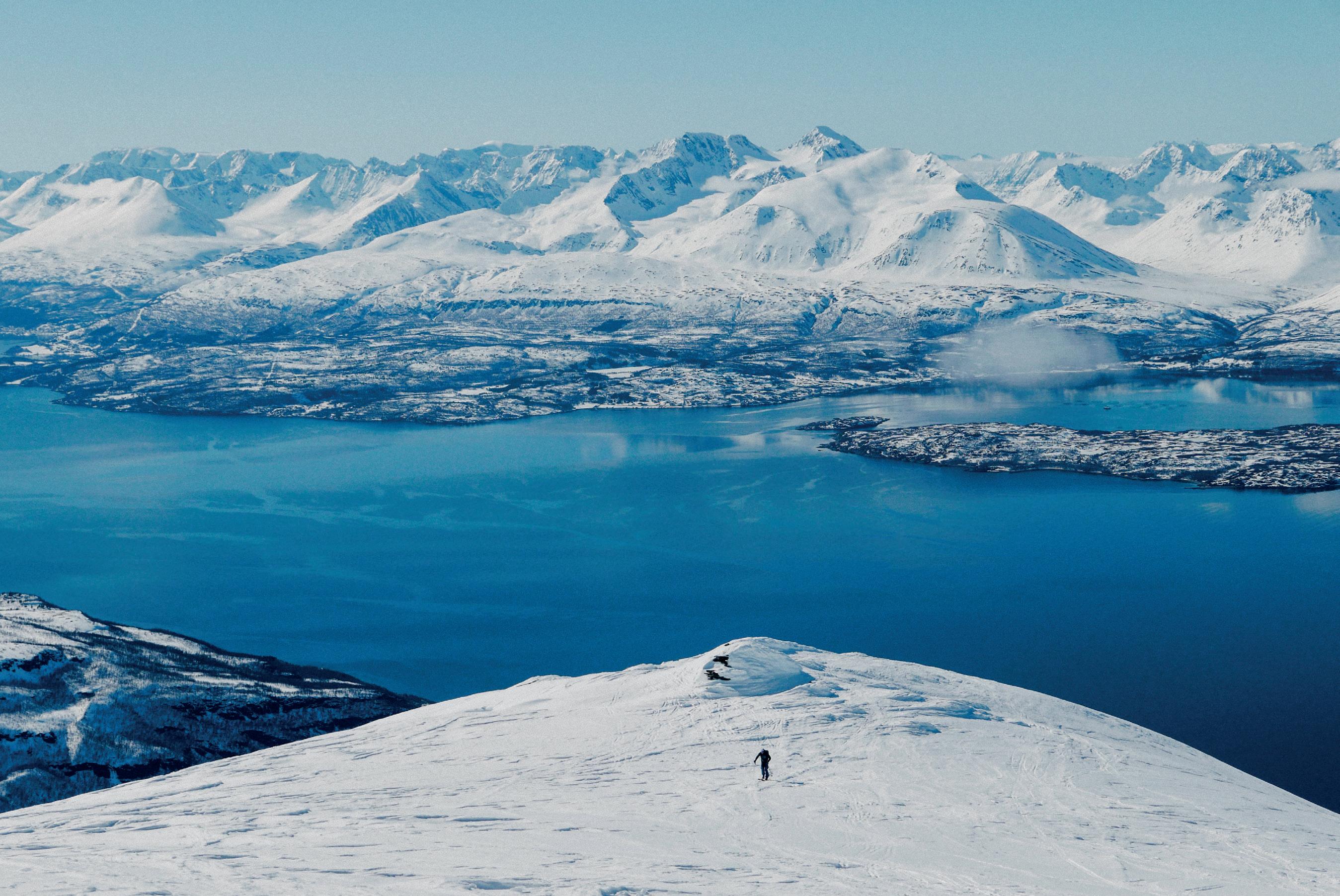
84
Discomfort & ravanage in the Arctic
BY MARTA MANZONI PHOTOS FILIPPO SPINELLI
Terrific powder, Far North landscape and people risking their lives for a selfie. That's not how it went. My trip to the Lyngen Alps, a very popular resort in recent years by ski mountaineers who can afford it, ended even before it started, when a ski instructor hit me and broke my cruciate ligament. I left anyway, with my sister and some friends.
At the airport, a slightly creepy lady curbs our enthusiasm but she’s right: "be careful because the avalanche danger is high and unfortunately some skialpers have died in the past few weeks." My anxiety rises, and it doesn't go away. It's nice outside, but the weather sucks. But the fjords can be seen. The boundless white is lost in the blue. The mountains are steep and round, they sink into the sea. They are low but seem tall. There is one guy on a bike, not young but cool, who has a backpack with his skis on and makes the approach in this way. Then there are many Italians like us who go around with big cars, clash with the wild skyline and have nothing that can be considered sustainable. However, we talk a lot about the environment, for example there is a girl with us who is an activist. One day we go to the supermarket and she, Adele, does dumpster diving: she dives into the bin behind the market and re-emerges with everything. Bananas and oranges still wrapped, cheese not even expired, vegetables in excellent condition and a lot of other stuff. We save a lot of
food that otherwise would end up in landfills and we seem to have done our daily good deed, plus we have also saved some money (here everything costs a lot and we loaded our suitcases with oil, wine, parmesan, sauces and other stuff stuck in the middle of the boots, a bottle opened in Filippo’s bag and now he has his Gore-Tex tasting like beer).
This activity, that for someone is a recreational activity while for others is necessary, is linked to the freegan ideology, an anti-consumerist lifestyle that combines veganism and food recovery, born in the States in the nineties and now increasingly widespread, particularly in Scandinavian countries, much less in Italy. Oh, these Gen Z guys truly are smart. Like another time I had this conversation with a friend who is ten years younger than me and she told me that she no longer buys new clothes and that vintage is the coolest trend of the moment. Lyngen Alps have also become fashionable and actually rock. Cultural parenthesis follows.
85

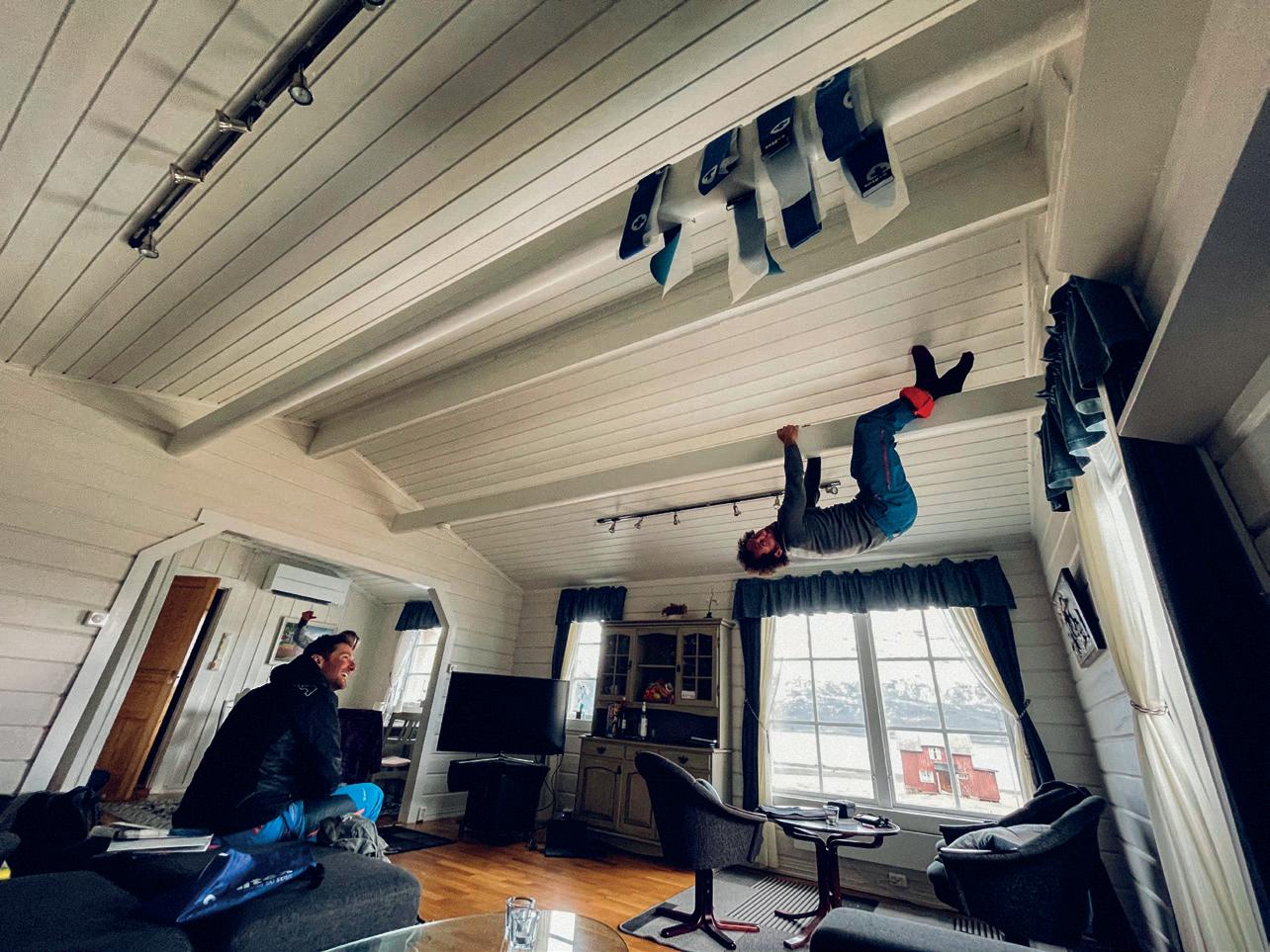
86
Lyngen Alps is a massif in the Scandinavian Alps located east of Tromsø in northern Norway, above the Arctic Circle. They are mostly located on the Lyngen Peninsula, partially cut off by the Kjosen Fjord. The massif culminates in Jiehkkevárri (1833m), which is also the highest peak in the county of Troms. Water and snow. Sea and mountains. The roof of some houses is covered with grass and shrubs, used as insulation to protect themselves from cold and rain, a centuries-old tradition. As Fabio says, who has already been here in 2018, when there was dust and sun, having two consecutive days of good weather in these lands is not easy and therefore we might as well get over it and be ok with cloudy skies, wind and maybe even a nice snowfall. If you’re lucky you can get a window of good weather and recharge yourself with all the Norwegian beauty. However, people here wear their skins every day, even with a weather that is not so great, even if there’s no snow, but they manage to find some excursions worth doing. Always attentive to safety and evaluating all the pros and especially all the cons.
It's nice to see them go out, suffer, get burned and come back with a smile. They raise my spirits, it doesn't take much. According to Fabio, this is the spirit for any journey, to adapt and explore, something beautiful always comes out. Filippo’s photos show that. We cook, chat, watch epic descent videos and play Jenga. We see the Northern Lights. Fuck the doctors, I’m going with them tomorrow. We are in the woods, the skis on the snowless meadow, and I’m already sweaty. Some chat. The line disperses immediately. I launch myself trying to follow my sister and the others. It is very hard, a via crucis without a cross. They have an alien pace. It starts snowing. I am satisfied reaching a top that is not the top. They go up and come back down soaked. Then off, we go down. Good laughs. True and earned. We grab
the beers. For Chiara, skialp means accepting to not control nature, only going as far as she decides. Be patient. Review your choices, even when it's frustrating.
It forces us citizens, who have hardly taken a few days off and expect as many days of top conditions and trips, to slow down and welcome things as they are. It is not the summit that matters but how you get there. For many of the crew the best outing is the "double channel, double exposure".
The name of the summit is Store Lakselvtinden. At the beginning it is like being in our Alps, if it weren't for the fact that the gully, very wide, has a view of the fjord. Going up, you come out on a small plateau. A second channel starts on the left, with a jump of rock shortly after the start, easily surmountable. Then there’s snow up to where there is a piece of exposed snowy ridge leading to the top. The beauty is the environment, with many small glaciers all around. The mountains catch the eye that fantasizes above them. I wasn't there but I was part of the party. Francesca, Marco, Adele, Fabio, Chiara, Filippo and Andrea, you have given me much more than the summit. Bringing everything home, we made it out more alive than ever.
For Chiara, skialp means accepting to not control nature, only going as far as she decides. Be patient.
Review your choices, even when it's frustrating. It forces us citizens, who have hardly taken a few days off and expect as many days of top conditions and trips, to slow down and welcome things as they are. It is not the summit that matters but how you get there.
87
Pain without gain Henri Aymonod
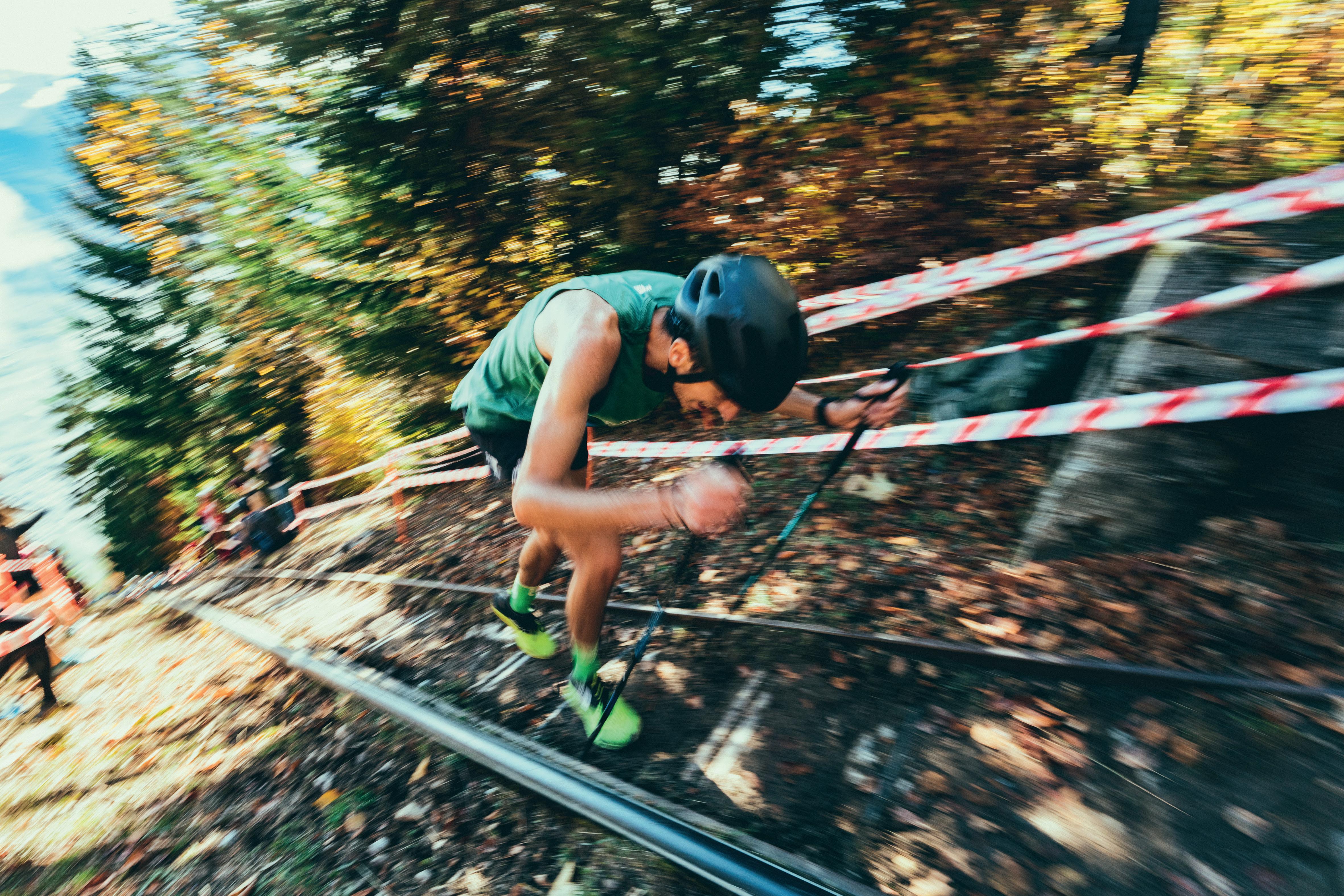 BY FILIPPO CAON
MATHIS DUMAS
PHOTOS
BY FILIPPO CAON
MATHIS DUMAS
PHOTOS

If you google “Henri Aymonod” the first photo you will see is one of him grinding steps next to a vineyard with a bike helmet on his head and a pair of poles. It is not a photo that will remain in the history of this sport: there are no mountains and glaciers, there is no romantic route in the woods, there are no rocks overhanging a Norwegian fjord or a Swiss lake. There is only him and the altitude meters that remain to run printed on his face, pure suffering, without aesthetics. This is the vertical kilometer, but I think I can say that this is running in general, the least cool sport in the world: pain without reward. This is why it is the most fascinating one.
Hi Henri, Francesco Puppi interviewed you last time. It was a good interview because it went a bit beyond the classic questions, it seems to me that Italy talks little about the personality of an athlete while it focuses more on results and competitions, which is fine but a bit boring. I say this as a journalist, but you are the athlete, so I should ask you. Actually yes. It often seems to me that some people only want to try to jump on the bandwagon. Everyone comes looking for you when you get a good result, but in preparation times, like this one, there are far fewer interested journalists who really want to understand not only the part about races and victories but more about the type of approach an athlete have. Interviews are often like "how was the race?”, “you won, are you happy?” and so on.
We too always feel obliged to ask many questions but in reality we rarely really ask anything new. Are you bored doing interviews? Ahah. Eh, partly yes honestly. The one with Francesco
had been a wonderful interview, we are also very good friends. But the classic report interviews are all the same. As you say, it is a very didactic way of narrating, in which case nobody is very interested in knowing how you approached the thing or the path you followed. Then we talk about sport but dedication is something that goes beyond the race itself, it would be nice to do something that inspires not only the world of competitions but the outdoor world in general.
In the interview with Francesco you said that training theories are constantly validated and then surpassed, that they are interesting but take second place to experiences, to the process. How do you train? Or rather, how do you rate the improvement and what does your brain trust in the process? The athlete trains the coach, not the other way around. It is a constant dialogue for which a relationship of mutual trust is created. The coaches of the past did not perceive it. I train with Paolo Germanetto, the coach of the national team, and we talk to each other every day, we change programs along the way and in general everything is very flexible. Sure, we've set ourselves a long-term goal, which is important, and a number of smaller goals, but otherwise I trust the process regardless of the problems that may be in between: he is very attentive to how I feel and tries to work on the basis of that, but to succeed the dialogue is fundamental, if you only execute a pre-set order in the long run it becomes counterproductive. It's a relationship that takes years and there is no magic formula. The coach is almost a psychologist you trust blindly, but only because the conditions have been created on which to base that trust.
And instead how do you live the unexpected from a psychological point of view? Injury is always unexpected. It's like when you visualize a race: you think about where you can attack, where others can attack, but then in the 90% of the situations the race is always different. You must be able to focus on what you are doing and not on what others are doing. Injury is similar, you don't have to think in the short term, you have to look beyond: understand what you did wrong, because it's almost always due to a training error, and you must know what to do to overcome it. But it's not worth taking it as something negative: there are other problems. Try to be focused on the goal, of course the race is close you have to think about what you did before, an injury doesn't erase everything you did before. You have to try, stay positive and give it all during race day.
90
Everyone comes looking for you when you get a good result, but in preparation times, like this one, there are far fewer interested journalists who really want to understand not only the part about races and victories but more about the type of approach an athlete have.
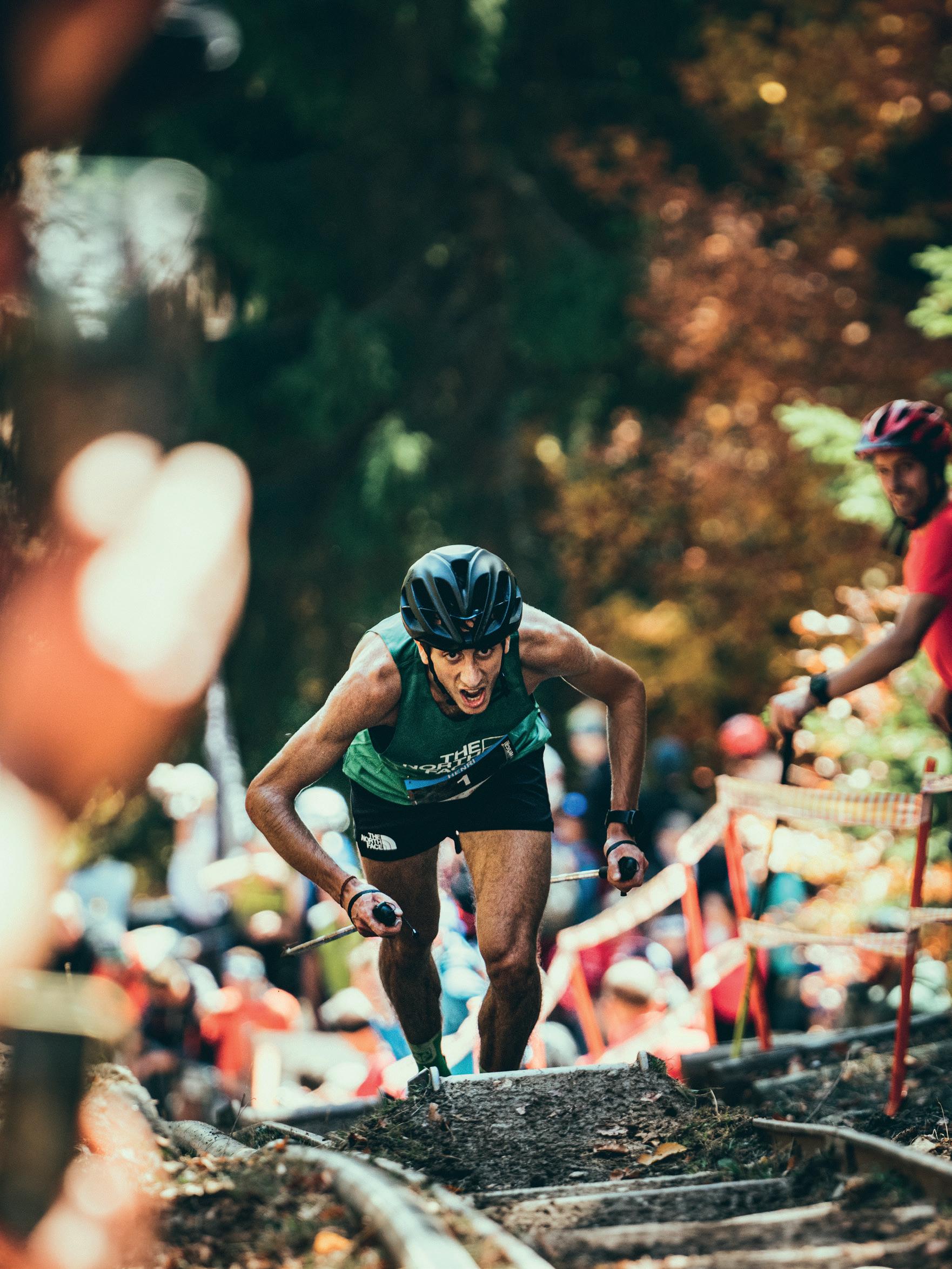
If I remember correctly you have been in the United States with The North Face athletes. Where were you? Bishop, California. We were there with The North Face athletes. I've met athletes from all disciplines, we play different sports but you realize how similar mentalities are and there's something to learn from everyone. It was nice, we talked about personal projects. And then I went to Slovenia with James Poole (also interviewed in The Pill’s issue 56 ed.) for the new North Face campaign. I was there on skis, James ran. It was another beautiful moment, it was like being on a movie set. I had shot other videos but they were all much simpler, but there was a crew there, it was fun.
How do you feel in situations like these? I mean, how do you feel about being an athlete and having to do these kinds of things simply because they ask you to? Also starting with the interviews. I always see them as opportunities. I didn't know James for example. Then we usually do these kind of things during the off season when you’re feeling like pulling the plug. Slovenia was in an ideal period of time. I had done the World Cup, I had been to America, I was injured. Then it's nice to do things not only related to running, otherwise it becomes redundant. Even in the United States it was nice to talk to other athletes not only about their sport but about how they live life in general. Same thing in Slovenia, talking to directors and operators: it's different, you change the themes, you compare yourself with other guys and everyone has something to teach you even if they do something different from what I do every day. It's always very nice.
Going back to your discipline, a video about you and the vertical race Fully will be released soon, what does this race represent for you? Vertical races are an effort in which I can express myself well. I think that VAM, the average ascent speed, also used in other disciplines, is a good parameter for our sport: and the idea of climbing 1000 meters in altitude in half an hour is something I like and that belongs to me. This is probably due to the context in which I live and grew up: the routes in the Aosta Valley are very steep. With my twin brothers, for fun, we used to play and see who would get to the top of a mountain first. Fully has fascinated me for many years, and I think that any trail runner, in general, should give it a try, that’s because it is difficult to find such a steep and linear route with such good footholds, and in general the route is really perfect. In addition there are the vineyards and the old hydroelectric plant. All the strongest athletes in mountain running have faced it and winning it three times in a row is truly incredible. My idea would be to do my best performance on a vertical kilometer on this course, on which I think I can still improve, and so the project for The North Face was born.
Shoes. Is there something new? The North Face has revised Vectiv a lot, it seems to have changed a lot. Yes, I like it. They were the first to use carbon in trail shoes and then others started to do it too, but carbon is always difficult: in athletics and on the road, regular support helps, in trail it is difficult to use carbon well because it tends to make the shoes either feel too dry or bounce too much, making it difficult to run downhill. Compared to the first
model, the new ones balance the carbon much more with the cushioning part, and in general the shoe is more comfortable.
Vectiv used to be quite tough, although after a few kilometers they changed a lot and gave way. Has the upper part been improved? Yes, in addition to the midsole, the upper part has also been softened. It is developed with a new, more breathable and more supportive material. It's the same material that is used for tennis rackets, so it deforms much less, which usually happen especially where you squeezed the shoe. Now it tightens better, and the lacing has also been improved. I wouldn't even compare it to the old version. In addition there are two versions: the one for sky races which is lighter and has less carbon, and then one for ultra races which is more abundant and generally softer, which I use a lot in training, although it has a thicker plate. I like these shoes, I feel good wearing them.
Fabione says hi, he told me “say hi to that crazy guy”. Ahah Fabio what a man, say hi to him too.
92
Then it's nice to do things not only related to running, otherwise it becomes redundant. Even in the United States it was nice to talk to other athletes not only about their sport but about how they live life in general.
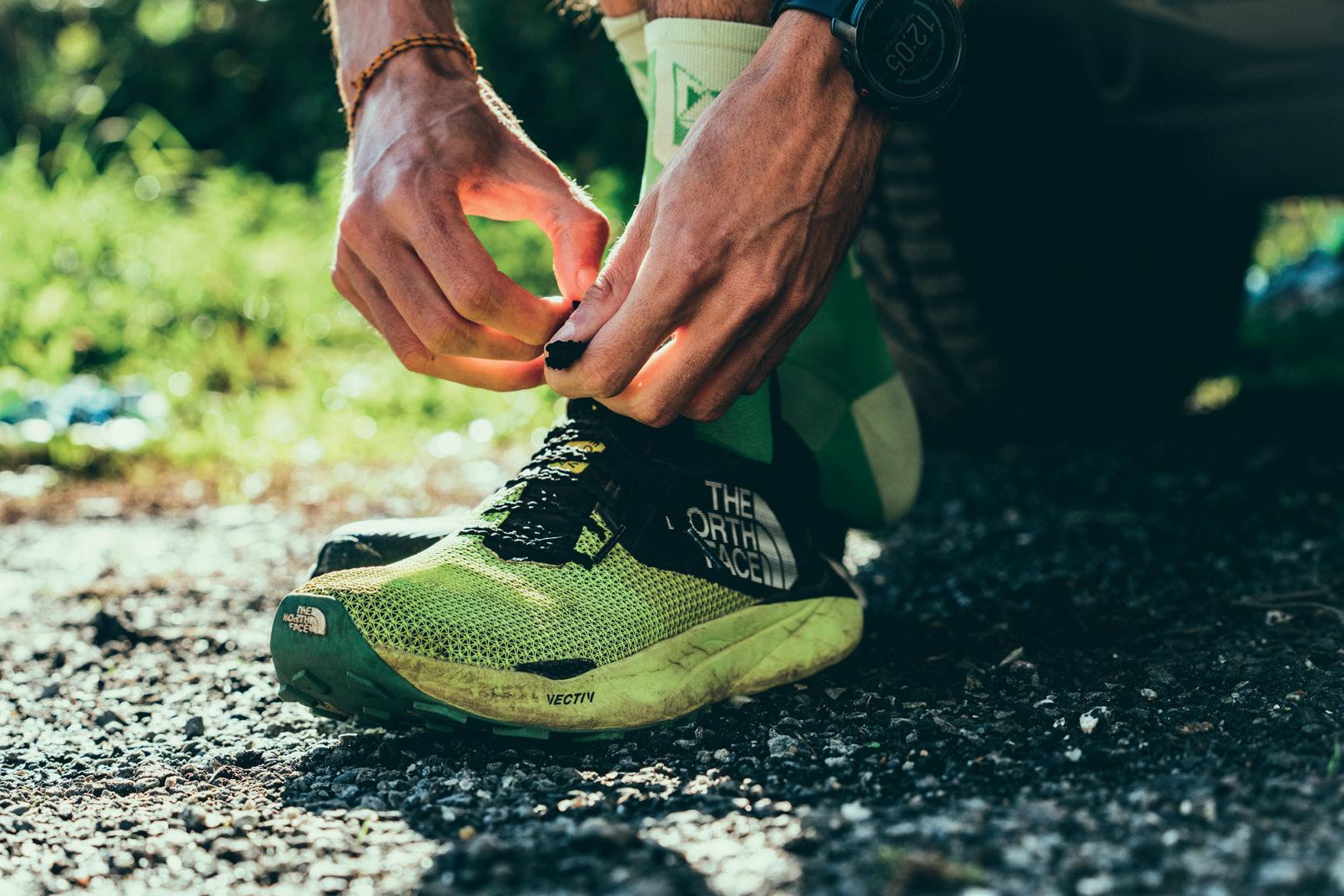
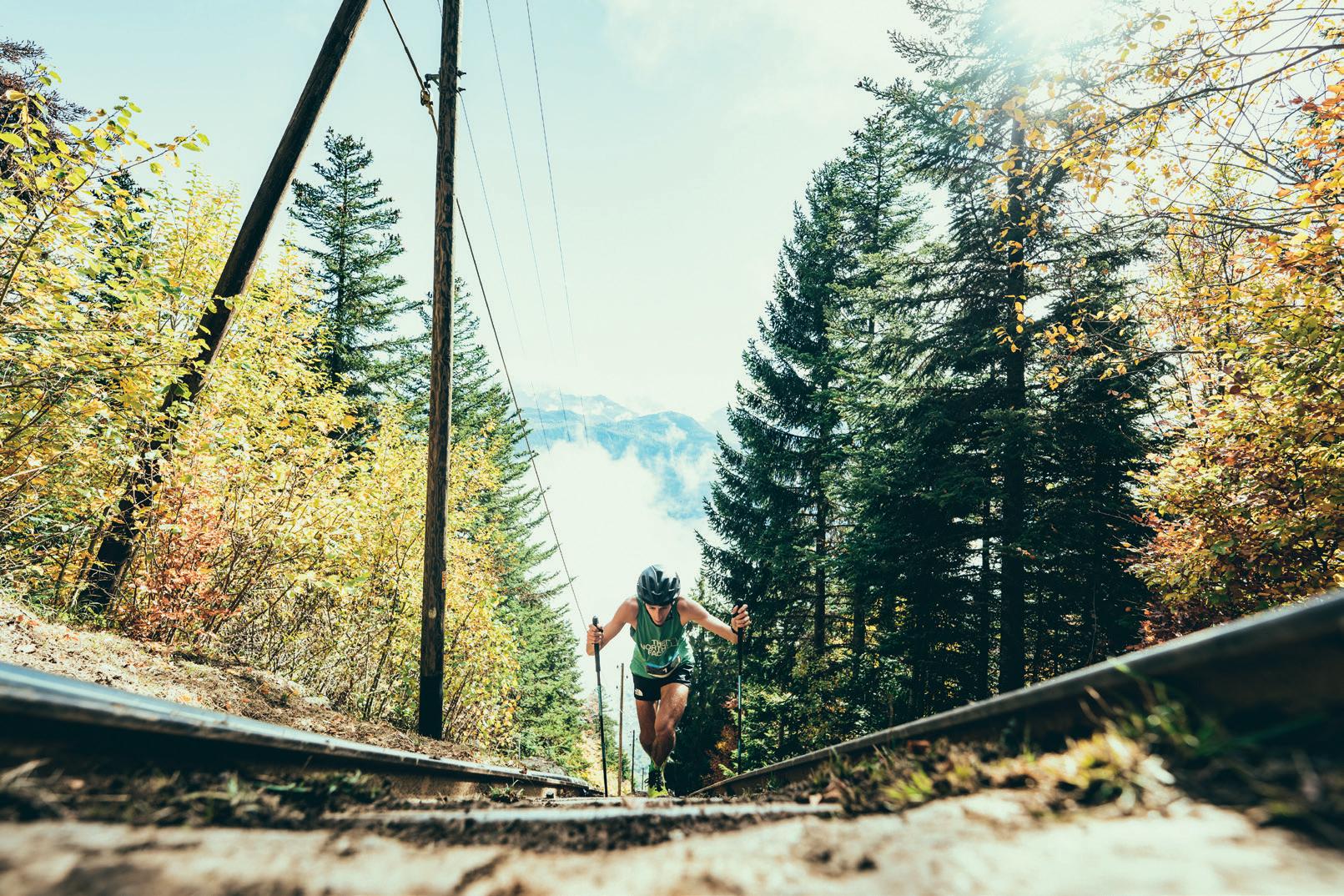
Invisible Ground A snowboard film about vulnerability
BY
These are the words with which “Invisible Ground” begins, the documentary supported by Picture and Smith and created by the snowboarder and filmer Elias Elhardt which, finally I allow myself to say, speaks profoundly about the choices that people, like Xavier De Le Rue and Elias himself, decide to out of mountain life, and of the risk associated with it, their own lives. And it is precisely this life on the edge, both emotionally and materially, and full of contradictions, that Elias and Xavier discuss in an honest and unsettling conversation.
In a world where only the "playful" side of skiing on powder is often showcased, where exposing yourself to risk to bring home some cool shots is normalized, indeed, where risk is not even talked about because, otherwise, how can you sell this discipline to con-
sumers, hearing two pro riders talking about the whole background is disarming. And today it was more than necessary, I would add.
Elias and Xavier first talk about their personal approach to the discipline: the first increasingly focused on the playful side, the second instead fascinated by the possibility of mixing snowboarding with mountaineering. We talked about beauty, the search for beauty in exposing ourselves to raw elements. For Xavier, it is precisely this search for insecurity, away from the comforts of modern life, which leads him to reconnect with his own animal being. And it is precisely this feeling of precariousness, where in a certain sense one has to fight for one's life, the reason that prompted him to do what he has done over the years. To feel animal and consequently feel free.
94
“How amazing does that feel. Gliding, flying through deep fresh snow. Everyone who has experienced it, will know what I mean. When everything goes right. But what if it goes wrong?”
EVA TOSCHI PHOTOS THEO ACWORTH
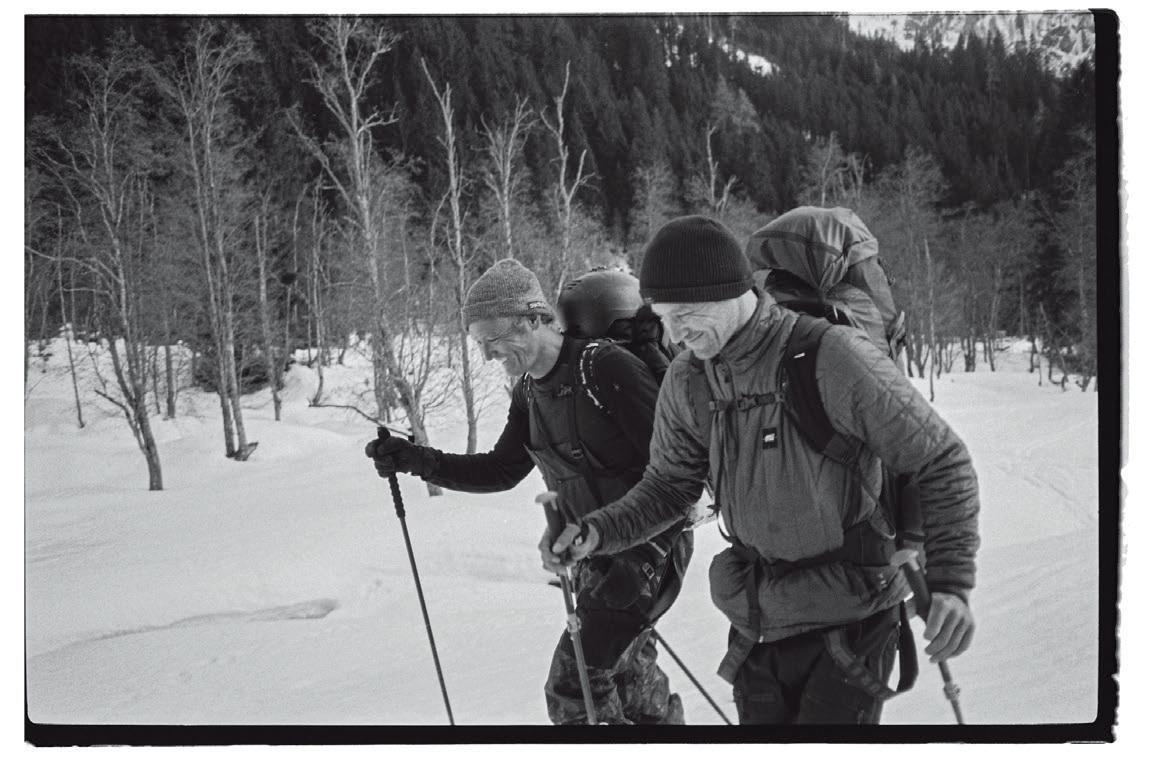

95
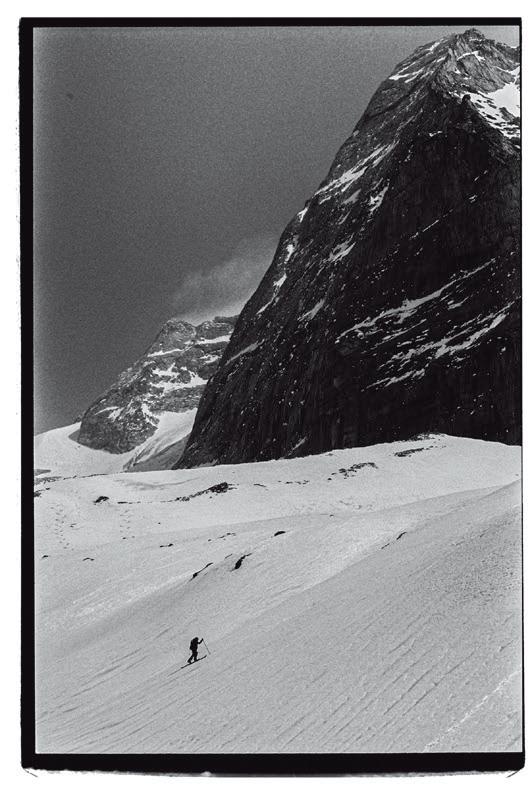
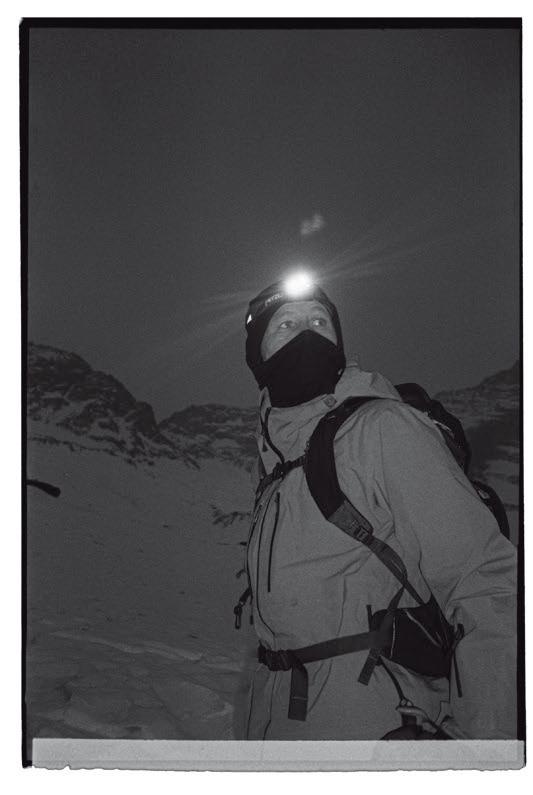
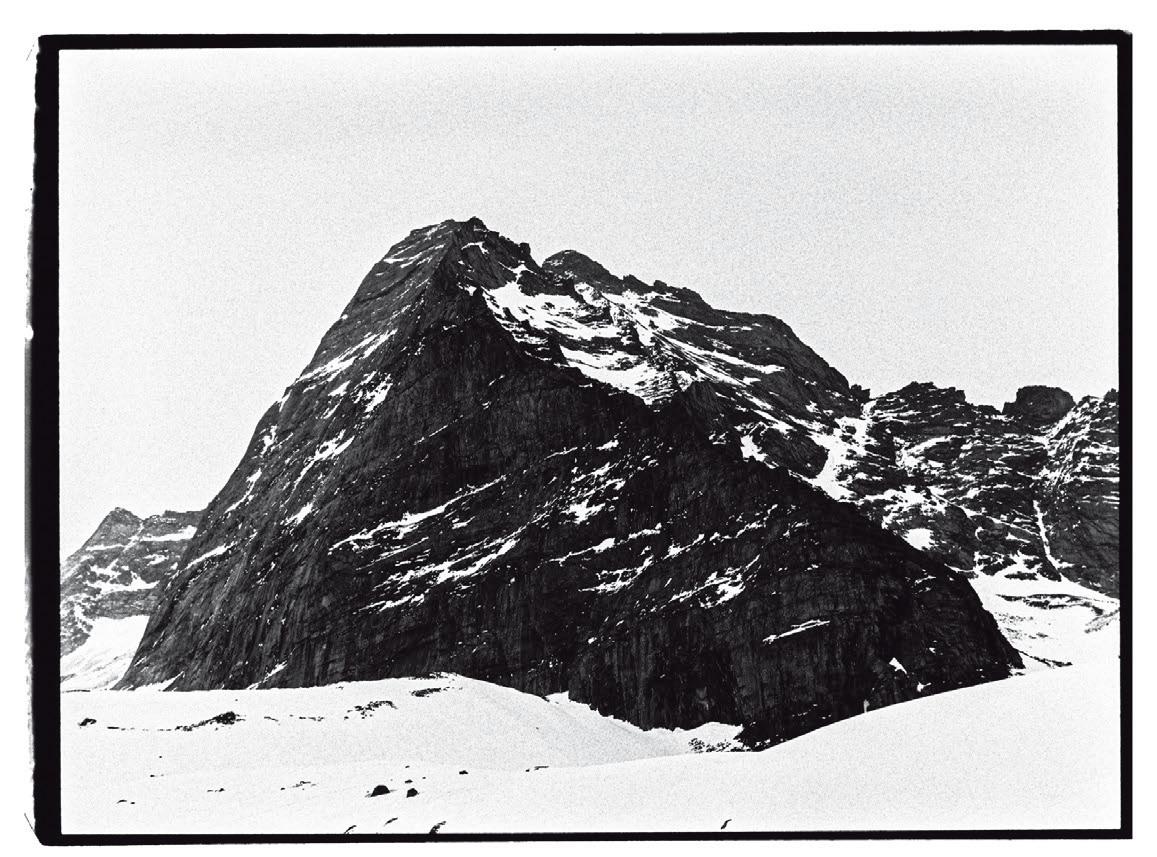
96

97
After sharing their freeriding visions, Elias and Xavier begin to take the conversation to another level: they go deep inside and start talking about experiences that you tend to cancel rather than share. We talk about death, face-to-face death, digging under an avalanche and pulling out the body of a friend, or a 15-year-old boy.
“When you're fighting for your life, freeriding seems so useless.”
In addition to the undeniable trauma resulting from these experiences, that makes you reflect on the role and responsibility that pro riders have in communicating this extreme lifestyle that appears so beautiful from the outside. And it is precisely for this reason that storytelling are needed, such as this proposal in Invisible Ground, which highlight the other side of the coin. In talking about avalanche accidents, Xavier's accident is mentioned: he didn't lose his life by a miracle. At the time, he already had a three-year-old daughter and yet from the hospital window he found himself, after a very short time, contemplating the snow-capped mountains feeling he wanted to be there, despite everything. A crazy thing, if you think that right after that accident Xavier pushed hard in the mountains. Different has been however the reaction he had to the
accident in which his friend lost his life, which had a different impact on him because, as the documentary says, the outcome was also different.
However, it is evident that despite the most painful events, those who love the mountains, those who feed themselves on this (in every sense) the question that arises, sometimes even lying to themselves, is how to be able to continue doing what they are passionate about without hurting the people close to you. Because at the end of the day it's not big business that matters but relationships with others, which are also essential nourishment for a life worth living. So what is the way, the recipe, if one exists, to live this useless and at the same time necessary discipline, in the healthiest way possible?
Go to the mountains with humility, living experiences that make us understand how fragile we are rather than how cool and capable of great feats we are. Reconnecting to our more animal side, as Xavier says, because in this way we become predators, of our ego, and thus we become prey at the same time. Because deep down, we are only vulnerable beings, capable of great things, but at the same time small, fragile, limited. And perhaps it is thanks to embracing our fragility that we can do something good. In this life or in the next one.
98
Because deep down, we are only vulnerable beings, capable of great things, but at the same time small, fragile, limited. And perhaps it is thanks to embracing our fragility that we can do something good. In this life or in the next one.
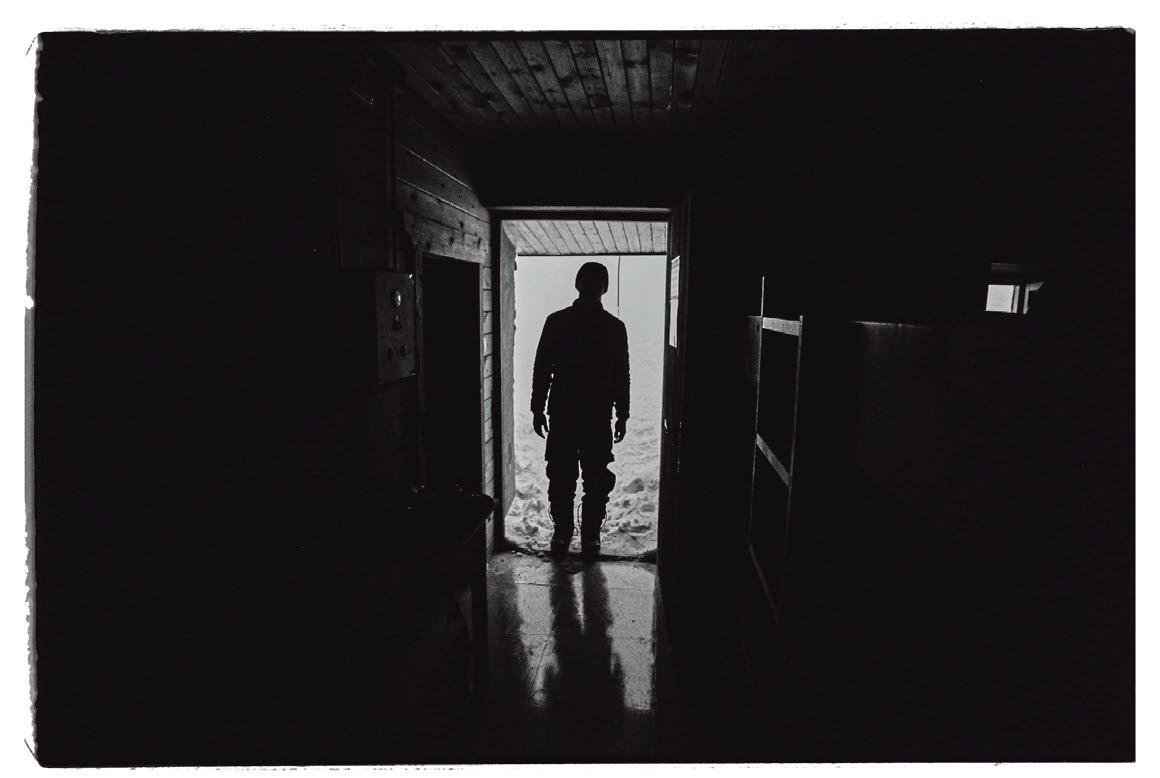
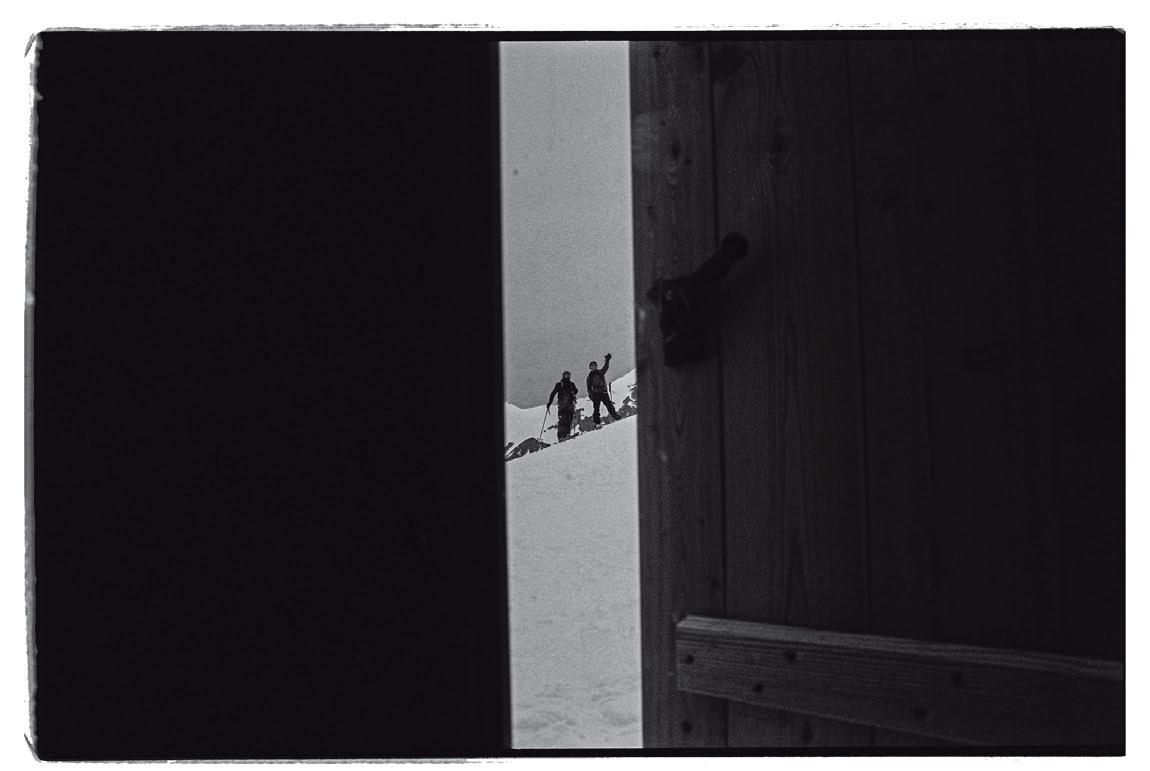
99
The equator and the ice
 BY ILARIA CHIAVACCI PHOTOS ANDRÉS MOLESTINA & ANNA NICOLE ARTEAGA
BY ILARIA CHIAVACCI PHOTOS ANDRÉS MOLESTINA & ANNA NICOLE ARTEAGA

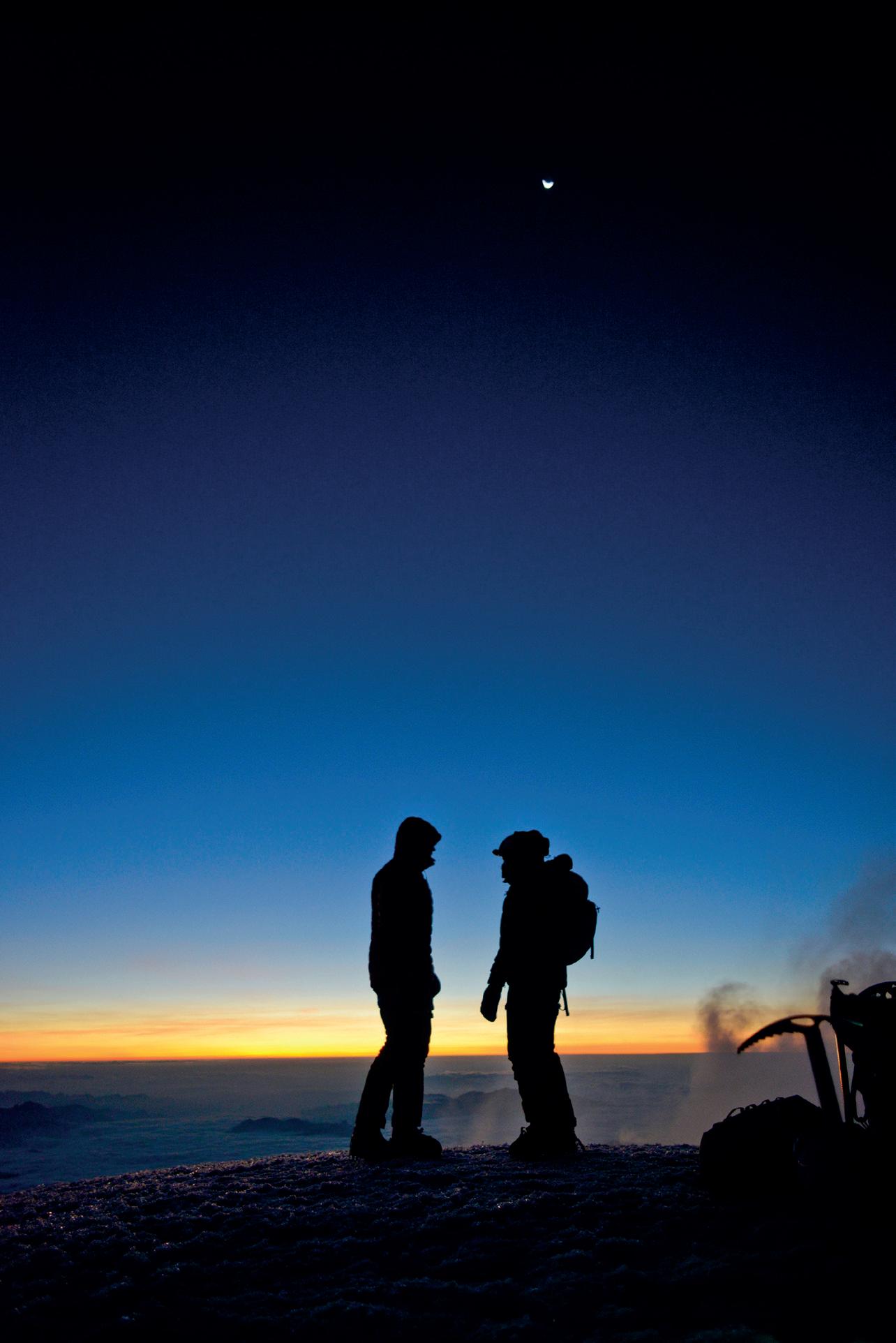
102
There is only one glacier that is located on the equator line, and it is the one hosted by the Cayambe volcano in Ecuador. In total, however, there are seven glaciers throughout the country and, given the location of the nation, wedged between Colombia and the northern part of Peru, these are tropical glaciers. Cotopaxi, Chimborazo, El Altar, Antisana, Ilinizas, Carihuairazo and Cayambe constitute a rare and beautiful sight, but are poorly studied and documented. Tourists mostly focus on Chimborazo and Cotopaxi, ignoring the others, but even these two mountains are actually little explored. For this reason, documenting the life and state of health, quite precarious, of these seven glaciers has become a project and a life mission for two local photographers, Andrés Molestina and Anna Nicole Arteaga. Anna is twenty-six Anna, while Andrés is thirty-seven and they both discovered their passion for the mountain as adults, both were struck by it and decided to make it their profession. They then met through a mutual friend, one of the only two women in Ecuador who carry out the profession of mountain guide, and together they decided to give life to "Ephemeral Landscapes", a project that goes beyond simply collecting testimonials, photos and videos to make an exhibition or a documentary, but has the ultimate goal of raising people's awareness and doing something concrete to save these glaciers, or what's left of them.
Andrés started shooting glaciers in 2017, shortly after discovering himself a mountaineering enthusiast. “I had never done anything like mountai -
neering before, I just did a lot of hiking and camping yes, but I had never approached a glacier before one of my closest friends invited me to climb Cayambe, one of Ecuador's most famous volcanoes. The ascent usually starts at night, because it is colder and the ice is stable: there’s less risk of falling into a crevasse. Except that as soon as we arrived at the base camp, at 11am, planning to rest and leave for the night, the guide told us that the weather conditions would deteriorate quickly, and that we would have to start the climb in that exact moment. I was terrified because I had never done it before, but I trusted him and so we started climbing: we reached the top around 6.30 in the afternoon with an incredible sunset. We couldn't see the city below us, but there was a spectacular sea of clouds and the equator line in front of us: it was such an amazing landscape that it was love at first sight. It was like an epiphany, I remember thinking: My God, where have I been for the rest of my life?” The experience was a real turning point in the life of Andrès, who a few months later started working for a company that organizes trekking excursions, taking pictures for them during the trips and having the opportunity to climb several times on many of the most beautiful mountains of Ecuador, such as Cotopaxi, Chimborazo and Antisana. “Thanks to this job I had the opportunity to climb these mountains many times and I started to notice that something was happening to the glaciers. The most striking example was where we usually put on our crampons to start ice climbing: on Cotopaxi we did it next to a huge ice wall, which I took a picture of the first time I went up. As the months went by I realized that the wall of ice
near which we stopped to prepare for the ice climbing was disappearing. Not only that: the crevasses gradually became wider and the landscape changed inexorably. At that point I started collecting information, I met with the country's glaciologists: it turned out that most of our glaciers were in danger of disappearing within 10 years, especially the smaller ones, while for the larger ones the horizon could reach perhaps 30 years. I felt the urge to do something. And, while there isn't a lot that I can do as a private individual, I believed that one of the most important things was to raise awareness about what was happening to my home glaciers. It's a problem that affects the whole world of course, but in Ecuador we only have seven mountains with tropical glaciers and two of them are in really bad conditions. In fact, they're not even considered glaciers anymore, just ice on top of a mountain.”
The other glaciers considered tropical are located in Colombia, Mexico and Peru, but Cayambe is the only one on the equator line and the aim of the project is to show the rapid deterioration of tropical glaciers, more fragile because of their nature and location. However, documenting these territories is not easy, because many of the areas that the two photographers have to cross are totally unexplored and a certain type of mountaineering preparation is needed to safely complete the expeditions. “We already have many photos of all seven glaciers, but we are not yet able to complete all seven 360-degree loops. We shot almost 80 percent of Cotopaxi, but we stop at 60 for the other ones. Carrying out this project forward involves going through roads that have never been traveled until now, or at least we
103
This precarious and millennial balance is about to crack irreversibly: saving it has become the photographic and life mission of Andrés Molestina and Anna Nicole Arteaga, who document how much the seven tropical glaciers in Ecuador are retreating.
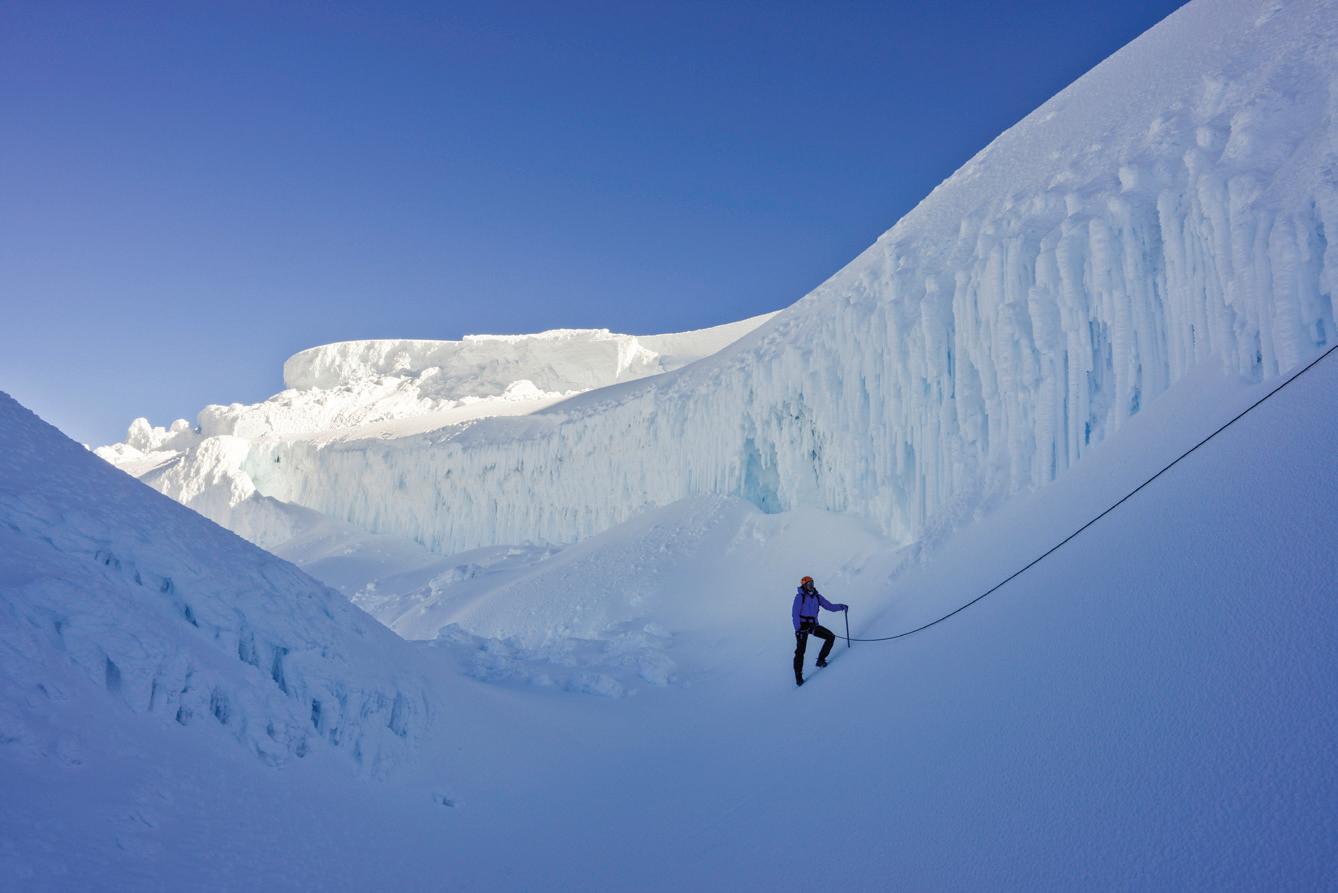
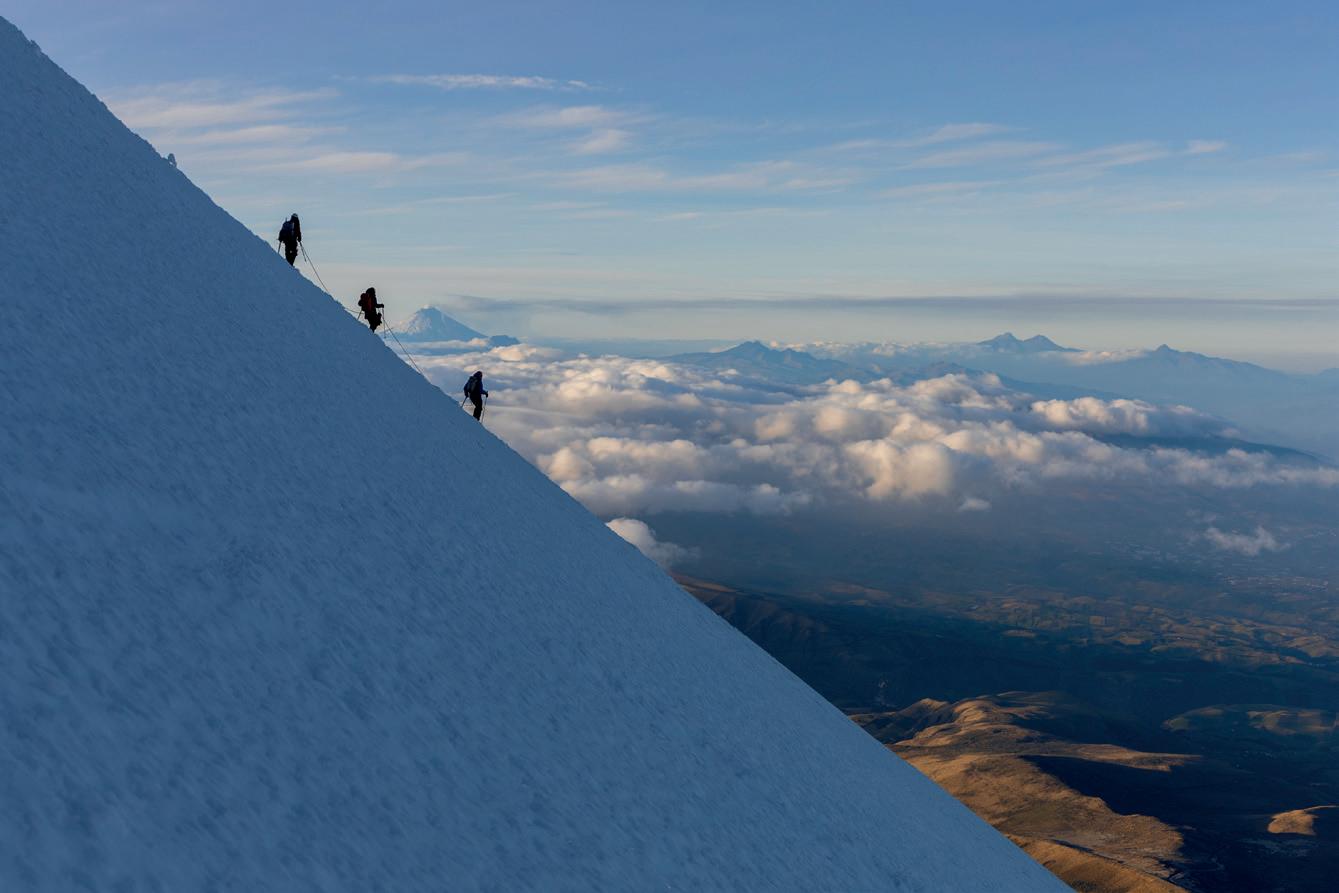
104
don't know anyone who has. Every journey is a discovery and an adventure and the logistics are very difficult."
I ask them why they don't get the help of mountain guides and it is Anna who takes the floor to explain in detail the reality of the outdoor community in Ecuador: "Guides here take the tourists to the top of the glacier and bring them back down, they don't explore the other parts of the mountain: they make sure they are hydrated and that nothing happens to them or that they don't fall into some crevasse, but they don't really explore."
“I started making the 360 loops of each glacier by myself, luckily Anna joined the team: now it's me, her and the glaciers. We have already been lucky to find some maps, which here in Ecuador date back to the seventies, eighties and nineties, they are very dated. We're using a combination of those, Google maps and Garmin GPS to try to orient ourselves and take pictures of the lower part of the glaciers. The main problem, however, is that for the moment we have very few resources, we are carrying out the project on our own. We have no sponsors and we do everything step by step: two weeks ago the government of Ecuador launched a tender to win funds for a documentary, we hope to be able to win it.”
“In Ecuador there is a problem of awareness at all levels, and this is precisely our goal: to educate people about the importance of glaciers” Anna continues. “We want to show what a big deal it is for everyone that they are disappearing. How this has effects on water resources, but also on grasslands and crops. I think one of the main reasons we can't raise funds is because most people here in Ecuador either don't understand the problem or simply don't care. Many people who live in cities have no connection with nature, they feel it is distant. But if you like hanging out in the mountains, backpacking and exploring, you can't remain indifferent. But there are no recent studies on glaciers in Ecuador either.”
Andrés: “The country has no funds to finance glacier studies, so the latest ones are 8-10 years old. Our government doesn't have enough money to fund trips by glaciologists and people aren't used to spending a lot of time out in nature, they don't realize what's happening to our mountains. What I find really sad is that, for the most part, they don't care. We are sharing photos and information with the Ministry of Culture and Heritage: glaciologists have access to everything that is happening through our eyes. We are a small nation and, even on a global level, I think very little is known about us even compared to the more well-known realities, such as Cotopaxi: when I did the 360 loop I was the first one to do it, no one had ever tried it before.”
Anna: “There are many more tourists who approach Cotopaxi compared to Chimborazo because it is closer to the capital city: the damage to its glacier will also have a strong impact on the local economy. The lives of many people who work in tourism depend on the health of its glacier, which is retreating visibly. The maps show that the beginning of the glacier must have been at an altitude of 4600 meters, but at 5100 meters high there is still no trace of the ice. Cotopaxi is an active volcano: this causes the mountain to be hot and cause the ice to melt faster, but it is sad to see how one of Ecuador's iconic mountains is losing its glacier and there is so little interest about it. For us, the fundamental thing is to complete the first round of 360s, but behind each expedition there is a very meticulous preparation, in addition to the equipment that we clearly need. We need a 4x4 car to get there, in addition to dehydrated food and camp stoves, which are trivial things, but not here: it's not something people usually do in Ecuador. We ourselves proceed by trial and error, understanding from time to time how to prepare backpacks in a more efficient way, how to make them lighter and more functional. We try to do at least one expedition a month, but here in Ecuador the weather is unpredictable, it changes very quickly. When
Andrés went to El Altar he spent five days in a tent because it never stopped raining. We are both putting a lot into this project, not only in terms of effort and energy, but also in personal savings. Plus we train every day, to make sure we can walk with backpacks and carry everything we need. We have to be prepared both physically and mentally, we have done all kinds of courses, from avalanche courses to survival courses, up to decision making and orienteering ones.”
In fact, Anna too has undergone a sort of epiphany towards the mountain, it is not something that has always belonged to her: “I was born in Ecuador, but lived in the United States for a long time, in New York, a totally different environment. During a trip over the Christmas holidays, my father, who is a pilot and has an ultralight airplane, took me on several flights around the volcanoes. It was there that I began to look at the mountains from another perspective and to be intrigued and fascinated by them. A girl friend of mine, the very one from the avalanche course that introduced me to Andrés pointed out to me that in some of my photos I had shot avalanches without even realizing it. I returned to New York, but then in 2020, when the pandemic started, I wanted to go home to change my life and do more and more things related to the outdoors. So in January 2021 I took part in an expedition with a hiking school in a very remote area of the Andes: for me it was very hard, because I had never done anything like it and the route was not easy, but it was something that it changed my life. That trip was the confirmation that by returning to Ecuador I had made the best choice and that there were endless possibilities for me as a photographer in my homeland. After a while I started working with the hiking school, taking part in hikes and making reports, but I also started climbing and mountain biking."
105
Taking the world wherever it is
BY MARTA MANZONI
PHOTOS ANDERS MØLLER VESTERGÅRD
The snow that runs through the veins. Tails of whales jumping on the horizon of the Lyngen Alps. An outdoor photographer and an extreme skier. A classic, revolutionary, ski mountaineering adventure. The arctic. An inimitable and rare light, to be treasured. The sun here is special, even more precious: it lives for a short time, illuminating in perfect harmony together with the moon. Anders Møller Vestergård has about four hours available to shoot Eivind Wergeland Jacobsen drawing his dreams on the snow. A single, long, golden hour, before darkness eats everything up again. As always in his work, Anders Vestergård is alone, but in excellent company. It's November, an exceptional time to ski these small, large Norwegian mountains which, like waves, perpetually emerge and plunge back into the ocean, in an infinite movement.
106
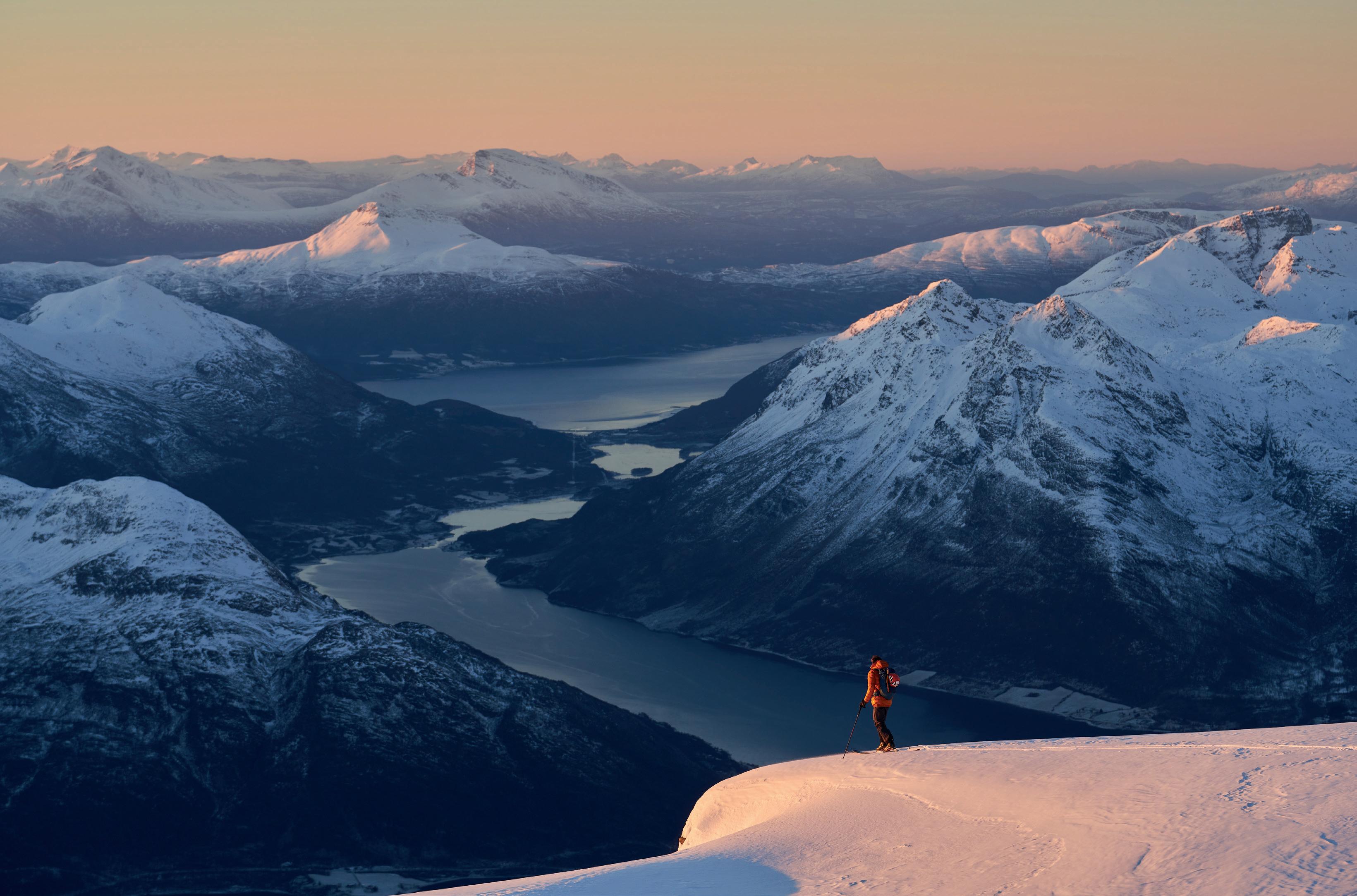
How did the project go? Eivind: The day started very early, around two in the morning: we wanted to be ready for when the light came, and we also had a two-hour drive to do. The choice of the period was not accidental: in fact, the polar night would begin the following week. We knew we would only have four hours of clear light, an exceptional golden hour during which the sun would emerge for about an hour. The mountain we have chosen for the project is called Holmbukttind, and it is 1666 meters high: the peaks here are lower than the Alps but just as challenging. With the skins we started climbing from sea level, so quite a bit. The first three hours were very demanding from a mental point of view: it was the middle of the night and we didn't see where we were going at all. Luckily I already knew the route and had it saved on my watch, which was good: there was a lot of fog and low clouds on the glacier, and it would have been easy to get lost. We spent ten hours in the mountains and in the end we returned home around five in the afternoon, truly an endless day!
What have been the main difficulties you faced during the photo shoot? How were you organize? Anders: I had about ten kilos of photographic gear with me, nothing unbearable but still a good weight, since usually when you pack your backpack to go to the mountains you always try to be as light as possible, and in fact I was quite slow compared to Eivind. There was no snow for a good part of the beginning of the route, so we had to carry our skis and boots on our backpack for a long way. Another big challenge for any outdoor photographer is the cold: hands
are always frozen! It was minus twenty degrees at the top that day, but in reality I have to say that I wasn't too cold. Even tiredness made itself felt: we woke up really early and after a few hours I was starting to feel a little tired. Going up the mountain totally immersed in the dark doesn't help to be motivated! But seeing the sun rising gave me fantastic energy, exactly what I needed to recharge! Even time management is not a factor to be underestimated: at the beginning I was a little stressed because I knew that I would have very few hours of light available and I had to hurry to reach the summit, while on the other hand I wanted to dedicate the right attention and the necessary space to each photo. Slowly, however, I realized that I would have made it and I calmed down.
The day after the ski tour you also saw some whales... What emotions did you feel? Anders: Someone told me that November is the best month for whale watching in Skjervøy, so I thought I'd take advantage of that. I have some friends who work on boats and they could accompany me and I must say it was a truly amazing experience, I was super excited: also in this case the light was great, and seeing killer whales and humpback whales jumping was a special and very intense emotion.
As a photographer, do you ever think that you are missing out, you are not fully living in the moment, because you are focused on shooting? Anders: Of course, it is one of the most delicate points for photographers, a conflict that always exists. Usually on skis I can enjoy the moment, and indeed I think that taking pictures offers added value to the expe-
108
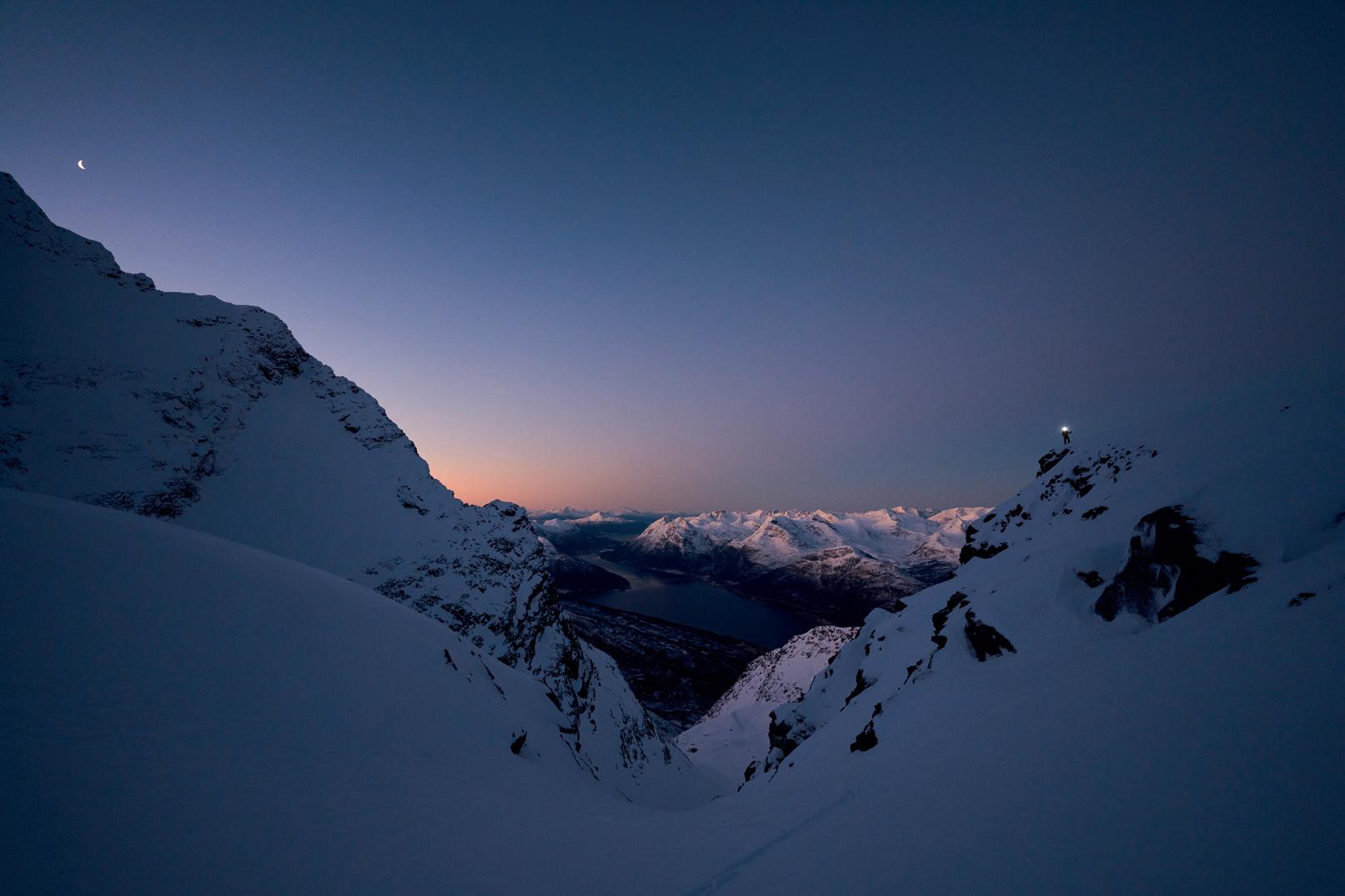
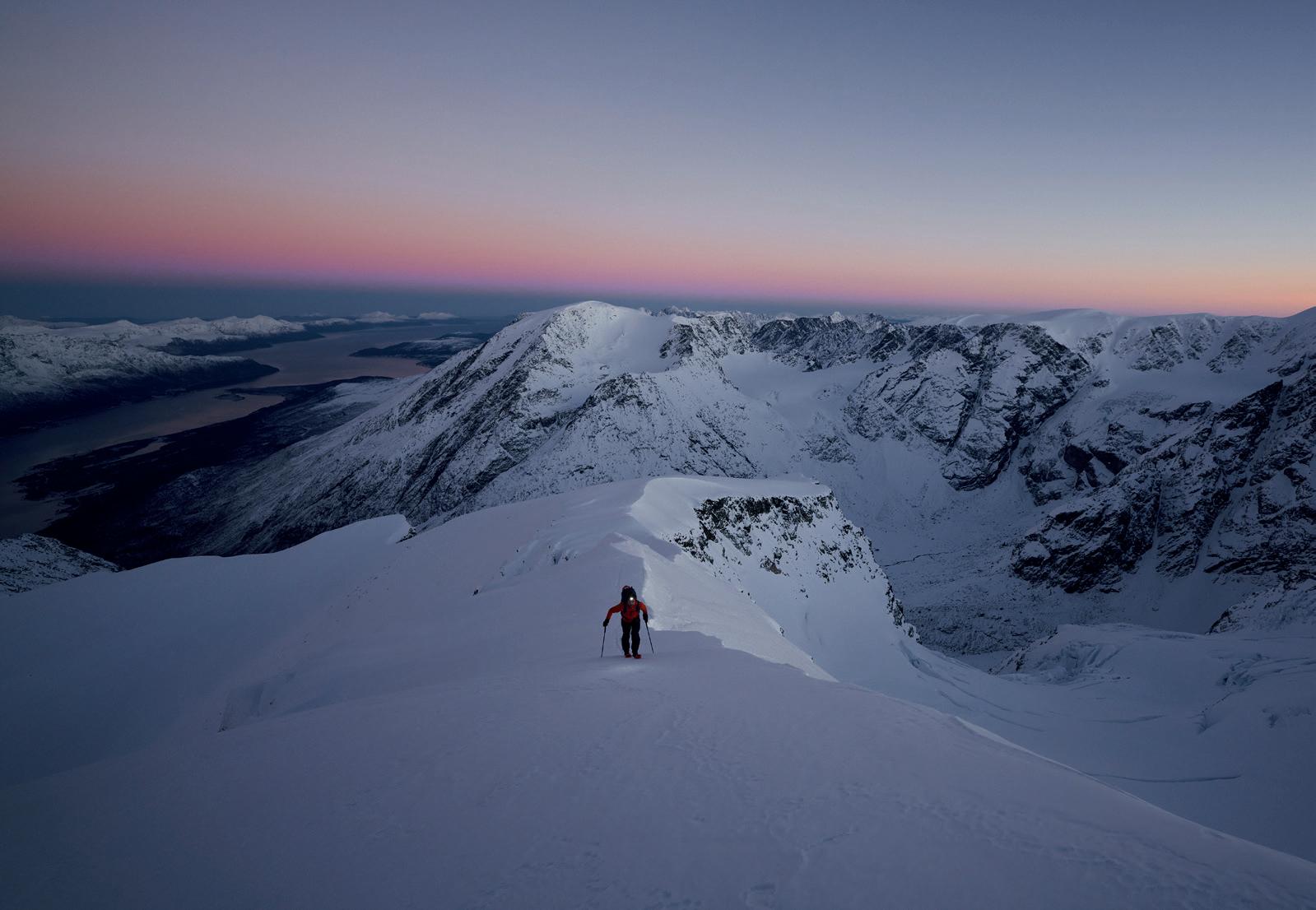
rience. While whale watching I was very focused on taking a picture when I heard my companions on the boat screaming because they had seen a whale jump in another spot, and I completely missed it.
You are a great photographer. Do you think photos steal people's souls? Anders: No, I just try to capture people's feelings. I hope to leave them with a good memory, something to be happy about.
On which mountains do you prefer to ski? Eivind: Lyngen Alps are unique in the world: they emerge straight out of the sea, they’re low but seem high and allow you to run wild with creativity and have endless opportunities when choosing the lines, they also offer a truly incredible scenery, Jiehkkevarri is the highest mountain on which I made a couple of first descents, my favourite. However, usually when I go downhill I am satisfied for a while but then I immediately feel want to ski on another slope.
What's the worst thing about being an outdoor photographer? Anders: Maybe the fact that while you're photographing you can't ski the beautiful lines that the athletes are drawing that you have to capture instead! But between the two things I'd rather take a good photo than ski a nice slope, so that's okay.
Working as an outdoor photographer is the dream of many people… Do you think you are privileged? Anders: Yes, absolutely! I guess I'm not allowed to complain. On the other hand, we must also clarify that it is still a tough job.
Who is the best skier ever in your opinion? Eivind: Vivian Bruchez, he has a lot
of technique and an exceptional sense of aesthetics.
And the best photographer? Anders: Tim Tadder, I like his style!
Who or what would you like to be in a possible next life? Anders: In a dolphin, it just seems like they're having a blast!
Eivind: In a mountain goat. They run up and down the mountains, super fast and with great elegance!
What would you say to the version of you of ten years ago? Anders: I think there are no words that would have made things go differently. I would simply say to him to live, fall and get up, always.
Eivind: Maybe it's a bit of a cliché, but I'd say don't be afraid to follow your dreams.
110
Time management is not a factor to be underestimated: at the beginning I was a little stressed because I knew that I would have very few hours of light available and I had to hurry to reach the summit, while on the other hand I wanted to dedicate the right attention and the necessary space to each photo.
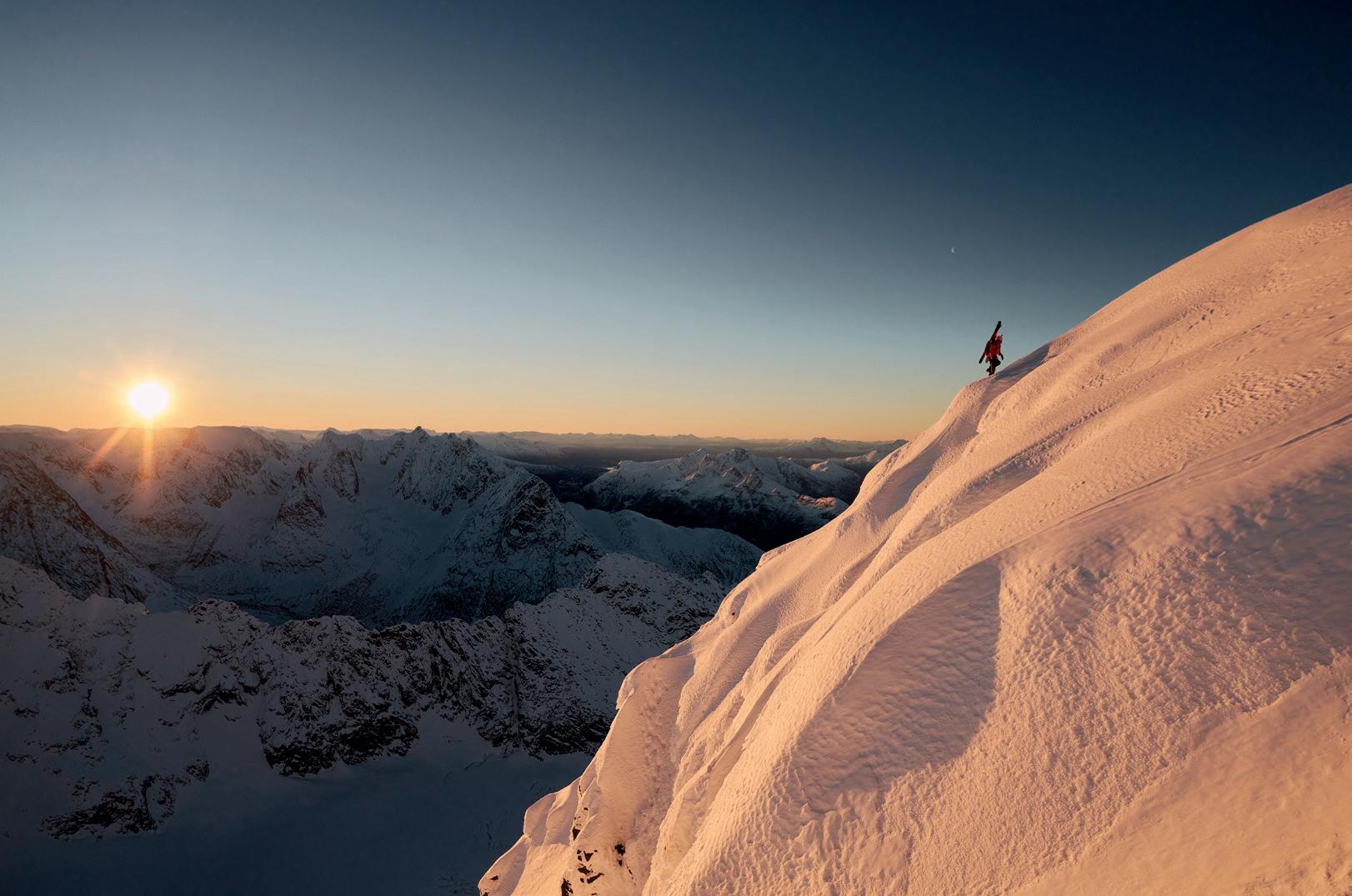

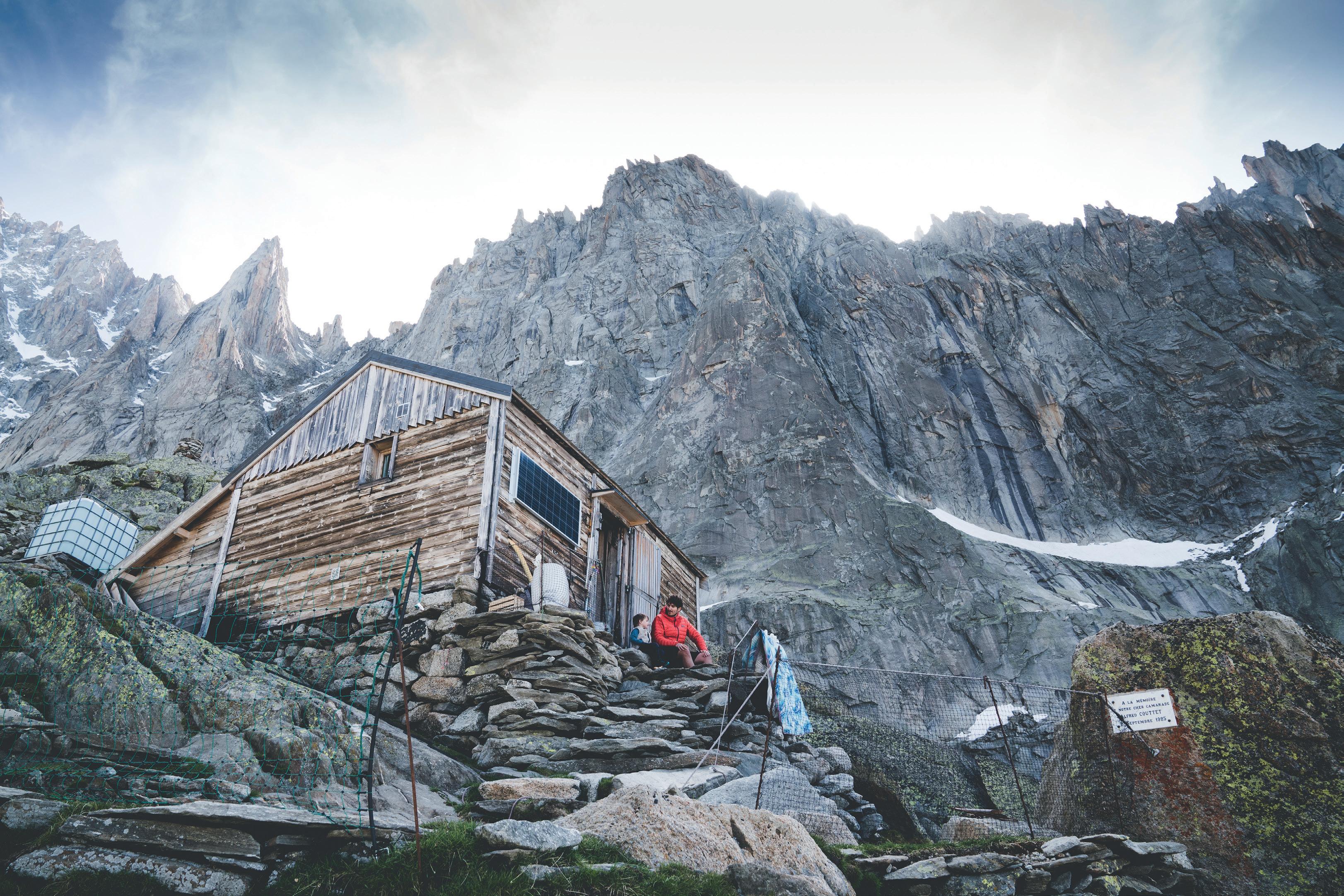
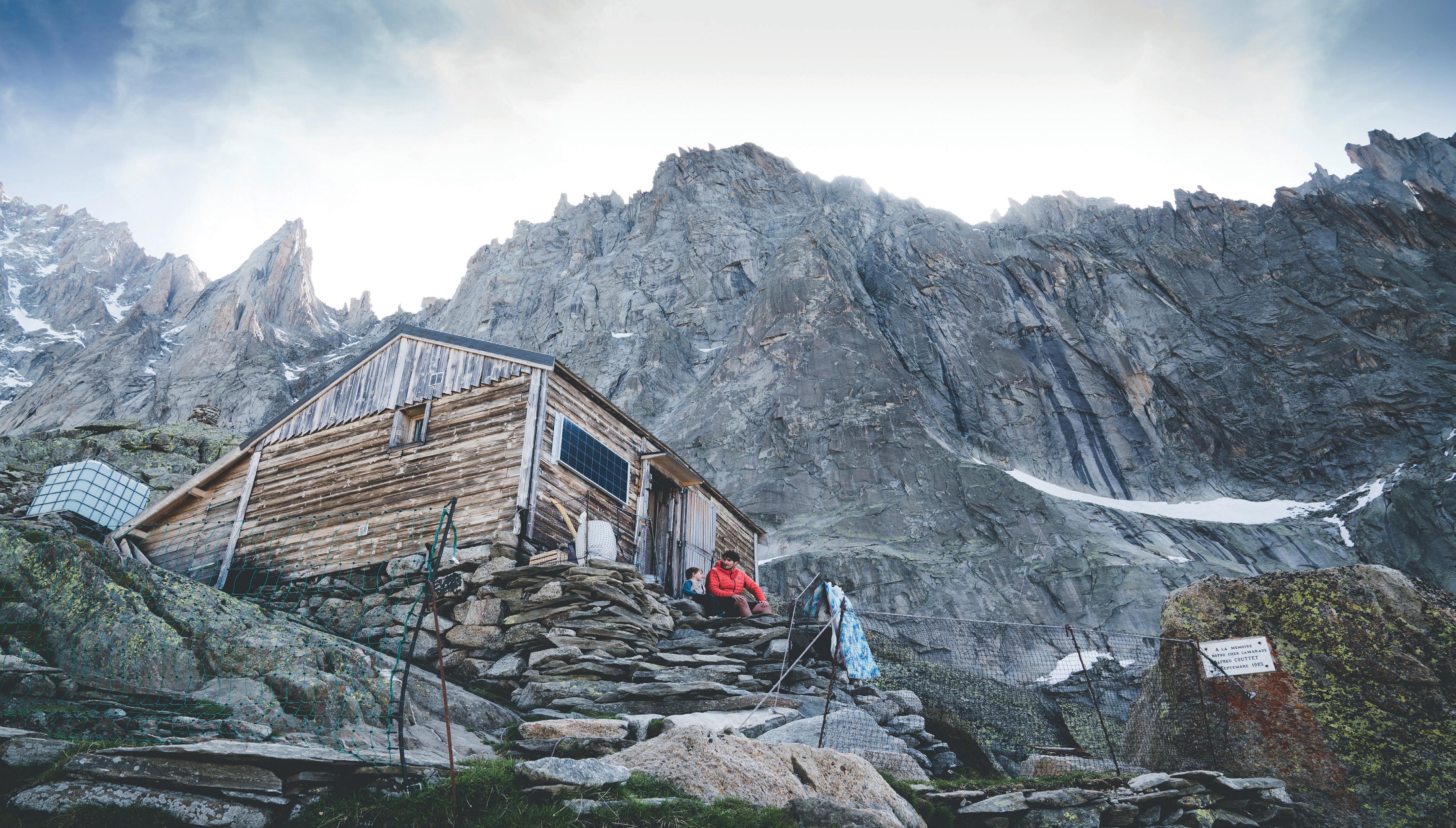
The High Life
 BY ILARIA CHIAVACCI PHOTOS PIERRE CADOT
A PATAGONIA STORY
BY ILARIA CHIAVACCI PHOTOS PIERRE CADOT
A PATAGONIA STORY
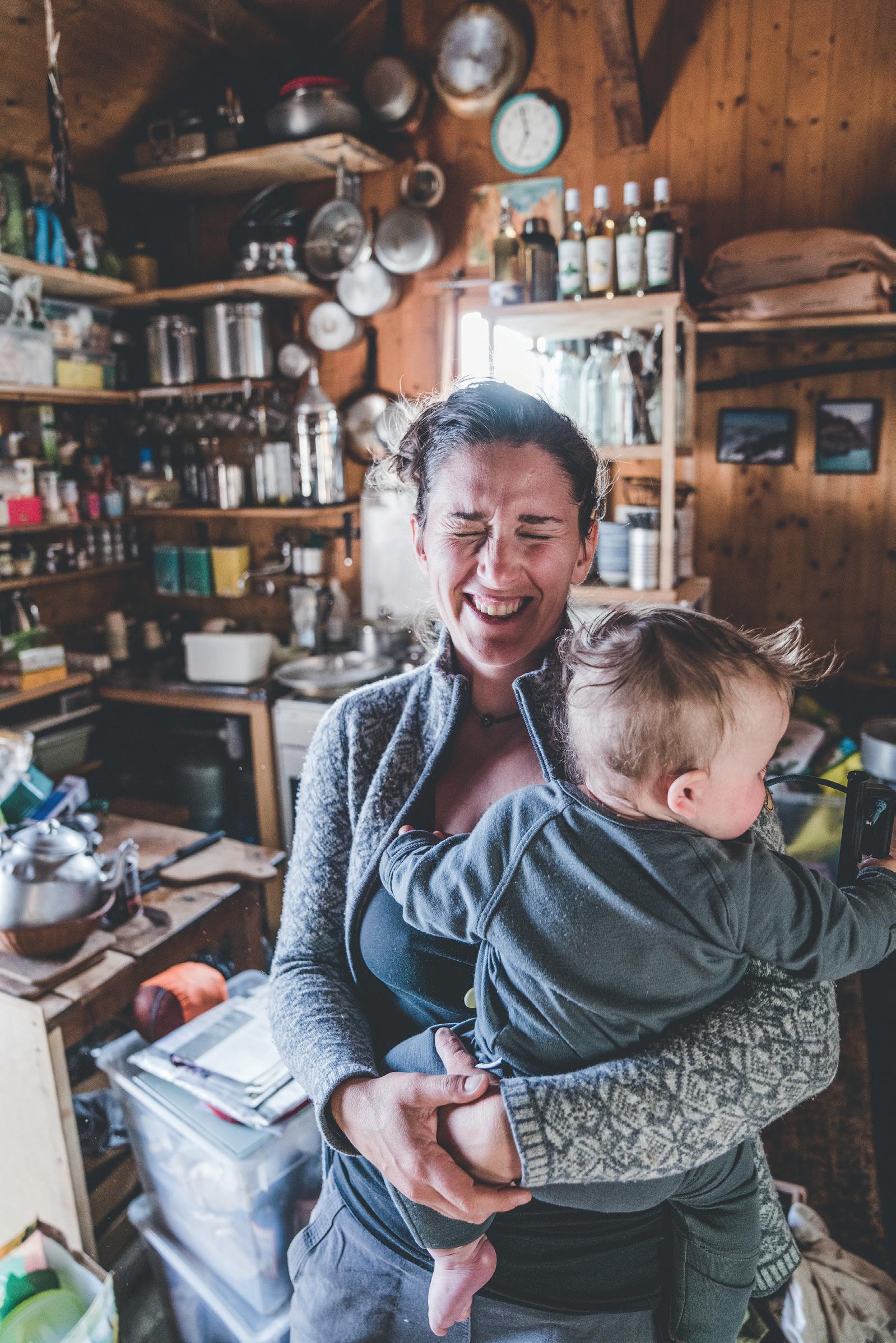
Sarah Cartier manages one of the most inaccessible refuges in Europe and does so in the company of her own two kids, 3 years old Armand 10 months old and Camille. Patagonia has dedicated her a documentary. A few kilometers away there’s the sparkling Chamonix, with its noble shops and super chic restaurants where you can eat the best fondue, but in the Charpoua hollow all of that is nothing but a background buzz, a presence in the distance. Charpous is in fact a hollow nestled in the midst of some of the most beautiful French peaks: it overlooks the right side of the Mer de Glace, which in French means "sea of ice", and all around it Aiguille Verte, 4122 meters above sea level, and Les Drus, a 3754 meters high mountain, stand out, to the north there’s the crest of the Flammes de Pierre and to the southwest the Moine-Nonne-Evêque-Cardinal. The view here is breathtaking and perhaps that is precisely why, in 1904, a tiny refuge was built, nestled on top of a rock islet, the historic Refuge de la Charpoua.
Consisting of a single room and still without water or electricity, it was built with pine wood carried on the shoulders of the members of the Chamonix Alpine Sports Club. Today Refuge de la Charpoua is an essential stop for climbers who hike Les Drus: it is in fact the starting and finishing point of many historic routes, but also just getting there is not that simple. From Montenvers train station the climb starts, but crossing the glacier adds to the effort: approaching the refuge means to enter the moraines and to climb in many points. So it’s difficult that inexperienced hikers and climbers arrive here. Sarah Cartier is one of these: she’s originally from Cha -
monix but she decided to leave the city with its shops and fondue restaurants, at least during the summer, to manage Refuge de la Charpoua. This decision came from Sarah's desire to work independently, she wanted to be her own boss, live as much as possible in contact with her mountains, and do something adventurous.
115
Today Refuge de la Charpoua is an essential stop for climbers who hike Les Drus: it is in fact the starting and finishing point of many historic routes, but also just getting there is not that simple. From Montenvers train station the climb starts, but crossing the glacier adds to the effort: approaching the refuge means to enter the moraines and to climb in many points. So it’s difficult that inexperienced hikers and climbers arrive here.
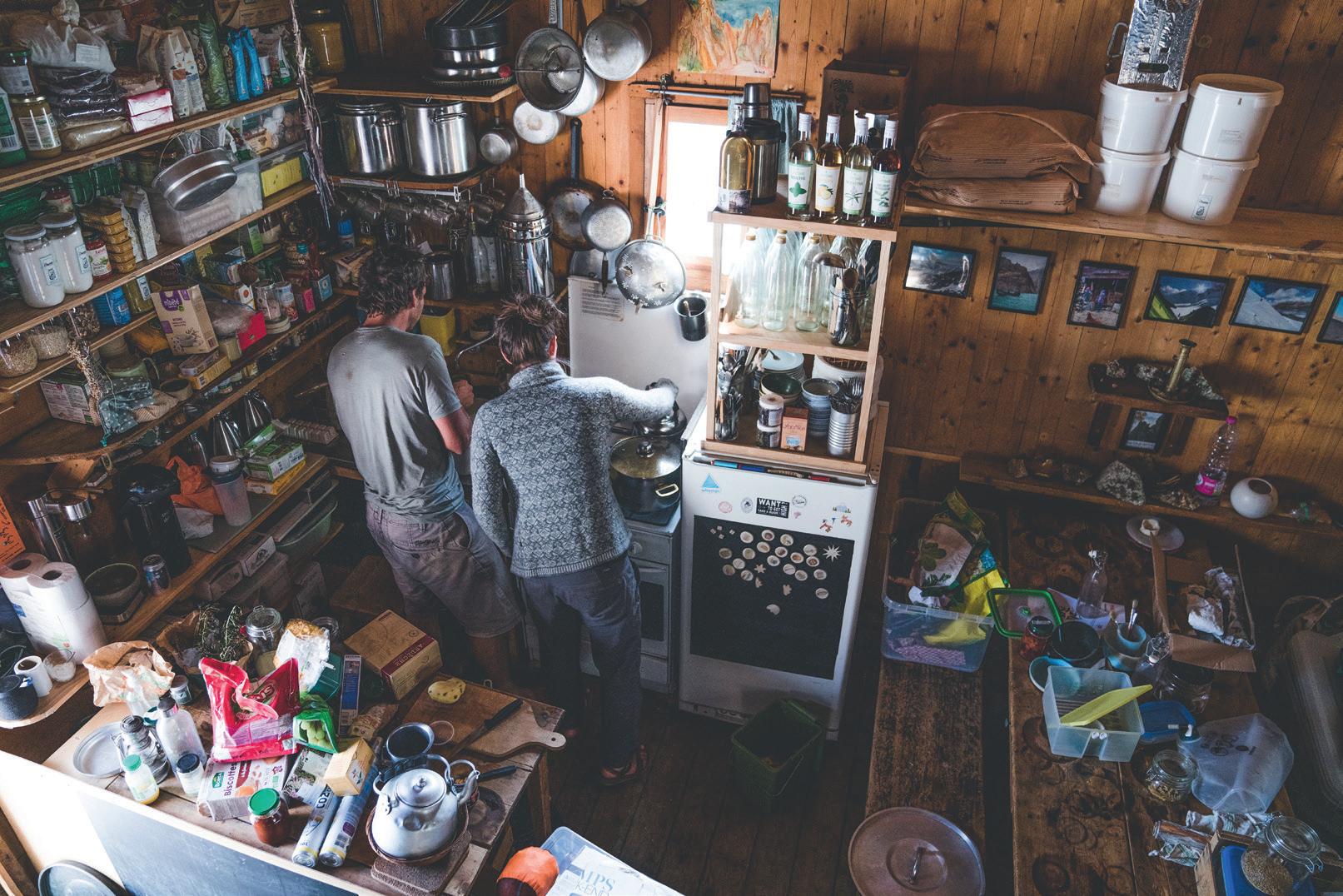

Refuge de la Charpoua fully satisfied all three of these requirements and Sarah has been running it for eight years now: from mid-June to the end of August she offers meals and accomodation for hikers. She provides information on the conditions of the mountain that she observes her daily and constantly and she gives first aid in case of need. Sarah stands up to not only the mountain, but also the sexist comments which often, especially in a traditionally male-dominated world like the one of mountaineering, she still receives. Yes, because a woman who does a hard job all by herself alone and does so in the company of her young children, in the basically machist universe which is mountaineering is perceived as a rare animal. Sarah never thought about to abandon one thing or the other: her passion and her work or her family: from cold winter until temperatures drop and ice and snow still barring access to Les Drus, her family stays with her.
Crucialis the support of Noé, her partner, with whom she has found a way to carry forward both her family life and her life in the high mountains. The first time she climbed up to the refuge as a mother she brought little Armand tied on her back and spent that first summer with him, between work and the beauty of the peaks and fauna who live there: Armand in particular has developed a passion for choucas, the alpine choughs whose cry the baby has learned to imitate even before learning to speak. “Every year, when I come up here, it's not because I want to, but because I feel the need to” says Sarah in “The Charpoua Way”, the documentary that Patagonia has dedicated her. “I am a high-altitude host: I prepare soups at 2800 meters high, I manage the re -
servations and talk to the mountaineers, this is a corner of paradise and those who push this far come here to look for freedom".
Sure, living without water or electricity, with the bathrooms outside made up of a few blocks of granite cross, it is not what can commonly be defined as comfort, but this it’s what makes Sarah and her family feel good and protected. This is a refuge in the true sense of the word, a hut nestled in the mountains where everything is shared: food, warmth and experiences. On one side there is the kitchen, with the old wooden table which is a hundred years old, on the other side there are two wooden partitions that act as a room divider for one dozen of
117
“Every year, when I come up here, it's not because I want to, but because I feel the need to” says Sarah in “The Charpoua Way”, the documentary that Patagonia has dedicated her. “I am a high-altitude host: I prepare soups at 2800 meters high, I manage the reservations and talk to the mountaineers, this is a corner of paradise and those who push this far come here to look for freedom".


119
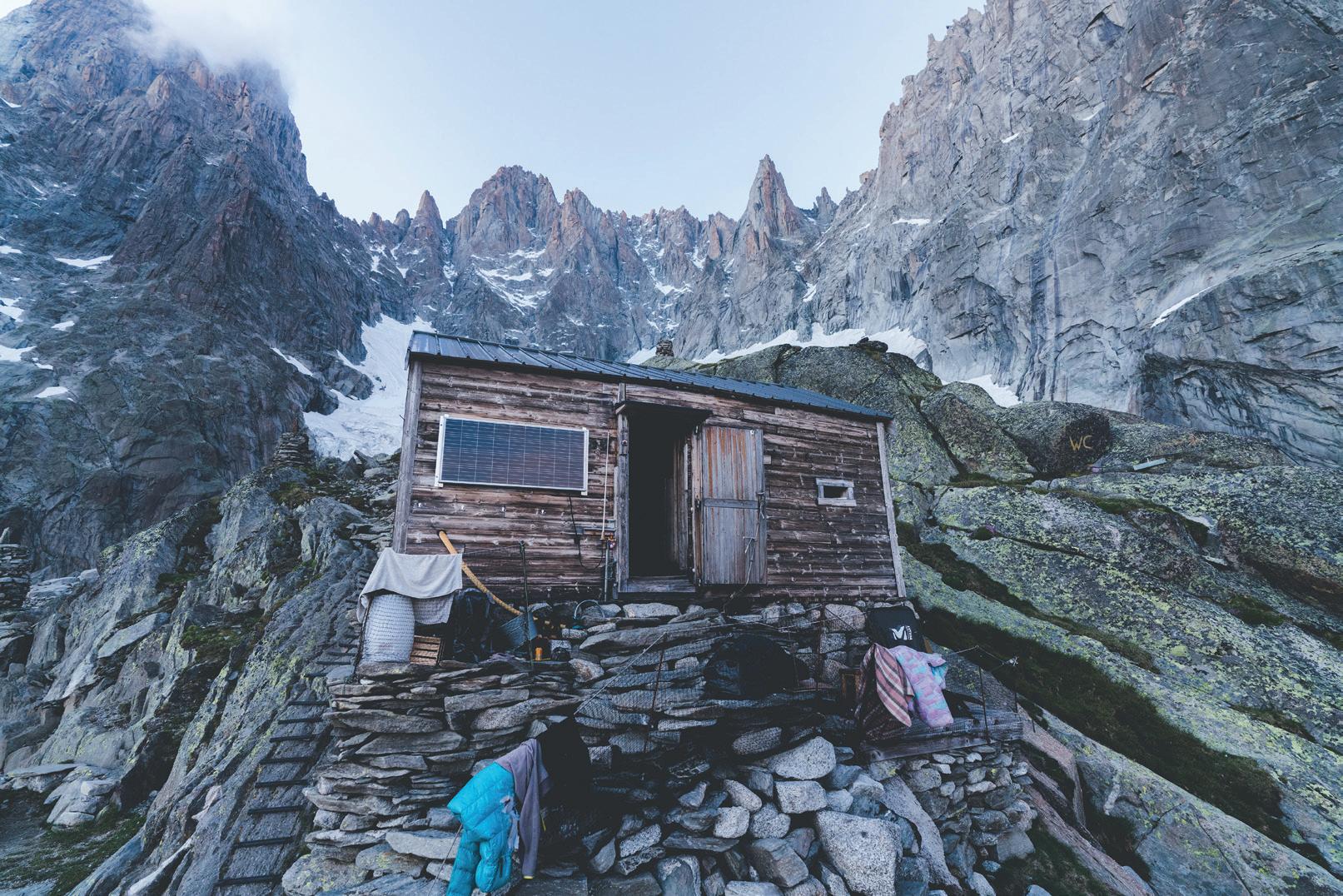

bunk beds. Everything in the refuge is organized so as not to waste not even an inch of space, but at the same time to guarantee those who manage it and mountaineers who arrive here to stay as comfortable as possible. In such a small refuge, however, privacy is not the strong point, especially if there are also two children. In the summer of 2022 in fact, Armand was joined by Camille, just 10 months old. For this reason, since 1904, the refuge has undergone some slight modifications: a network to prevent accidents and a mini bedroom, built by Sarah's husband and lowered into place from a helicopter.
Wake up call for Sarah and the children comes at 6:45am every morning when she starts preparing breakfast and putting what hikers who started their climb at 2am left. The work, in the rest of the day, is the one of a typical host: washing the dishes, making the beds, keeping track of the bills and then start cooking for dinner. Sarah tries to make the most of her dutiesin the morning, so that the children can stay in the room, or she ends them with Camille strapped to her by a sling on her back.
If the weather is good, Sarah puts out the playpen for the children to play, if not, she prepares a dough and helps Armand create sculptures representing the sounds of the storm she hears outside. After lunch it's time to stroll and explore, then comes a nap and bath time. Later, they welcome the new guests of the night and prepare dinner before washing the dishes and going to bed. Sarah likes the thought of completing tasks as simple as they are essential:
hosting, serving food, caring for people and having to ask for help if needed. These are all wonderful things to teach young people. “When some of the climbers realize that I'm raising my kids here alone, they put everything in perspective and say that climbing Les Drus isn't all that big of a feat. But the truth is that I brought them here out of selfishness: the refuge is like my third child, I still don’t feel ready to leave this life, I know I still have many adventures to live here. But this is a nice place to raise children, who learn the meaning of freedom, contact with nature, but also the very concept of family. Because that’s what a refuge means: it is a place where to feel safe, a small bubble made of wood.”
121
“When some of the climbers realize that I'm raising my kids here alone, they put everything in perspective and say that climbing Les Drus isn't all that big of a feat. But the truth is that I brought them here out of selfishness: the refuge is like my third child, I still don’t feel ready to leave this life, I know I still have many adventures to live here".

The King of Lastè
 BY LISA MISCONEL PHOTOS CAMILLA PIZZINI
BY LISA MISCONEL PHOTOS CAMILLA PIZZINI
Daniele Felicetti lives in Forno di Moena, in Val di Fiemme. He's an athlete, a real one. Of those who wake up in the morning with a clear goal in mind, which takes care of every detail of his life in favor of his sporting performance. The alarm goes off at 6, then he gets to work on the slopes of Bellamonte and concludes the day training on Lastè, a peak that he climbs more than 70 times during winter time.
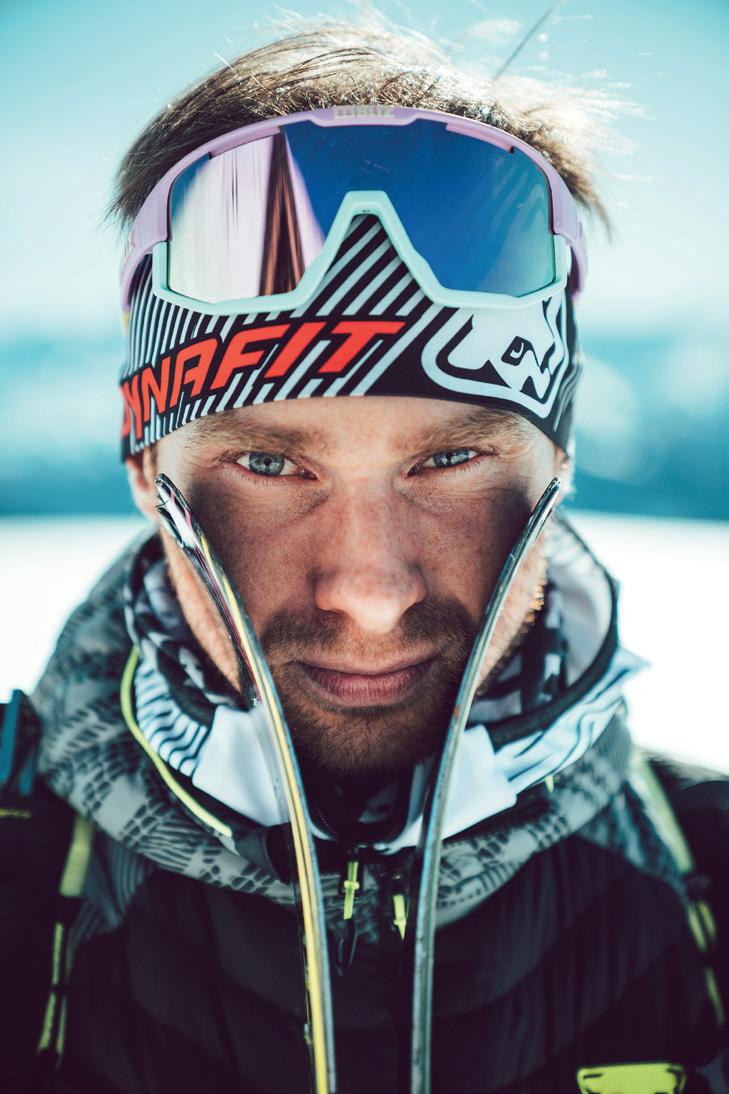
On a windy December day, we climbed on Lastè with its "king". There we understood that discipline is a simple thing if you love what you do. Sacrifices for some people aren't really sacrifices at all. Giorgio Winkler, a mountaineer who completed great free ascents in the last century, said that "nothing succeeds if you don't put effort in it” and Daniele perfectly represents this vision. He meticulously plans his every day from waking up to bedtime. From grams of pasta to hours of sleep. And the nice thing is that no one tells him to do it, if not his exaggerated passion and dedication.
Being born in Val di Fassa, it was natural since I have always loved and lived that mountain that I saw and still see from my window at home. My father ran so when I was 8 I took part in my first cross-country races. In 2009 at the age of 14, by pure chance, I participated in my first vertical competition: Costolina in Ziano di Fiemme. I still have a photo of that day when I discovered what would become my great passion: combining the fatigue of running with the beauty of nature and mountains.
What about mountaineering? Since I was a child I competed in alpine skiing, but at 16 I left the world of competitions. Shortly after I approached ski mountaineering. I discovered that I could train while staying in contact with skis. I have always seen this discipline as the perfect training for my running activity, and I have taken part in the classic night races such as Sellaronda.
124
Giorgio Winkler, a mountaineer who completed great free ascents in the last century, said that "nothing succeeds if you don't put effort in it” and Daniele perfectly represents this vision.
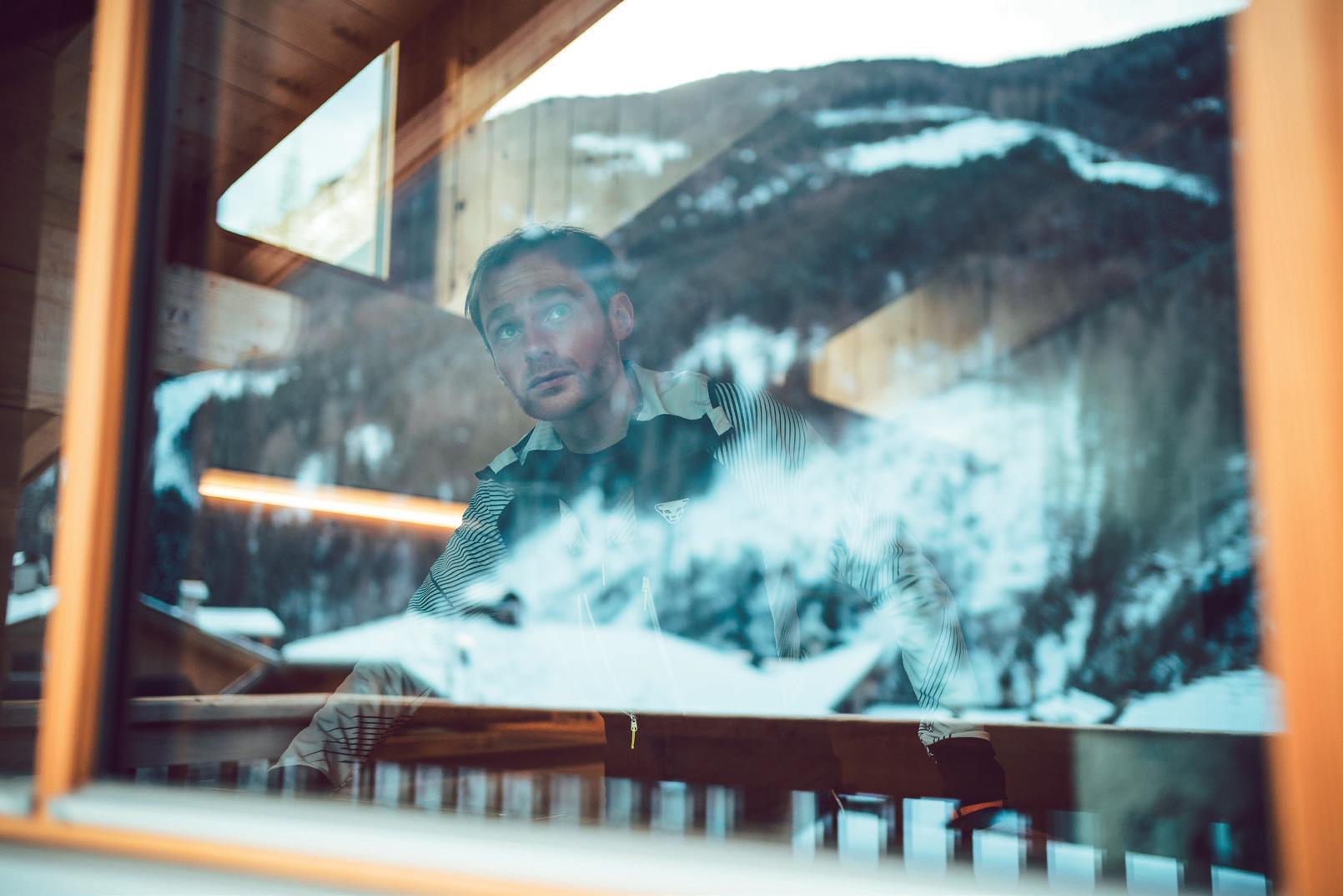
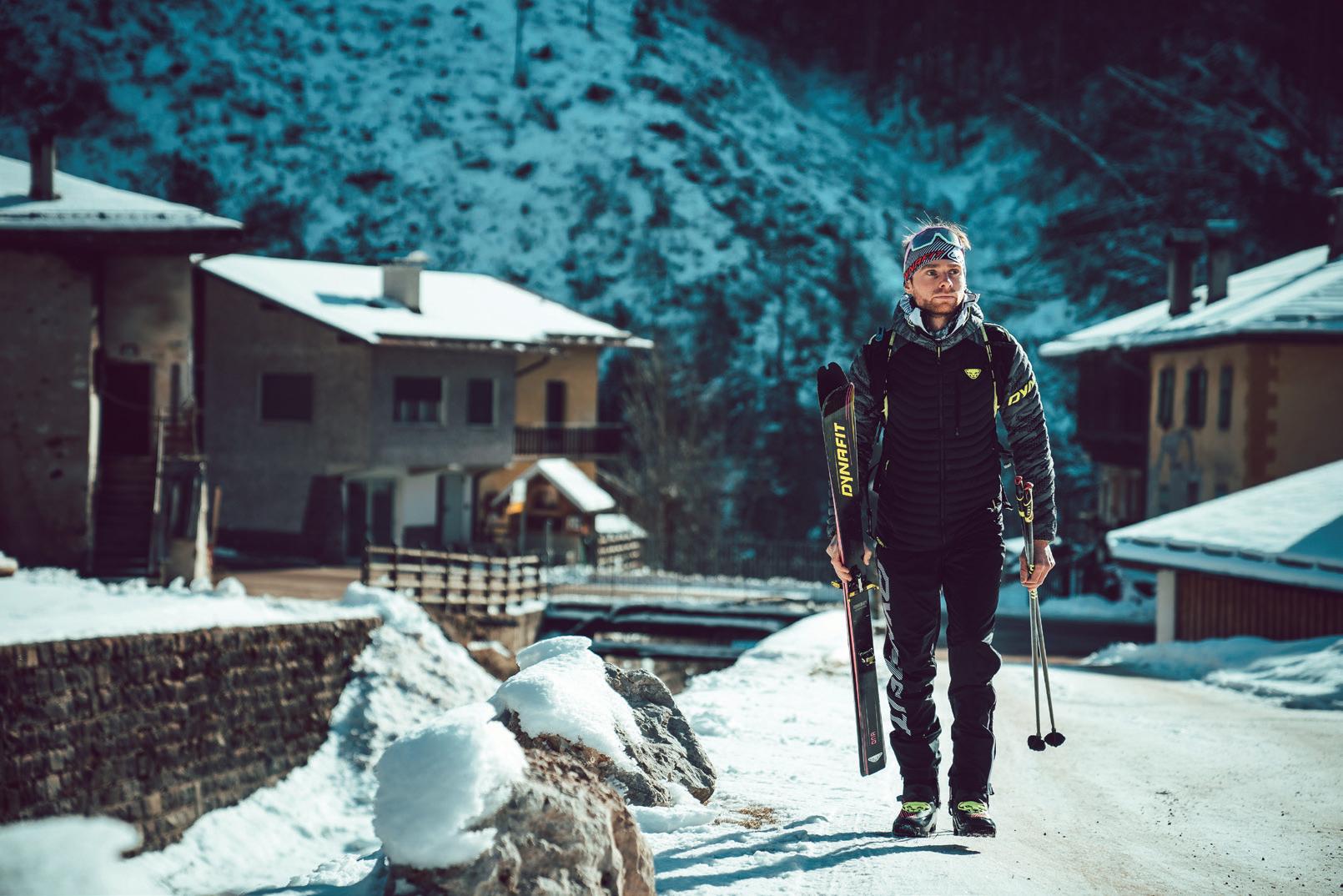
How do you cope with competition? Talking about competitive spirit for me doesn't just mean talking about competitions, but also about training, routines, projects. It is the fixed thought of my life and the reason why I train every day with constancy. If I know I'm doing everything right by paying attention to every detail, I know the race will have little chance of going wrong.
It's not something for everyone, you have to have this sense of discipline inside. Sacrificing certain things and being extremely precise in others is for few people.
Everyone talks about sacrifices but for me, who have chosen to make sport my life, sacrifices don't exist. Training is included in what I call the "obligatory" part of my days. For me this is the key: integrating training into duty, into something automatic and essential like breakfast or work. For those who work, organization is a necessary point: the free time available is counted and must be managed in the best possible way, unlike a professional who perhaps does not have to pay attention to all these details.
Have you always had this vision? It hasn't always been like this, everything has changed since 2019: in four days in close contact with the one who, in addition to being a mate and a friend, I also consider my mentor, Filippo Beccari. I've always said that: I learned more in 5 days with him than in a lifetime of training and sports. We met at the races, and one day we decided that we would run the Monte Rosa Sky Marathon together. We prepared together for a single goal and during the days of the race he passed on to me his way of seeing things, of experiencing competition and sport. Something inside me changed and I was never the same. The attention and care of every detail of my life started from there.
Was there a sudden leap in quality in your career or was it a gradual path? It was all very gradual, from the first race to the three third places at the Sky Running Under 23 World Championships in Andorra 2017. In 2019 the first place at the Latemar Mountain Race and the second
place at the Monte Rosa Sky Marathon with Filippo. In 2021 I got a second place at the Saslong Half Marathon and a 10th place at the Dolomites Sky Race in 2022.
Your favorite race? And the one that satisfied you more? 2019, Monte Rosa Sky Marathon. There I got a second place with Filippo Beccari. Running a team race gives you that extra value because you share everything, from preparation to crossing the finish line. We had prepared well at altitude and when we reached Capanna Margherita and then the finish line after 5 hours on Monte Rosa it was beautiful. Dolomites Sky Race 2021, 14th place. This is the race that gave me the most satisfaction despite my tenth place in 2022: a debut in my home race, a very high level, I managed to beat very strong athletes.
How long have you been part of the Dynafit family? I first came into contact with the brand in 2014 through a small local store that had set up a test day. With a message, the shop owner told me that Dynafit was looking for "young athletes", I still have that message imprinted in my memory. I proposed and from there the collaboration began and continues today after almost ten years. I have always been very happy with the equipment but also on a personal level. I feel free to do what I want the way I like to do it.
We know you work on the slopes... How is your typical day? My day starts very early because I like to do all my rituals slowly. Feed the cat, have breakfast, prepare my things for the evening training, leave for work where I start at 8. I carry out my activity on the ski slopes of Castelir,
One day a friend of mine gave me this name precisely because in a season I reach the top 70-80 times, almost always finding myself up there alone due to the time. I know every meter of this climb because it's my gym and my office during the day.
126
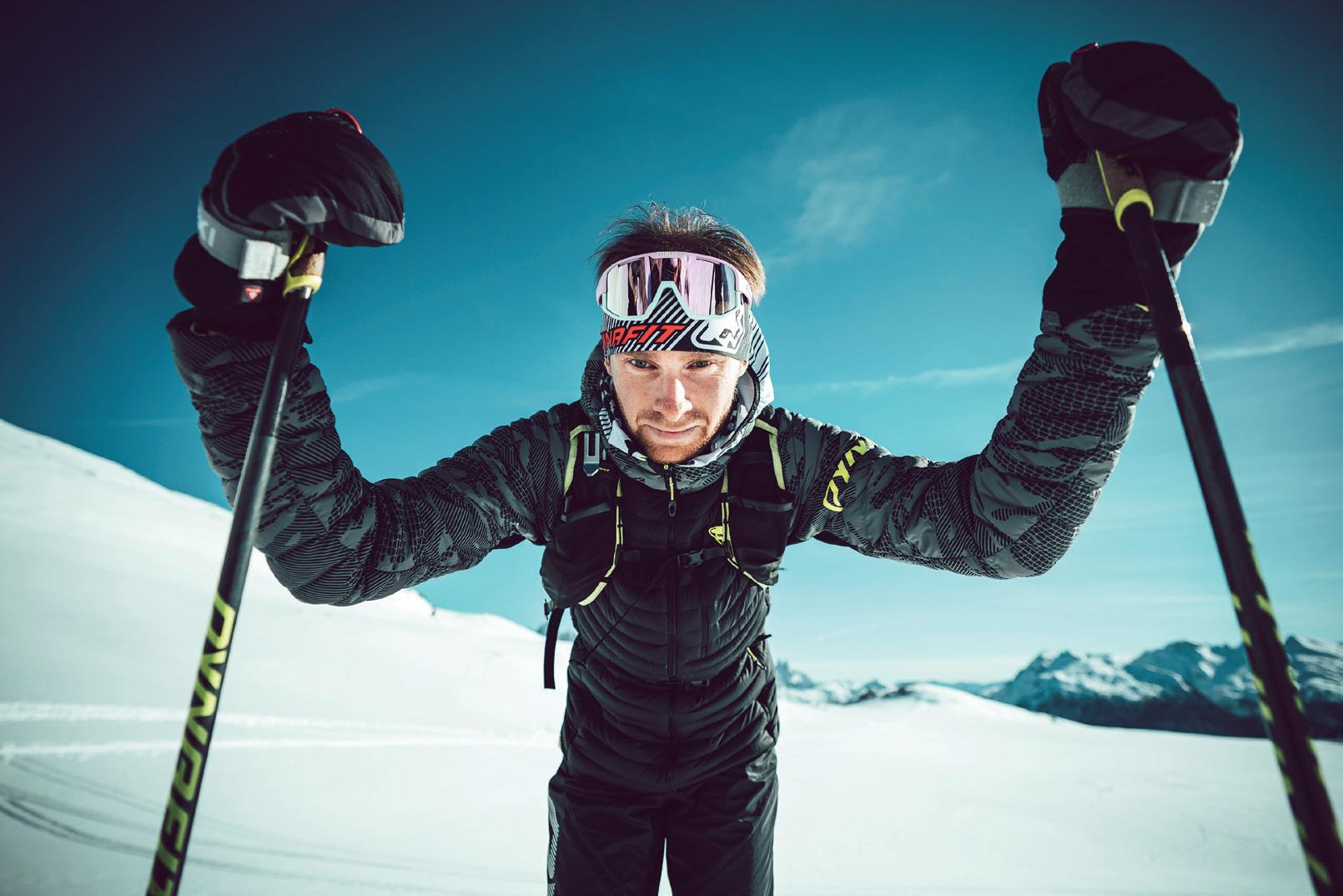

Bellamonte, as a slope safety check and consequent maintenance and evaluation of the risks. At 17 I stop working, change clothes fast and set off with the skins in the direction of Lastè on the same slopes where I work during the day. Repetitions, changes of pace, solitude and concentration, while the moon keeps me company.
What is your favorite thing about these trainings? Surely when there is a full moon it is completely different. After all the times (more than 70 per season) that you go up at night, having a full moon makes it almost feel like you are there during the day. You can see things and the atmosphere is magical. There are times in which I already leave with the dark and times in which I leave with the light and arrive at sunset. But, I'll tell you, as much as I like it a lot, even if it won’t sound very poetic, I'm relatively interested in the sunset. I am much more focused on what training gives me.
You probably see more sunsets in a season than certain people in a lifetime and all from the same place: Lastè. This is why you are its king: The King of Lastè. One day a friend of mine gave me this name precisely because in a season I reach the top 70-80 times, almost always finding myself up there alone due to the time. I know every meter of this climb because it's my gym and my office during the day.
The beauty of your job is that you are always outdoors in the mountains, with people... I really like it because it allows me to stay outdoors, to put my skis on even during work and stay in contact with people. At the moment I wouldn't change it even to be a professional athlete. Sure, there are bad days, the most tiring ones, but it helps me stay focused and it gives me the serenity of having everything under control.
How do you combine training and work?
Combining training and work is easier than you think. It's a bit of a habit. Let's say that the only difficulty in my opinion may be from the point of view of recovery, because not being a professional athlete on the day of rest I still have to be operational and not at home on the sofa or having a massage.
But you also tried to be a full-time athlete. Yes, I tried for two summers but it didn't work for a mental issue. It didn't give me the right serenity. In my opinion, combining sport and work on a mental level gives you a lot of strength, because it puts you in a position to take care of every detail. You have to fit everything and so you always stay focused. There is more care and attention to get to the goal. Living a life where the only duty is training for me flattens everything and doesn't make me so performing. I lack stimuli and I don't get the results I'm looking for. Having all that free time is not for me.
Future plans? As far as ski mountaineering is concerned, I will participate in the Trofeo 4 Valli which is always an excellent training for me. Furthermore, I will compete again together with Filippo Beccari at the Sellaronda Skimarathon and that will be fun. For the summer season, however, I will confirm my favorite races, the classic ones: Dolomyths Run Skyrace and Transpelmo. I aim to do very well in Sierre Zinal and to focus more on uphill races over 20km distances that I feel more like mine and in which I really want to give 100%.
128
Combining training and work is easier than you think. It's a bit of a habit.
Let's say that the only difficulty in my opinion may be from the point of view of recovery, because not being a professional athlete on the day of rest I still have to be operational and not at home on the sofa or having a massage.
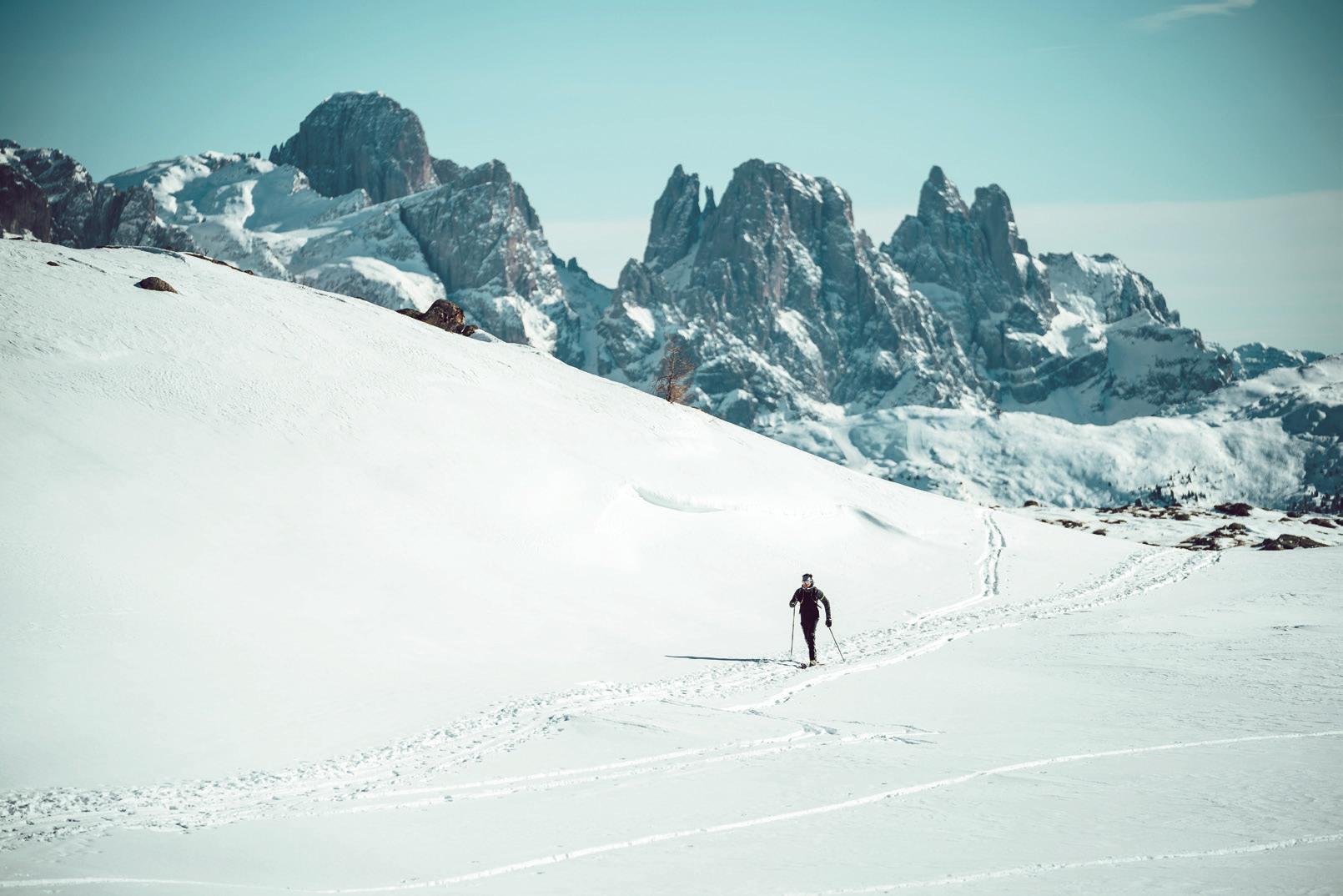
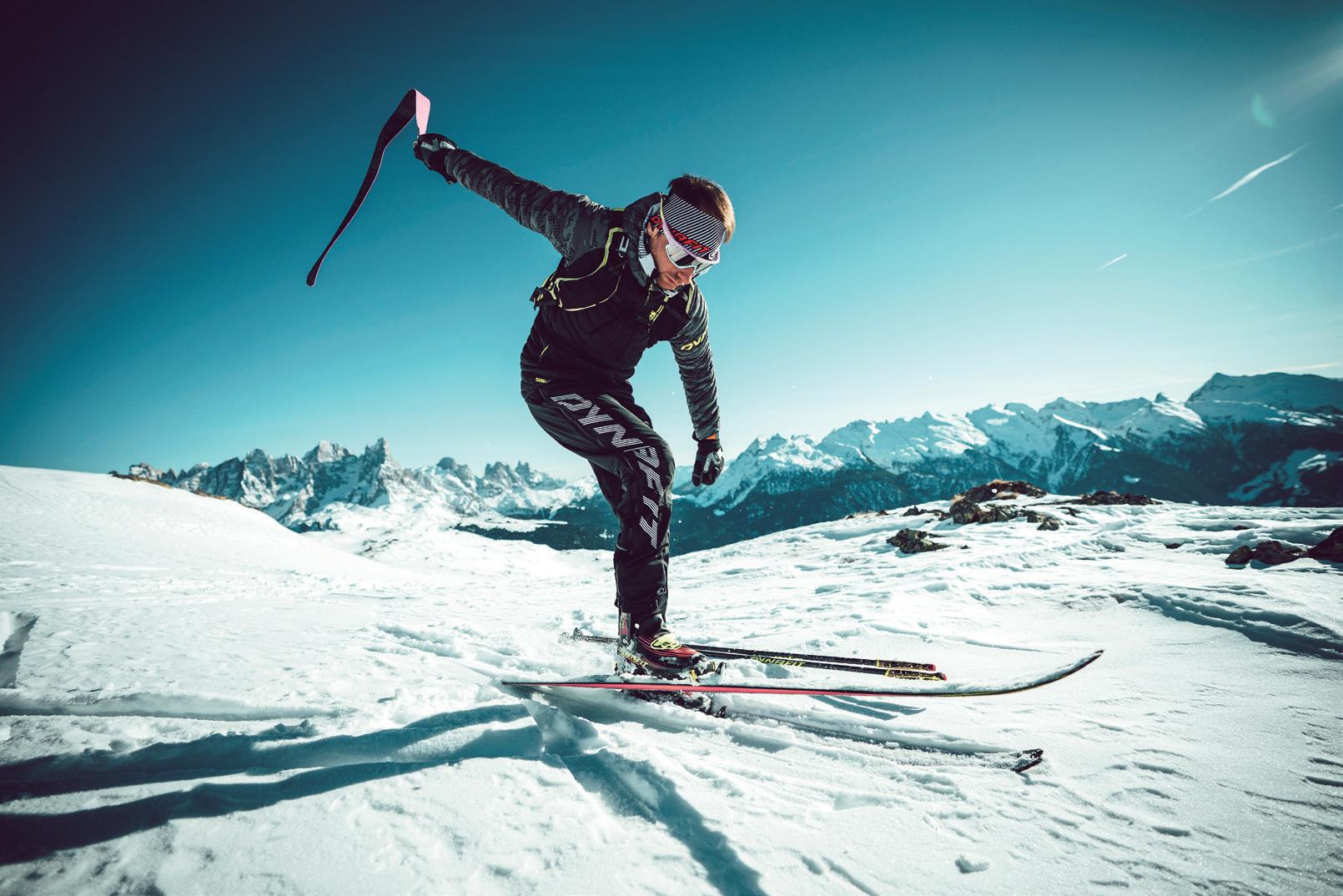



Greenland, a wild thing!
 TEXT ILARIA CHIAVACCI PHOTOS MAURIZIO MARASSI
TEXT ILARIA CHIAVACCI PHOTOS MAURIZIO MARASSI
This huge frozen island halfway between northern Europe and the American continent is a popular destination for ski mountaineering. Photographer Maurizio Marassi shows us that it is also a perfect set and a hospitable place despite ice, polar bears and sub-zero temperatures.

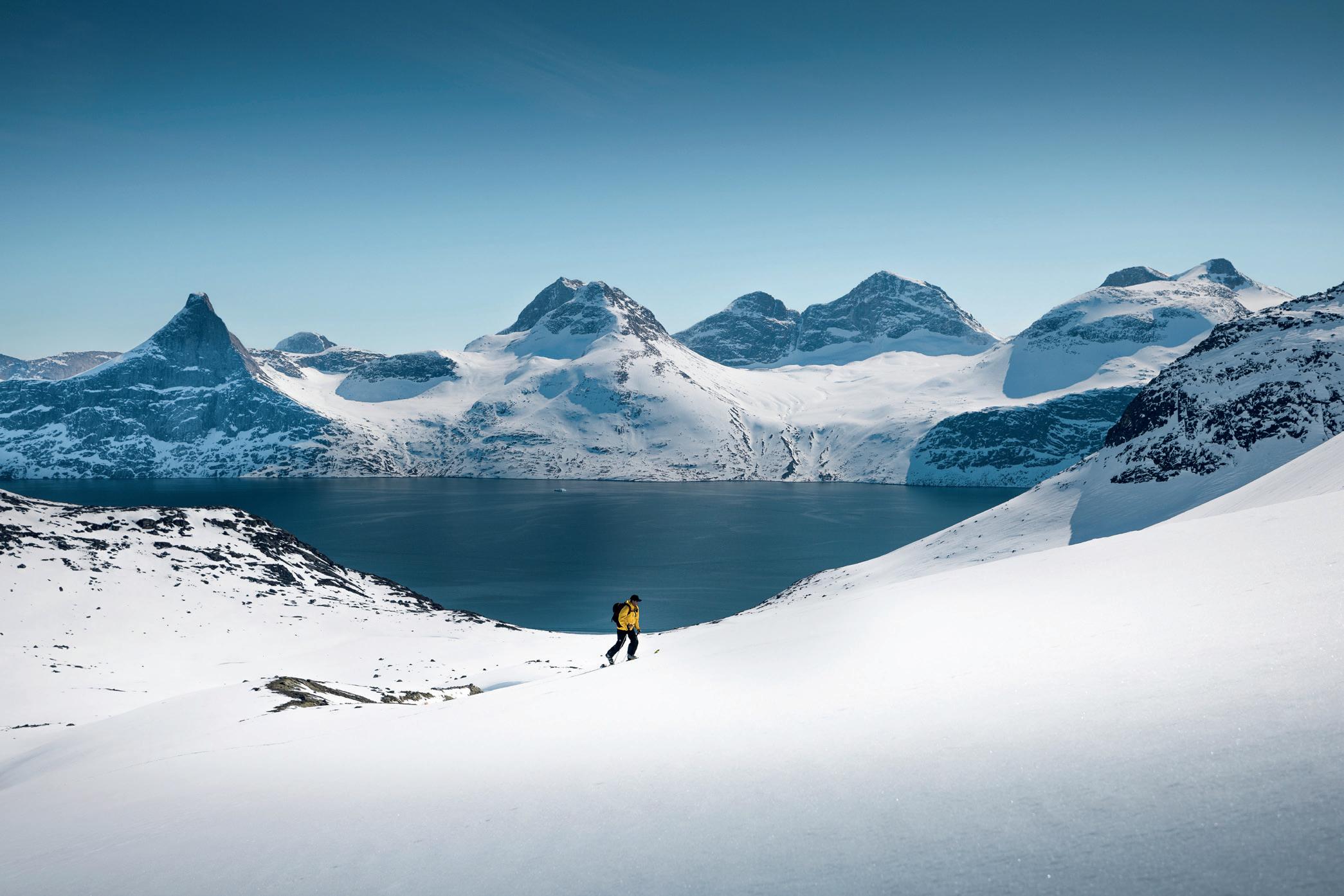
If you are a photographer and a videomaker, but also a former athlete of the Italian national wakeboard team as well as a super outdoor enthusiast, you usually work for clients who will take you to shoot in the most remote and wildest places on the planet. This is what happened to Maurizio Marassi, whom I reach via WhatsApp while he is in Japan, to get to know more about the incredible journey he made in Greenland. Maurizio in Greenland ended up with the skier and influencer Axel Blanch.
“I love all the activities that can be done in the mountain environment: skiing, ski mountaineering, climbing, these are things I've always done and it was normal for me to start shooting in these situations. Then when photography became a profession I tried more and more to make the two things coincide. In this case it was perfect: ski touring in the arctic. You can ski in many places that are already defined as arctic, but only in Greenland you can do that in the middle of glaciers: snow and ice are the constant throughout the year. There aren't even trees, it's an island of snow that plunges straight into the sea.”
There are understandably few stories shot down here because just getting there is a real challenge. It can only be reached from
Denmark or Iceland, there is only one international airport in the center of the island, where there is absolutely nothing, and the only way to reach other parts of the country is to take tiny planes. At first we wanted to get to Ilulissat, to Disko Bay, but at that time there was still too much ice: it's a crazy place because a glacier really comes out of the sea, but for us who have always moved on a sailing boat it would have been dangerous because there were too many icebergs, we would have risked being trapped. Then we moved to Nuuk, the capital city, which is all surrounded by fjords and which we could explore with our sailboat. We wanted to have as little impact as possible: we didn't do any heliskiing, which is quite common in Greenland, but we sailed as much as possible, reaching the locations on foot. During the two weeks we ate only local products and fished what we needed. The advantage of sailing in the middle of the fjords was also finding places that were as uncontaminated as possible.
Isn't Greenland all pristine? It is, but for them to go kilometers and kilometers with snowmobiles is fun and therefore they leave traces everywhere. On the main island it



135
is not easy to find stretches without tracks: moving on a sailing boat has allowed us to be able to explore the islets that make up the fjords. Which seems easier said than done: orienting yourself is quite complicated, so the first stop was a slightly larger island that houses a tented camp: there we met our guide, Adam, who helped us to choose the best places where to shoot. Being this far north, the sun rose in the north-east and set in the north-west and it was something that confused us a bit for the first few days, because we didn't understand where the best snow could be. Adam proved to be fundamental in understanding the snow conditions depending on how the sun turned: because the bizarre thing was that all the northern slopes got much more sun than the southern ones, which were in the shade in the morning and in the afternoon. But the most intere -
sting thing about having Adam with us is that he is an Inuit and therefore spends most of the year in a tent on the fjords, so we could really get in touch with the culture of this incredible country.
Inuits lead a truly ancestral kind of existence, especially when compared to that of most Westerners. These people literally live in the middle of the ice all year round. They base their life on hunting and fishing, to which they are particularly attached: Greenland is a huge glacier island and they mainly use planes or boats to get around, there are roads only in the capital city, Nuuk, but where the houses end also do the streets. Therefore, each person has a boat with which he travels to do anything, but mainly hunt or fish. They are all hunters, like Adam. Their favorite preys are seals or polar bears.
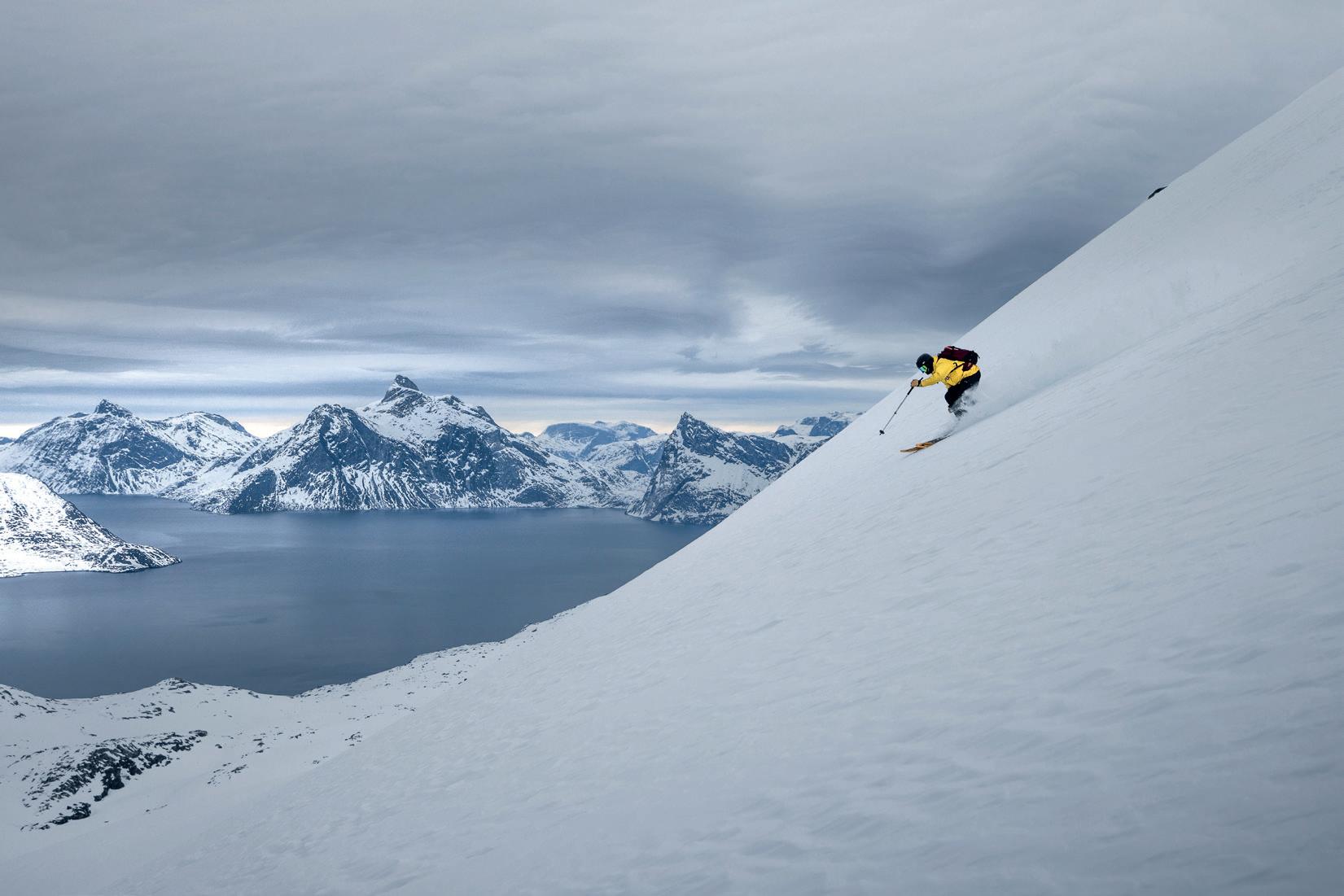
136
On the main island it is not easy to find stretches without tracks: moving on a sailing boat has allowed us to be able to explore the islets that make up the fjords.




Seals and polar bears? Aren't they endangered species? Inuits have a special permit to be able to hunt them. There are five thousand white bears in all of Greenland while the total population is forty thousand, including the Danes who live there: practically there is one bear every eight people. But there’s more: a bear is able to feed a family for several months. One thing that is absurd for us, but which is normal there, is that there is no baggage control in internal airports: people in hand luggage can have both rifles and knives that they will need for hunting.
Which in any case should not be very simple. It’s not. They're also extremely difficult to spot: Adam in all his years of driving has never seen one alive. To hunt they have to go in the middle of the ice sheet, that is this huge expanse of ice that is in the center of the island, and not on the coast, because bears hunt moose that move to the center of the ice sheet. Inuits set their tents there surrounding them with electric fences because the polar bear, being a hunter, hunts anything and without an electric fence there
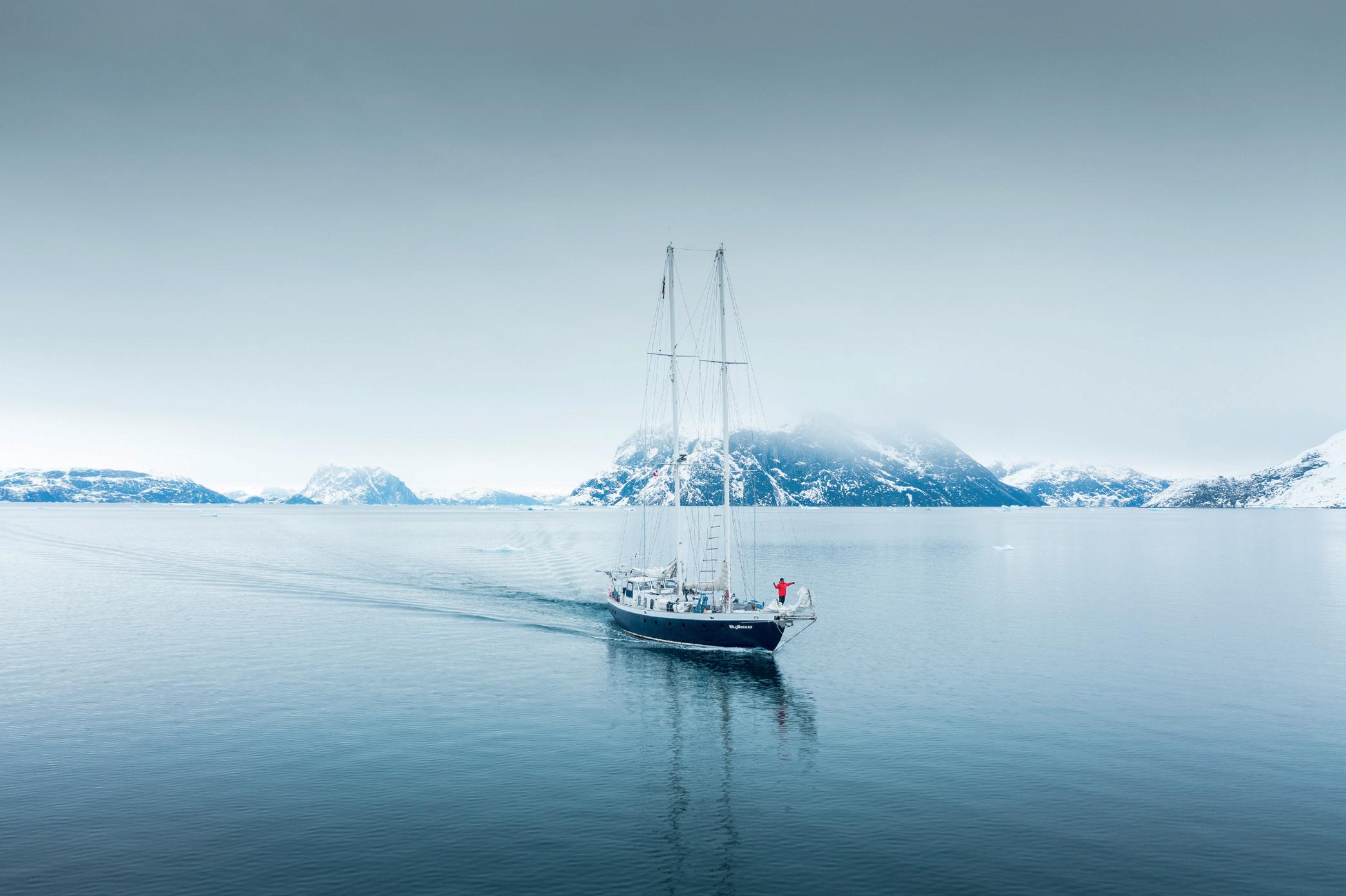
is the risk of finding a bear outside the tent or, worse, a bear attacking it. To then materially hunt them, Inuits dress completely in white, walk away from the tents and then face each other to wait for a bear to arrive to hunt one of the two and, when it is close enough, they shoot it.
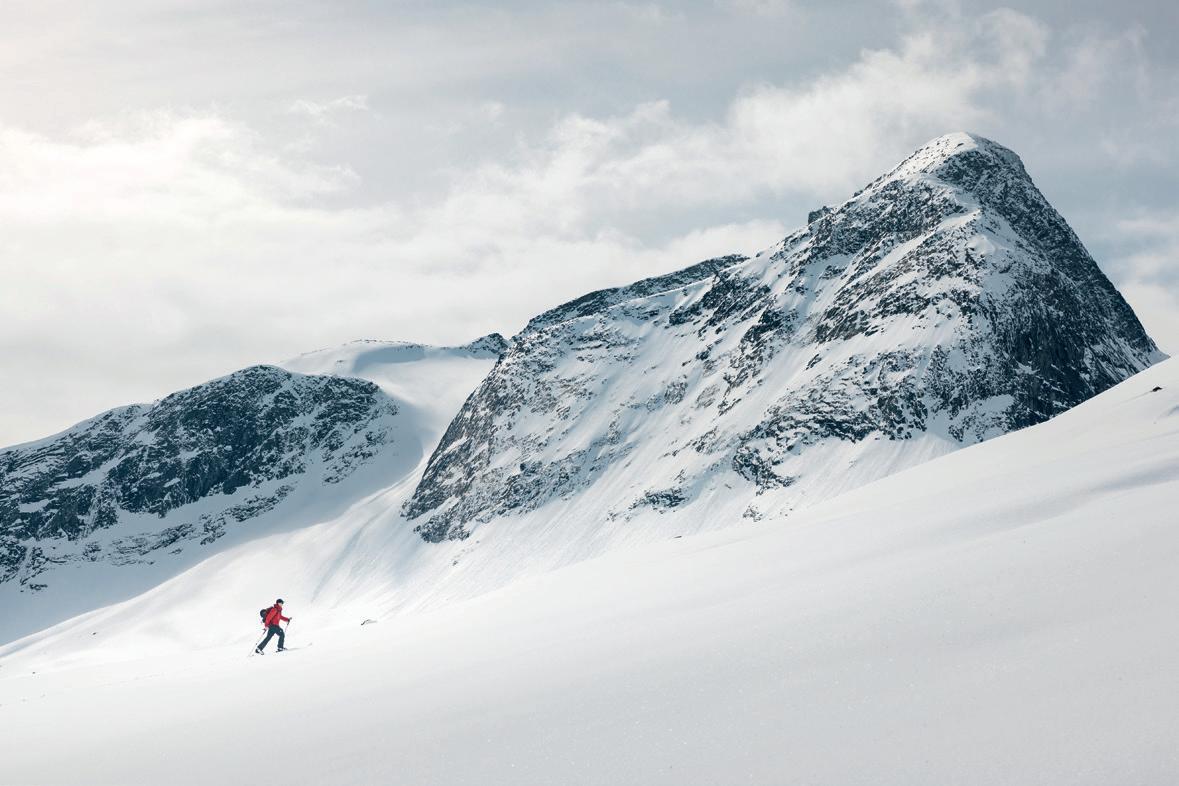
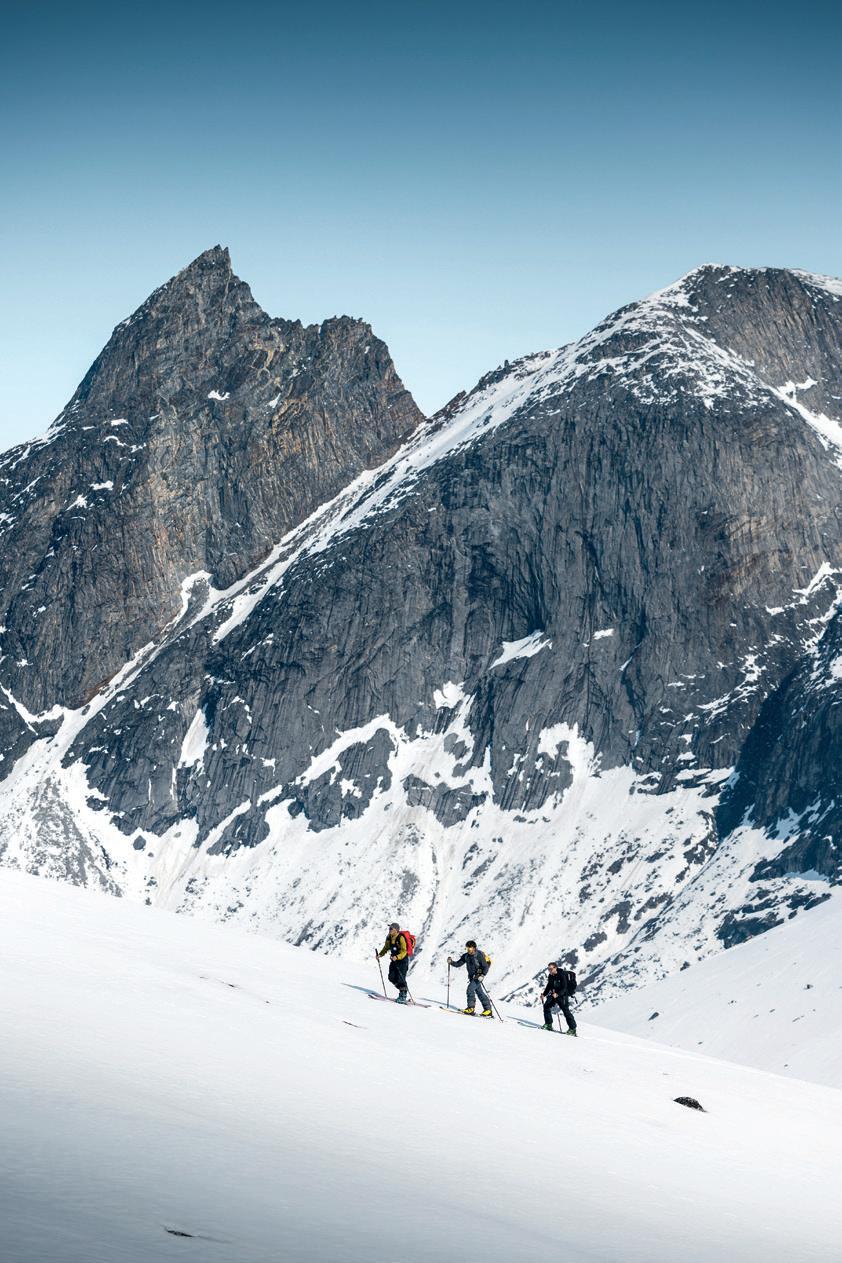
Once all that is done then they also have to bring it back to the plane. That's right, once hunted they have to walk back to the tents and then load the prey into the hold. Adam also has a license to hunt whales.
Even whales? The blue whale is endangered and cannot be hunted, other types of whales are not and their hunting is permitted, it is also served in some restaurants. As well as seals, there are different breeds and they are not all endangered. Then they don't throw away anything from all these animals, so they make clothes
dren using a polar bear skin as a sled. They truly live in nature and with what nature can offer them, that is



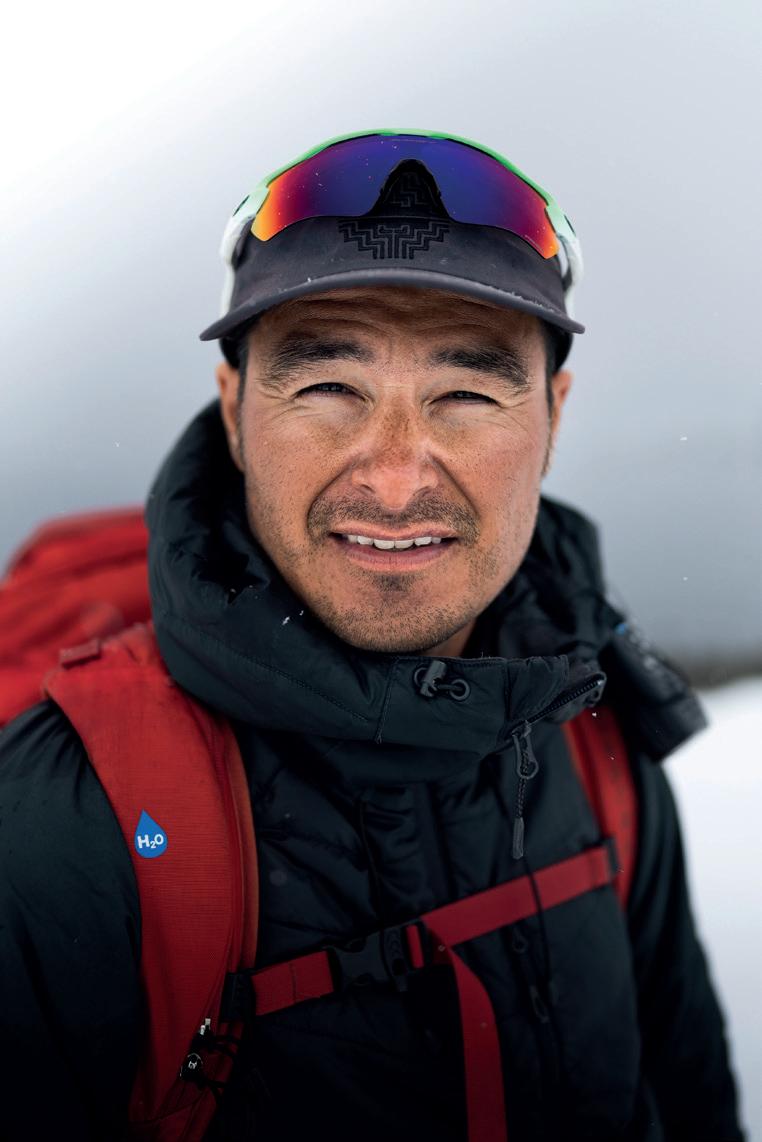

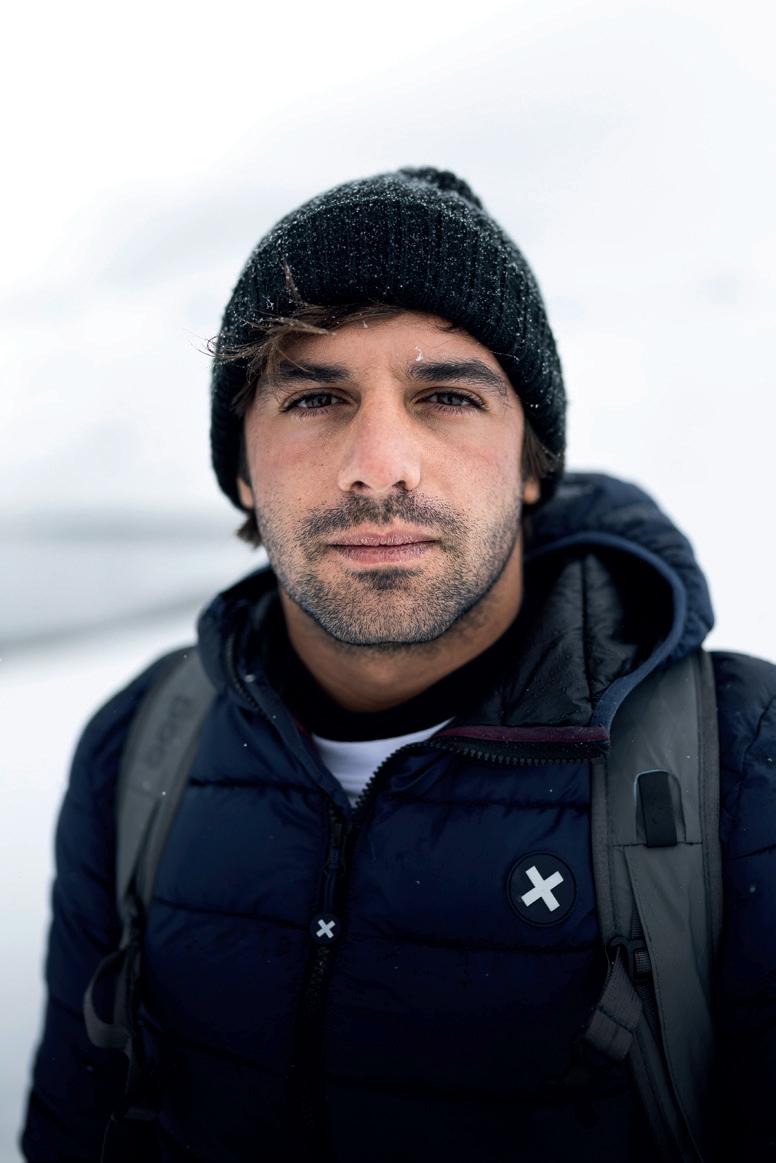

142
ces of water. The glaciers ensure that there are many sources, so they are able to have good water to drink that comes directly from the subsoil and in fact they are very careful, in Nuuk, not to pollute the aquifer, because it is water that has been imprisoned for millions of years in the subsoil.
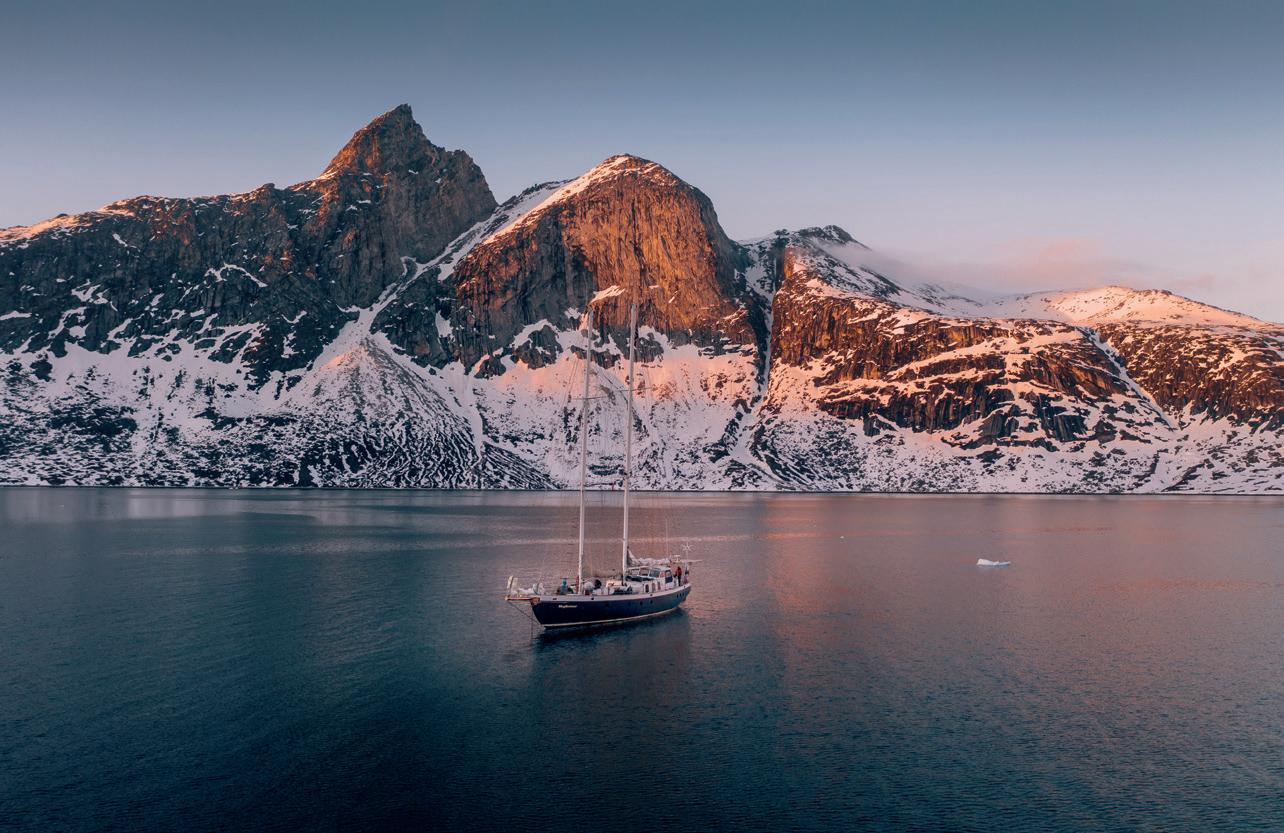
Inuits will understandably be alarmed by rising temperatures and global warming. In recent years, the opposite has been happening in Greenland compared to the rest of the world: it snows a lot and it's much colder, but they explained that their biggest nightmare is not so much the melting of ice, even though that a serious matter too, they’re much worried about the melting of permafrost. Everything they have, all their cities and homes, rests on a layer of frozen rock. If permafrost melted, the houses would sink into the mud. The other thing that alarms them is the change in the ecosystem: the rise in temperatures, if it were to occur in an important way, would cause the animals to move further north and they
would find themselves without prey, therefore without food. The paradoxical thing, however, in such a country, is that no one can adopt who knows how sustainable policies: they necessarily have to move by motor boat, they have to heat their homes as much as possible, move by snowmobile, or on plane or helicopter. The heating of the houses is all done with fuel oil, because they don't have geothermal energy like in Iceland.
It must have been a truly incredible experience. On the boat we were totally isolated, we were without connection for two weeks without seeing anyone else. It was very nice because we were one hundred percent focused on what we were doing and being completely disconnected from the world, the only thing we could do was looking out the porthole and seeing if there was the right light to shoot. We had no distractions and could capture moments that, if we weren't so immersed in the environment, we wouldn't have captured. Then with the fact that at that time of year it
starts to dawn at three in the morning and the sun sets at eleven in the evening, we basically worked eighteen hours a day: during the day we shot skiing, then we went back by boat to have dinner and, after dinner, the sun started to go down and the twilight light was perfect for shooting again.”
143
On the boat we were totally isolated, we were without connection for two weeks without seeing anyone else. It was very nice because we were one hundred percent focused on what we were doing and being completely disconnected from the world, the only thing we could do was looking out the porthole and seeing if there was the right light to shoot.

Iceland Ice Climbing
 BY ILARIA CHIAVACCI PHOTOS THOMAS MONSORNO
BY ILARIA CHIAVACCI PHOTOS THOMAS MONSORNO
Five friends who accidentally make up the perfect team: two climbers, a photographer, a videomaker and a producer have created an expedition-trip to Iceland. Their goal? Climbing as many ice falls as possible, but also proving that friendship is the most important factor in content creation.
Five friends who accidentally make up the perfect team: two climbers, a photographer, a videomaker and a producer have created an expedition-trip to Iceland. Their goal? Climbing as many ice falls as possible, but also proving that friendship is the most important factor in content creation.
Also by assonance one imagines that Iceland is the land par excellence to go ice climbing: not only because ice is in its DNA and in its name, but also due to the fact that the quantity of waterfalls present in the area it's really capillary. It is in fact known that there are over 10,000 waterfalls on the island, which has an area of 103,000 square kilometres: practically there is one every 10 square kilometres. However, mountaineers are more willing to reach other destinations: Canada, Japan or Siberia. It will be the charm of the exotic or of the territory belonging to a completely different cultural context. The fact is that it was the same for Dani Arnold, Martin Echser,
Thomas Monsorno, Lukas Kusstatscher and Davide Guzzardi: the destination for the ice climbing project you are looking at in these pages.
Originally it was supposed to be Kazakhstan, then the restrictions due to the Coronavirus pandemic which still limited travel in January last year made the choice fall on a more "handy" territory, precisely Iceland. The expedition consisted of Dani and Martin as climbers, Thomas as photographer, Lukas as videomaker and Davide for logistics and production. Adventures of this kind certainly have an intrinsic value from the point of view of athletic and mountaineering gestures, but above all they are effective tools for disseminating a discipline, such as ice climbing, which is increasingly popular even among amateurs. Dani Arnold is in fact a name in the climbing and in free solo scene, which is the most extreme discipline in the field that involves climbing alone and without using ropes or harnesses.
146



His last feat dates back to 15 August 2021, when he soloed the north face of Petit Dru (3733m) in the Mont Blanc massif, climbing the historic Allain-Leininger route (900m TD+) in just 1 hour, 43 minutes and 35 seconds, establishing what is to date the fastest known time on this iconic peak. It goes without saying that it has a notable following and that its socials are effective dissemination tools.
But back to the expedition: “It was Thomas and Lukas who proposed Iceland,” says Dani “I thought it was a good idea: as an ice climber I should probably have gone there at least once in my life! The goal for me and for Martin was to climb as much as possible, of course. But our focus wasn't so much on the difficulty levels as on making as many pitches as possible and many first ascents. It was first and foremost an adventure which, for me, means getting up early in the morning and going out into nature not knowing what the day will bring. This doesn't mean we didn't plan the trip, but we relied heavily on local climbers, who directed us on what to look for and where.”
Eight waterfalls in two weeks and a photo and video production but basically a trip with friends: “We set off with our two vans driving counterclockwise to cover the whole ring of the island. Wherever we found something that appealed to us, we stopped the vans and went climbing. Davide organized the trip, then every day we chose a different waterfall, which we managed to reach sometimes by car, other times on skis. I have to admit: Iceland was much better than I expected. For example, I had prepared for fairly short runs, so I had only brought seven ice screws with me which, when we
The goal for me and for Martin was to climb as much as possible, of course. But our focus wasn't so much on the difficulty levels as on making as many pitches as possible and many first ascents. It was first and foremost an adventure which, for me, means getting up early in the morning and going out into nature not knowing what the day will bring. This doesn't mean we didn't plan the trip, but we relied heavily on local climbers, who directed us on what to look for and where.
were faced with a 200m icefall, proved to be the wrong choice. I should have had at least twelve, but seven are better than none, and with a little creativity we managed to conquer it. Another fantastic aspect of this land is the variety of situations it puts you in contact with: from the immense ice falls, to the sea, to the basaltic rock, which I have wanted to climb since I was a child.”
A journey like this remains a beautiful memory without a lens and a camera ready to restore the harmony between companions and the athletic gesture moment by moment. “We arrived there with no expectations and if we hadn't found the right conditions we would have just made a
150
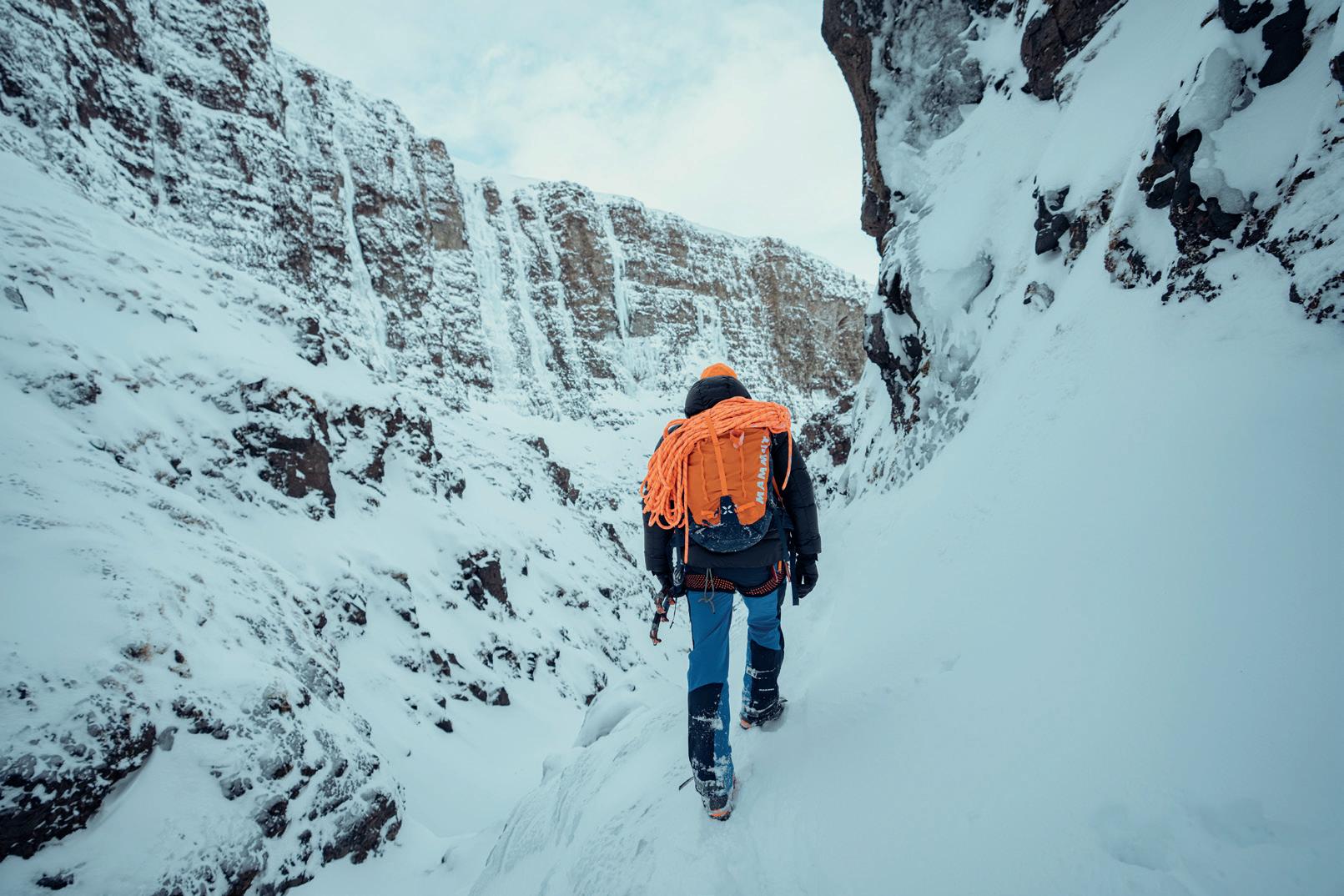
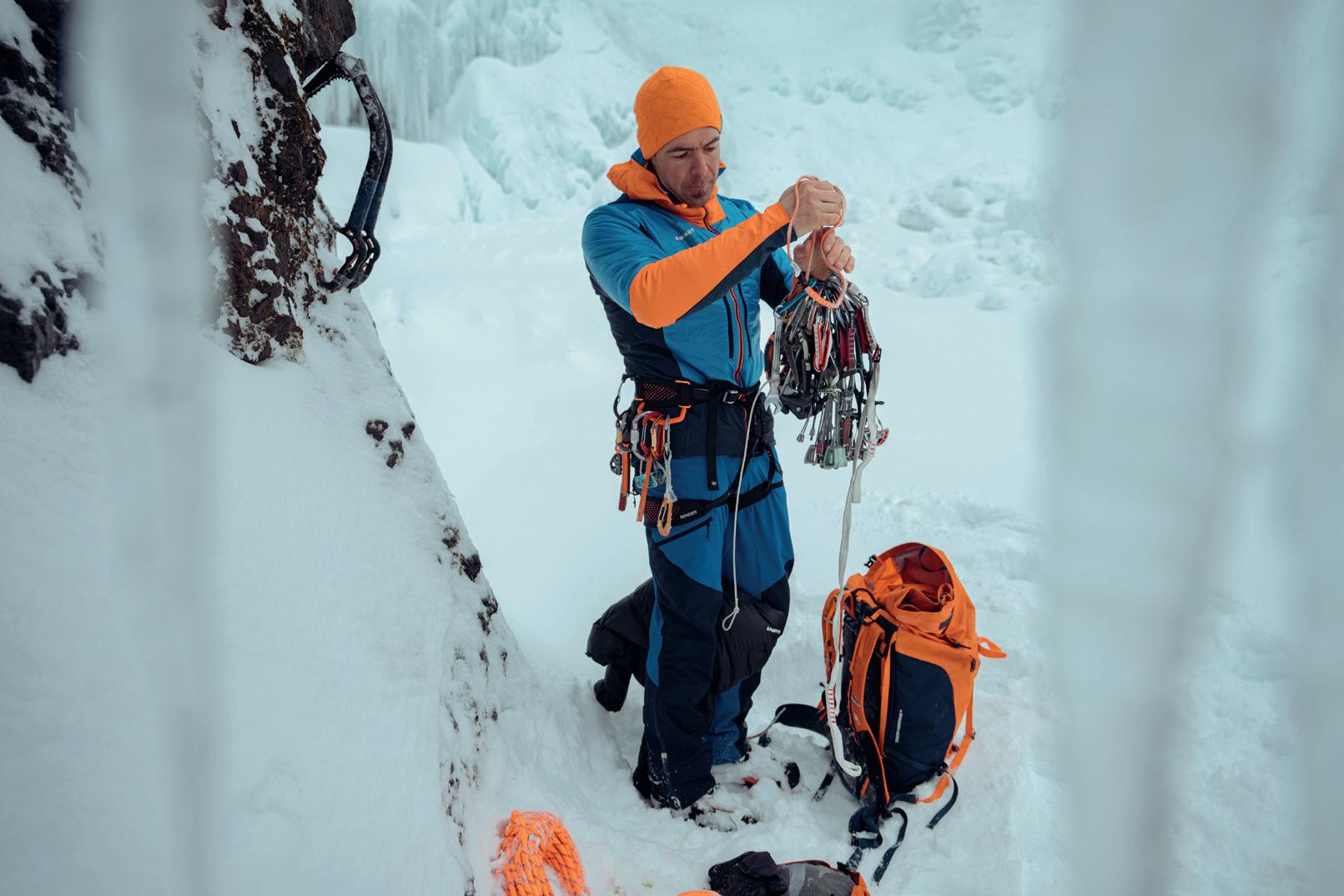
trip with friends,” says Thomas Monsorno, the photographer who shot Dani and Martin's climbs, the spectacular ice falls and the northern lights. "Dani always does this, he's superstitious: he says let's go, then if the right conditions aren't there we'll take a vacation." It's hard to believe that there aren't ideal conditions for ice climbing in Iceland, but temperatures are a crucial factor in mountaineering and the weeks identified for the expedition, the first two in February, risked already being too hot.
“To climb safely, the temperature must remain constantly below zero. There weren't many risks on this expedition, but finding the right conditions was crucial. Both Lukas and I followed Dani and Martin mainly from a distance, with a drone and telephoto lens. To scale Glymur waterfall they had to abseil from the top: they got to the bottom and then climbed up again. It was incredible: there was the waterfall and under the river, but it was so high that you couldn't see the bottom. Among ourselves we nicknamed that waterfall "hell". But the goal was not the show off on the technical difficulties, also because Dani has done much worse in his free solo career, our strength lies in storytelling and, substantially, in the fact that it is an expedition, but also of an adventure with friends. Travel, climbing and fun are the cornerstones around which we build the narrative: Dani, after so many free solo experiences, no longer risks his life, but he enjoys the beauty of the adventure and manages to produce interesting content for the public precisely because they are things that, with proper preparation, anyone could do.”
In short, an epic journey, which was made even more special by the almost constant presence of the northern lights.
“In two weeks we have seen the northern lights seven/eight times, I would say an auspicious sign since it is not so obvious to see them. Also because we never went looking for it but it always found us: it stood in front of us while we were driving, once even while we were on the road in Reykjavik. These phenomena are only seen with clear skies, and not finding clouds in Iceland is quite difficult, so we took that as a good sign.”
In short, an epic journey, which was made even more special by the almost constant presence of the northern lights. “In two weeks we have seen the northern lights seven/eight times, I would say an auspicious sign since it is not so obvious to see them. Also because we never went looking for it but it always found us: it stood in front of us while we were driving, once even while we were on the road in Reykjavik. These phenomena are only seen with clear skies, and not finding clouds in Iceland is quite difficult, so we took that as a good sign.”
152
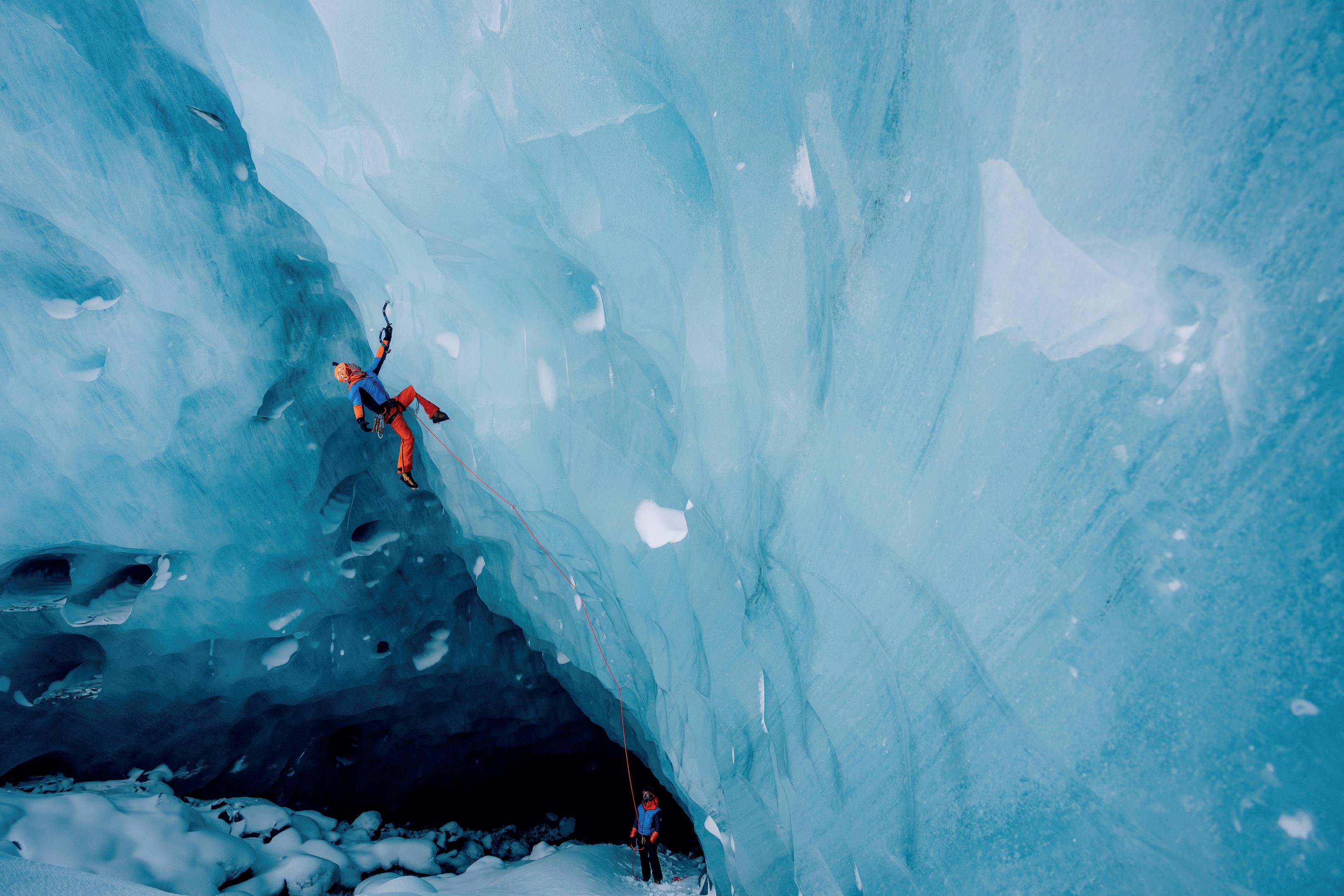


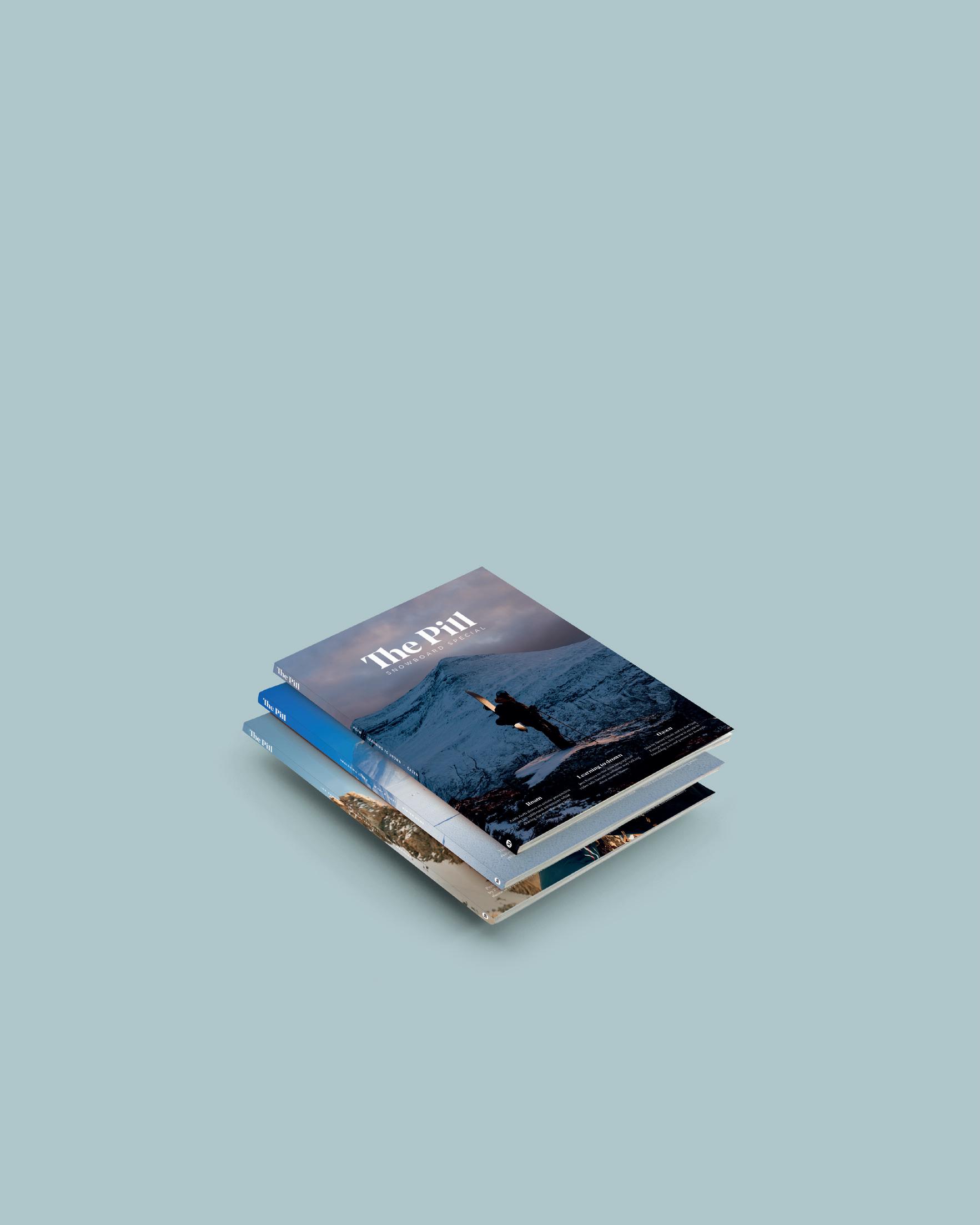

1607. LEADING RELAX HOTEL MARIA 1608. RESIDENCE LASTÈ 1609. RESORT DOLCE CASA 1610. HOTEL BELLAVISTA 1611. WINE HOTEL SAN GIACOMO 1612. HOTEL ALPECHIARA 1613. HOTEL PIANDINEVE 1614. SPORT HOTEL VITTORIA 1615. ALPIN HOTEL SONNBLICK 1616. HOTEL WALDHOF 1617. HOTEL BARRAGE 1618. HOTEL VILLA GLICINI 1619. HOTEL EUROPEO 1620. BEVERLY HOTEL 1621. DOLOMEET BOUTIQUE HOTEL 1622. HOTEL CRISTINA 1623. LEFAY RESORT&SPA DOLOMITI 1624. OLYMPIC PALACE 1625. BLU HOTEL ACQUASERIA 1626. GRAND HOTEL PARADISO 1627. HOTEL GARNI SORRISO 1628. HOTEL MIRELLA 1629. JOLLY RESORT&SPA 1630. RESIDENCE CLUB 1631. CHALET LA CIASETA 1632. FAMILY HOTEL GRAN BAITA 1633. HOTEL ANDA 1634. HOTEL TERME ANTICO BAGNO 1635. WELLNESS FASSA 1636. HOTEL CASTEL PIETRA 1637. FALKENSTEINER HOTEL 1638. HOTEL RUDOLF 1639. K1 MOUNTAIN CHALET 1640. MAJESTIC HOTEL & SPA RESORT 1641. PARKHOTEL SCHÖNBLICK 1642. ROYAL HOTEL HINTERHUBER 1643. GRAND HOTEL LIBERTY 1644. GRAND HOTEL RIVA 1645. HOTEL ANTICO BORGO 1646. HOTEL EUROPA 1647. HOTEL LIDO PALACE 1648. HOTEL LUISE 1649. HOTEL PORTICI 1650. HOTEL SOLE RELAX 1651. VILLA NICOLLI 1652. HOTEL LEON D’ORO 1653. HOTEL BELLERIVE 1654. HOTEL LAURIN 1655. HOTEL SALÒ DU PARC 1656. RIVALTA LIFE STYLE HOTEL 1657. HOTEL ORSO GRIGIO 1658. HOTEL VILLA STEFANIA 1659. NATURHOTEL LEITLHOF 1660. PARKHOTEL SOLE PARADISO 1661. POST HOTEL 1662. RESIDENCE SILVIA 1663. SPORTHOTEL TYROL 1664. ZIN SENFTER RESIDENCE 1665. HOTEL LA VETTA 1666. HOTEL LADINIA 1667. RENÈ DOLOMITES BOUTIQUE 1668. X ALP HOTEL 1669. HOTEL MONTE SELLA 1670. CHRISTOPHORUS MOUNTAIN 1671. HOTEL AL SONNENHOF 1672. HOTEL CHALET CORSO 1673. HOTEL CONDOR 1674. HOTEL MAREO DOLOMITES 1675. HOTEL TERESA 1676. RESIDENCE PLAN DE CORONES 1677. SPORTHOTEL EXCLUSIVE 1678. HOTEL BAITA FIORITA 1679. HOTEL RESIDENCE 3 SIGNORI 1680. HOTEL VEDIG 1681. CHABERTON LODGE 1682. HOTEL LA TORRE 1683. RELAIS DES ALPES 1684. AGRITURISMO MASO LARCIUNEI 1685. APARTMENTS SUNELA 1686. ARTHOTEL ANTERLEGHES 1687. ASTOR SUITES B&B 1688. BIANCANEVE FAMILY HOTEL 1689. BOUTIQUE HOTEL NIVES 1690. CHALET ELISABETH 1691. GRANBAITA DOLOMITES 1692. HOTEL AARITZ 1693. HOTEL ACADIA 1694. HOTEL ALPENROYAL 1695. HOTEL ANTARES 1696. HOTEL CHALET S 1697. HOTEL CONTINENTAL 1698. HOTEL DORFER 1699. HOTEL FANES 1700. HOTEL FREINA 1701. HOTEL GARNI DOLOMIEU 1702. HOTEL GENZIANA 1703. HOTEL MIRAVALLE 1704. HOTEL OSWALD 1705. HOTEL PORTILLO DOLOMITES 1706. HOTEL SOMONT 1707. HOTEL SUN VALLEY 1708. HOTEL TYROL 1709. HOTEL WELPONER 1710. LUXURY CHALET PLAZOLA 1711. MOUNTAIN DESIGN HOTEL 1712. MOUNTAIN HOME VILLA ANNA 1713. RESIDENCE ISABELL 1714. RESIDENCE VILLA FUNTANES 1715. RESIDENCE VILLA GRAN BAITA 1716. THE LAURIN SMALL&CHARMING 1717. WELLNESS RESIDENCE VILLA 1718. RESIDENCE VILLA AL SOLE 1719. HOTEL TRE CIME SESTO 1720. ALPENWELLNESSHOTEL ST.VEIT 1721. APARTMENTS RIEGA 1722. BERGHOTEL SEXTEN 1723. CIMA DODICI B&B 1724. FAMILY RESORT RAINER 1725. HOTEL ALPENBLICK 1726. HOTEL DOLOMITENHOF 1727. HOTEL MONIKA 1728. HOTEL MONTE CROCE 1729. BAD MOOS 1730. GRAND HOTEL SESTRIERE 1731. HOTEL CRISTALLO 1732. HOTEL IL FRAITEVINO 1733. HOTEL SHACKLETON MOUNTAIN 1734. PRINCIPI DI PIEMONTE 1735. ACTIVEHOTEL DIANA 1736. ARTNATUR DOLOMITES HOTEL 1737. HOTEL WALDRAST DOLOMITI 1738. MIRABELL ALPINE GARDEN 1739. NATUR RESIDENCE 1740. SCHWARZER ADLER 1741. SENSORIA DOLOMITES 1742. DOLMITES NATURE 1743. BAD RATZES 1744. HOTEL CEVEDALE 1745. PARADIES MOUNTAIN RESORT 1746. GRAND HOTEL DELLA POSTA 1747. GRAND HOTEL BRISTOL 1748. GRAND HOTEL DES ILES 1749. HOTEL ASTORIA 1750. HOTEL LA PALMA 1751. HOTEL MILAN SPERANZA 1752. HOTEL REGINA PALACE 1753. HOTEL EDELHOF 1754. HOTEL IL CERVO 1755. CURT DI CLEMENT ECO 1756. HOTEL CENTRALE 1757. HOTEL DOSSES 1758. ALPINHOTEL VAJOLET 1759. GRAND HOTEL TREMEZZO 1760. HOTEL LENNO 1761. ALBERGO ACCADEMIA 1762. BOUTIQUE EXCLUSIVE B&B 1763. GRAND HOTEL TRENTO 1764. HOTEL AMERICA 1765. HOTEL BUONCONSIGLIO 1766. BÄRENHOTEL 1767. BERGHOTEL HOTEL 1768. HOTEL CHRISTOPH 1769. KRONPLATZ-RESORT 1770. HOTEL DU LAC 1771. HOTEL ROYAL VICTORIA 1772. HOTEL VILLA CIPRESSI 1773. GRAND HOTEL MAJESTIC 1774. HOTEL ANCORA 1775. HOTEL BELVEDERE 1776. HOTEL PALLANZA 1777. GRAND HOTEL MIRAMONTI 1778. HOTEL DELLE ALPI 1779. HOTEL RESTAURANT LILIE 1780. WELLNESS PARADISE MOENA MOENA MOENA MONTEBELLUNA ITA ITA ITA ITA
I can’t help it. I like words. I like to write them, I like to read them. I like pronouncing them, hearing their sound, tasting them in my mouth, chewing them. I like to listen to them, feel them, make them mine. I like to know their origin, the reason why they were born. The need for which they were created. I like their meaning, but I also like to change it. For some time now there has been one word that I particularly like: it is the word “ac-
BY DAVIDE FIORASO PHOTO THEO ACWORTH
cadere” (to make it happen), an intransitive verb that derives from the Latin privative "a" and the verb “cadere" (to fall). Fall in one direction. As if to make something happen, to make it happen, you have to stumble, lose your balance, put yourself in danger. So today, if we really want to make something happen, if we really want it, we have only one option: to take a risk. Falling, perhaps, is the only way to "make it happen".
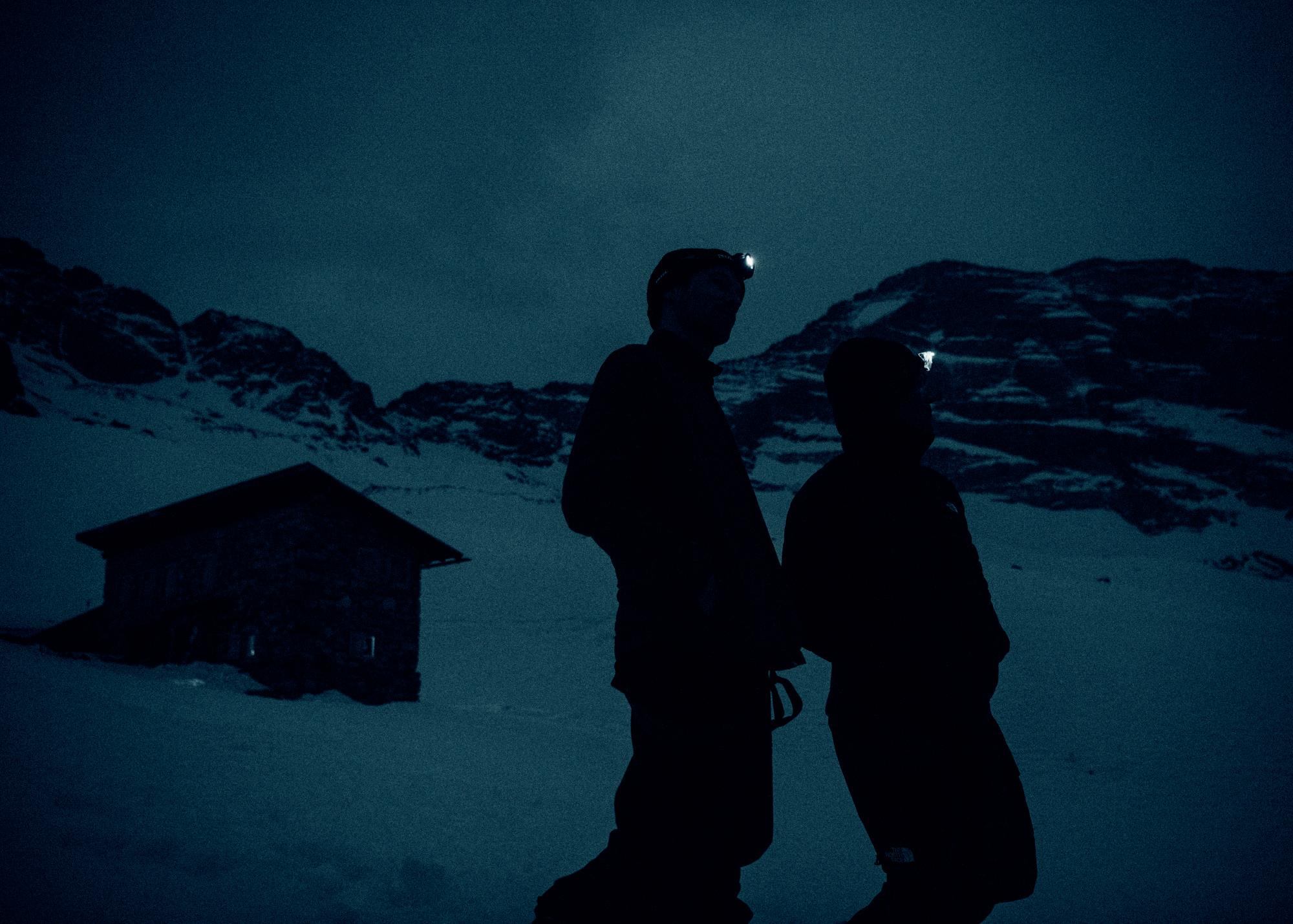
160
LAST WORD

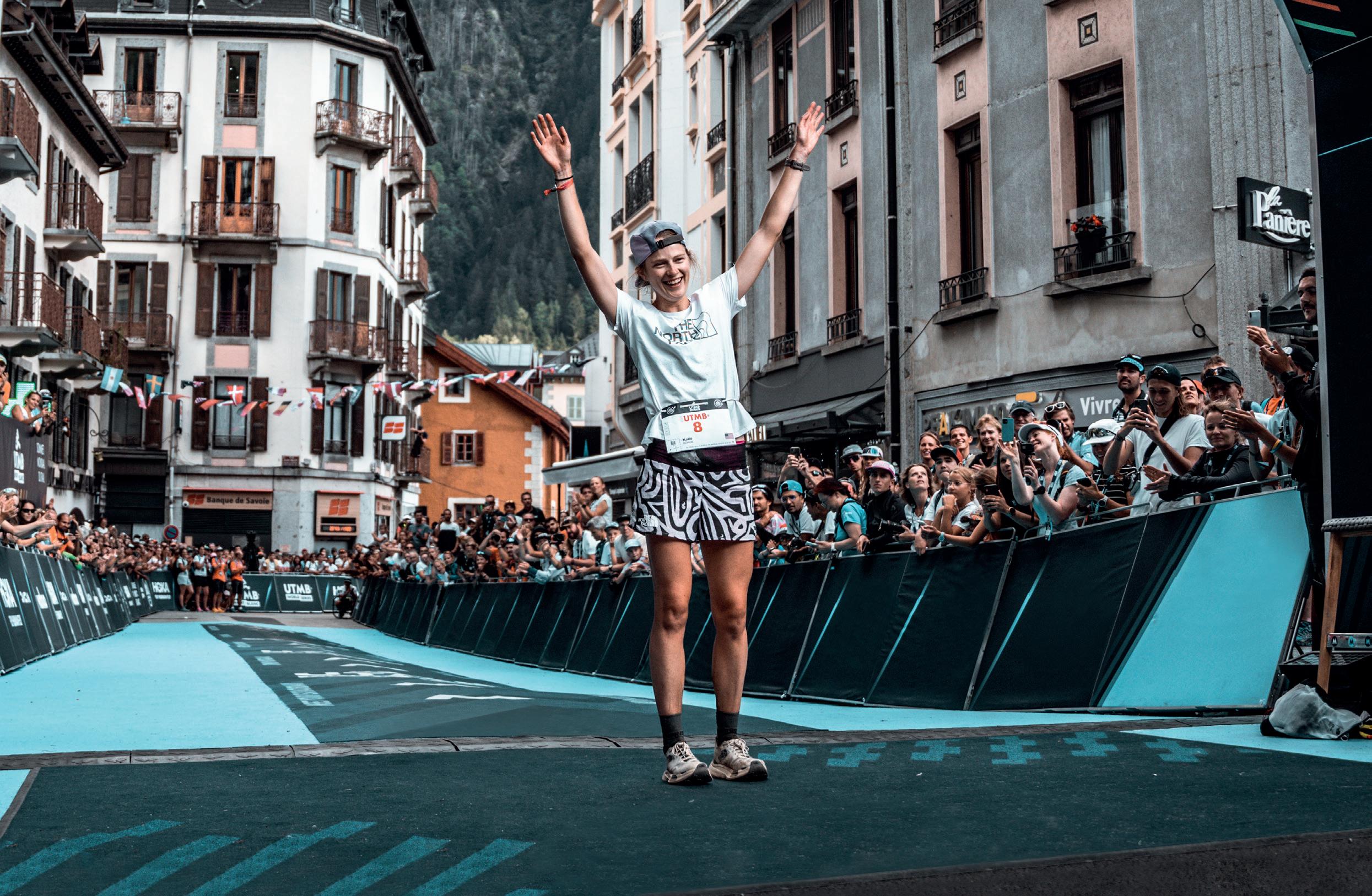
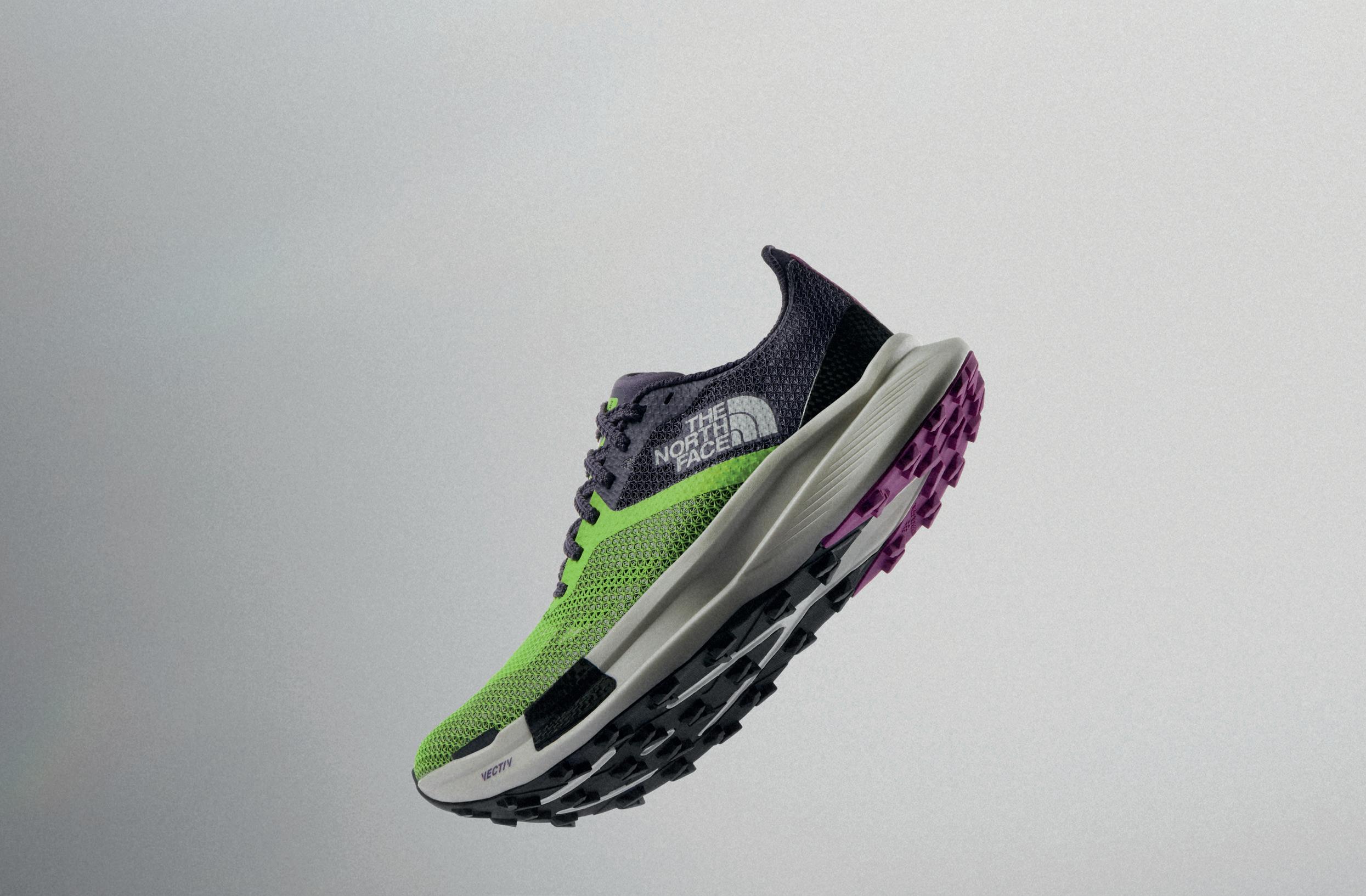


 BY DAVIDE FIORASO PHOTO ANDERS MØLLER VESTERGÅRD
BY DAVIDE FIORASO PHOTO ANDERS MØLLER VESTERGÅRD













































 ai crinali possono presentarsi accumuli di neve ventata.
ai crinali possono presentarsi accumuli di neve ventata.





























 BY DAVIDE FIORASO
BY DAVIDE FIORASO














 BY LISA MISCONEL
BY LISA MISCONEL






 BY LISA MISCONEL
BY LISA MISCONEL

 BY MARTA MANZONI TO TIZIANO GIORDANO E SANDRO PARISOTTO
BY MARTA MANZONI TO TIZIANO GIORDANO E SANDRO PARISOTTO

 BY MARTA MANZONI TO TIZIANO GIORDANO E SANDRO PARISOTTO
BY MARTA MANZONI TO TIZIANO GIORDANO E SANDRO PARISOTTO





































 BY LUDOVICA SACCO
BY LUDOVICA SACCO





















 BY FILIPPO CAON
MATHIS DUMAS
PHOTOS
BY FILIPPO CAON
MATHIS DUMAS
PHOTOS











 BY ILARIA CHIAVACCI PHOTOS ANDRÉS MOLESTINA & ANNA NICOLE ARTEAGA
BY ILARIA CHIAVACCI PHOTOS ANDRÉS MOLESTINA & ANNA NICOLE ARTEAGA






















































